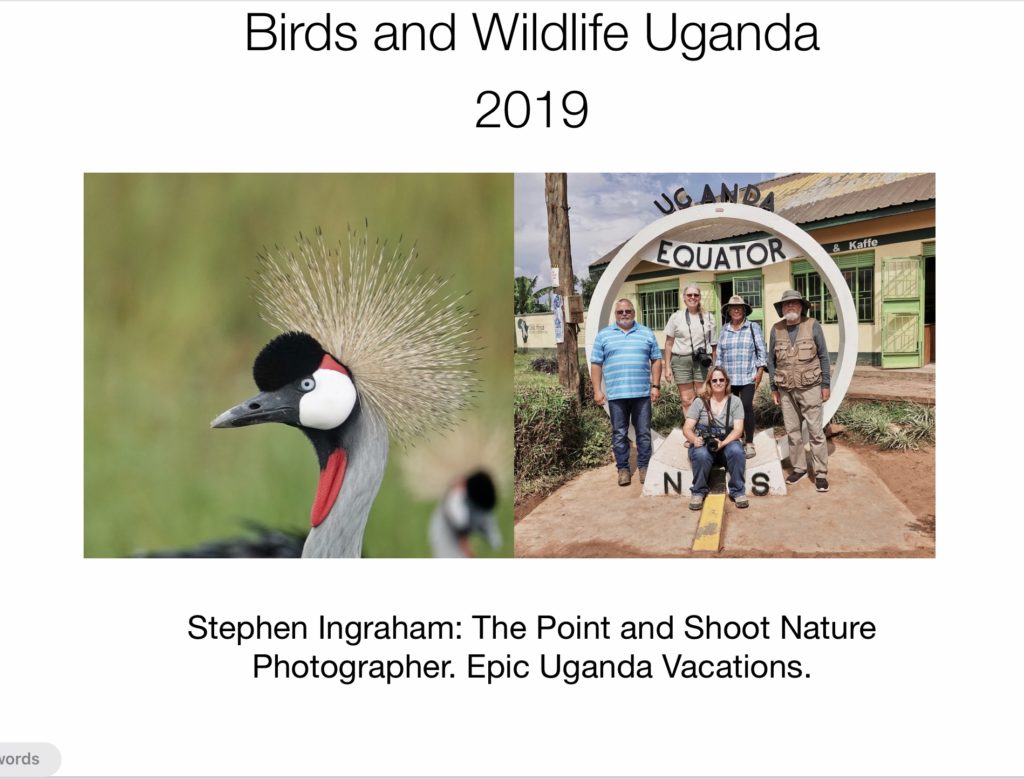
Enjoy this free eBook of the Point and Shoot Nature Photography Birds and Wildlife Adventure in Uganda in September or 2019, with Epic Uganda Vacations.

Enjoy this free eBook of the Point and Shoot Nature Photography Birds and Wildlife Adventure in Uganda in September or 2019, with Epic Uganda Vacations.
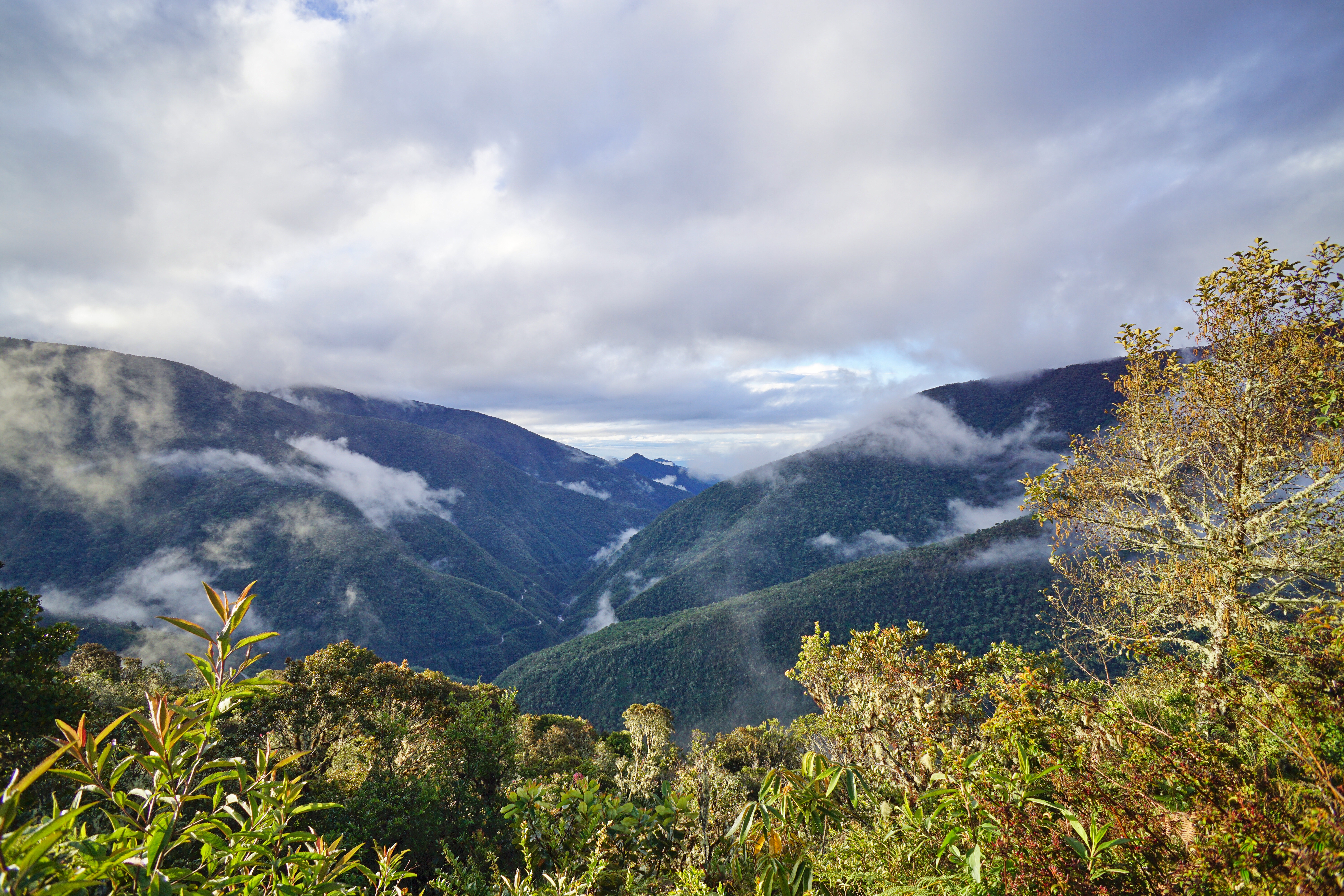
Amazon Journeys invited me to join them for a 7 day “Birding the Manu Road“ adventure on the eastern slopes of the Andes in Peru. The Manu Road is famous among birders worldwide. It runs along the edge of the largest National Park in Peru, Manu National Park, starting at a high pass, over 11,000 feet, in the Puna (dry highland grass and shrub land) and descending through a series of elfin forest slopes and cloud forest valleys to the lowland foothill rain forest along the Manu river…some 50 miles and 10,000 feet lower. It is rough. It can be muddy. It often has spectacular wash outs with raw landslides, sheer drops, and rudimentary repairs. There are two tight blind tunnels, hacked around corners through outcroppings. There are waterfalls, big and little. There are deep cloud filled valleys where you can just barely hear the rushing stream at the bottom. There are vistas where you can watch the clouds come up out of the lowlands and climb toward the high passes above. There are orchids and wildflowers of all kinds and bromeliads and the kind of butterflies that will enliven your dreams. And there are birds. Astounding, wonderful, birds. Birds you will not see many other places. Many birds you that are only easily seen along the Manu Road.

You begin your journey in Cusco, one of the highest and one of the oldest cities in the Americas. (I recommend coming in a day early to get at least a little used to the altitude…11,500 feet can be a stain on anyone’s system.) Your real adventure beings when you leave Cusco to drive across the high dry slopes of the western Andes. You wind up and down and around over passes and across slopes, never getting much lower than 10,000 feet. Of course you stop along the way for birding. My guide, Pepe Rojas, took us first to Lake Haurcapy, a marshy high elevation lake (close to 10,000 feet).
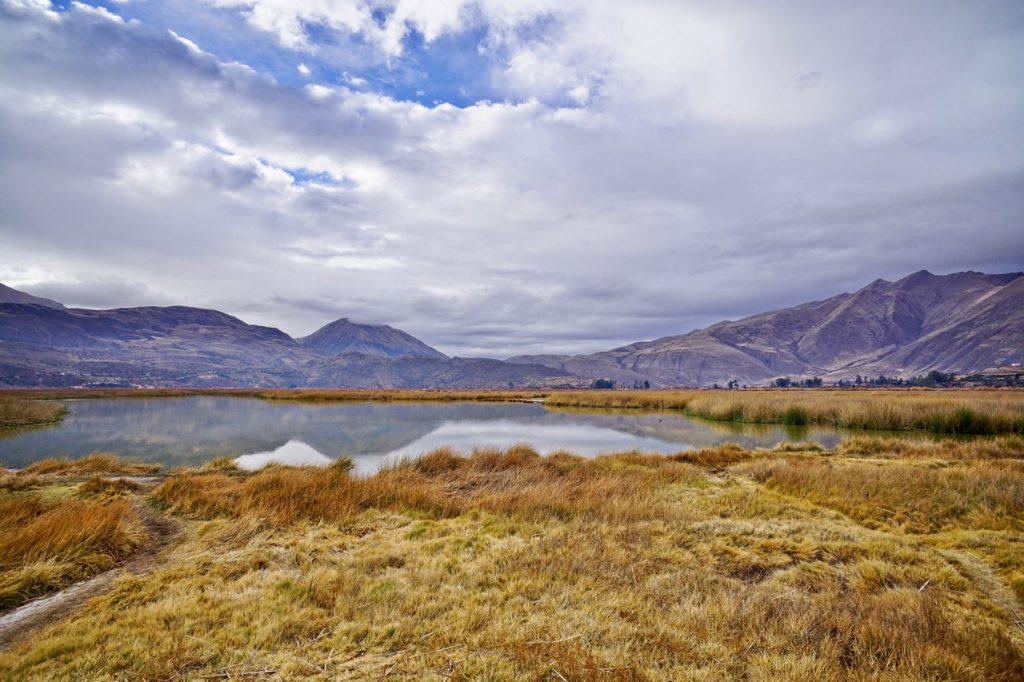
There we picked up our first typical Andean birds. Yellow-winged Blackbirds in the reeds around the lake, Puna Teal on the water, Hooded Siskin, Bare-faced Ground Dove, and Chequanco Thrush along the brushy margins.
A couple of stops along the road yielded our next set of Peruvian endemics, typical, again of the dry western slopes of the Andes. The Bearded Mountaineer (endemic) is big by hummingbird standards, and Pepe spotted several as we drove along. At those stops we picked up Chestnut-breasted Mountain-Finch (another endemic), Creamy-crested Spinetail (a third endemic), Great Thrush, Band-tailed Seed-eater, and Peruvian Sierra Finch (not an endemic despite the name).
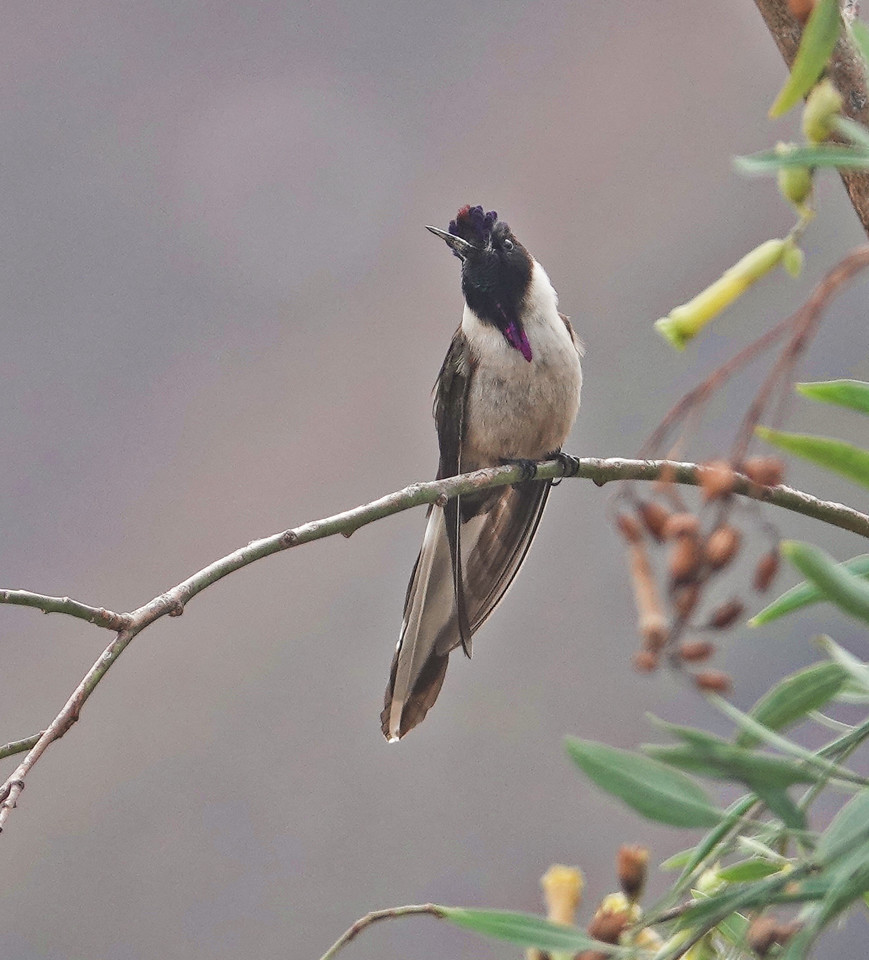


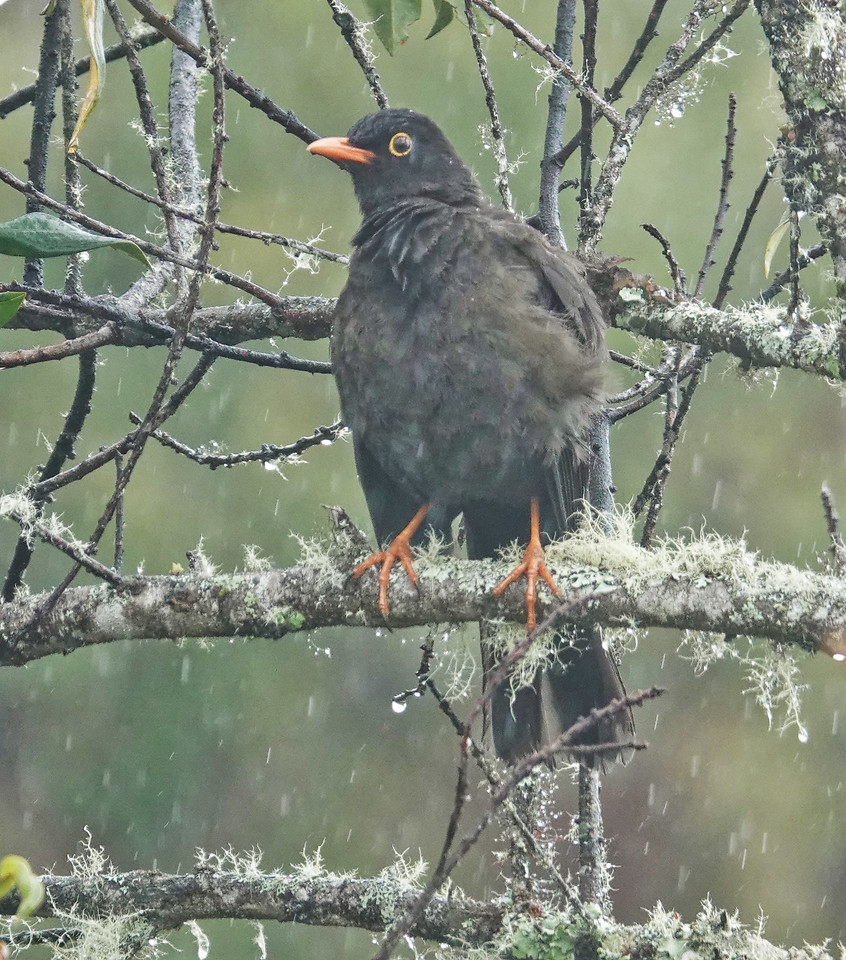
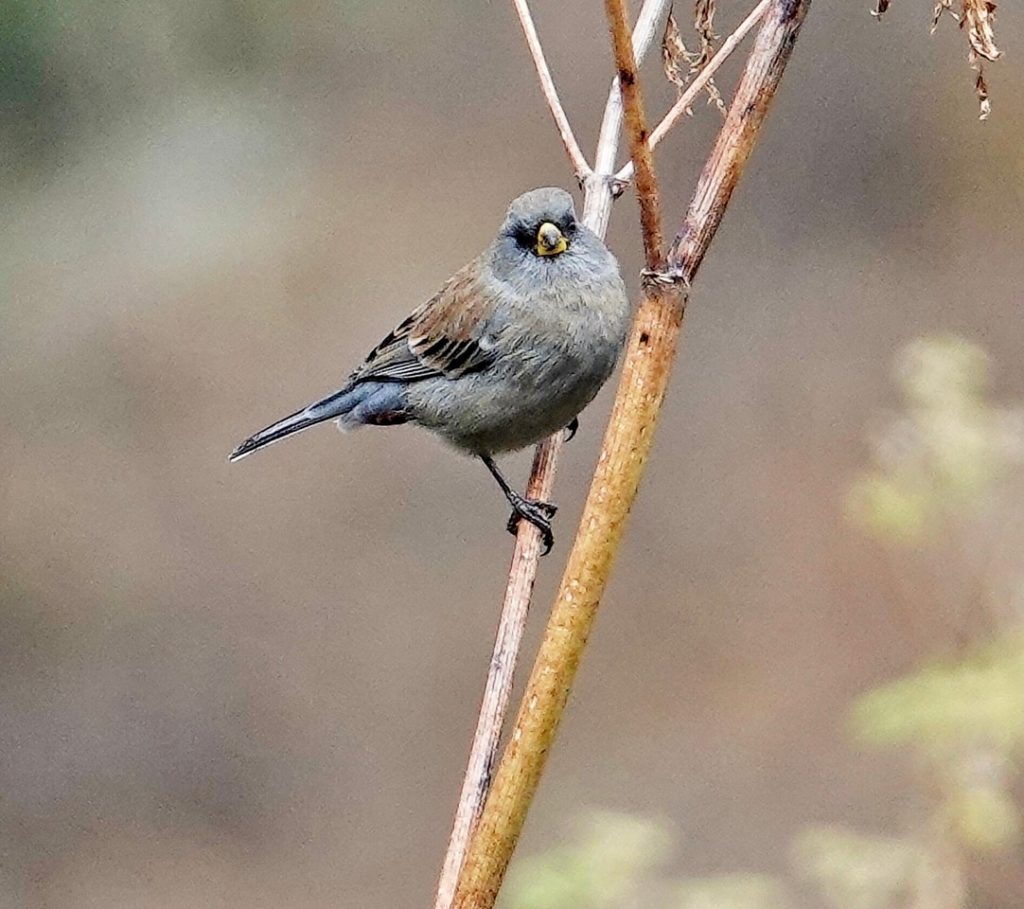
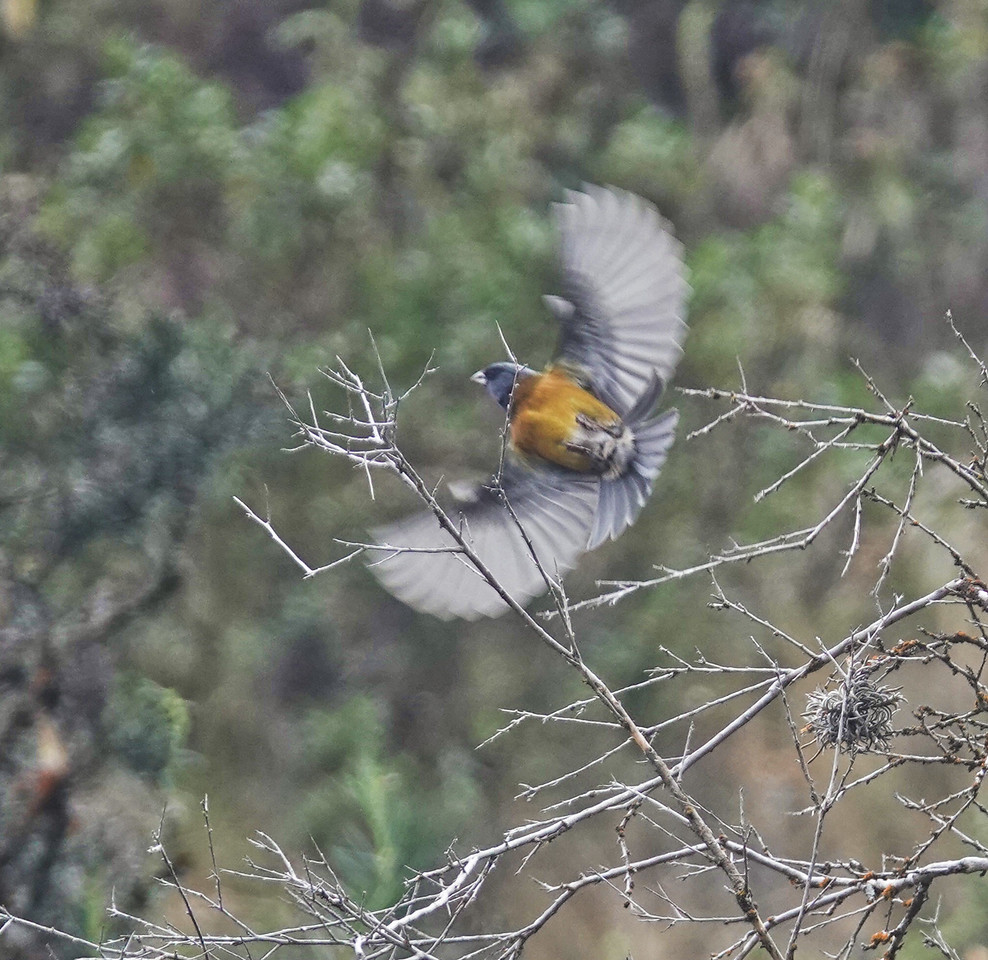
It was late afternoon before we crested the pass at the top of Manu National Park and found our way down slope to Wayqecha Biological Station and Birding Lodge, at about 9500 feet, just at the transition between elfin forest and cloud forest. Wayqecha is owned and operated by the Amazon Conservation Association and provides housing for research teams and for visiting birders. They maintain a growing network of trails, a canopy bridge, and research towers where huge curtains simulate the effects of climate change. The cabins, grounds, and facilities are first rate, and Wayqecha makes an ideal base for birding the upper reaches of the Manu Road. In addition they have well developed feeding stations that attract both common feeder birds and some more difficult to see species.
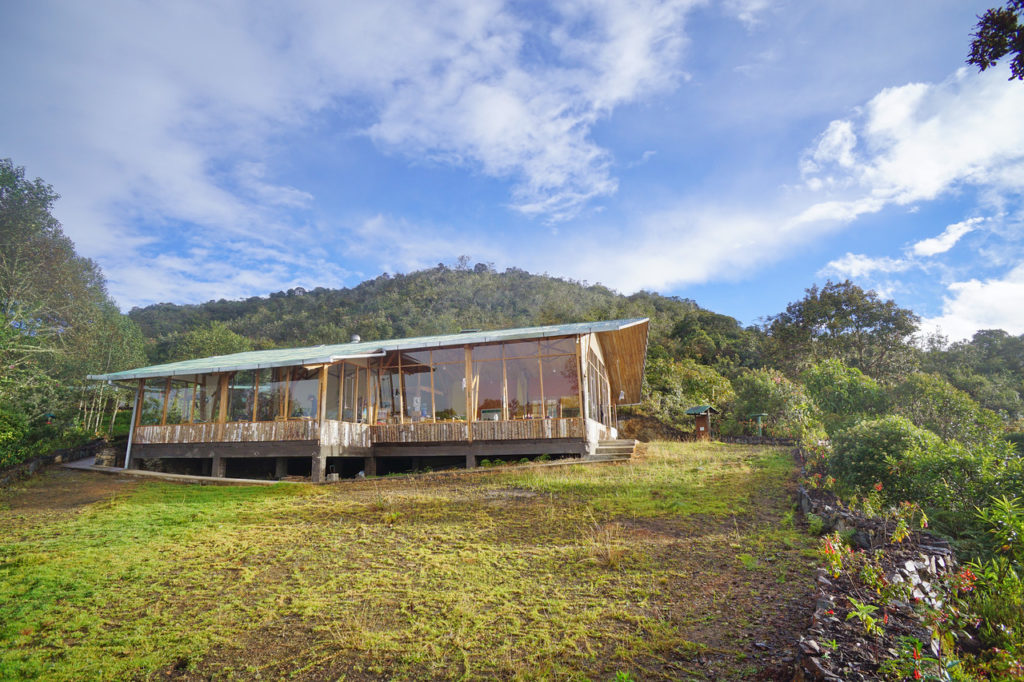
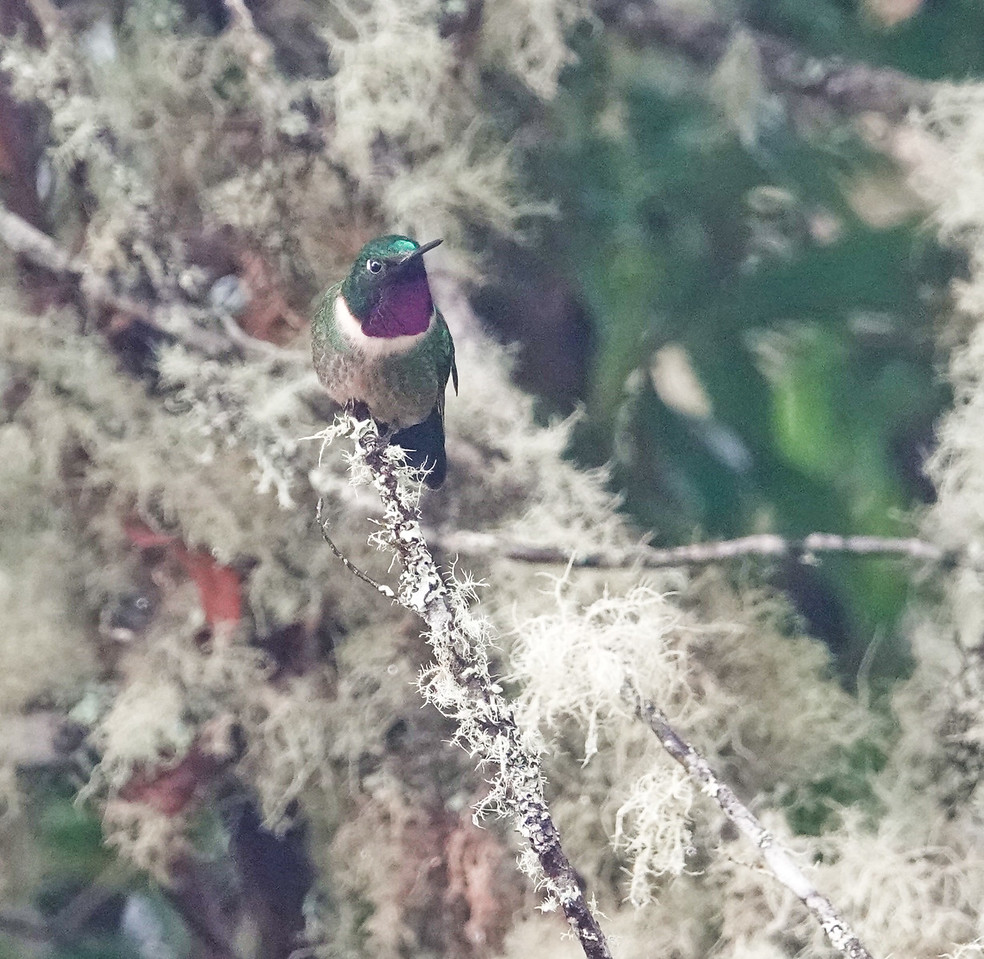
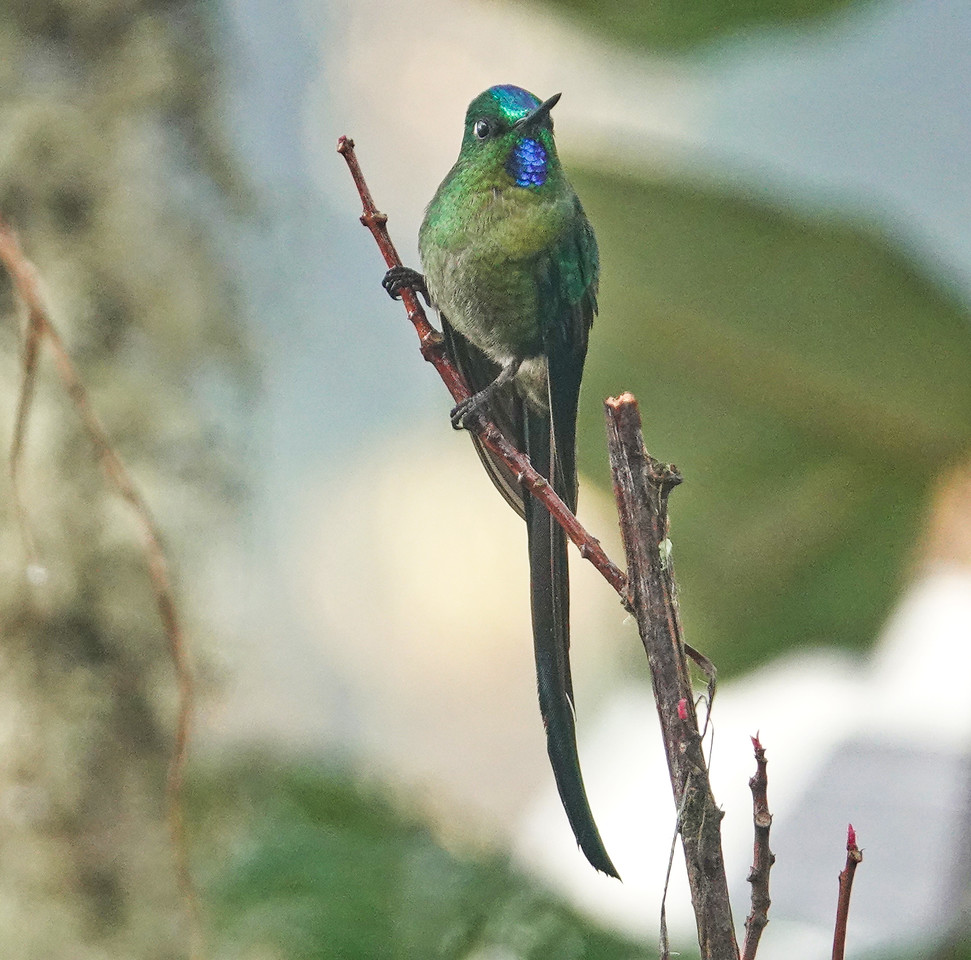
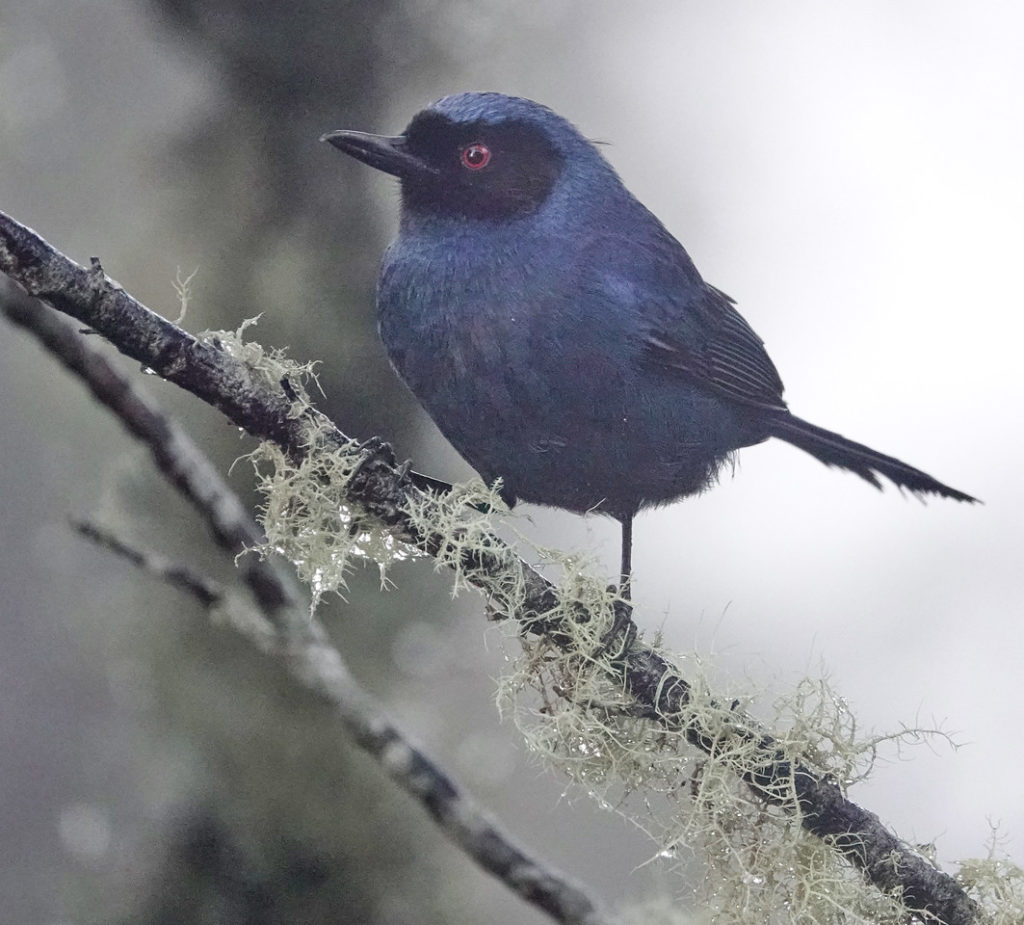
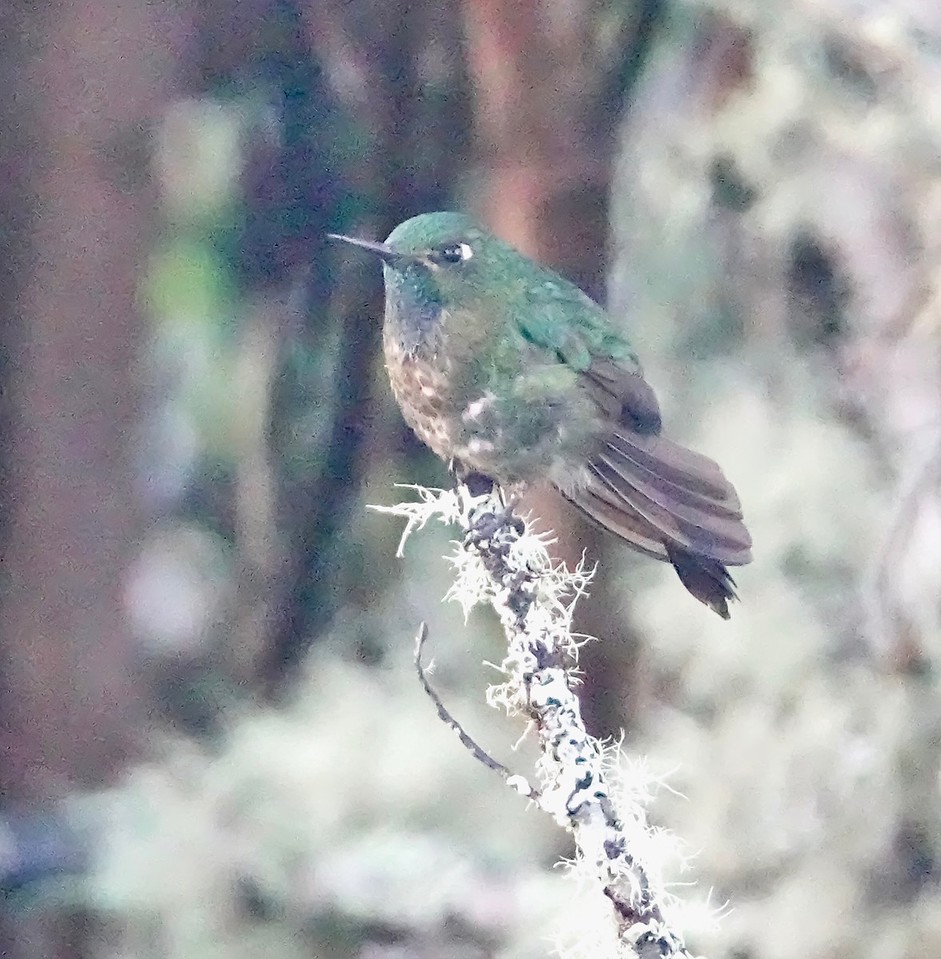

We spent most daylight hours on the Manu Road itself, so my time at the feeders was in less than ideal light, just before and after breakfast and dinner, and there were often wisps of cloud crossing the grounds, but the Metaltail and the Gould’s Inca are particularly good birds to see…and I was, of course, delighted with my first (and only for the trip) looks at Long-tailed Sylph. Sword-billed Hummingbird also comes to the feeders at Wayqecha but not while I was there.
On our first full day on the Manu Road we drove back up the the Canopy Bridge trail for a short hike in to see the bridge.
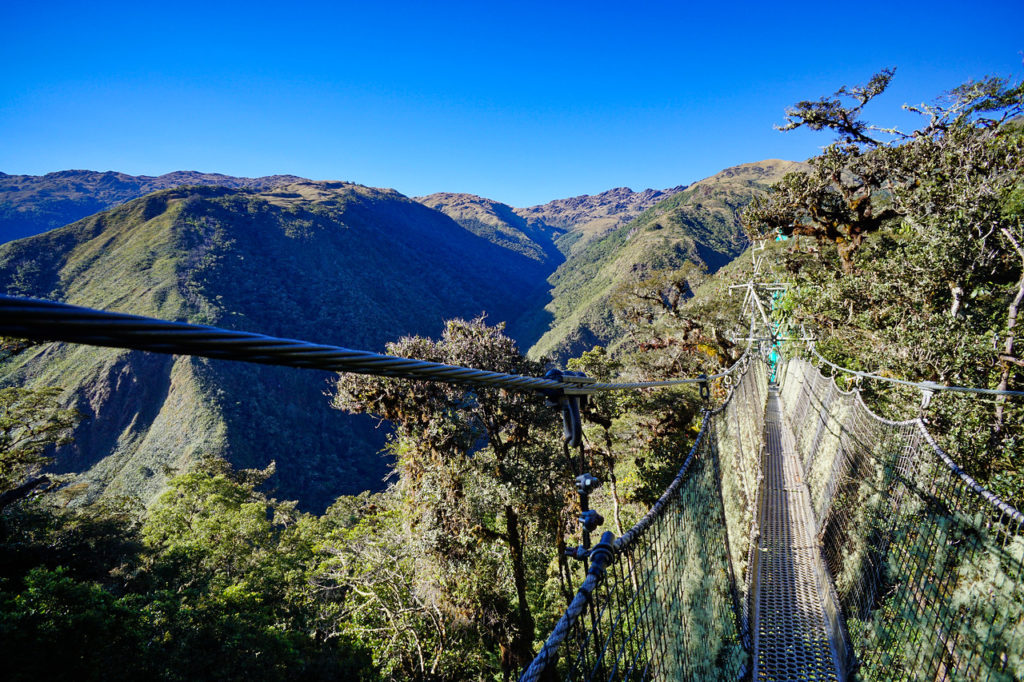
The primary purpose of the bridge is to provide access to the research towers, where, as I mentioned, they are conducting climate change research using huge curtains suspended from the towers to artificially alter the climate beneath.

We then walked back down to the lodge. I suppose some people do walk up the Manu Road, but at my age, and at 10,000 feet, I was thankful to be walking down, and most days for the remainder of the trip, that is what we did. We would drive to likely spot along road, and then walk, sometimes miles, seeing what we could see. Sometimes, especially in the afternoon, we would spend time in the van, slowly driving down, stoping mostly for mixed flocks seen crossing the road or along side, and getting out and walking sections that have proved particularly birdy in the past. This is old fashioned road birding. Walk and ride, ride and walk. What you see is totally dependent on what happens to be near the road as you pass. If most of your tropical birding has been done in Central America or even in other parts of South America, where the birds tend be concentrated at maintained feeding stations or in particularly bird-rich areas, this is different, and a bit harder work. But it is worth it. The magic of the Manu Road is that you do see an amazing number and variety of birds. You might walk half a mile without seeing anything…but then the next half-mile might be full of the most spectacular and interesting birds. And the birds you see are difficult to impossible to see elsewhere. The upper Manu Road gives you easy access to some of the richest cloud forest in the world.
That first morning on the Manu Road gave us a good taste of what the following days would be like. We had our first sightings of the Crimson-breasted Mountain Tanager, many highland wildflowers, and vistas that only the Andean Cloud Forest can provide.


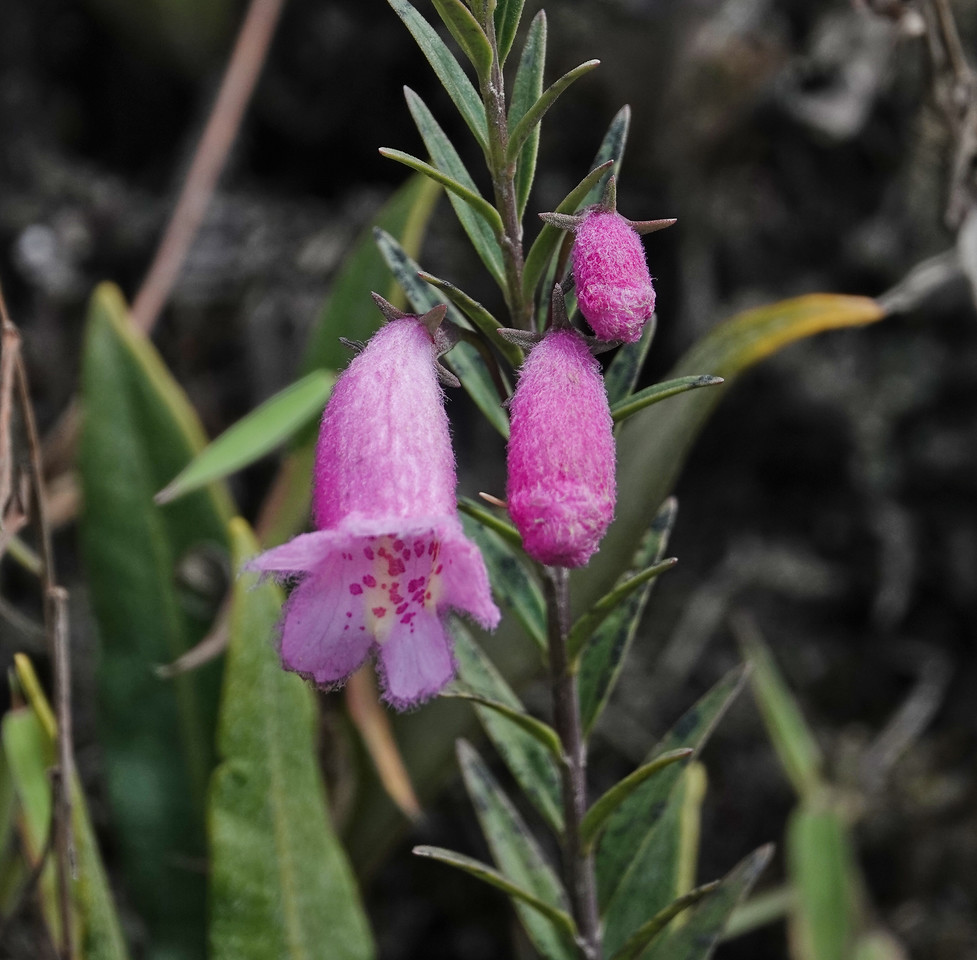
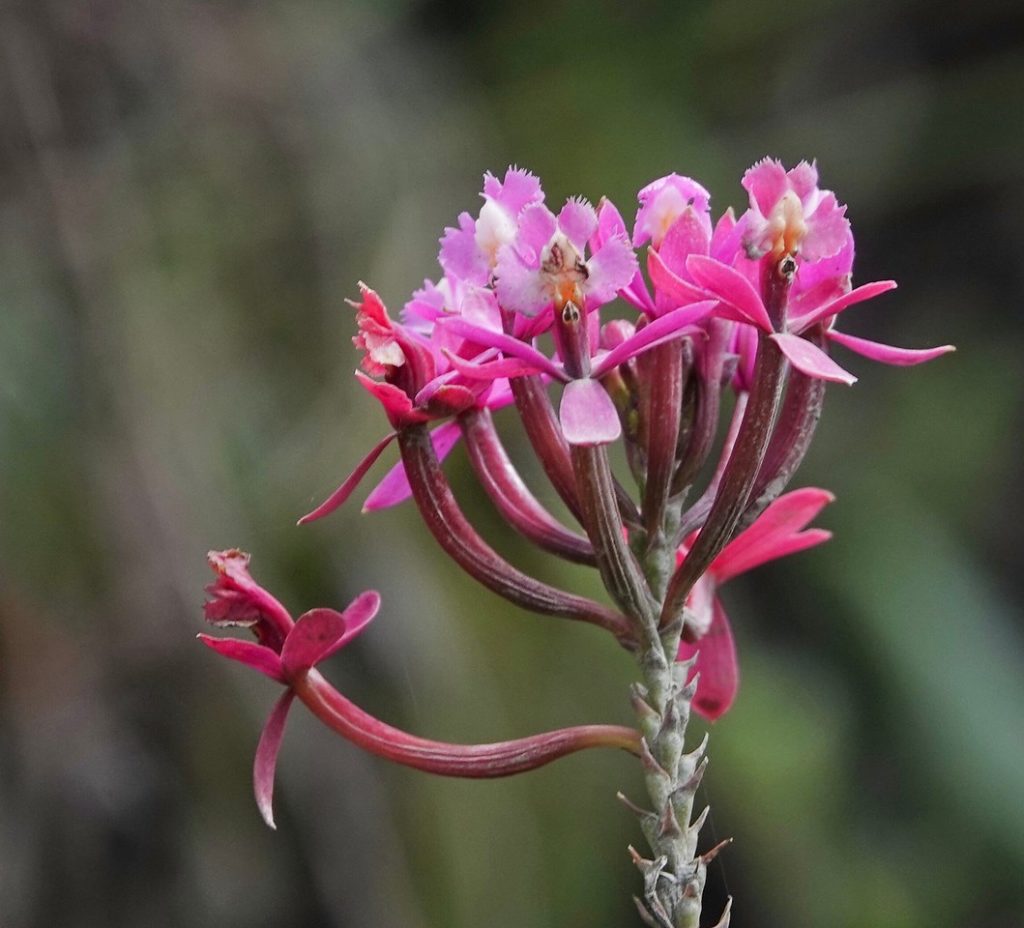
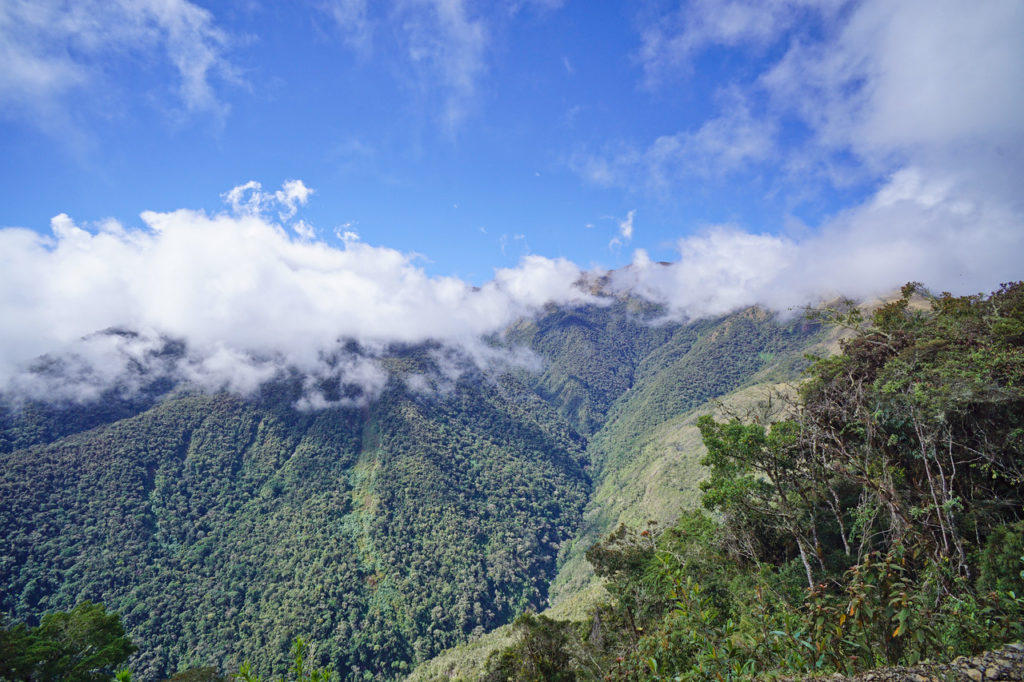
Here is a selection of birds, wildflowers and views from our afternoon walk, below Wayqecha.
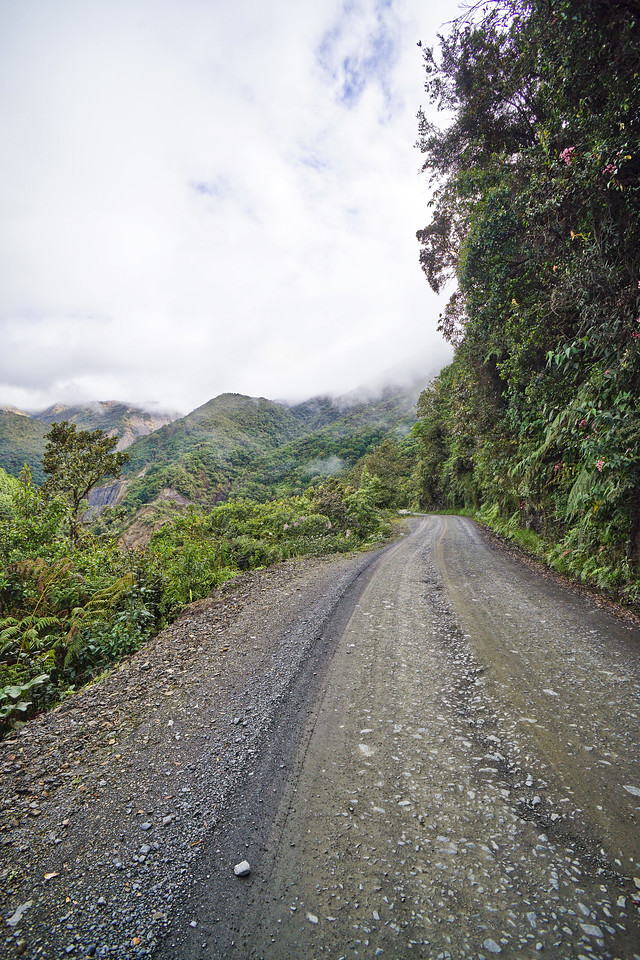
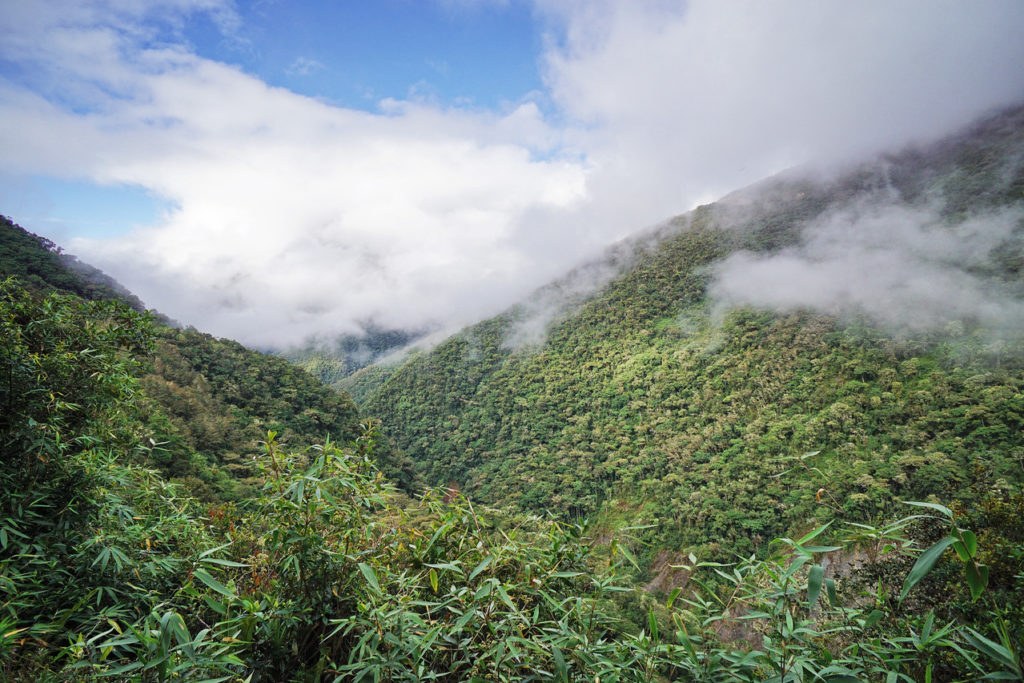

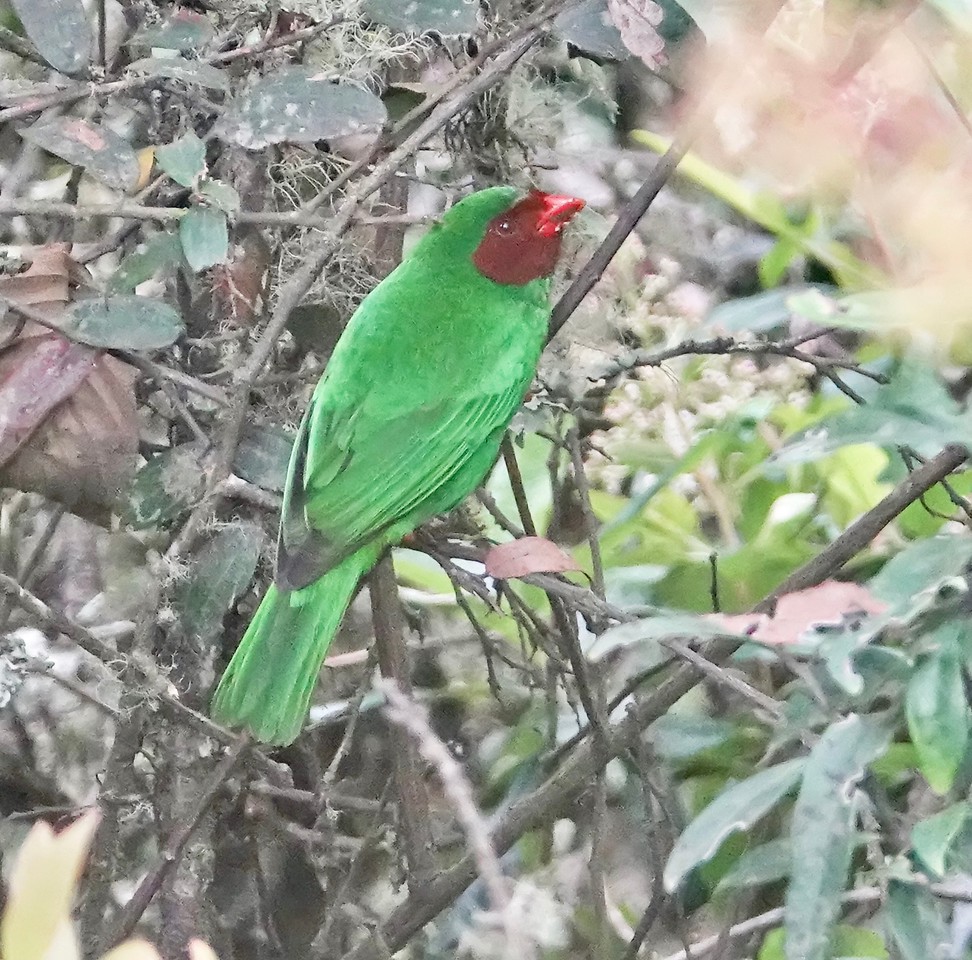

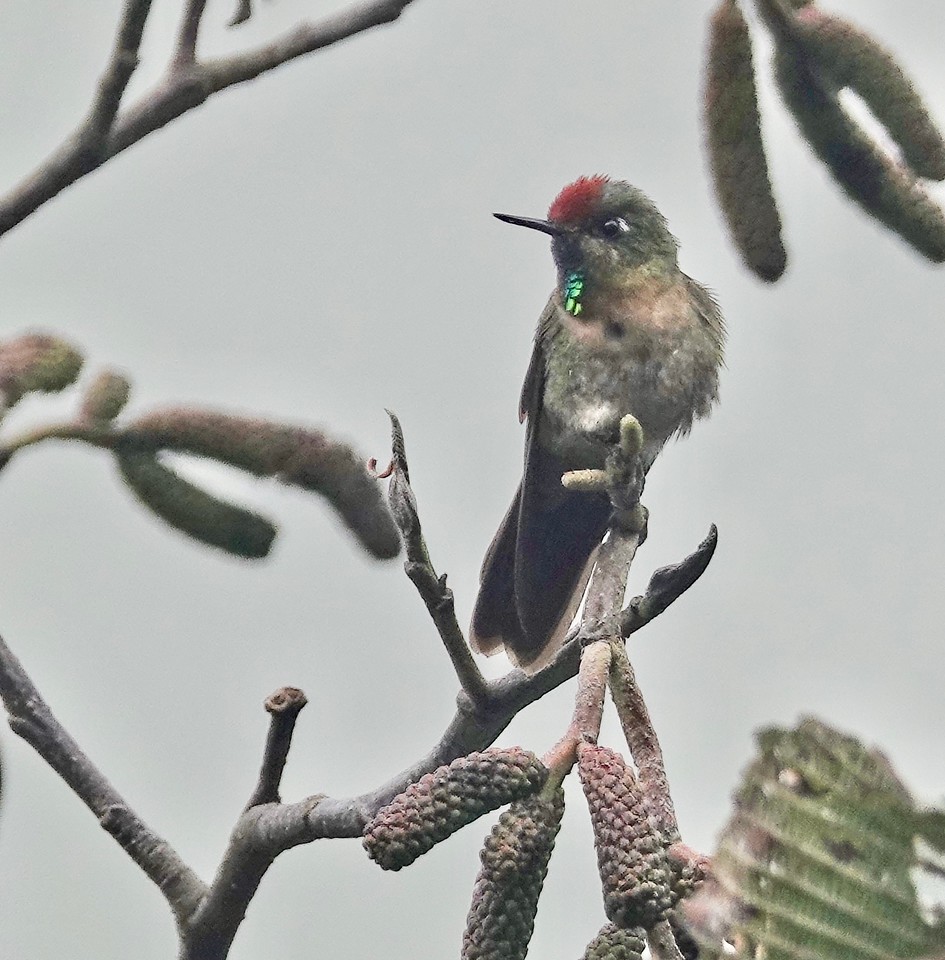
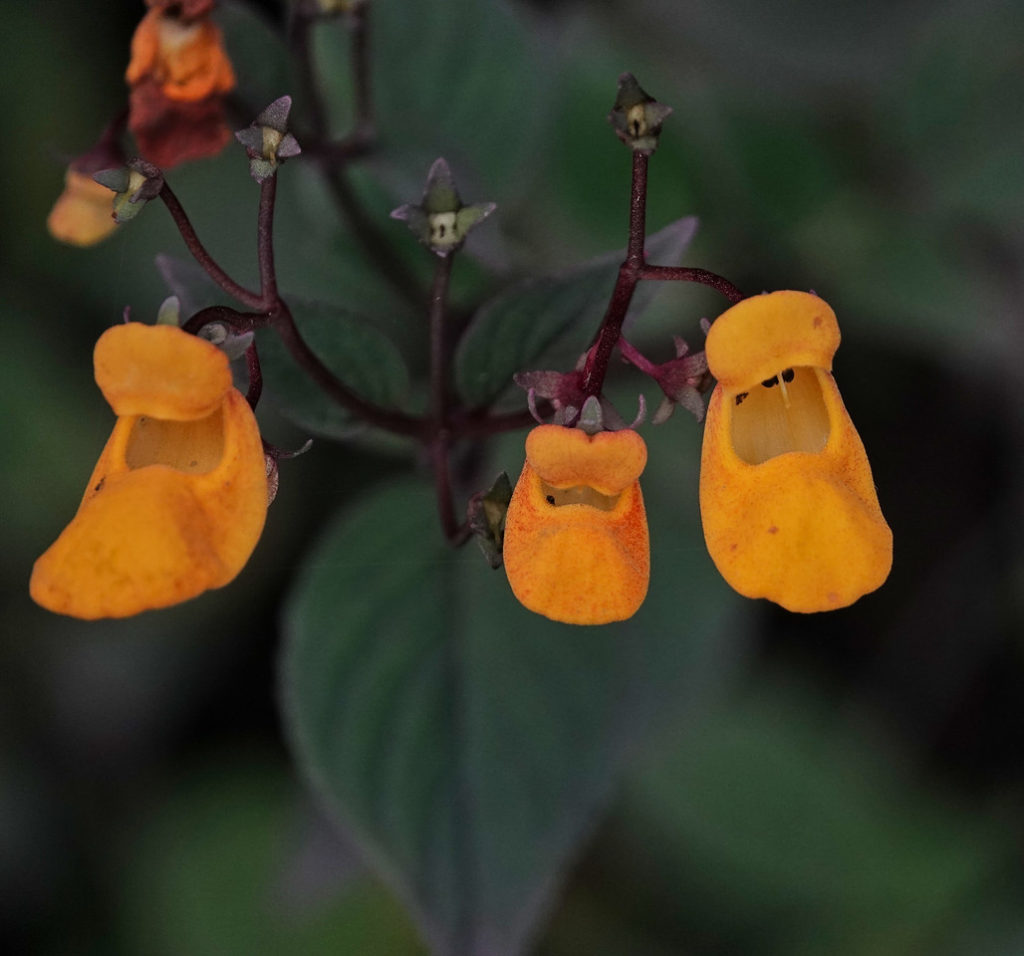
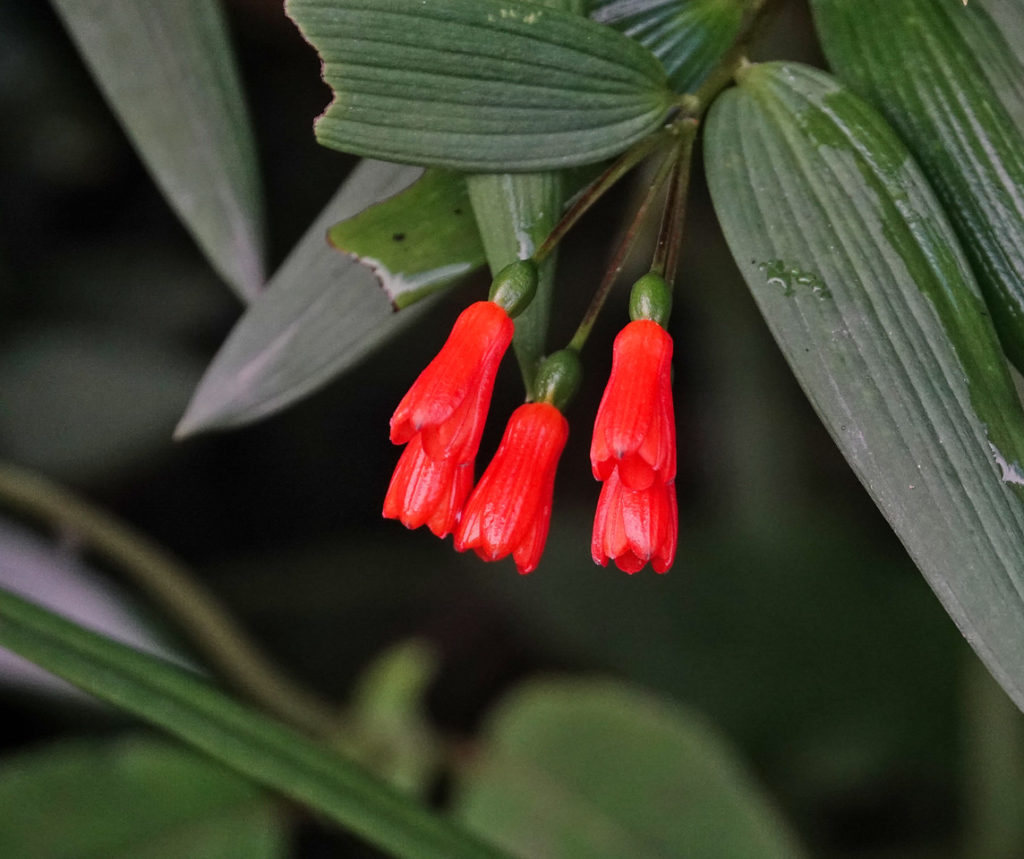

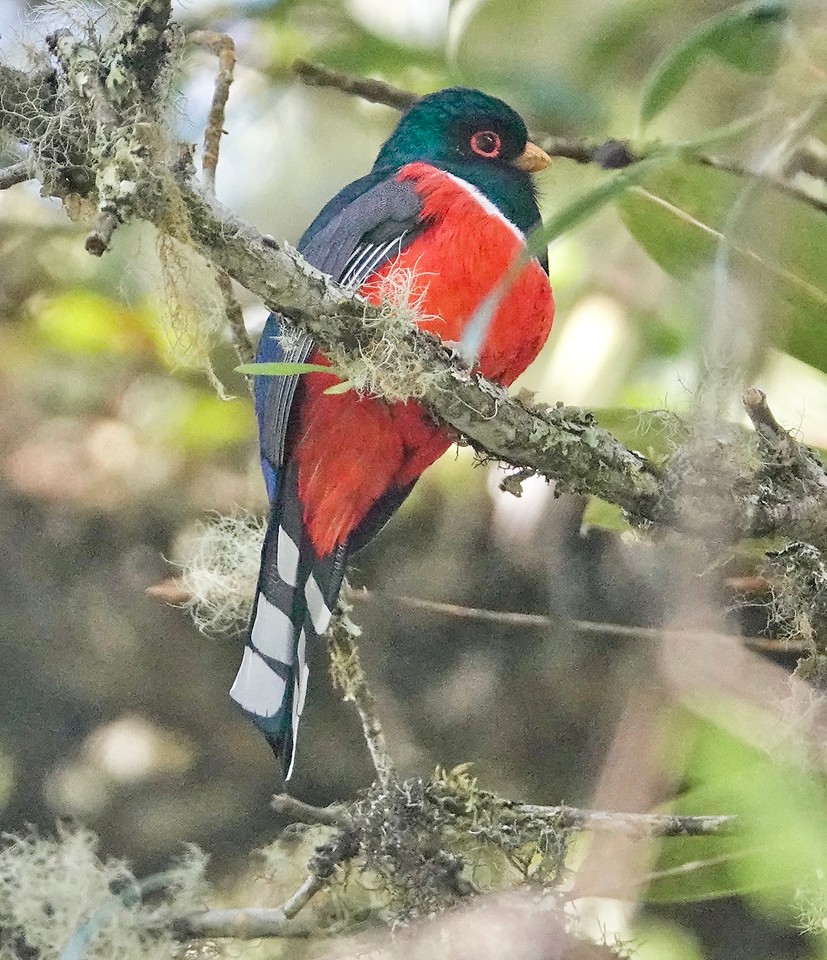
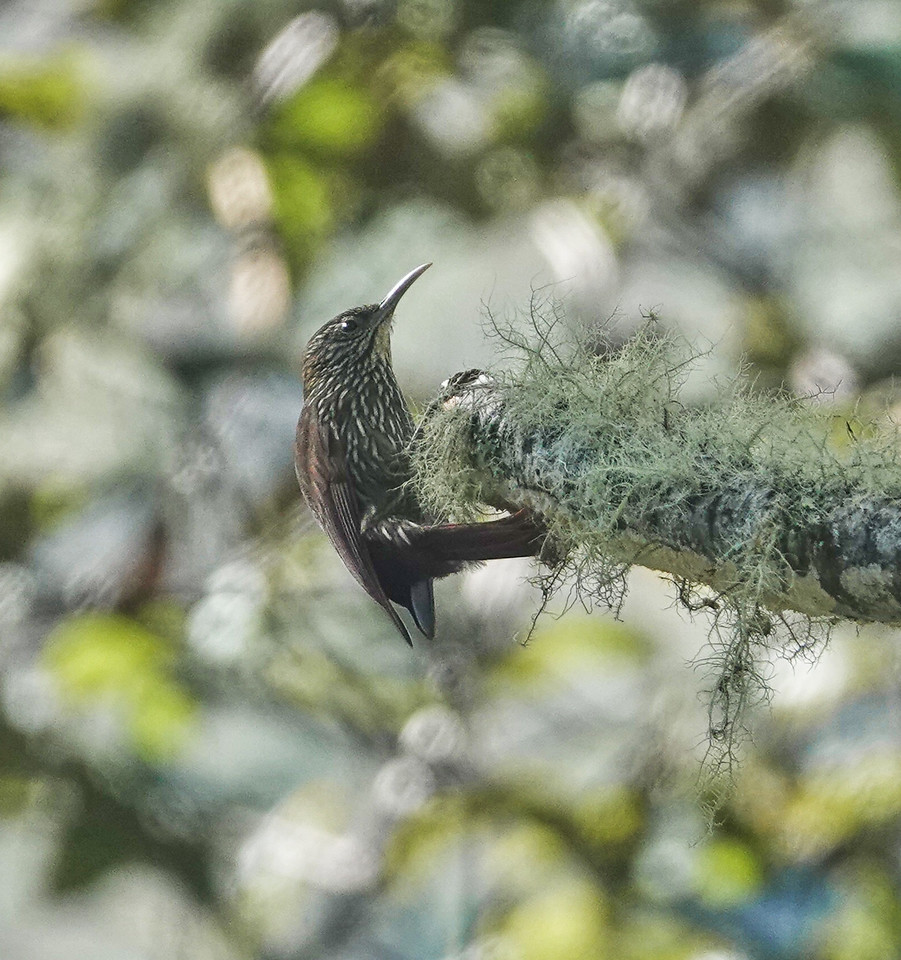
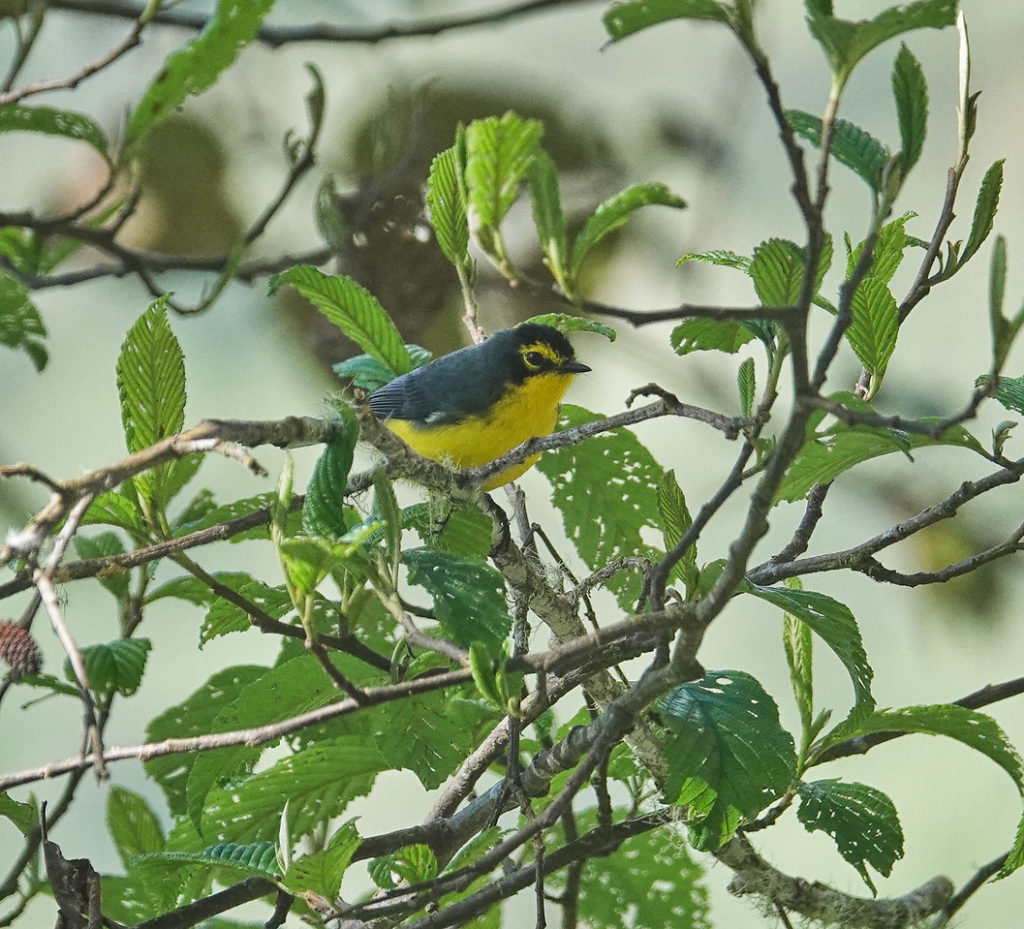
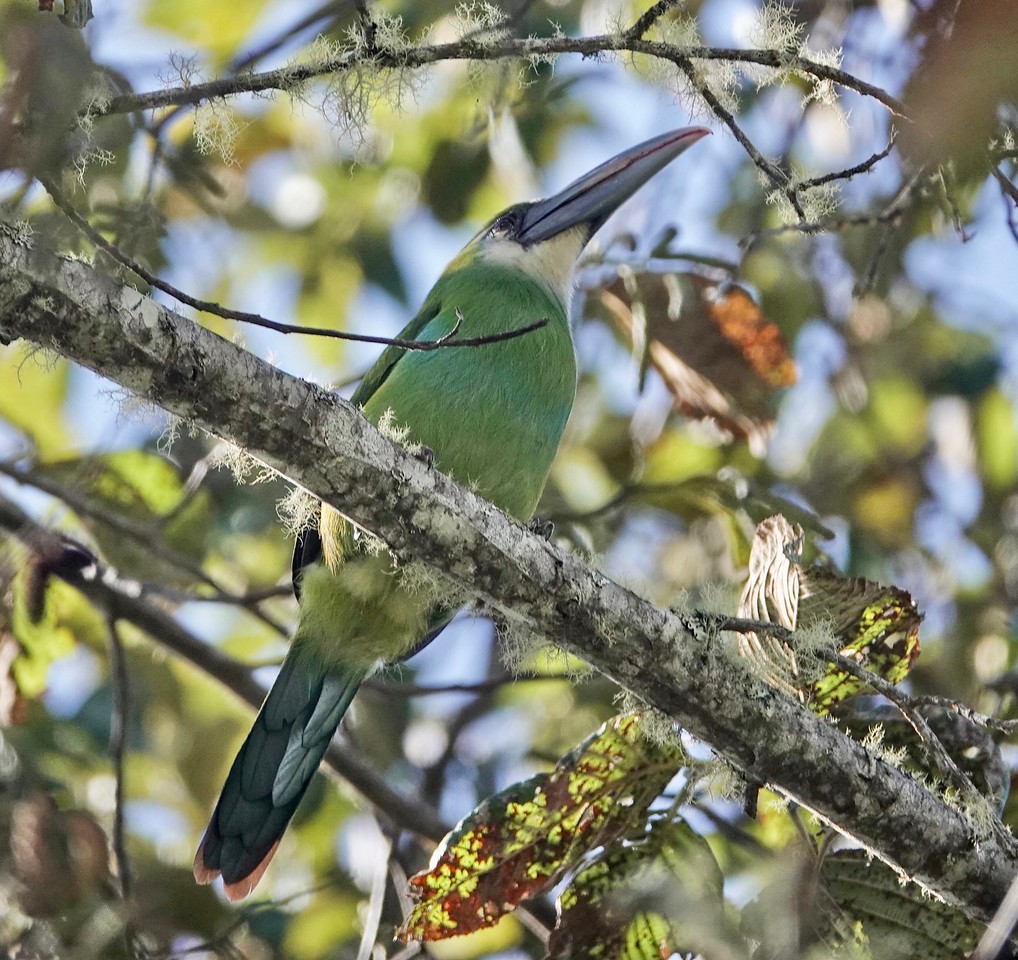

We made another visit to the Puna near the entrance station to Manu National Park while at Wayqecha Biological Station. Again, the Puna is the dry grass and shrub area above tree-line in the Andes. Clouds were rolling across the summit when we visited and there were not many birds around, but I was satisfied with the wildflowers.
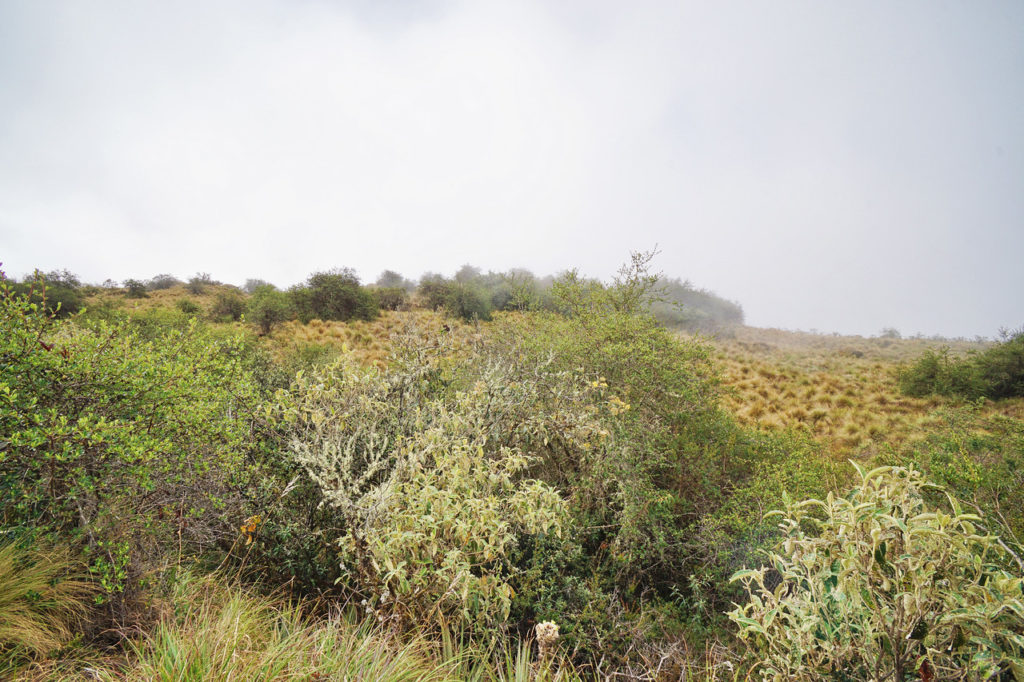
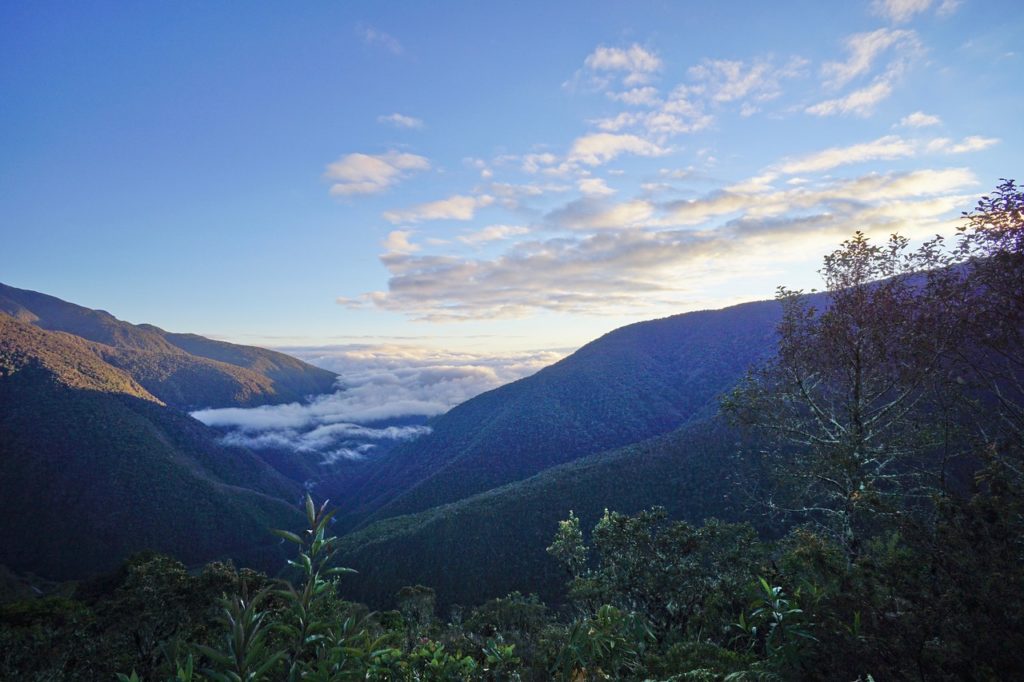
The next morning we packed up and headed down the Manu Road toward Villa Carmin Biological Station in the foothills. The target bird of the day was the Andean Cock-of-the-Rock and we had a late afternoon appointment at the Cock-of-the-Rock lek near Cock-of-the-Rock Lodge, half way between Wayqecha and Villa Carmin. The morning, however, as we slowly drove and walked the section of the Manu Road above Cock-of-the-Rock Lodge, turned out to be highly productive. Here is a small sampling of what we saw.
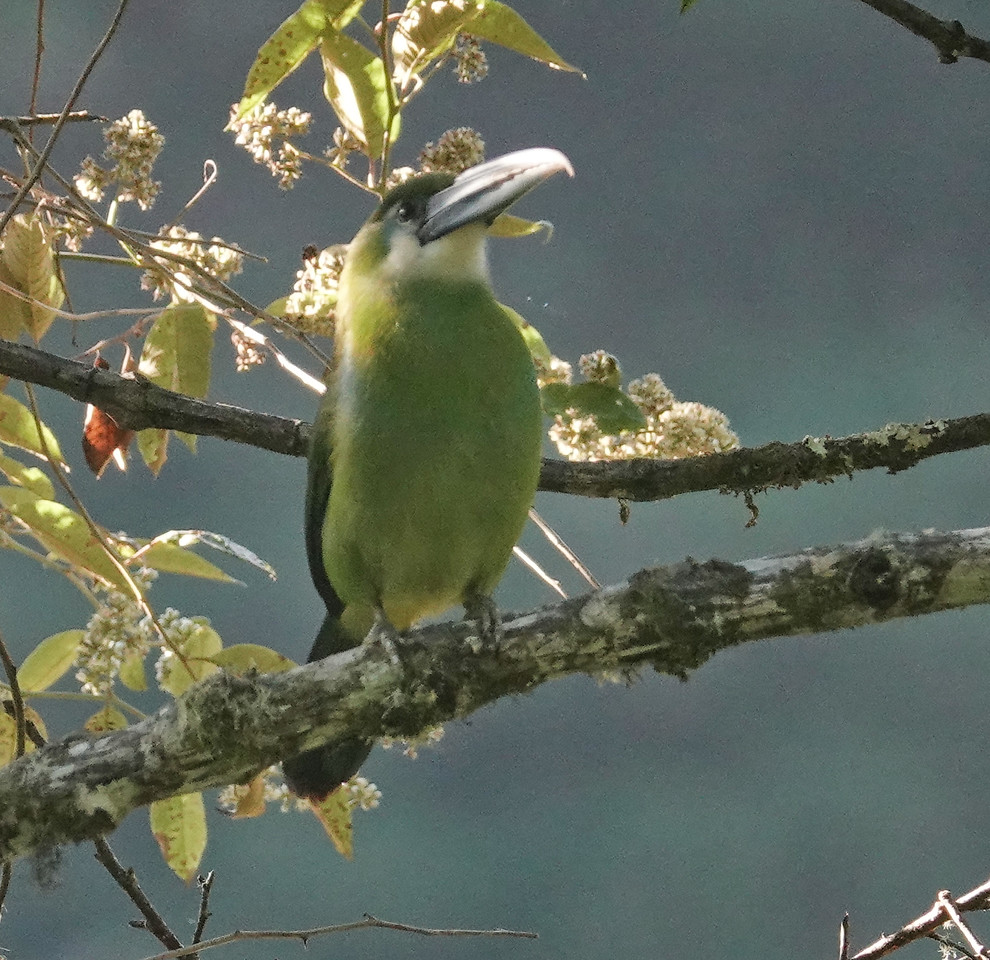
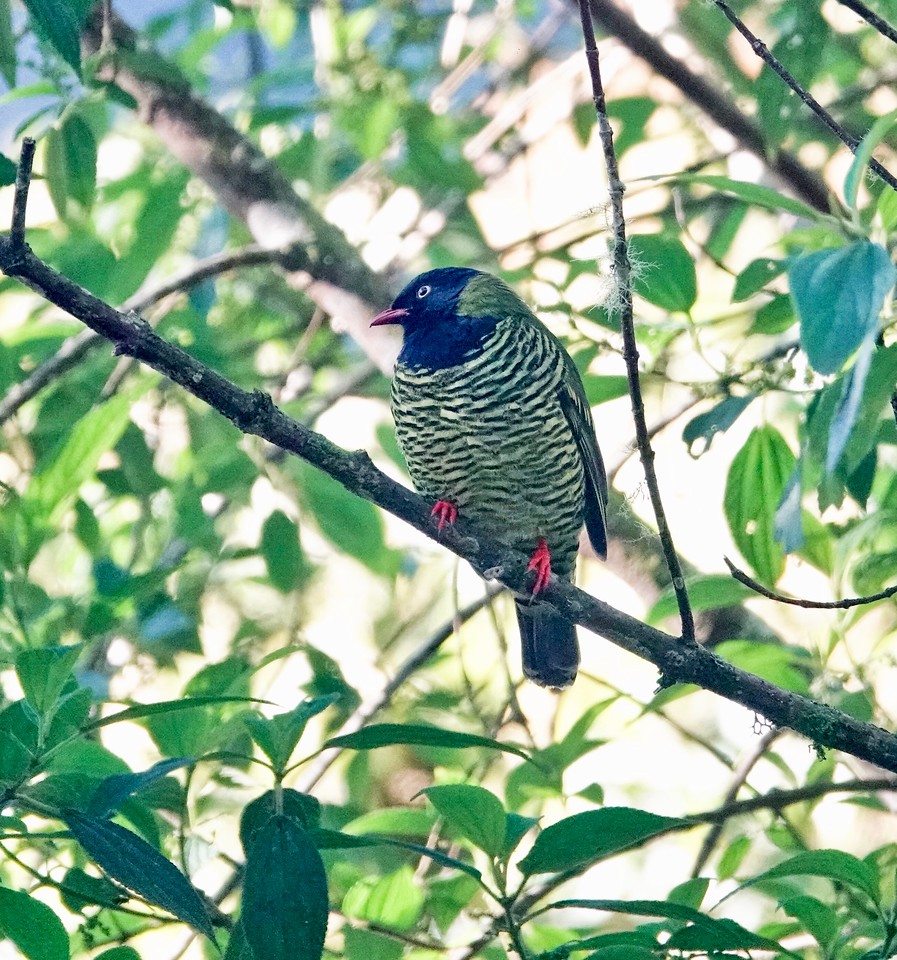
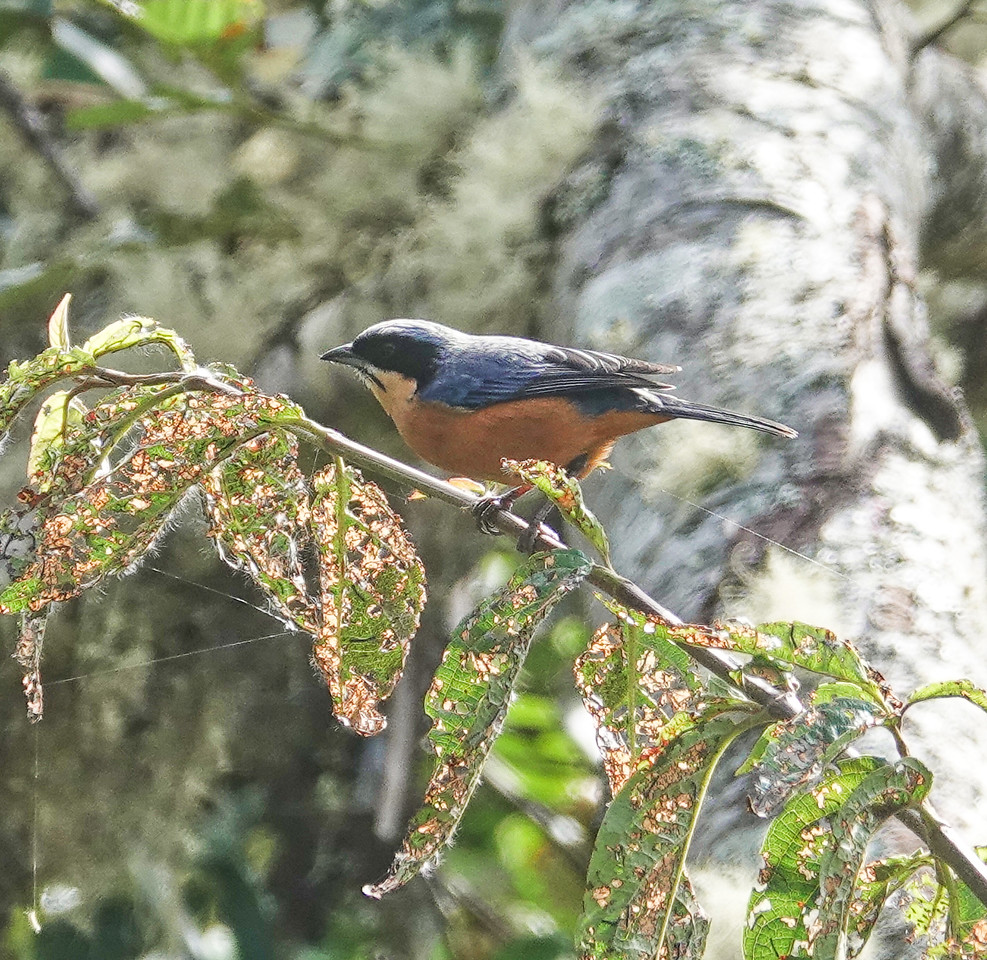

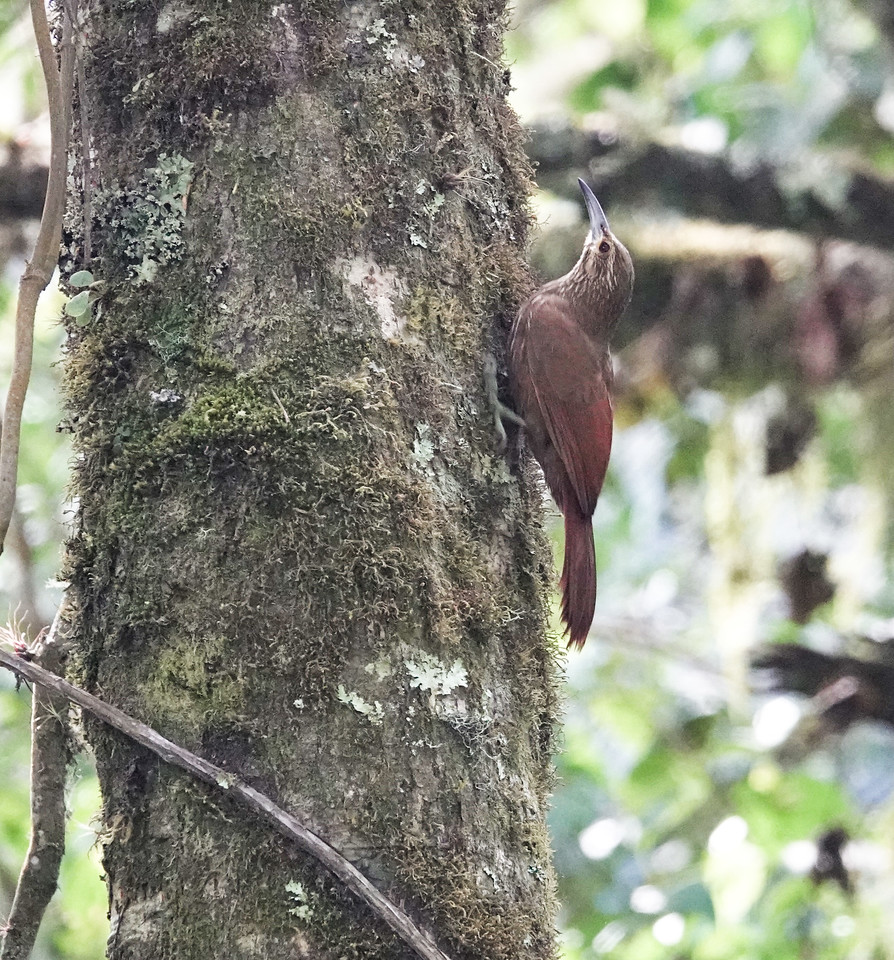
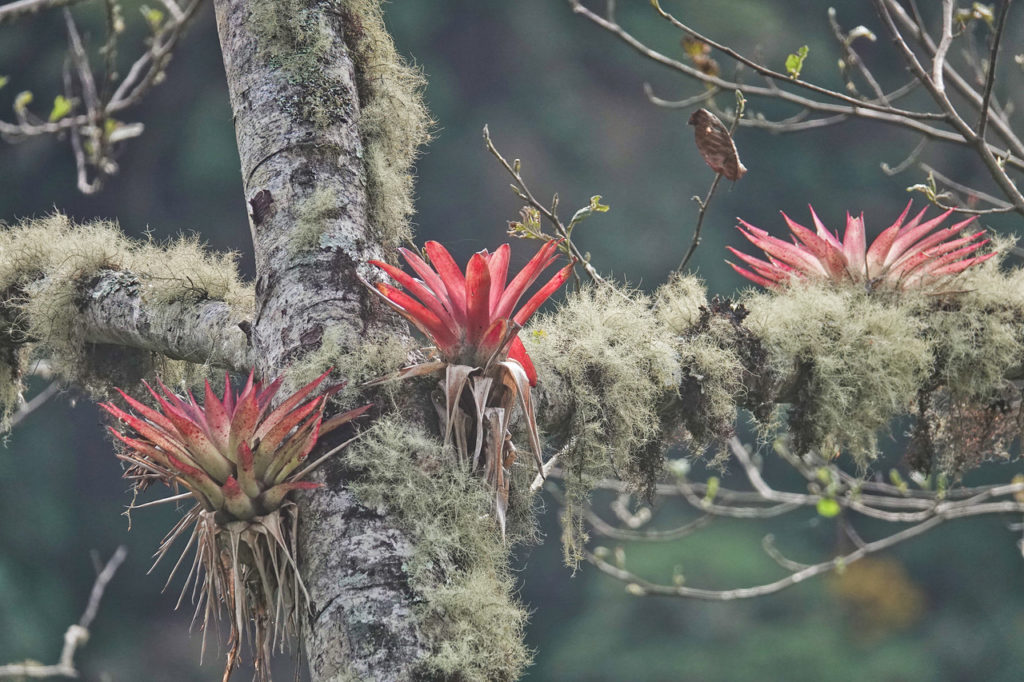
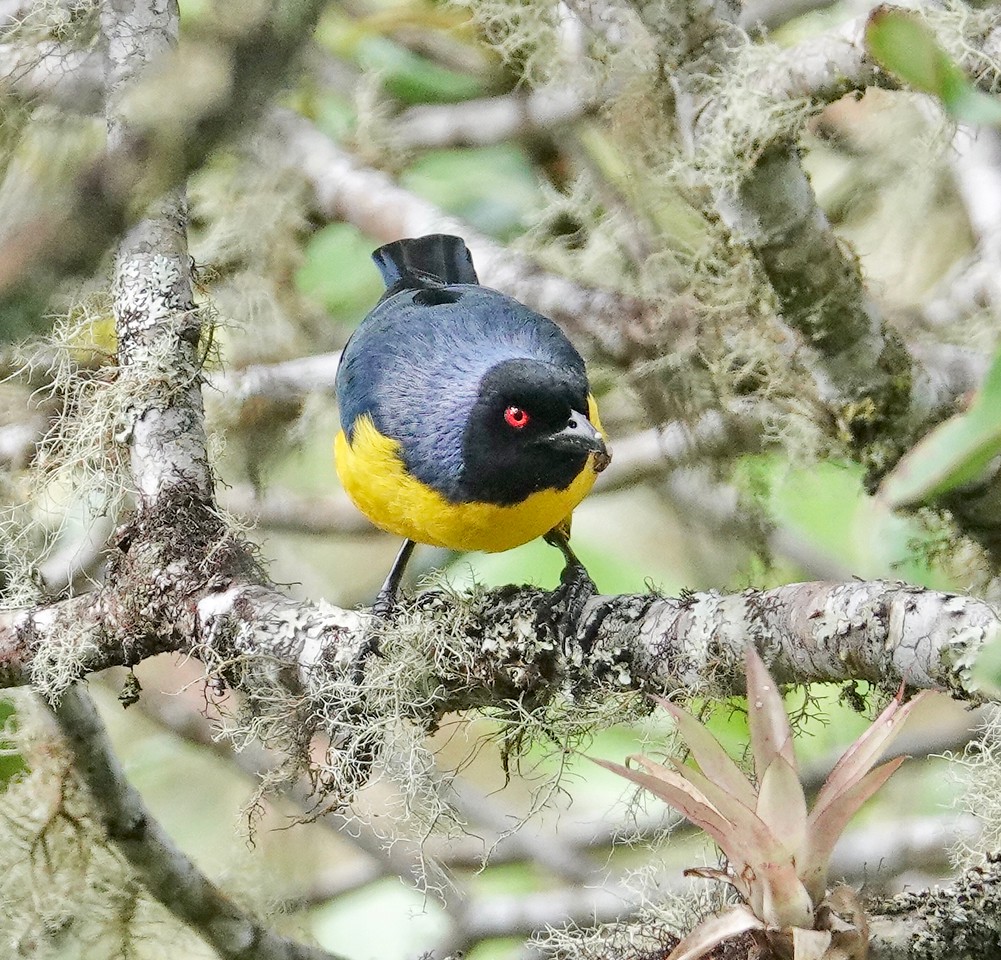
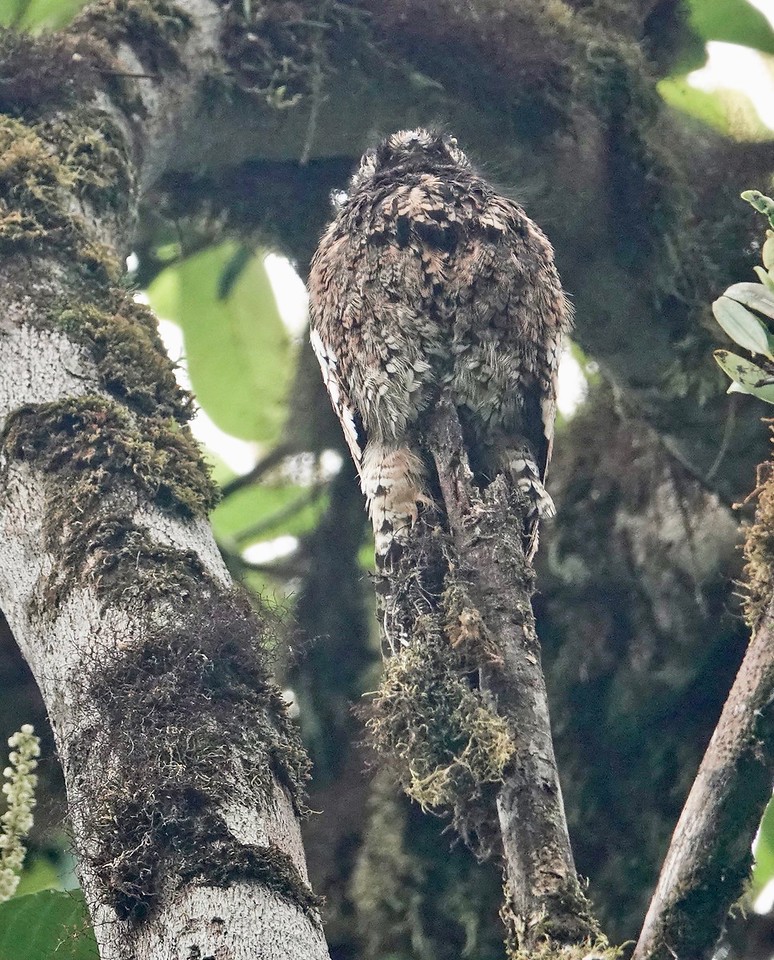

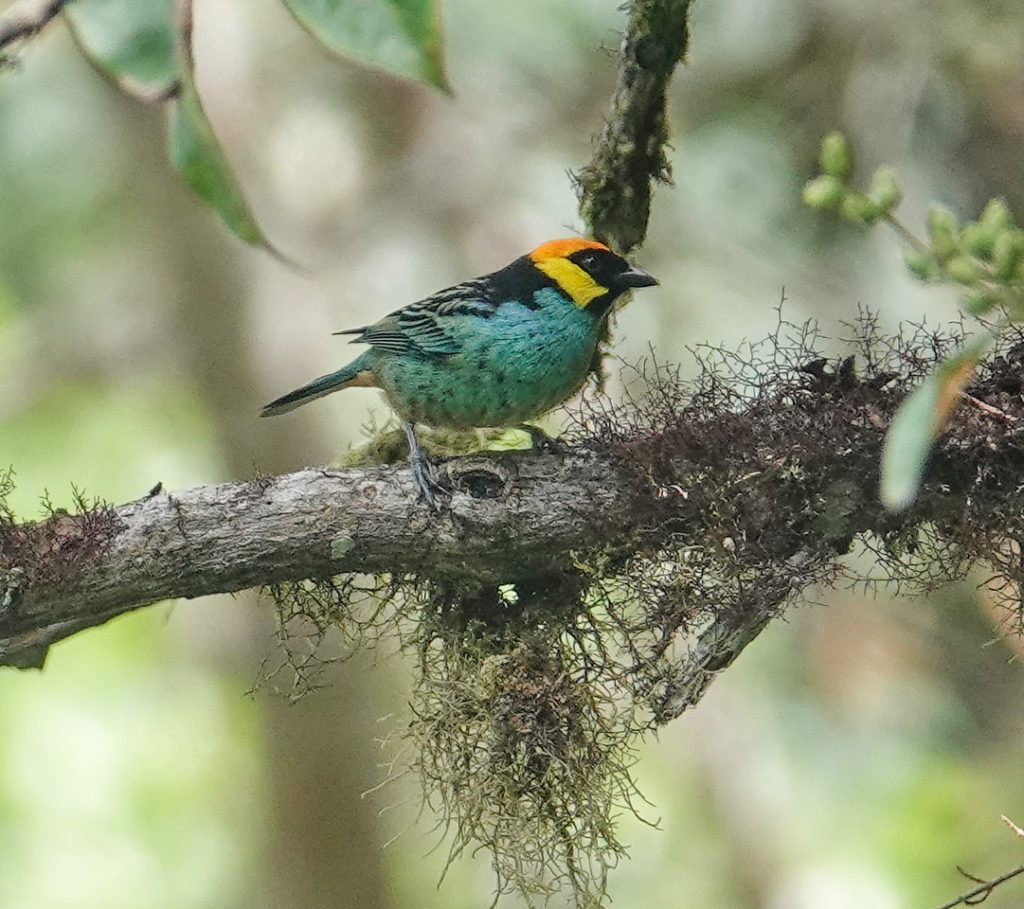
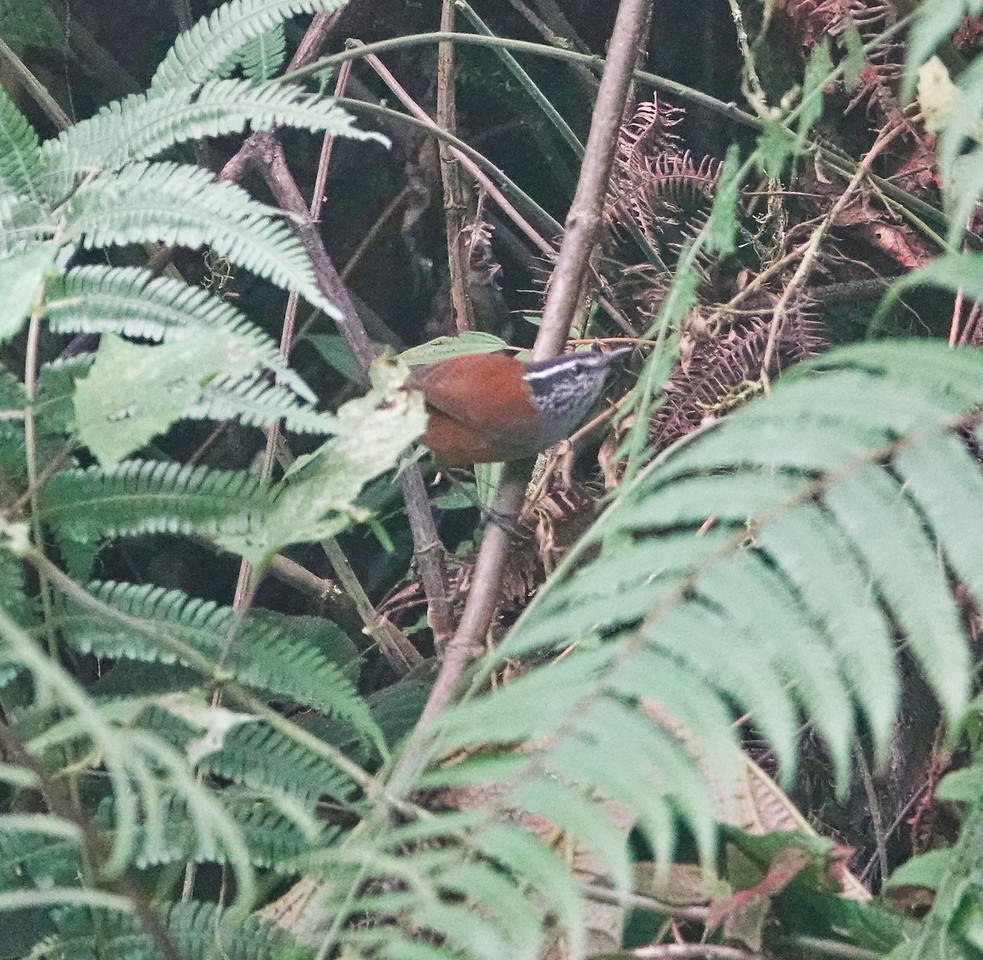
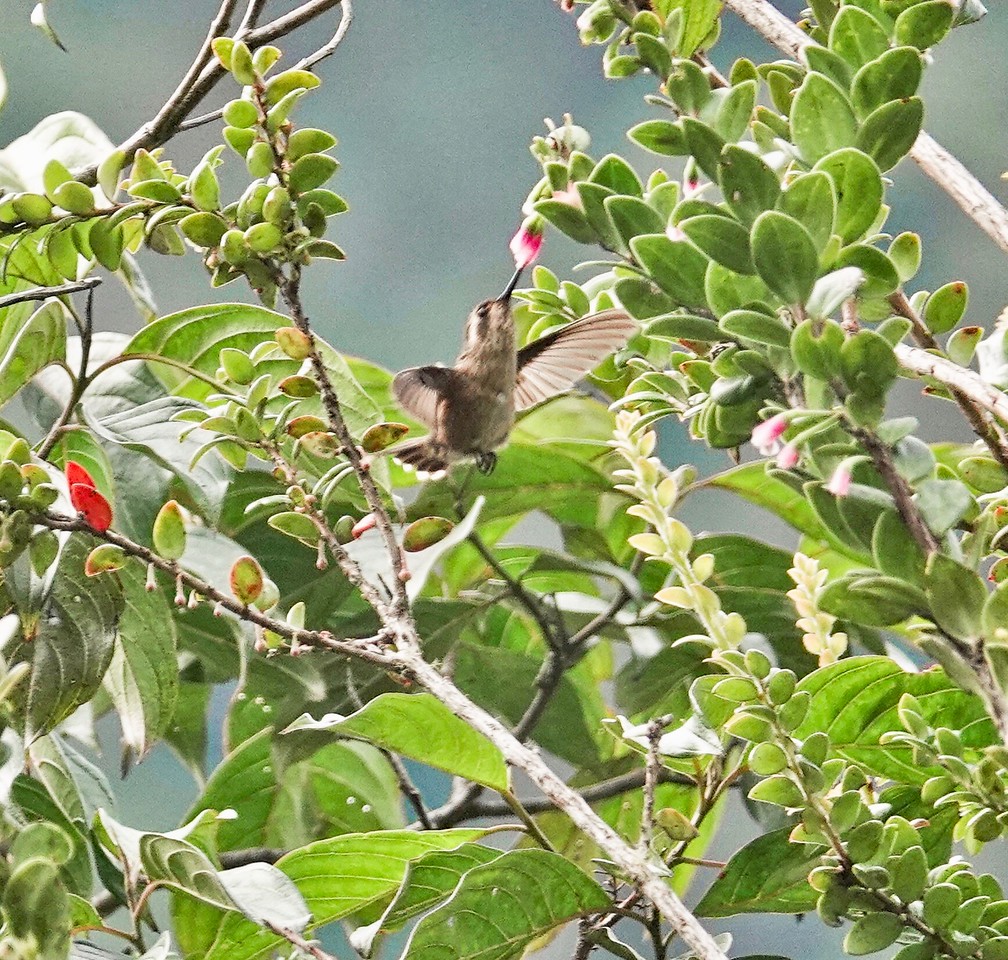
Cock-of-the-Rock Lodge has a fame all its own, and is worth visiting for more than the nearby CotR lek. The feeding station, hummingbird feeders, and plantings in the back yard below the dinning hall attract a wide variety of hummingbirds, tanagers, sparrows, woodpeckers, etc.
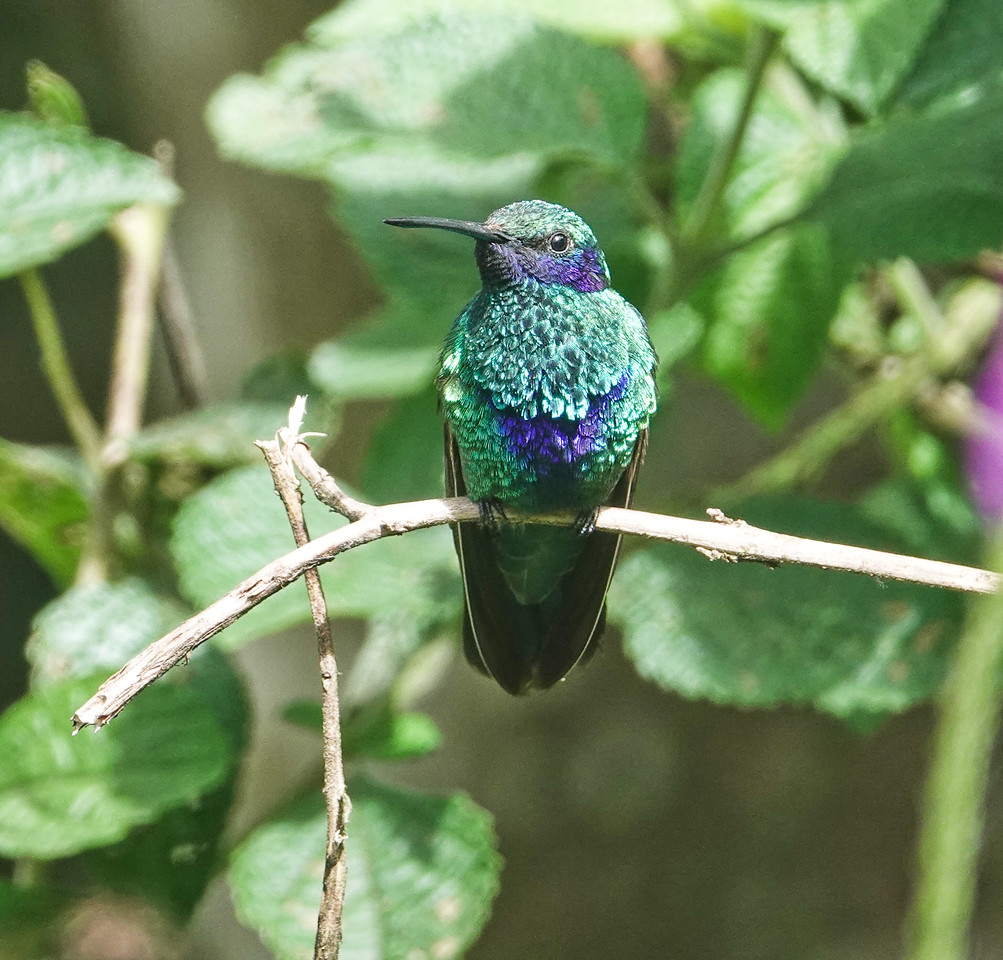
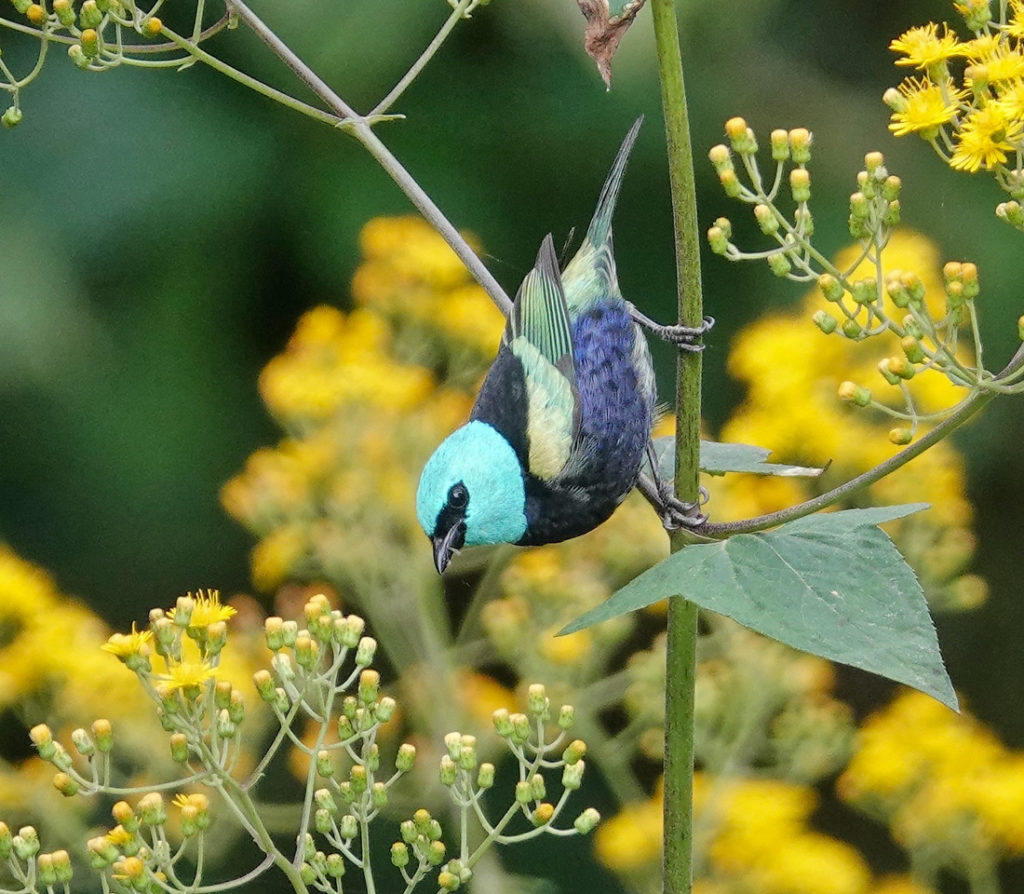
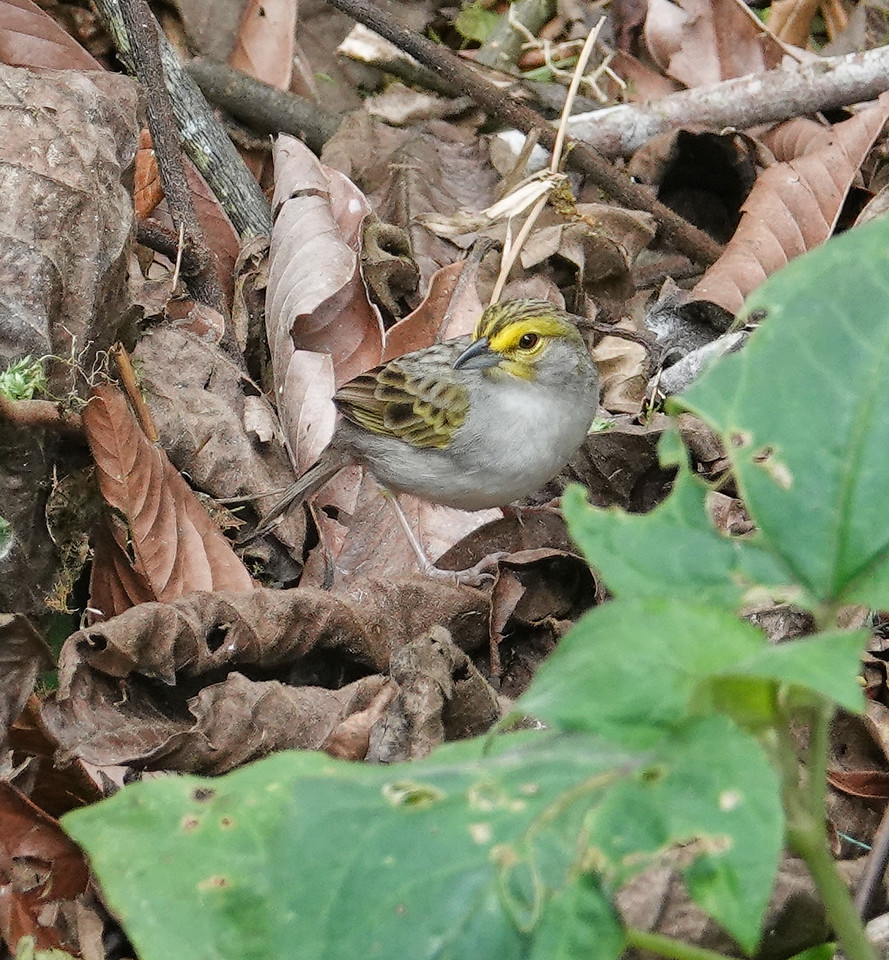
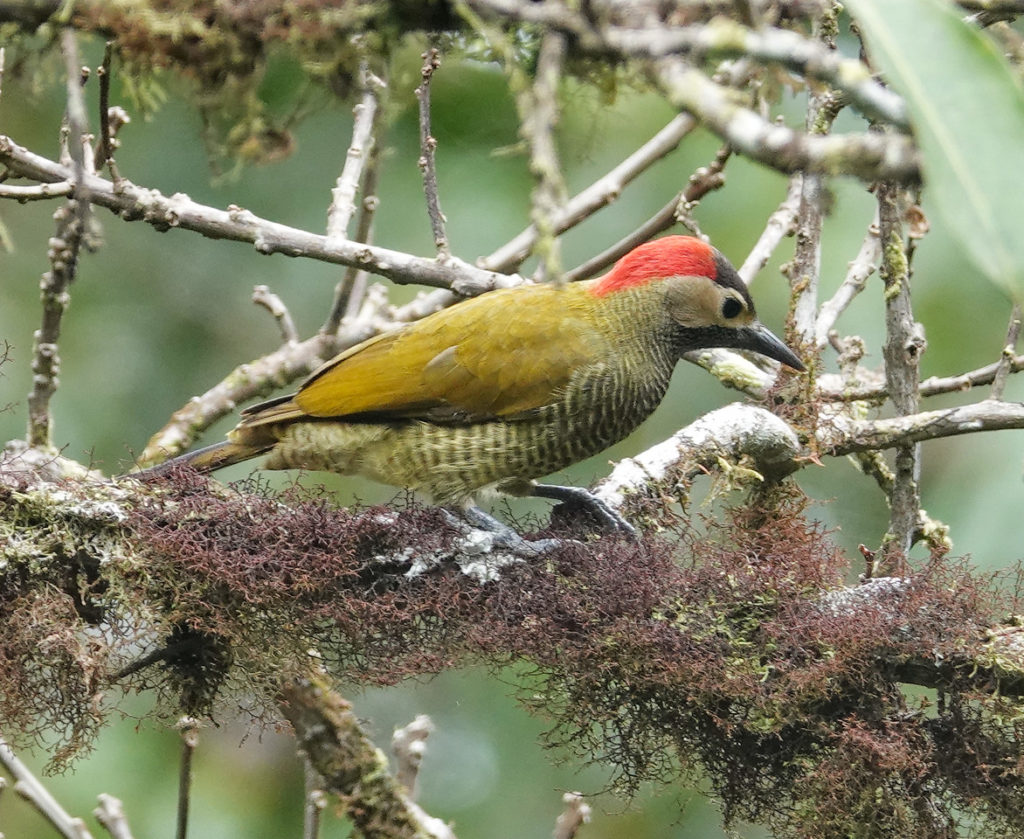
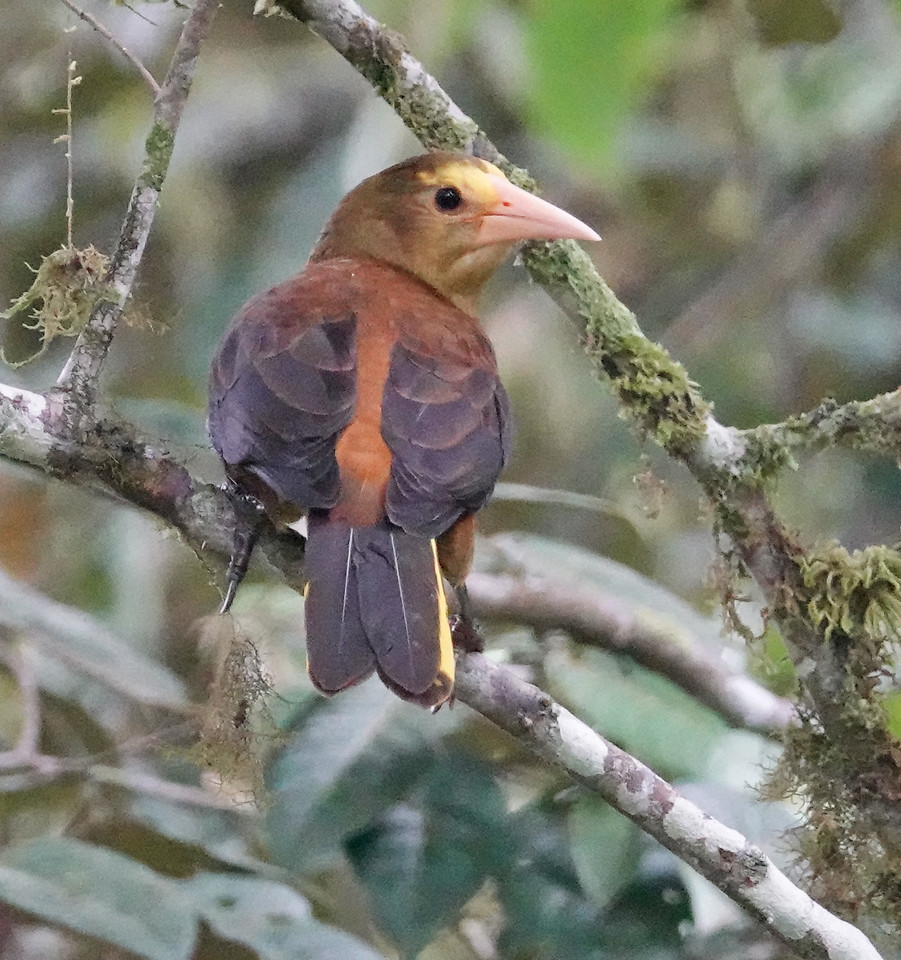
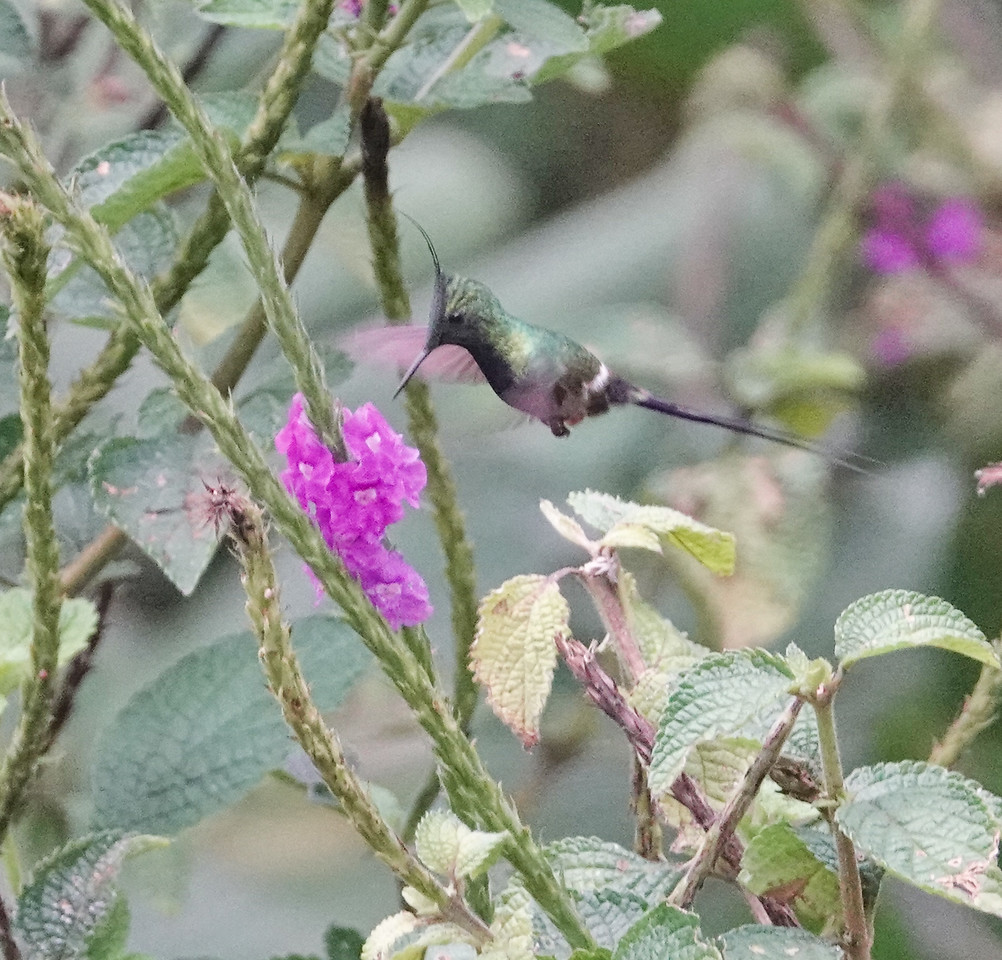
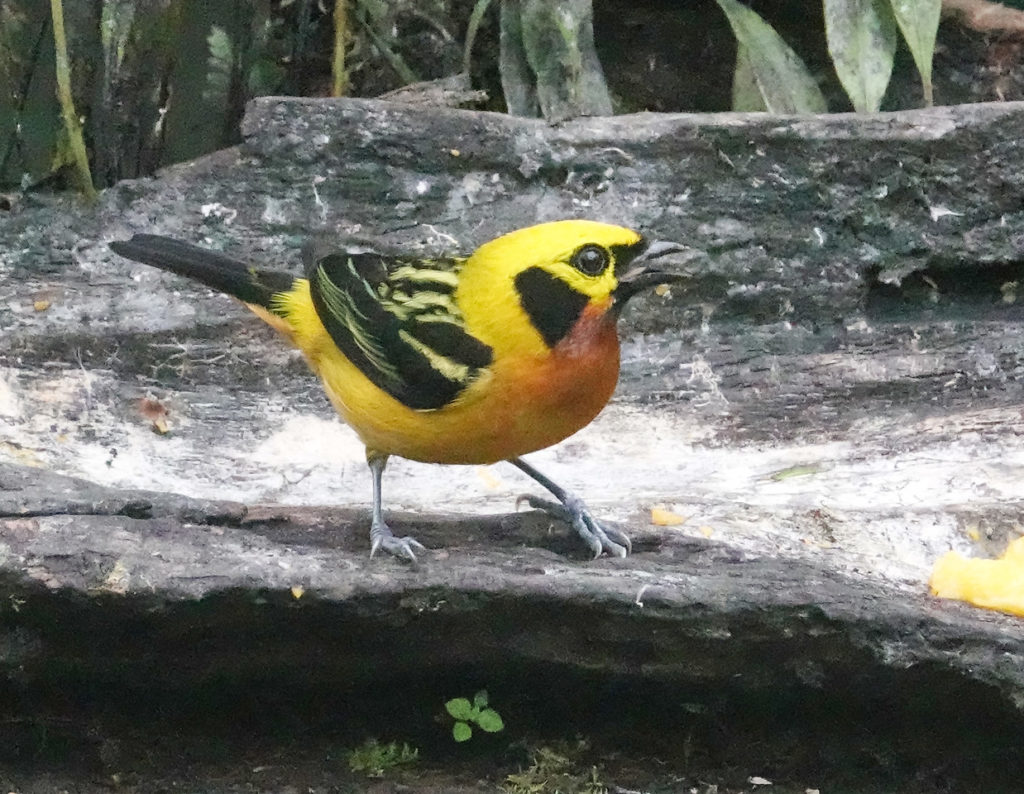
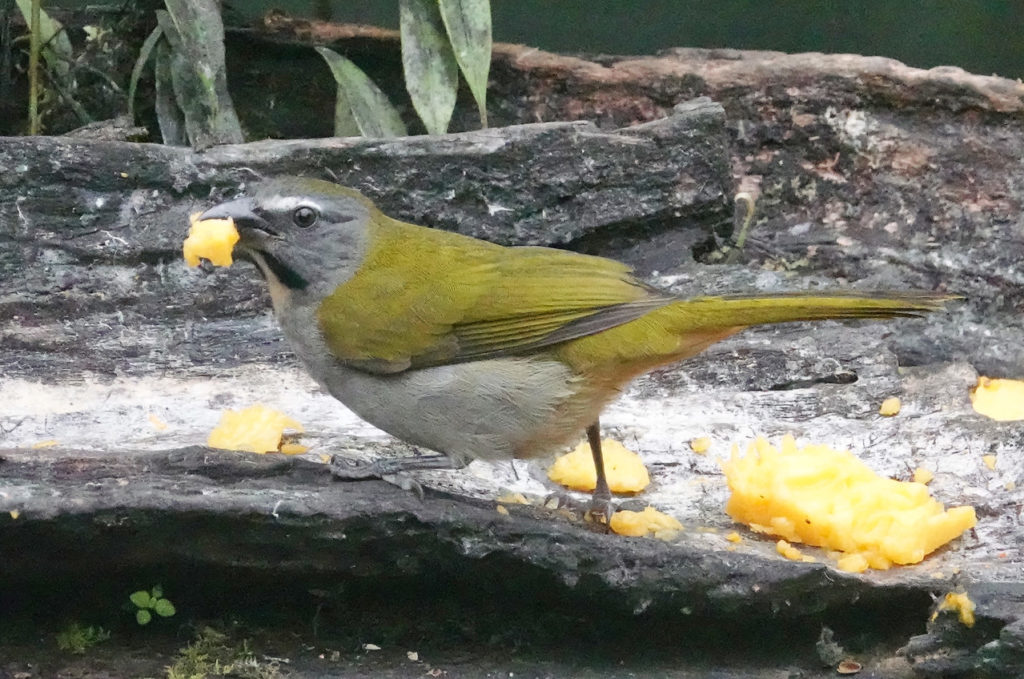
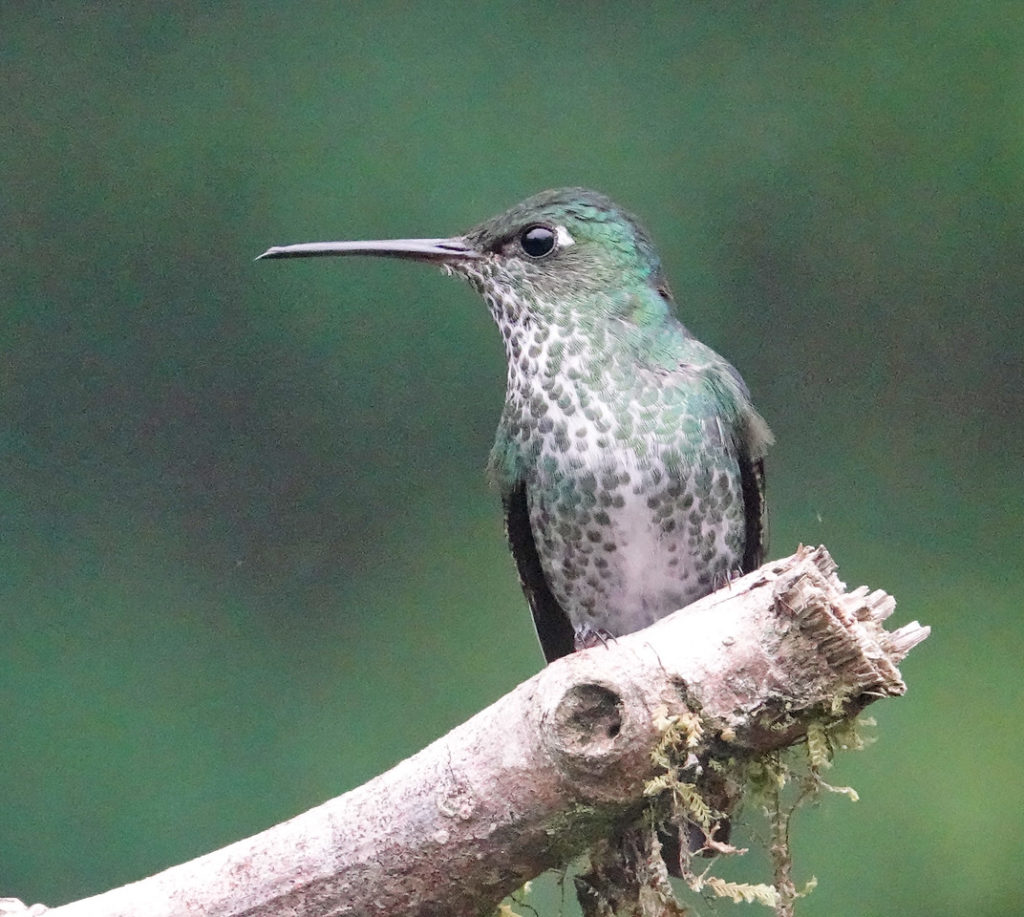
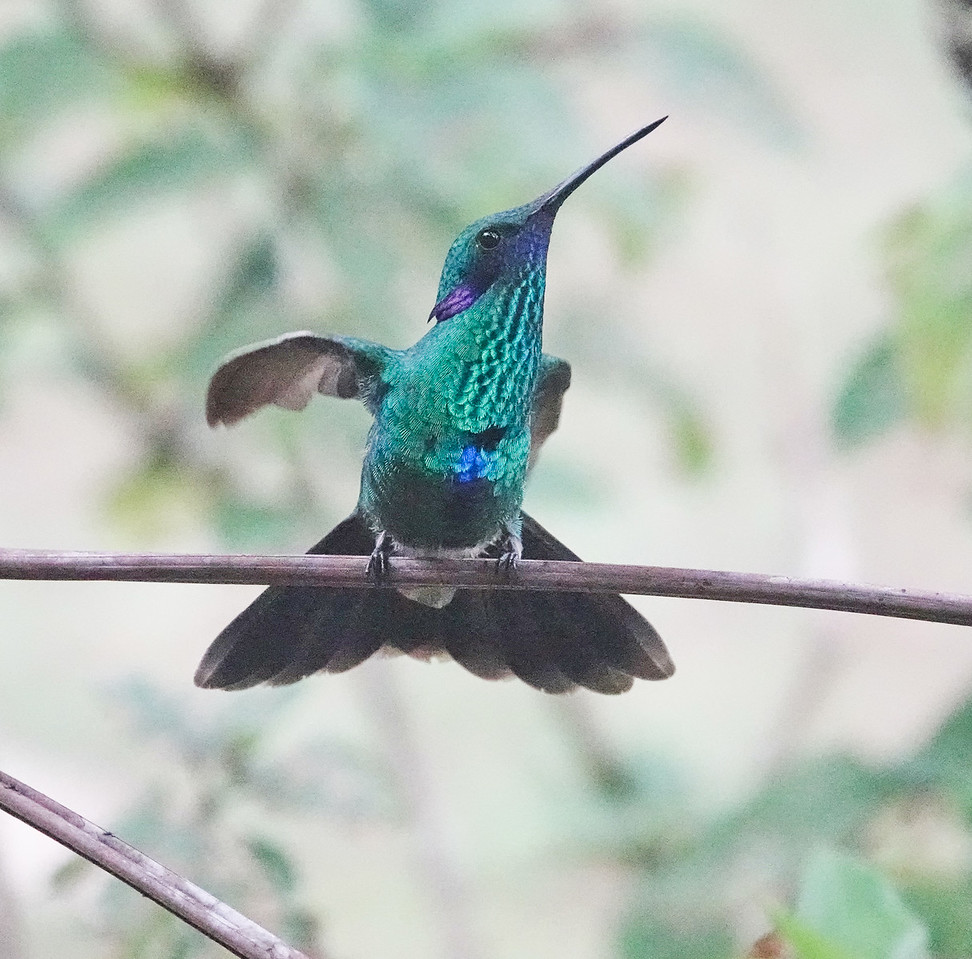
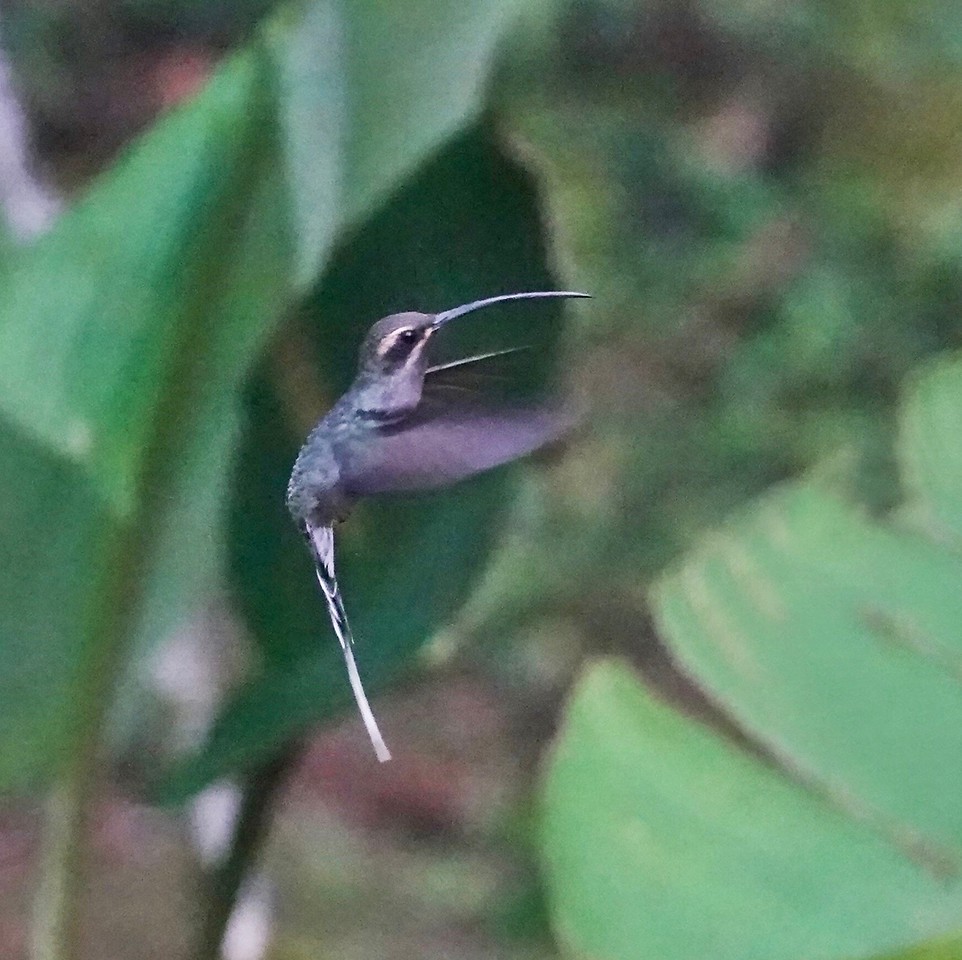
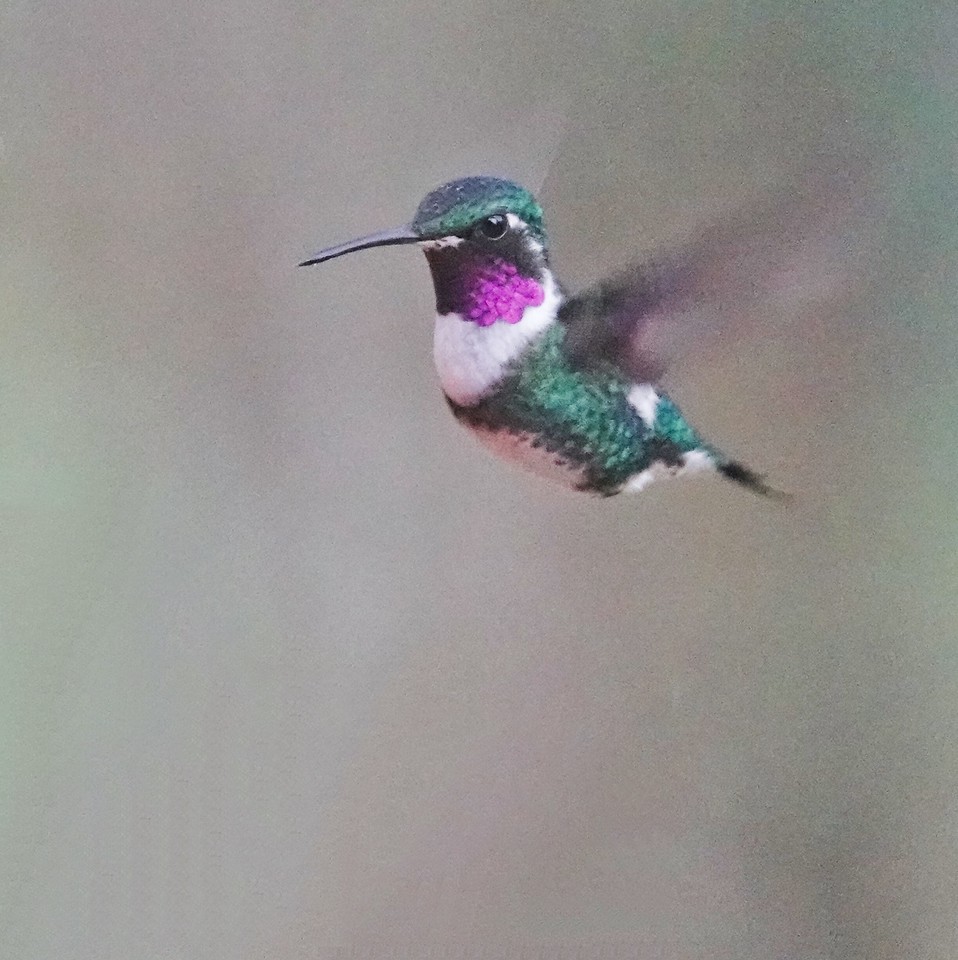
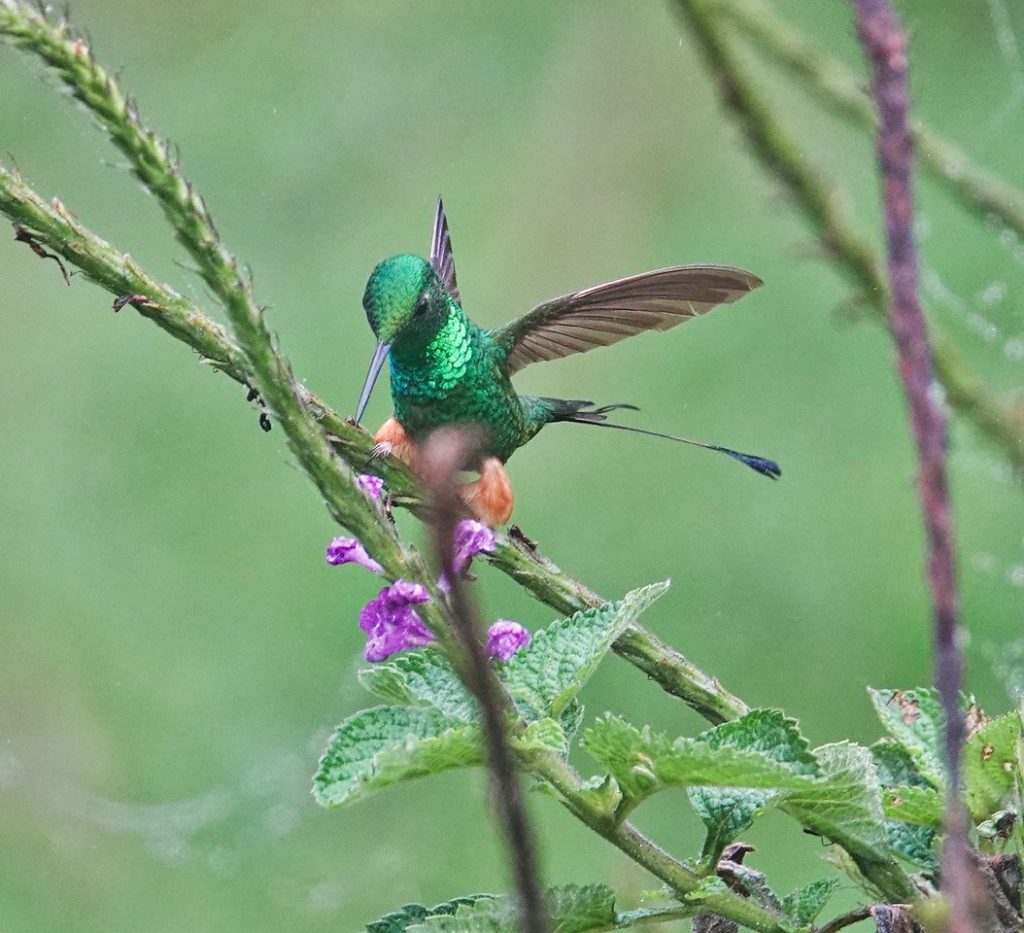
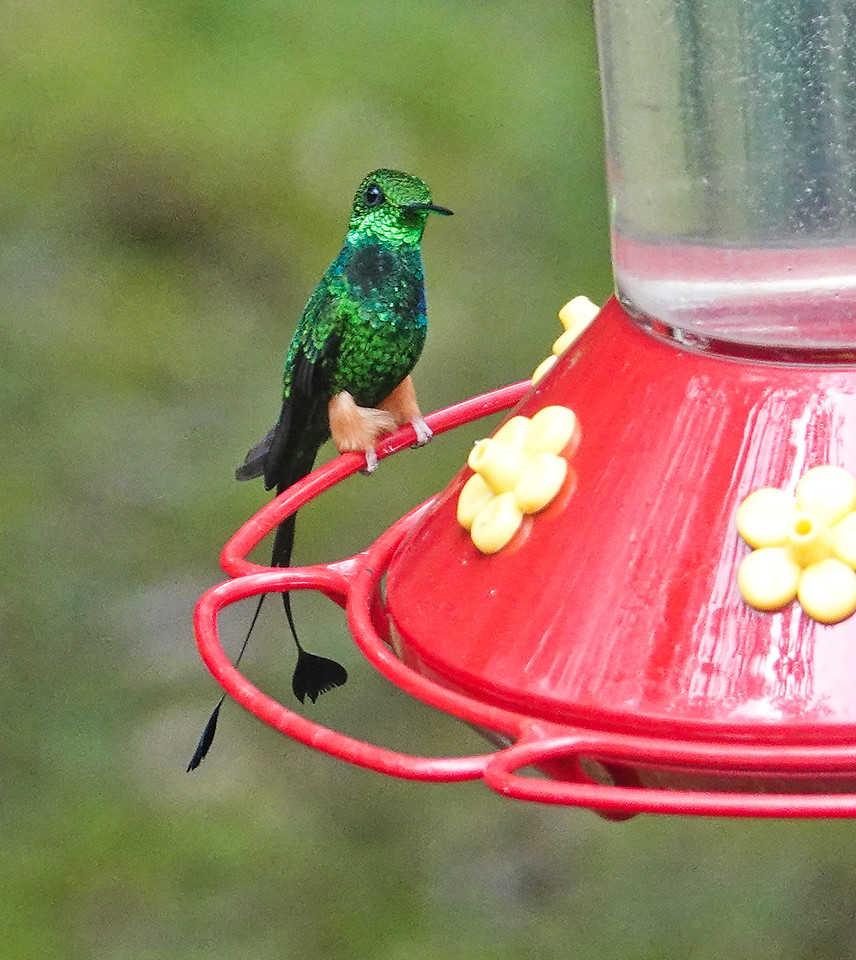
They take appointments for the lek both morning and afternoon, during the hours when the the male Cock-of-the-Rocks are likely to be displaying. We had an afternoon appointment and I was a bit worried, as we watched the bird show around the feeders at the lodge, and as the clouds rolled in and the day darkened, that we would not have much light left after 4PM. Still, we were there. They maintain a rough covered platform for observing the birds, on a slope above the lek. We went in early to get the prime spots for photogrpahy…at the far end of the platform…but it turned out there were only a few others scheduled for that afternoon, and they came and went quickly. We saw our first Cock-of-the-Rock before official opening time and before anyone else arrived. Again, like most experiences on the Manu Road, your experience at the Cock-of-the-Rock lek will be a matter of how active the birds are on the particular day you visit. There is rarely a day when no birds show up to display, but it can happen. And the birds might or might not be visible in the dense foliage of the lek. We had a total of three birds displaying, but one kept well out of sight, and we never did get a clear look at it. Still, the Cock-of-the-Rock lek at Cock-of-the-Rock Lodge is not to be missed if you are doing the Manu Road, and remains one of the most reliable places in South America to see the bird. And what a bird it is. A member of the Cotinga family of birds, there are few birds more spectacular. Light levels are always low in the lek area, and these images were taken in the Sony Rx10ivs special Anti-motion Blur mode, which stacks serval exposures to make the most of the light available.
We were on our way back the van from the Cock-of-the-Rock lek when Pepe spotted a female Amazonian Umbrella Bird just off the road at eye-level in a small tree. This is another hard to see bird, and another example of the opportunities the Manu Road provides.

For the second half of the journey, see part 2.
For more information on arranging a Birding the Manu Road adventure of you own, contact Amazon Journeys.
We arrived at Villa Carmen Biological Station just as it was getting full dark. Villa Carmen, again, is owned and operated by the Amazon Conservation Association, as a base for research and as lodge for birders visiting the foothills area of Manu National Park. Villa Carmen sits on 7600 acres, ranging in elevation from 1700 to 4000 feet. They have 25 miles of maintained trails, and comfortable facilities for travelers of all kinds. The cabins, as befits the more lowland location, are open to the air on both sides, and unexpectedly elegant.
The feeding station and plantings near the dinning hall attract some interesting birds.


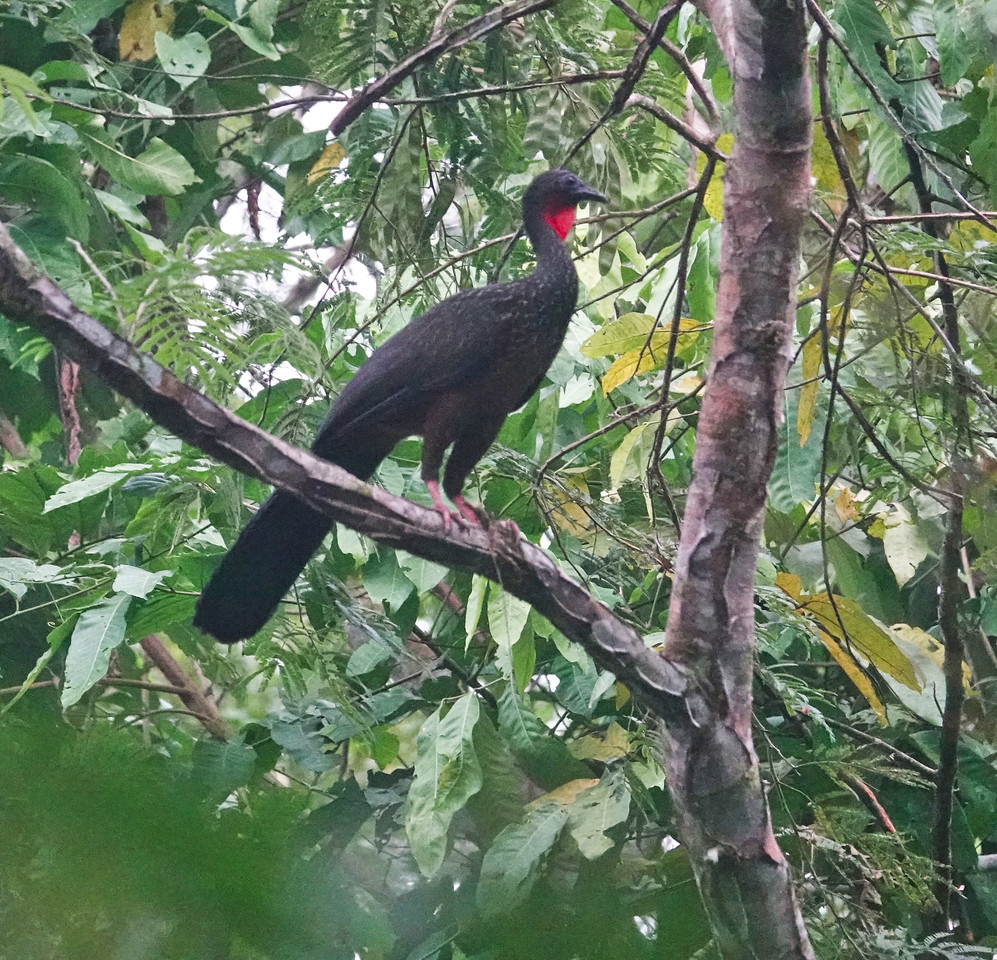

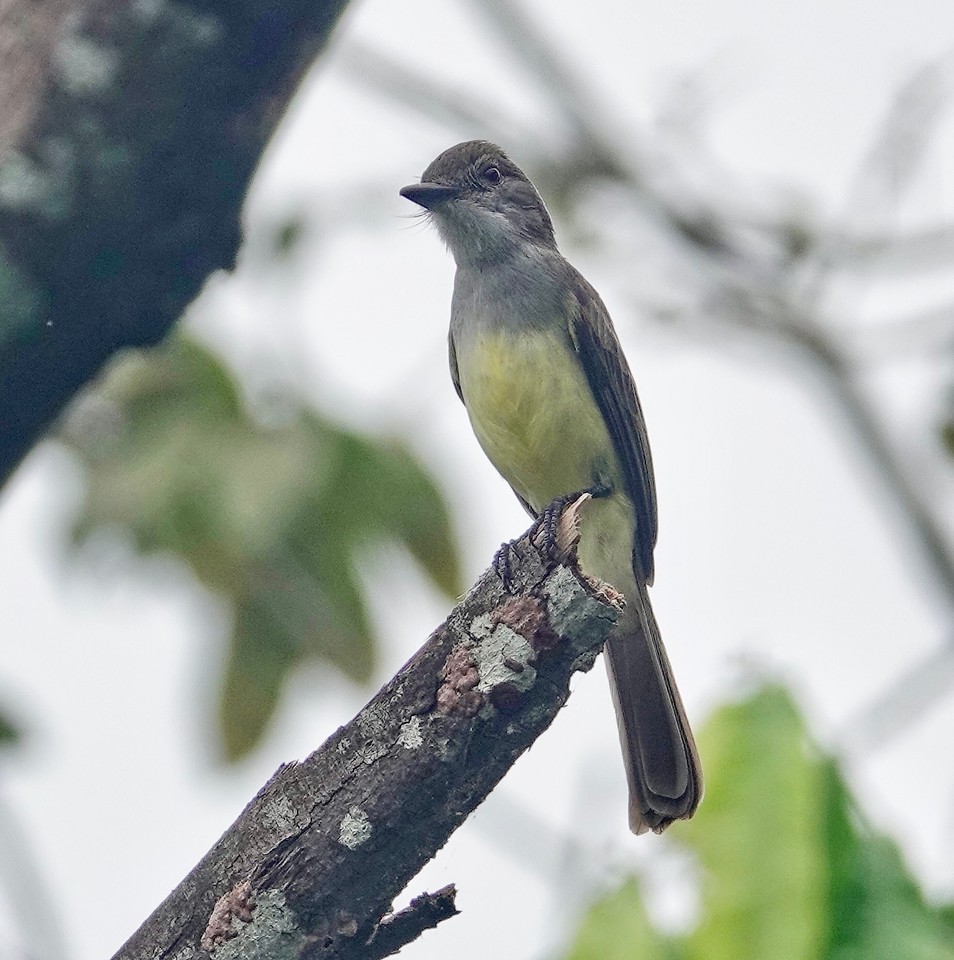
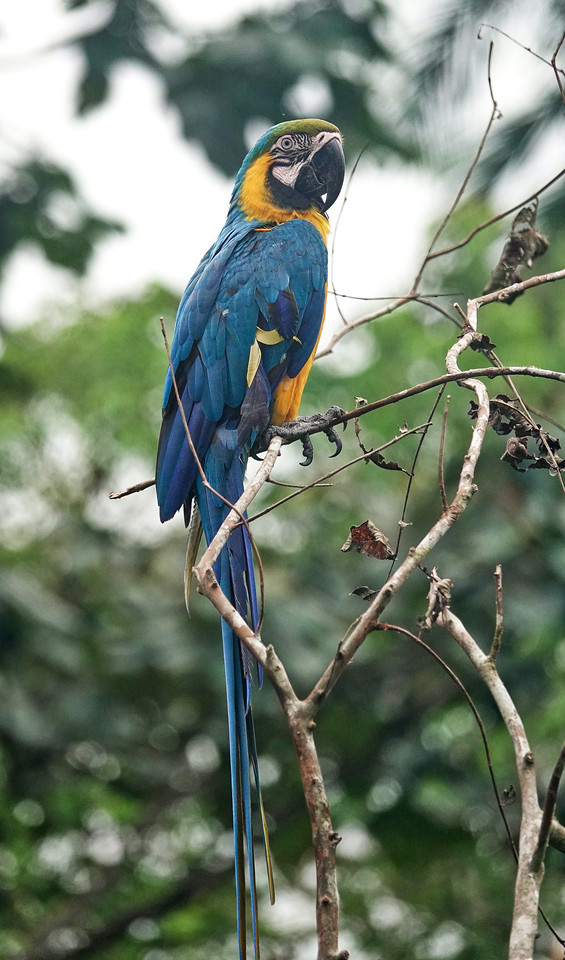
But the most interesting residents of the immediate grounds of Villa Carmen are the colony of Hoatzin that congregate around the little pond below the dinning hall. The Hoatzin was a target bird on our Amazon Riverboat Cruise a few years ago, and we went to a lot of trouble finding them. At Villa Carmen they are yard birds, and present in impressive numbers.
Another attraction of Villa Carmen are the Amazonian Antpitta’s that the staff have been working with for several years. They have constructed a little ally way in the forest, with some basic benches, and you can make an appointment to accompany the researcher to the Antpitta’s area, where, if you are patient, at least one bird might come out to take worms from mossy rock in plain sight. As with the Cock-of-the-Rock lek, the Antpitta run is deep of the forest, so high ISOs or special low light modes (or both) are required for satisfying photography.
Literally at the far other end of the immediate Villa Carmen grounds, they also maintain a feeding station where Wood Rails and at least two species of Tinamous come out on a regular basis. The days we visited the Undulated Tinamou and the Grey-cowled Wood-Rail graced us with their presence.
An afternoon walk down the access road at Villa Carmen also turned up interesting birds, and quite a few interesting butterflies.
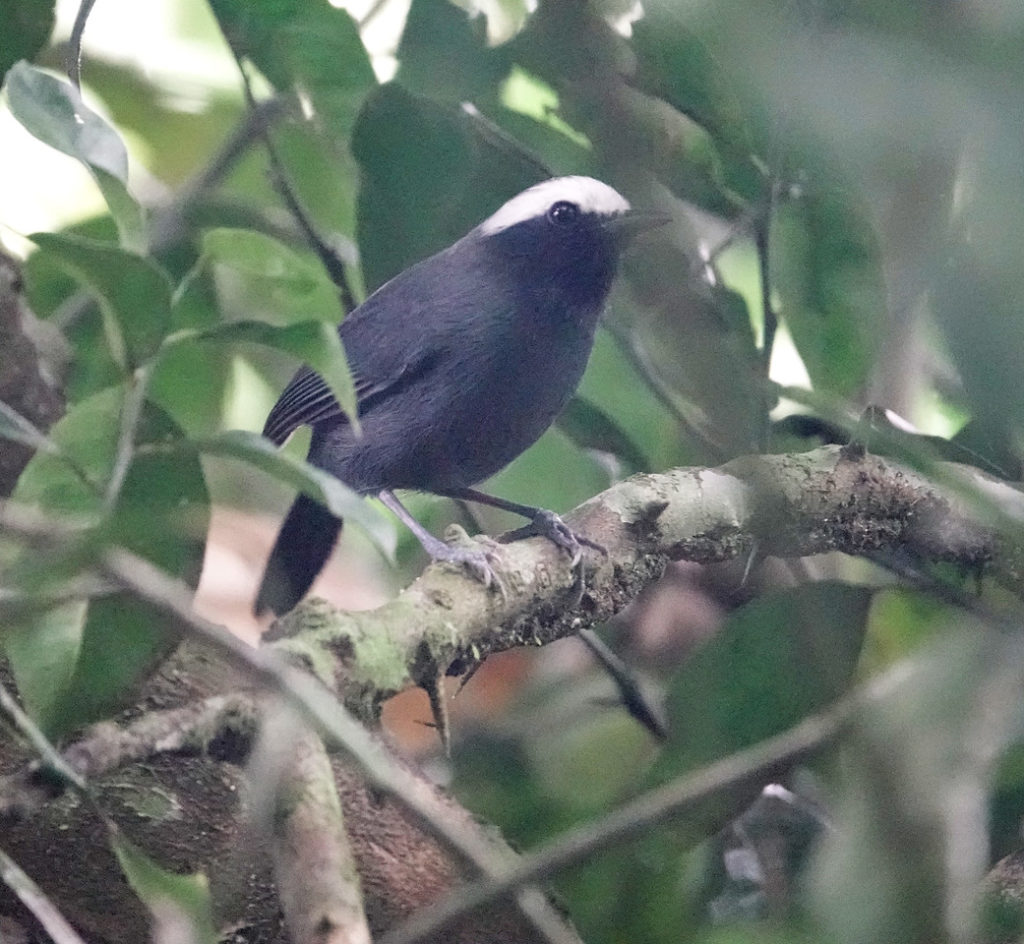
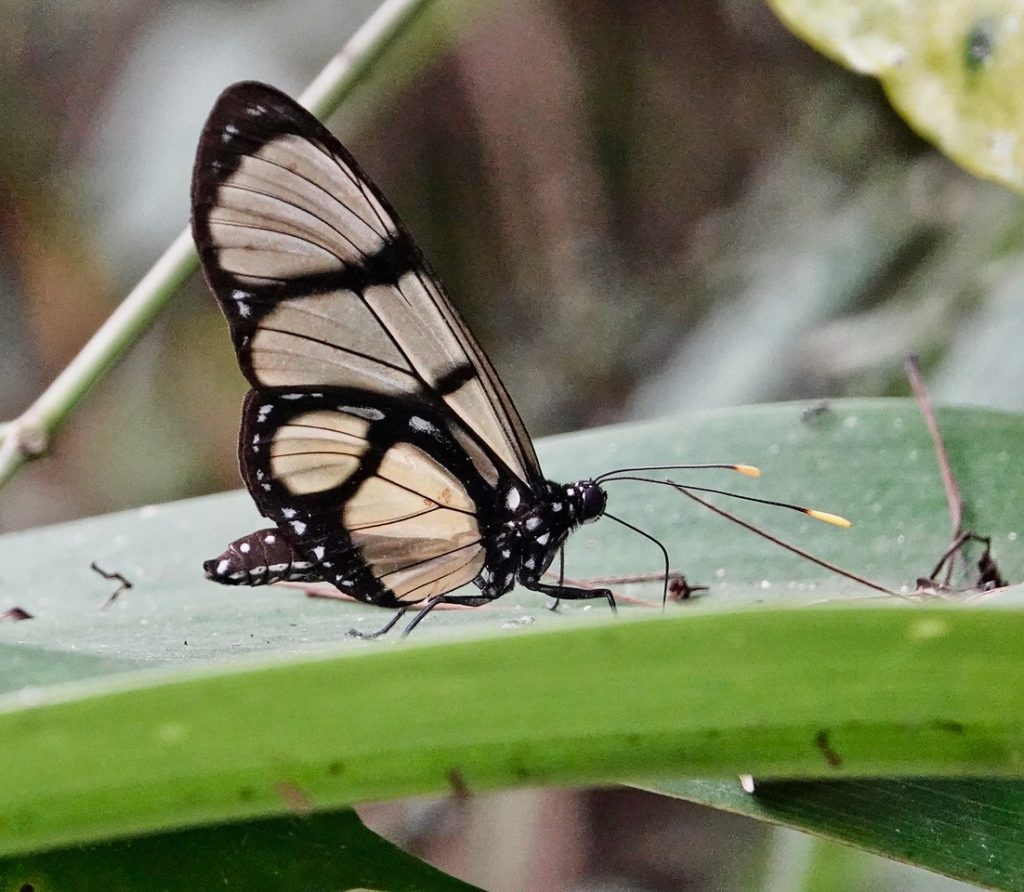
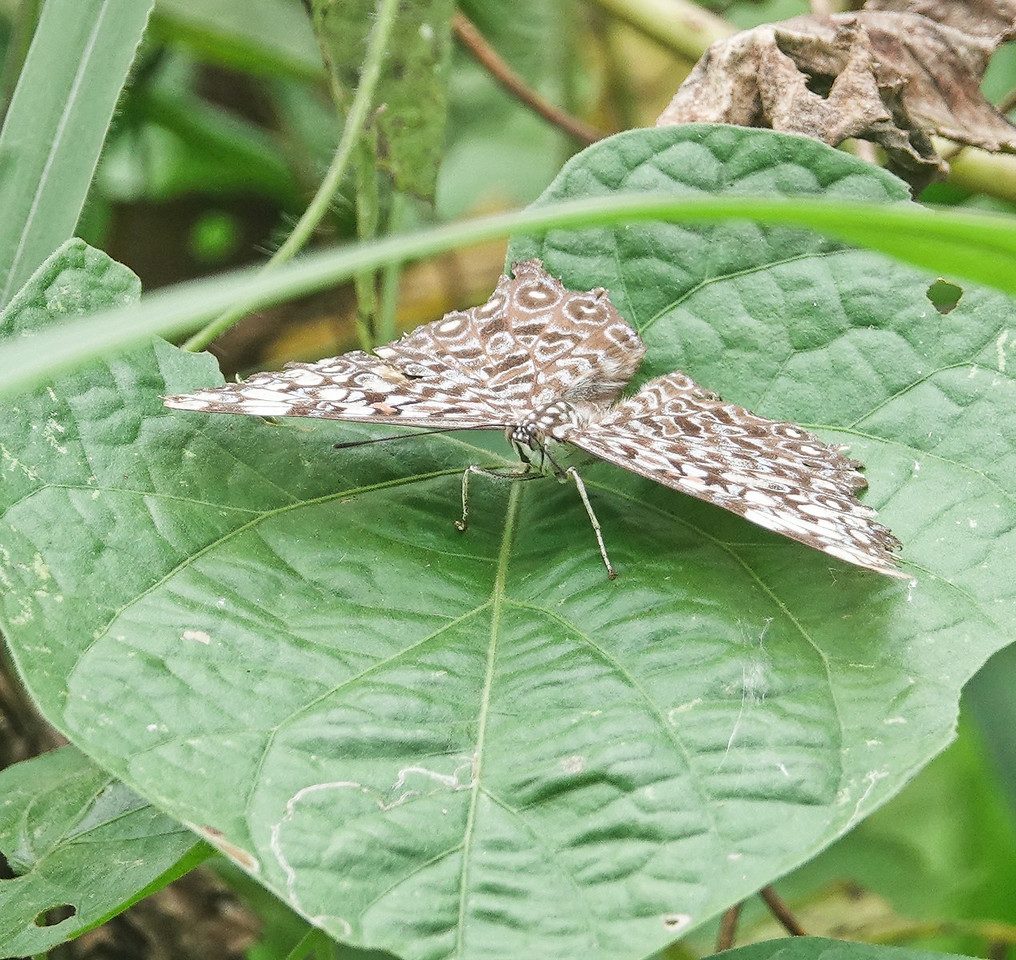
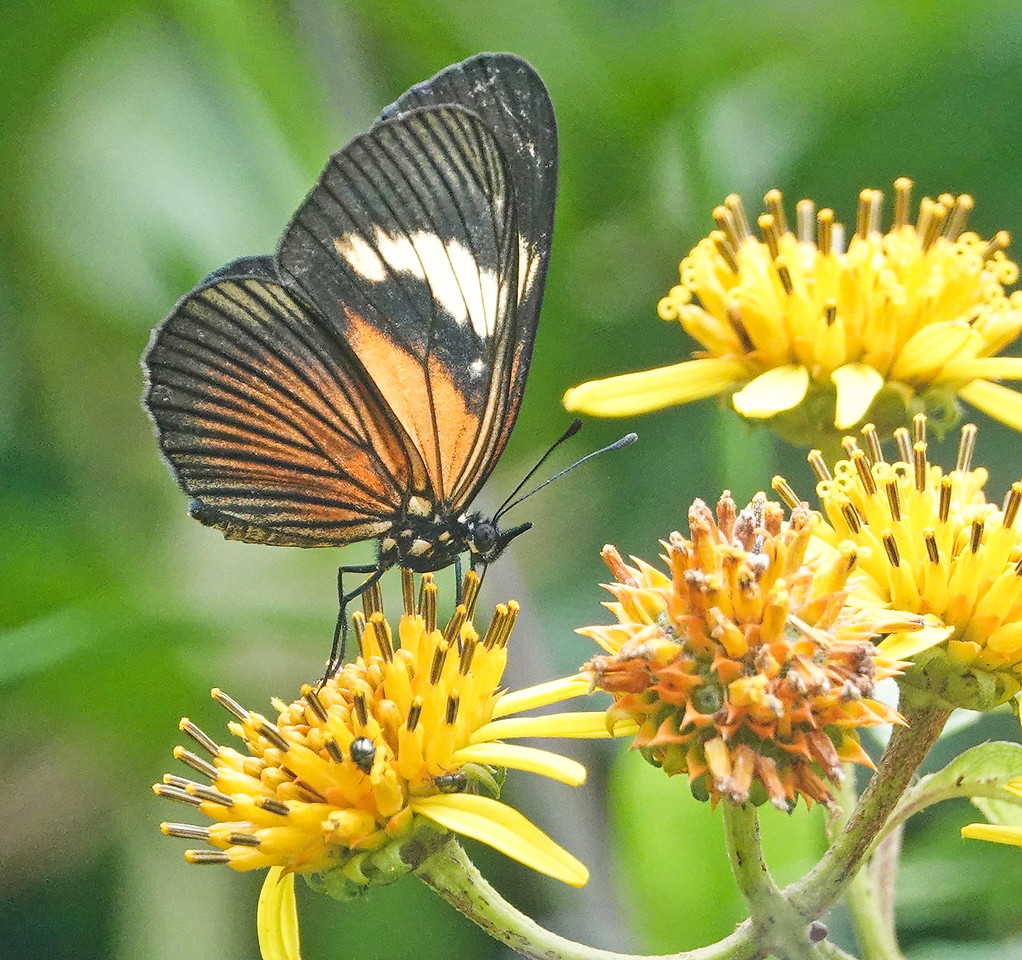
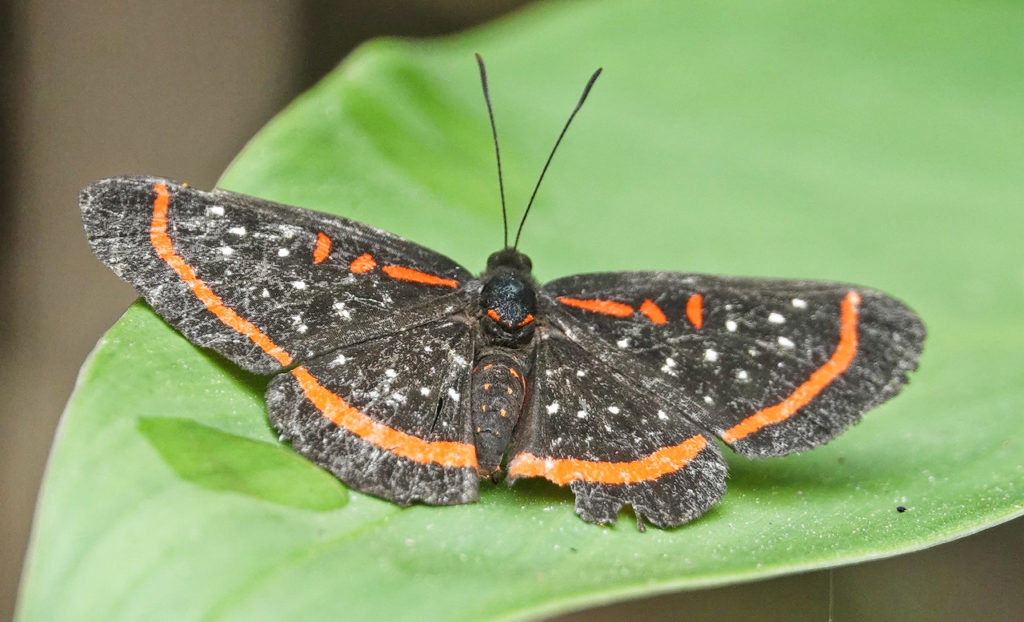
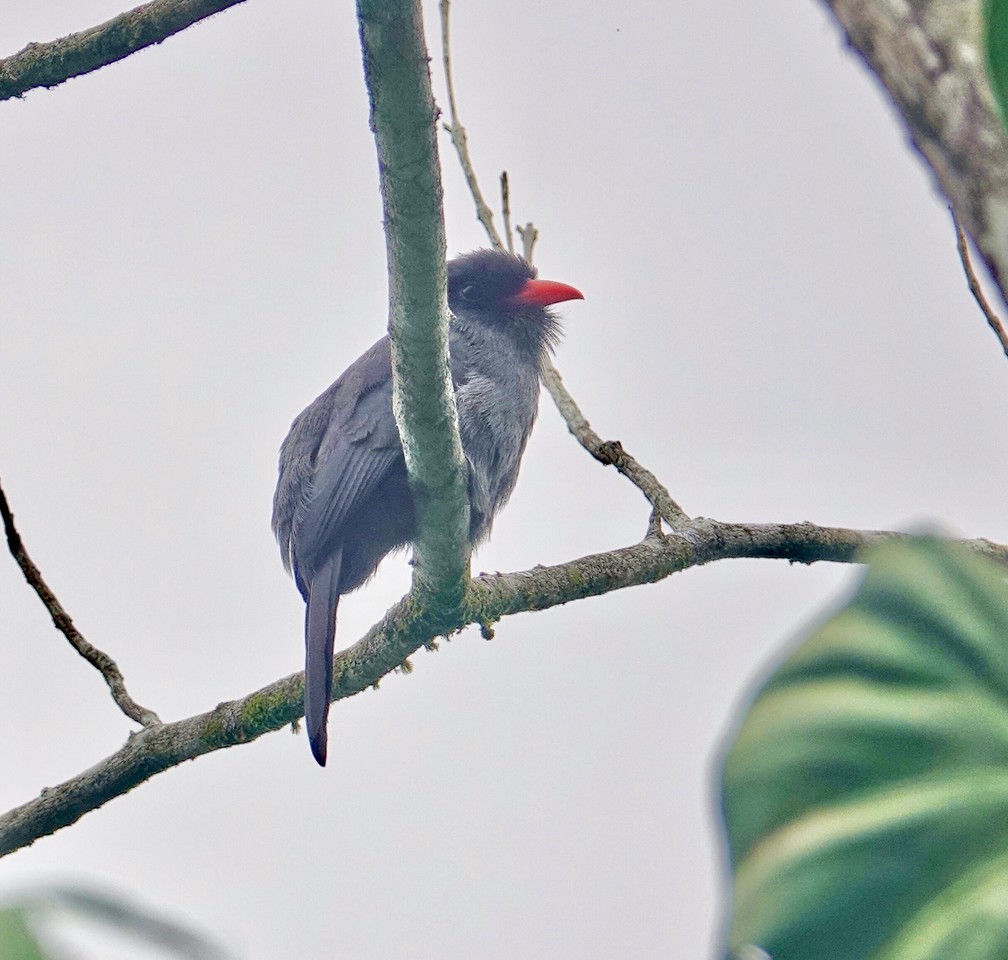

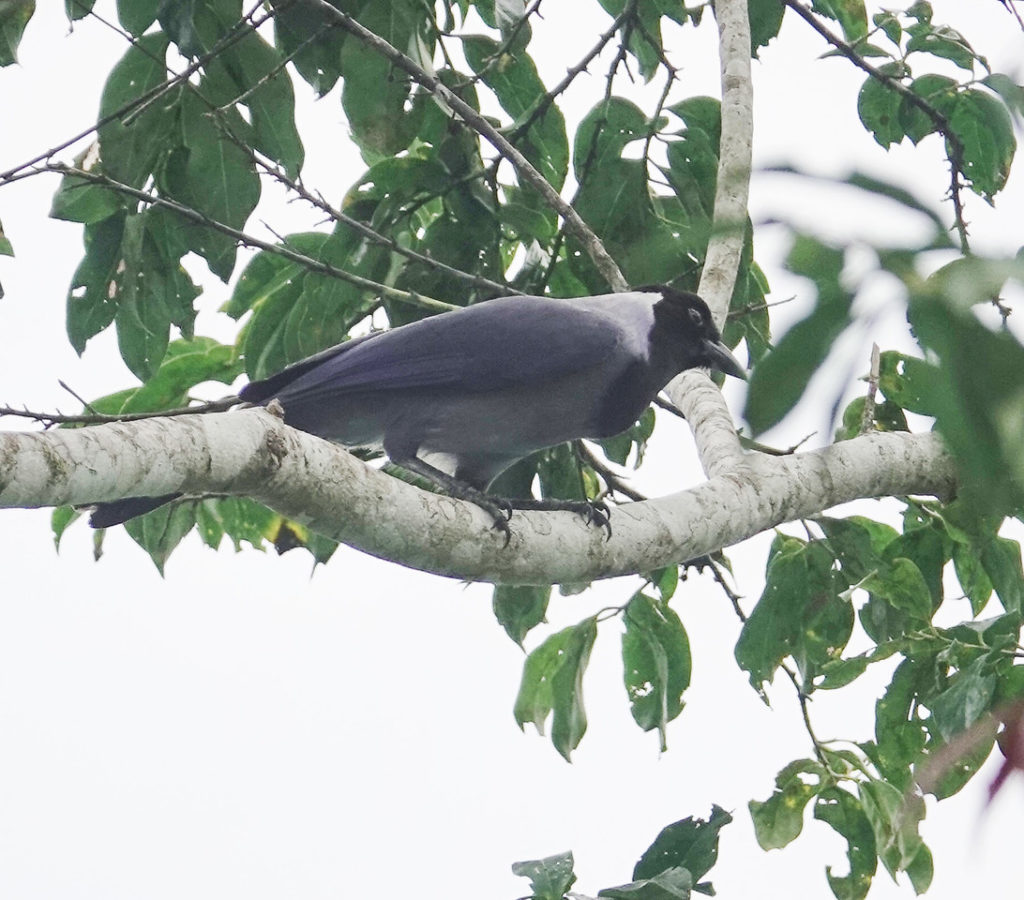
While watching for the Tinamous and Wood-Rails our guide, Yonatan Puma, mentioned that he was developing a small hummingbird garden on the other side of the river and a few hundred feet higher that attracted some interesting hummers which did not regularly appear at Villa Carmen. We spend a few hours with him late one afternoon, sitting on a rustic bench and enjoying the hummingbirds. Again, low light levels brought the Sony’s Anti-motion Blur Mode into play.
We spent our last full day on the Manu Road walking down the section above Cock-of-the-Rock Lodge again…in search of some Cloud Forest species we had not yet seen. We got a few good birds, and a few better looks at birds we had ween before…including a Cock-of-the-Rock foraging away from the lek. And, we had a great show of butterflies.
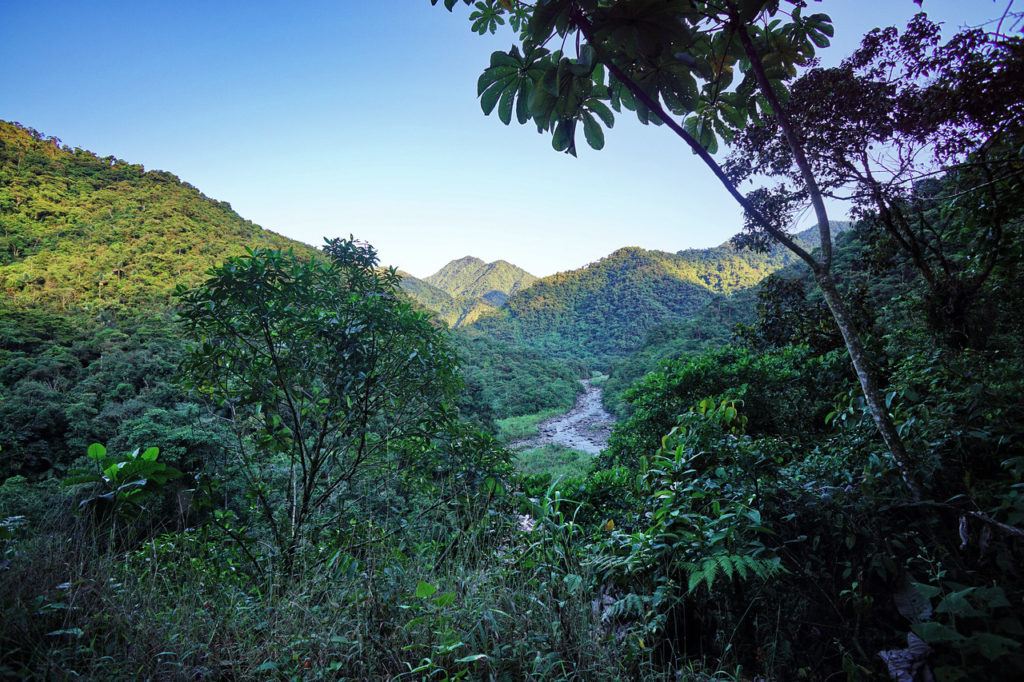
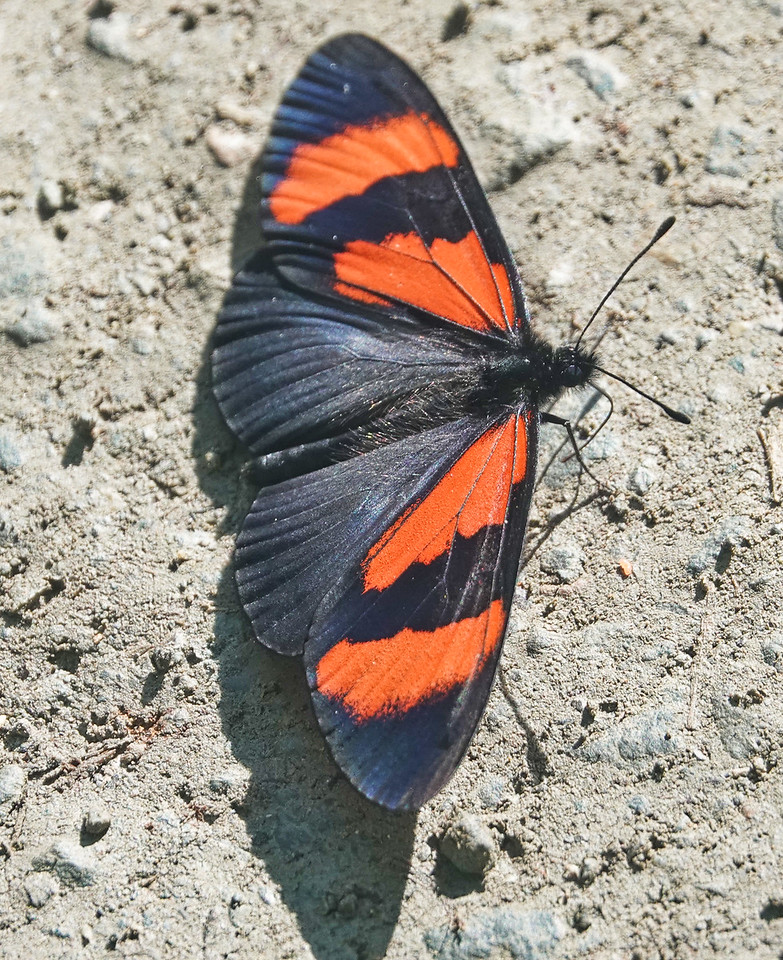
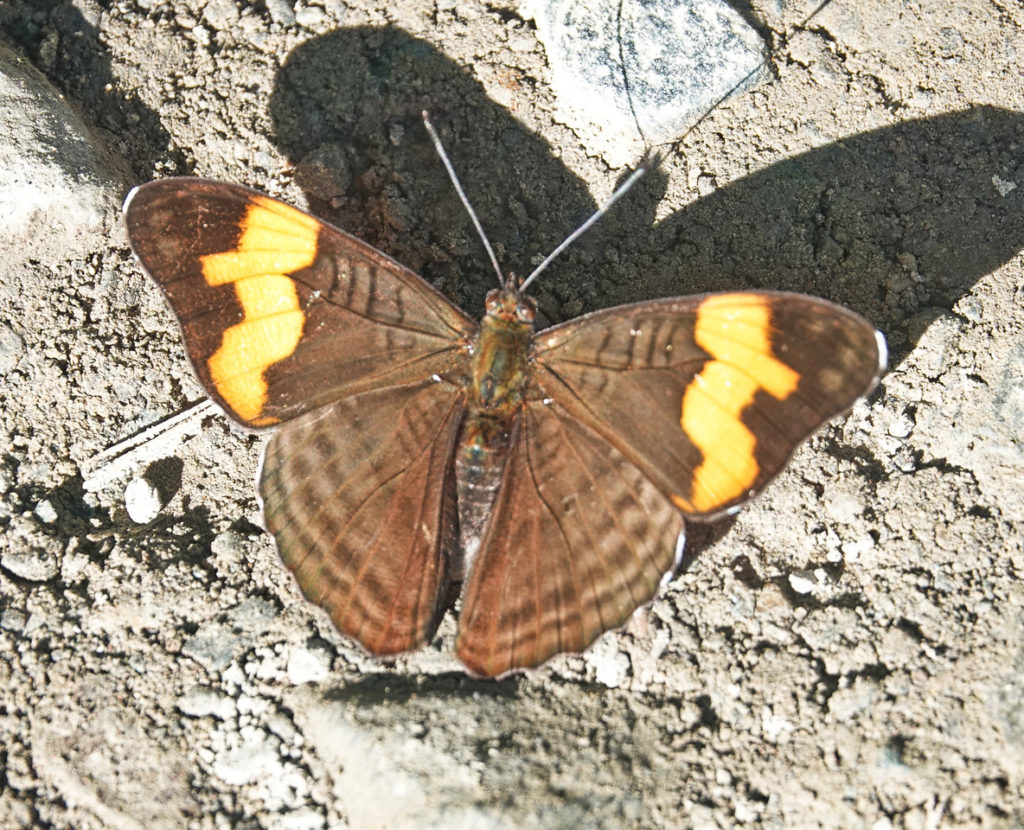
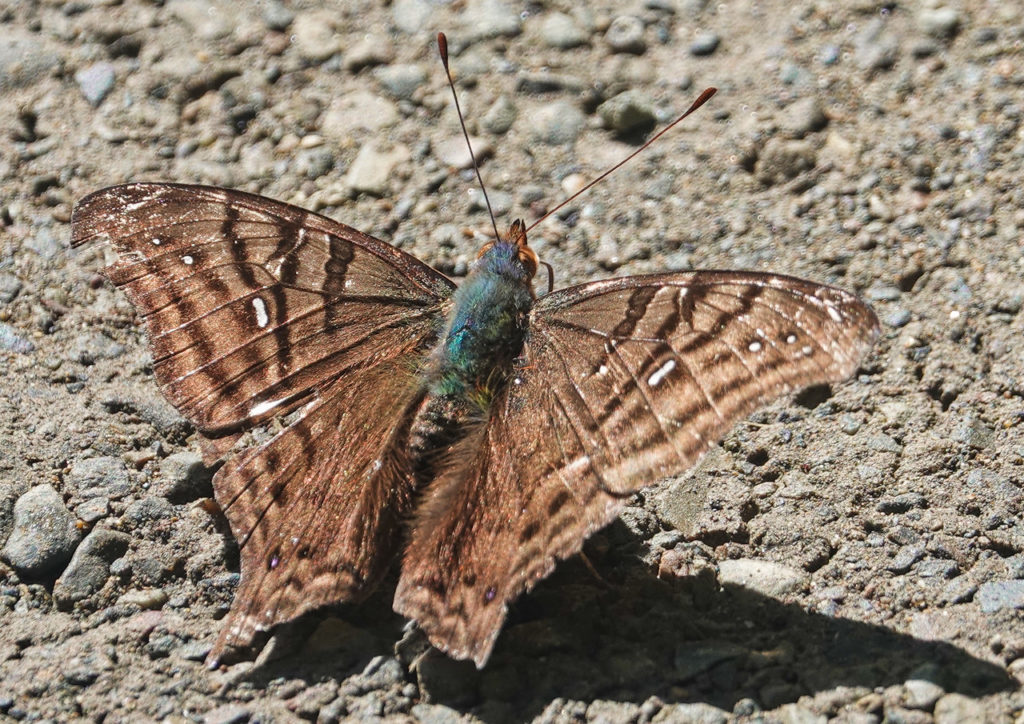
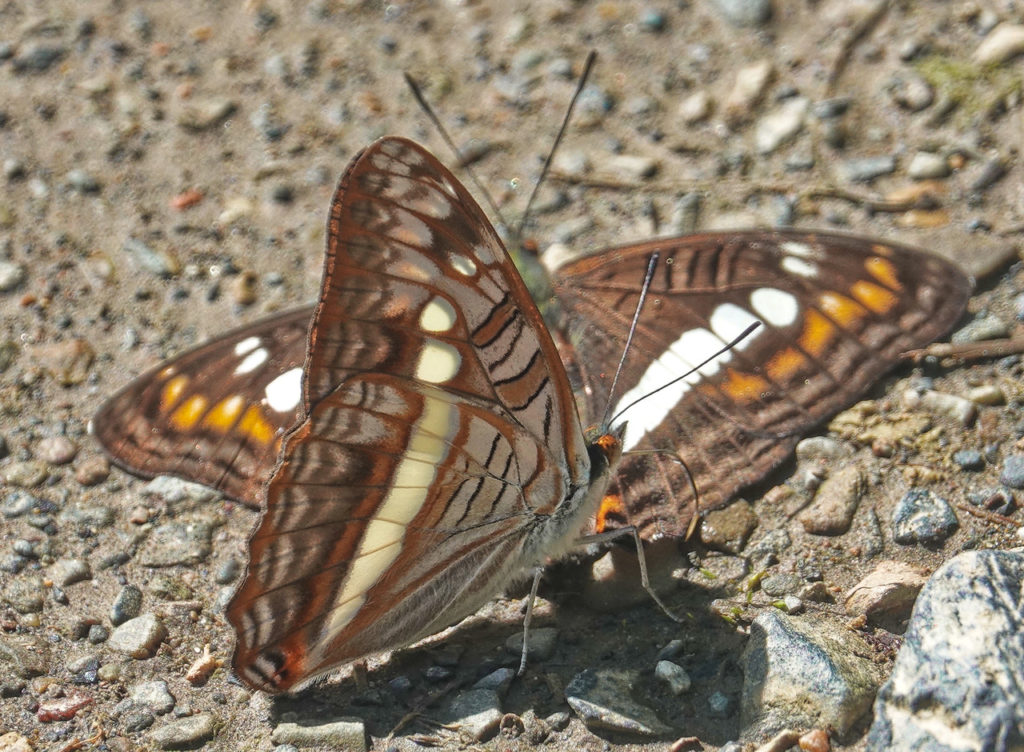
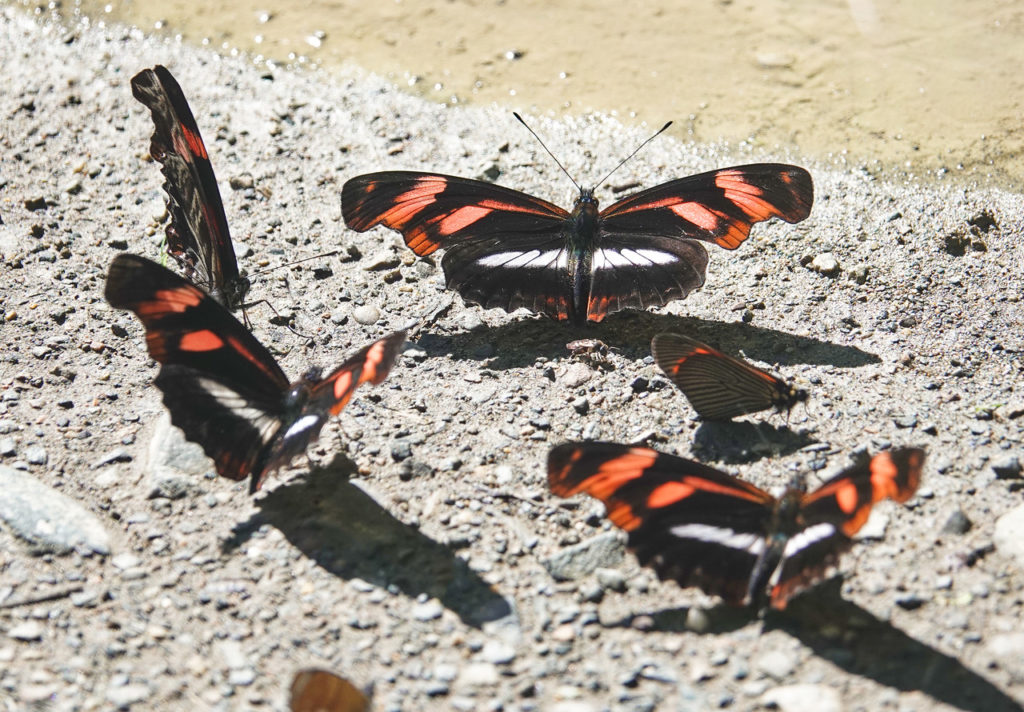

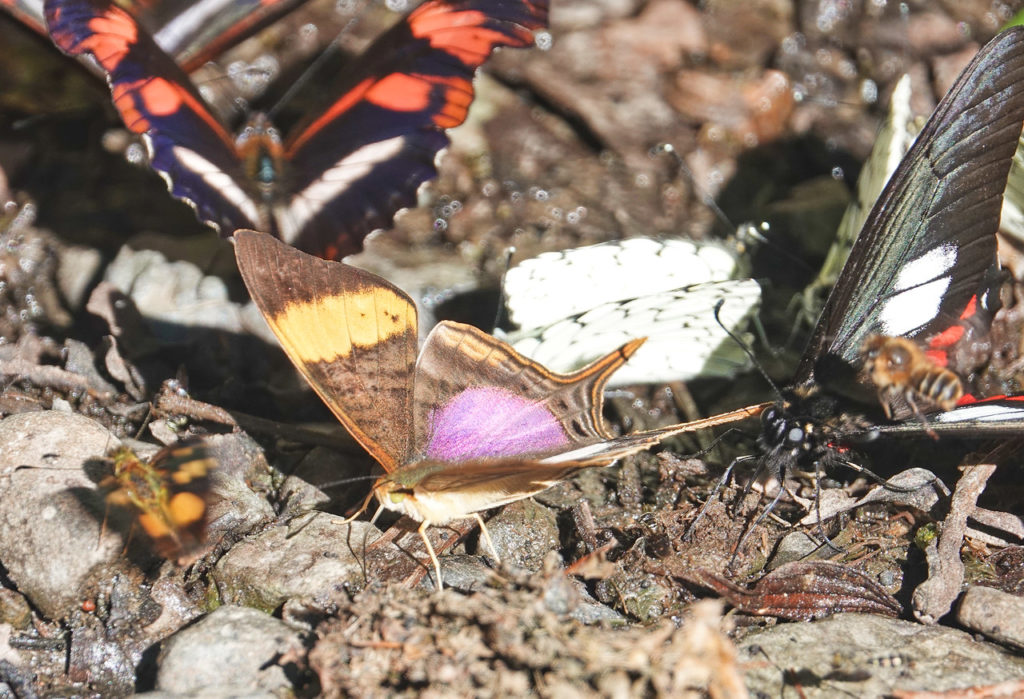
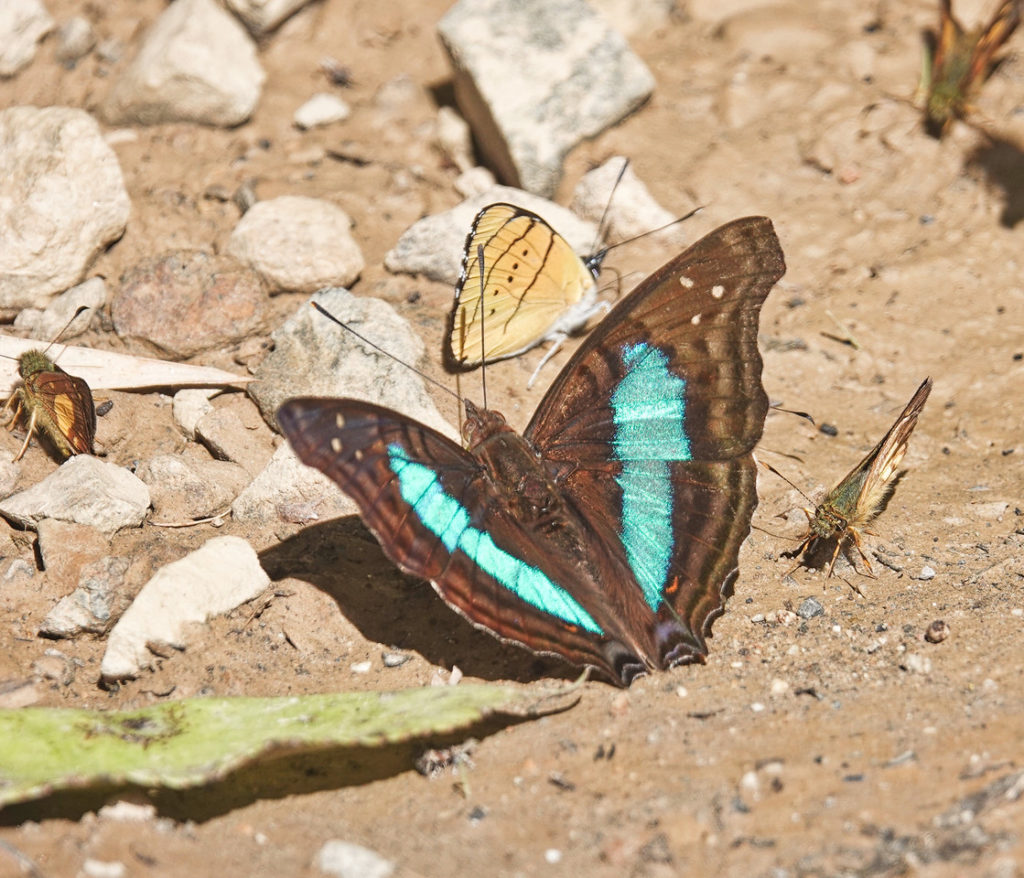
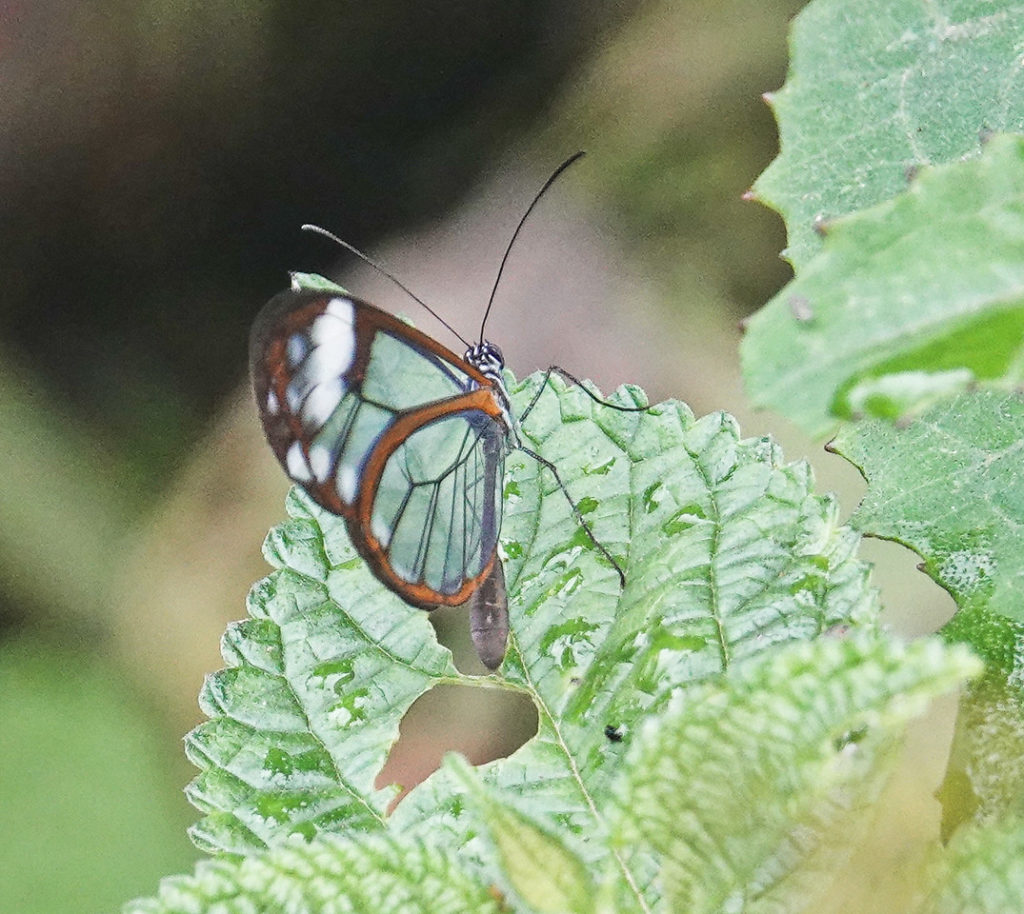

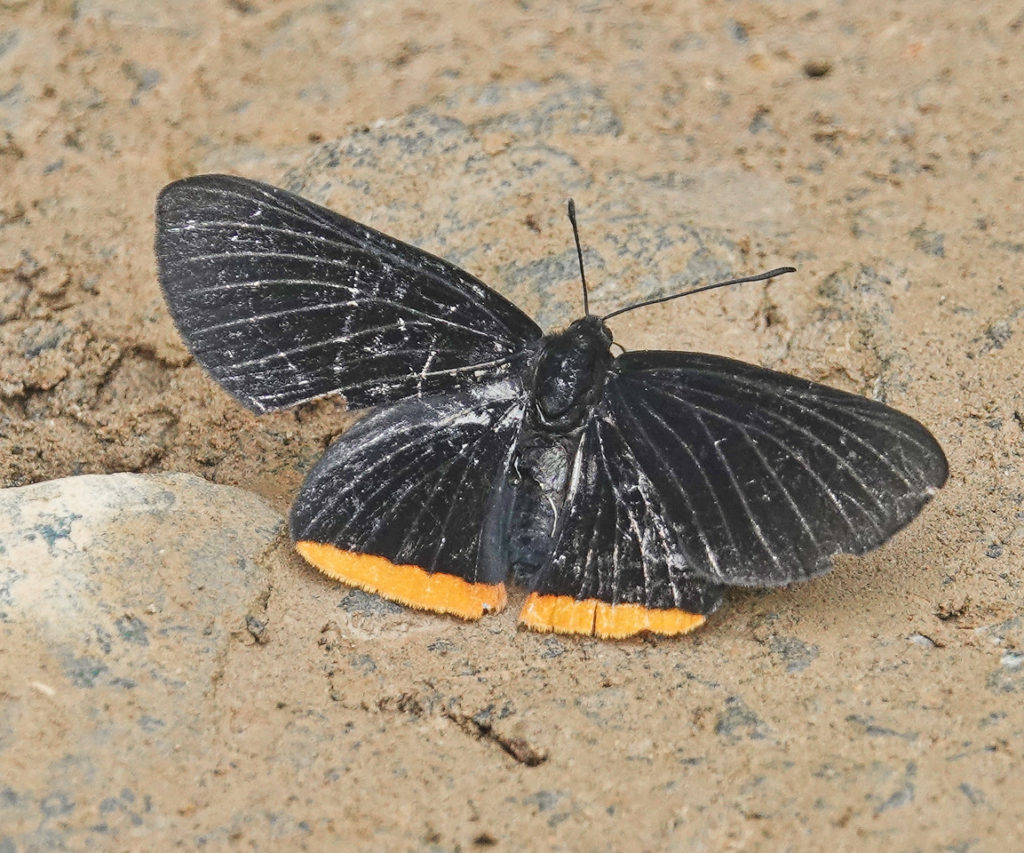
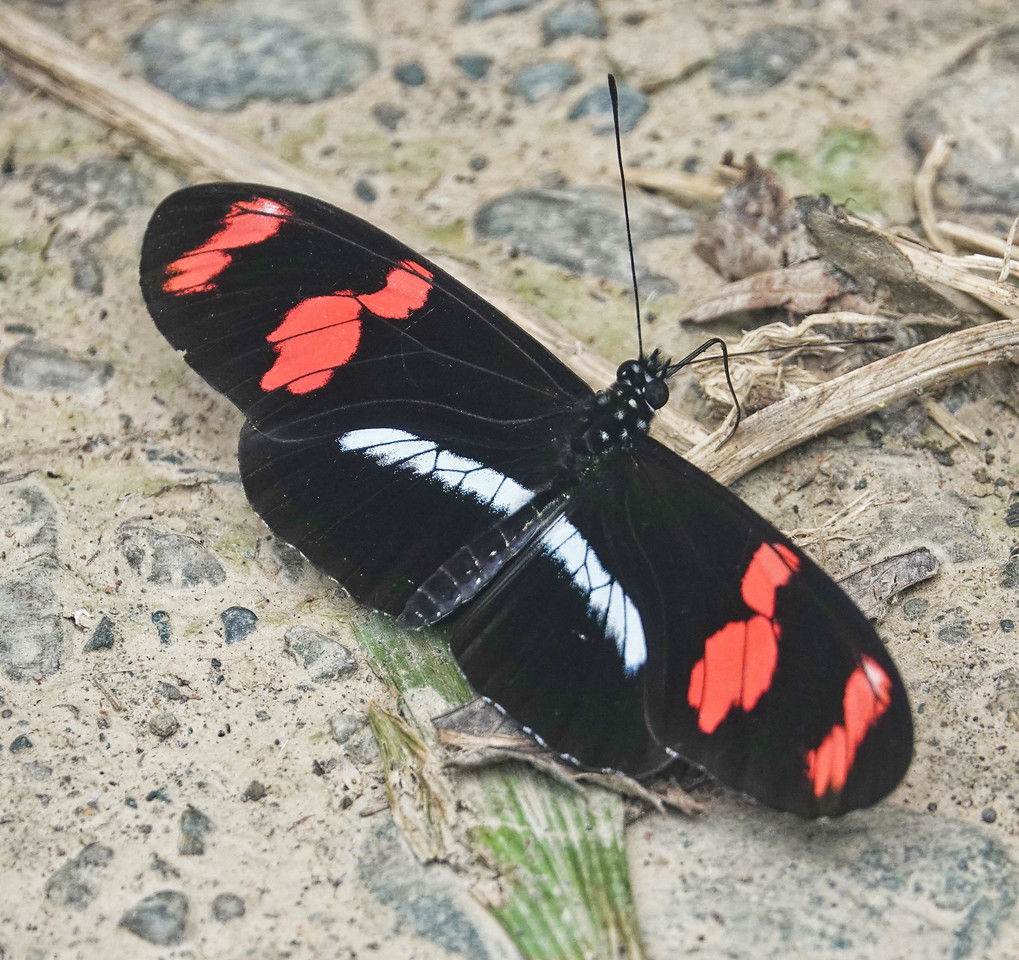

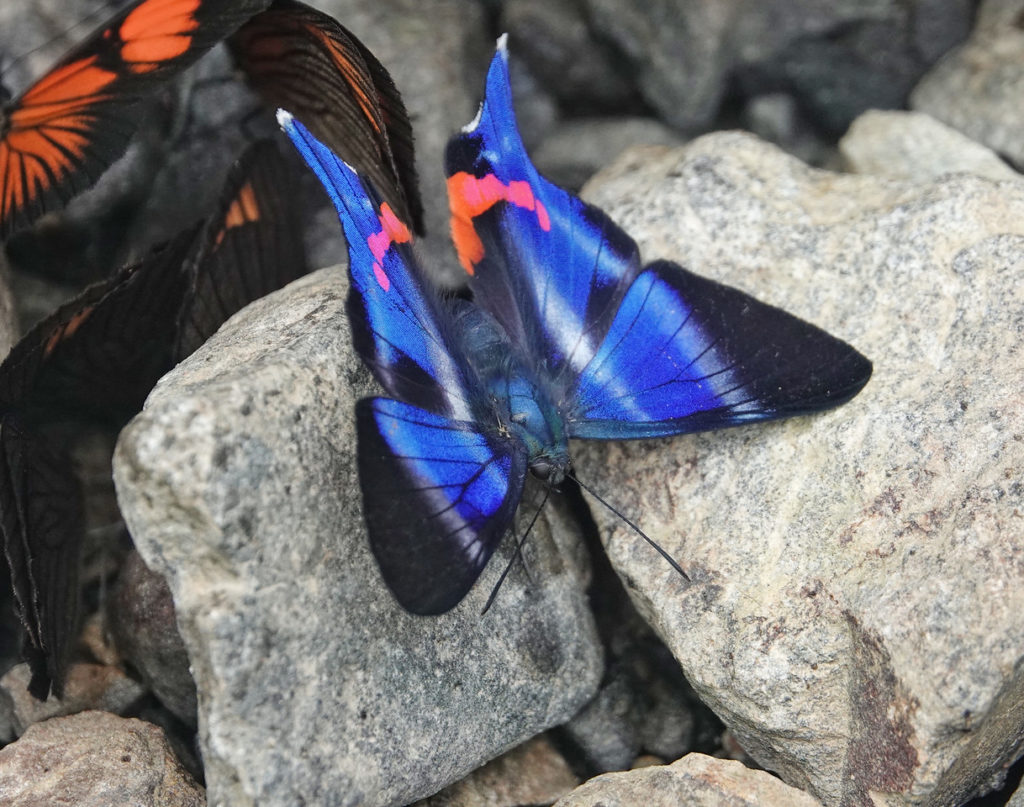
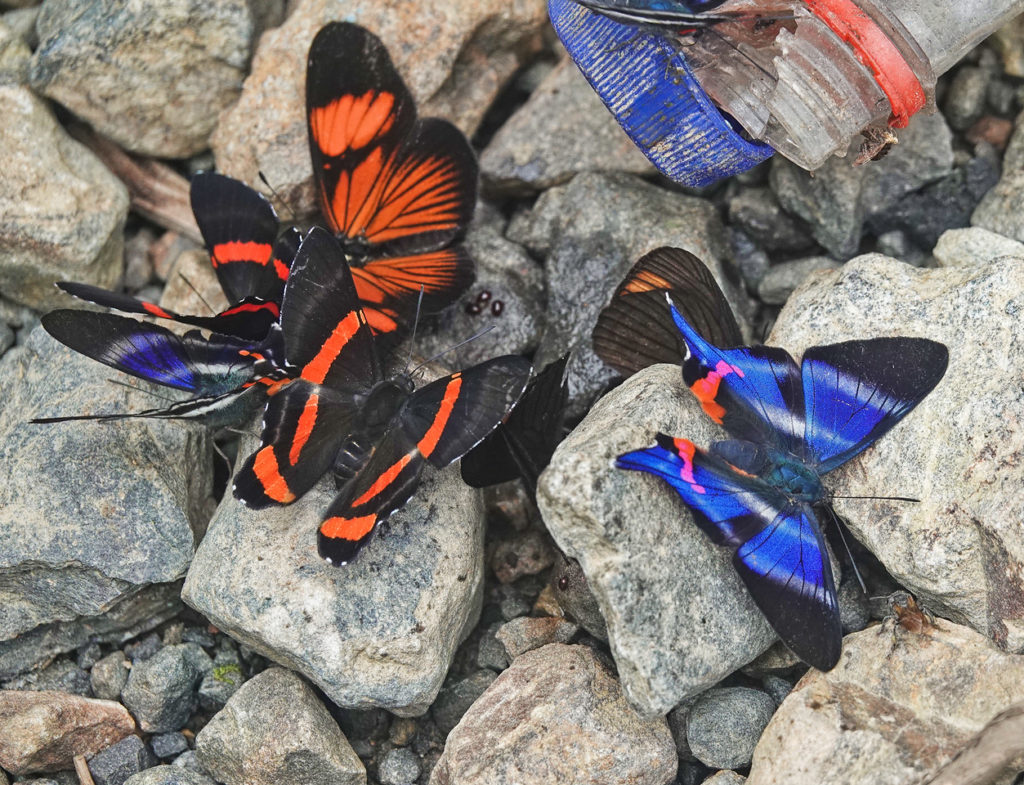
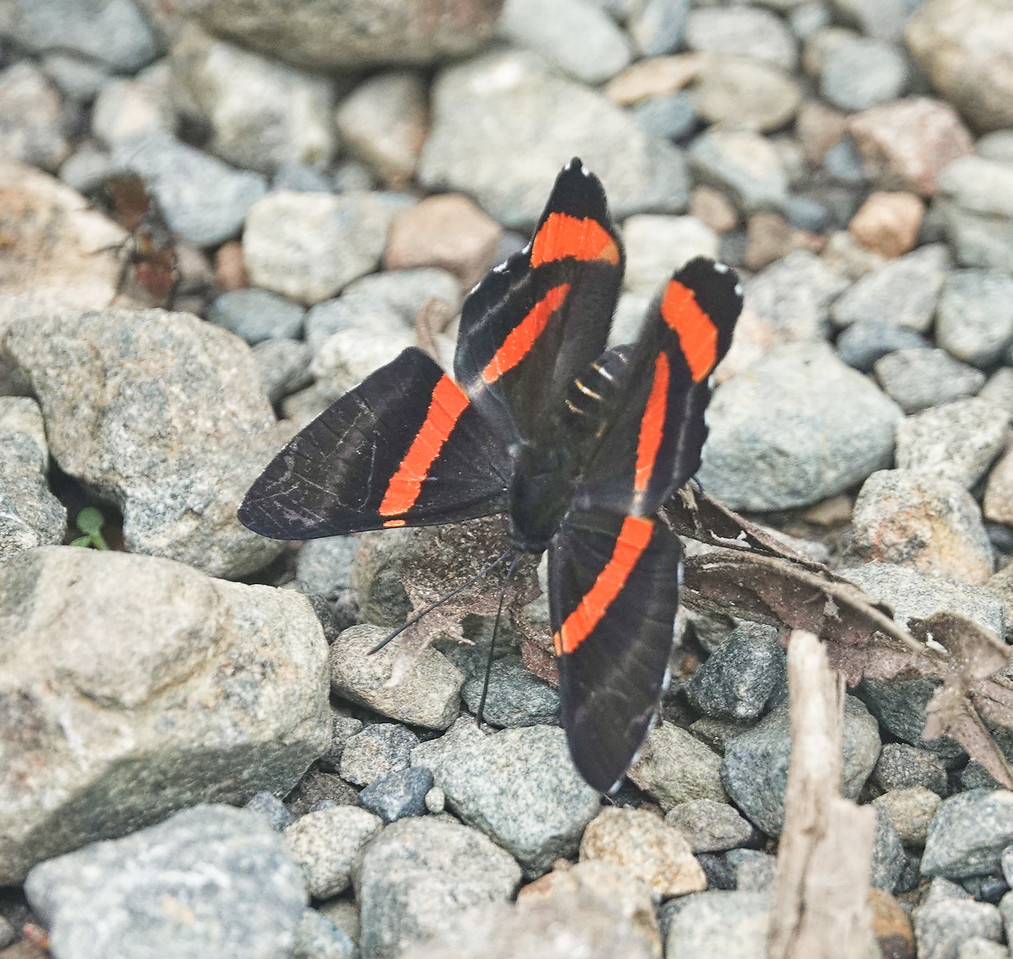
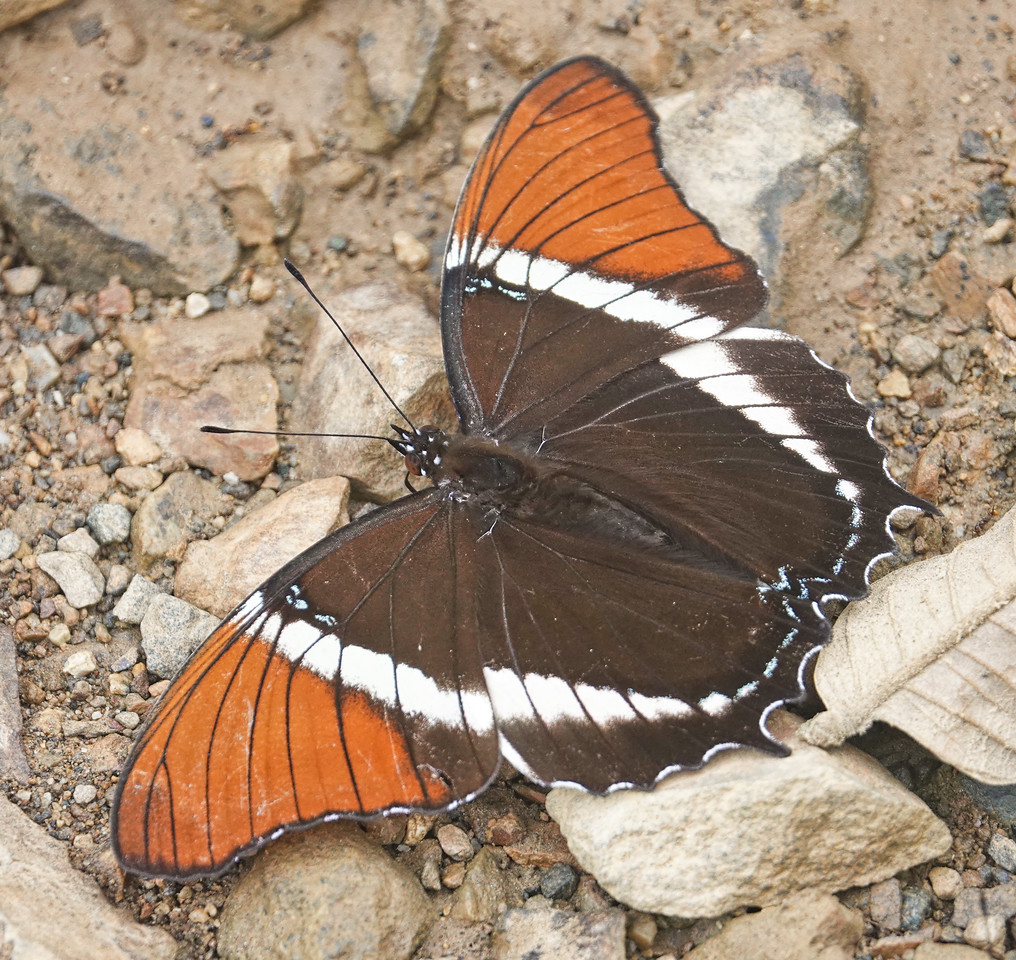
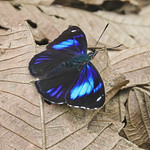
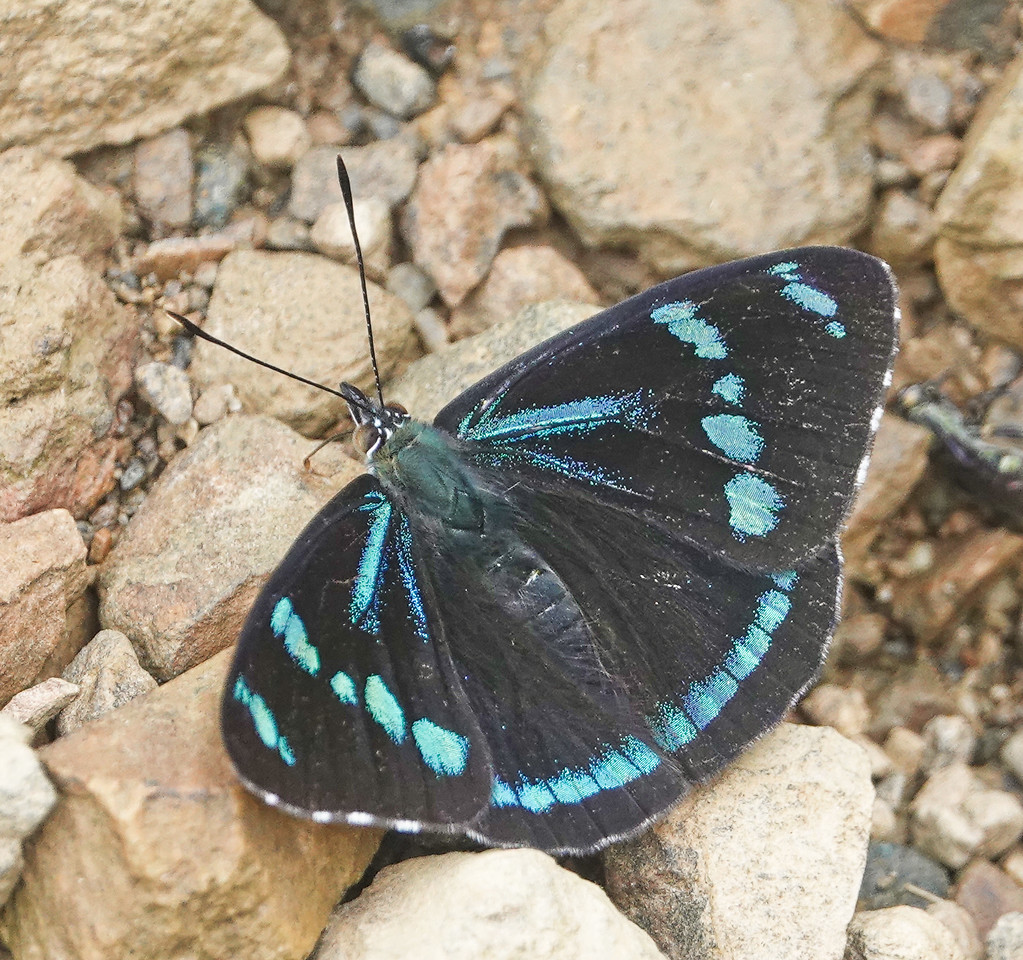
Almost back to the lodge we stopped for some good lowland birds along the road.
On our last day on the Manu Road, on the drive back to Cusco, we only stopped for good birds, but the Manu Road had saved one of the best for last. On a tight turn near a big waterfall we came upon several van loads of birders, all looking at a Grey-breasted Mountain Toucan. We had been looking for this bird every day for 7 days, and here it was!
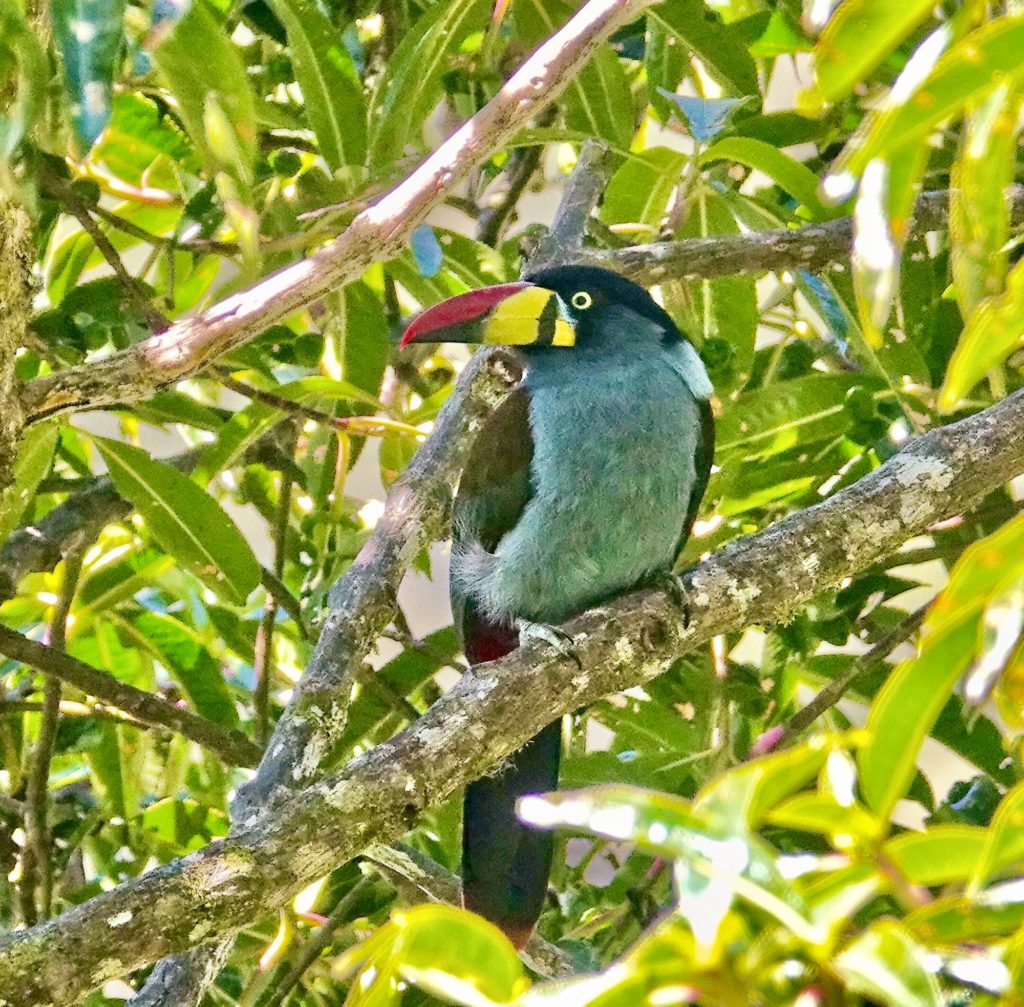
And that is the way it is on the Manu Road. You never know exactly what you will or will not see, but everyday you spend there you can count on great birds, great butterflies, and great scenery.
For more information on Wayqecha Biological Station and Birding Lodge, Villa Carmen Biological Station and Reserve and Amazon Journeys, visit Amazon Journeys.
In September, 2018, I traveled to Kenya with my Sony RX10iv for 12 days in the Parks and Refuges, photographing wildlife, birds, and landscapes. It was an amazing journey, which I made into a book. I have posted it here as a PDF, for your viewing pleasure. It will take a few moments to load.
On Safari: Kenya. On Safari Kenya
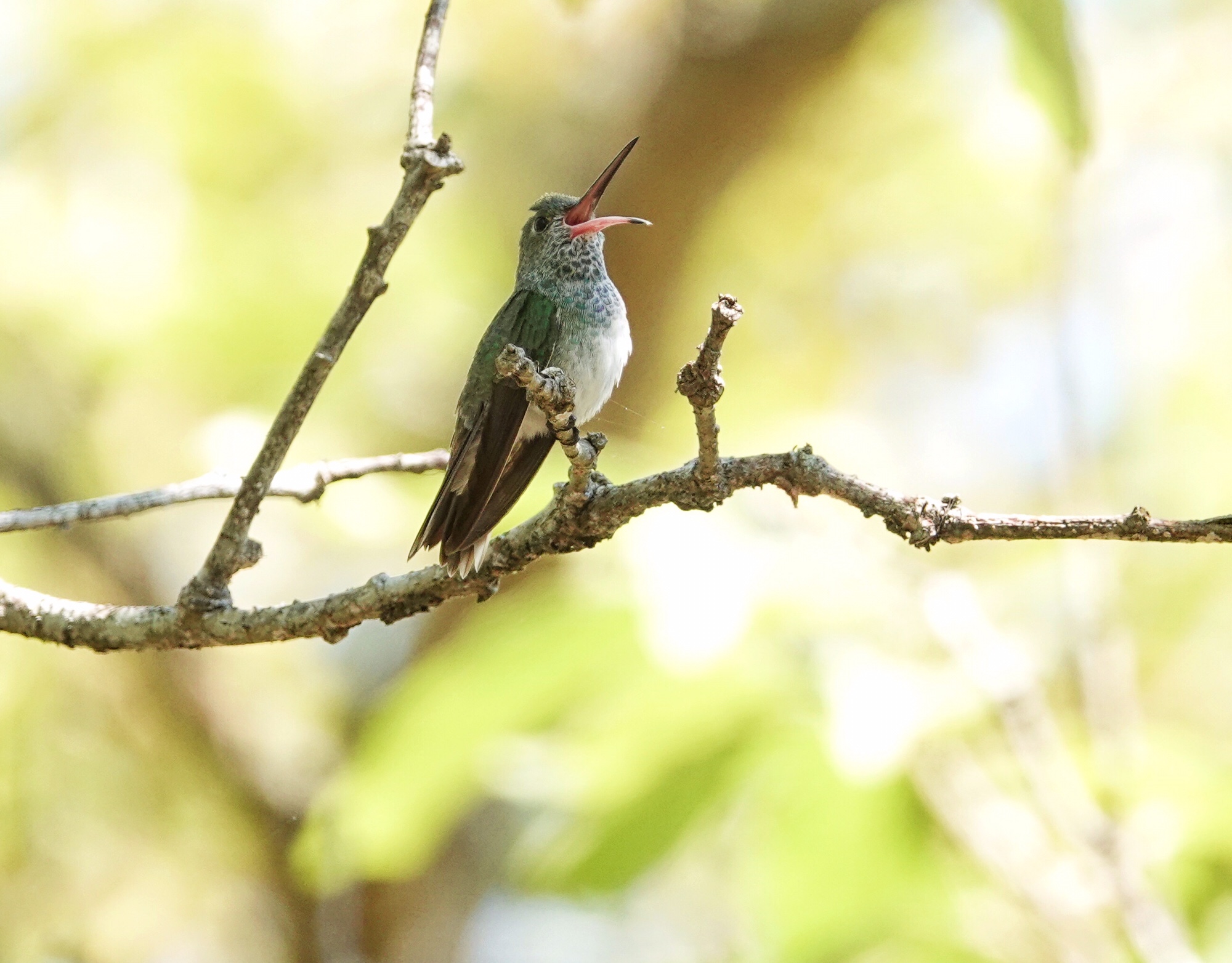
Last September I began to plan a kind of “grand tour”, birding and photographic, of Honduras. I wanted to see some of the places I had not seen yet in my 7 trips to the Lodge at Pico Bonito, two of which also included a few days at Panacam Lodge in the highlands near Lake Yojoa. The Lodge at Pico Bonito is, without doubt, the best known birding destination in Honduras, and wonderful place to base a birding tour. But it is not the only place worth visiting by far.
My tour was arranged and sponsored by Honduran Birds and its owner Alex Alvarado, and scheduled for May when Alex would have time for me. I had met Alex on my short extensions to Panacam in the past, and knew him to one of best birders in Honduras. What I did not know was that his company, Honduran Birds, provides guiding and logistics for just about all the major international birding and nature tour companies when they visit Honduras. If I listed the tour companies he works with, it would read like a “who’s who” of international birding tourism. You might book a Honduran tour with a big name tour company, but aside from the equally big name company guide, chances are very good that your experience in Honduras will be provided by Hondruan Birds and Alex Alvarado.
Alex met me at the airport in San Pedro Sula when I got off my noon flight, and we drove to Copan Ruins. On the ride I reminded Alex that this was, at least in part, a photographic adventure…and that high quality images of a few birds were just as important as the number of species seen. I had with birded with Alex before around Panacam and I knew him to be very intense in the field. He assured me that he would adjust the pace to suit me. He planned to bring his own camera and concentrate on photography as well. He was as good as his word, and we enjoyed some great photo ops on the trip that would have tried the patience of a hard-core birder, but were ideal for me.
Due to road construction, we did not get the the hotel outside Copan itself until supper time. I stayed at the Clarion Hotel, while Alex drove back to his home in a near-by village. That evening I had my first experience with Mayan culture, as there is a small excavated ruins right next to the hotel property. A short walk took me back centuries, and I enjoyed wandering the paths through the excavations. There was a guide there, but as there was no real overlap between his few words of English and my few words of Spanish I had to rely on the by-lingual interpretative signs.
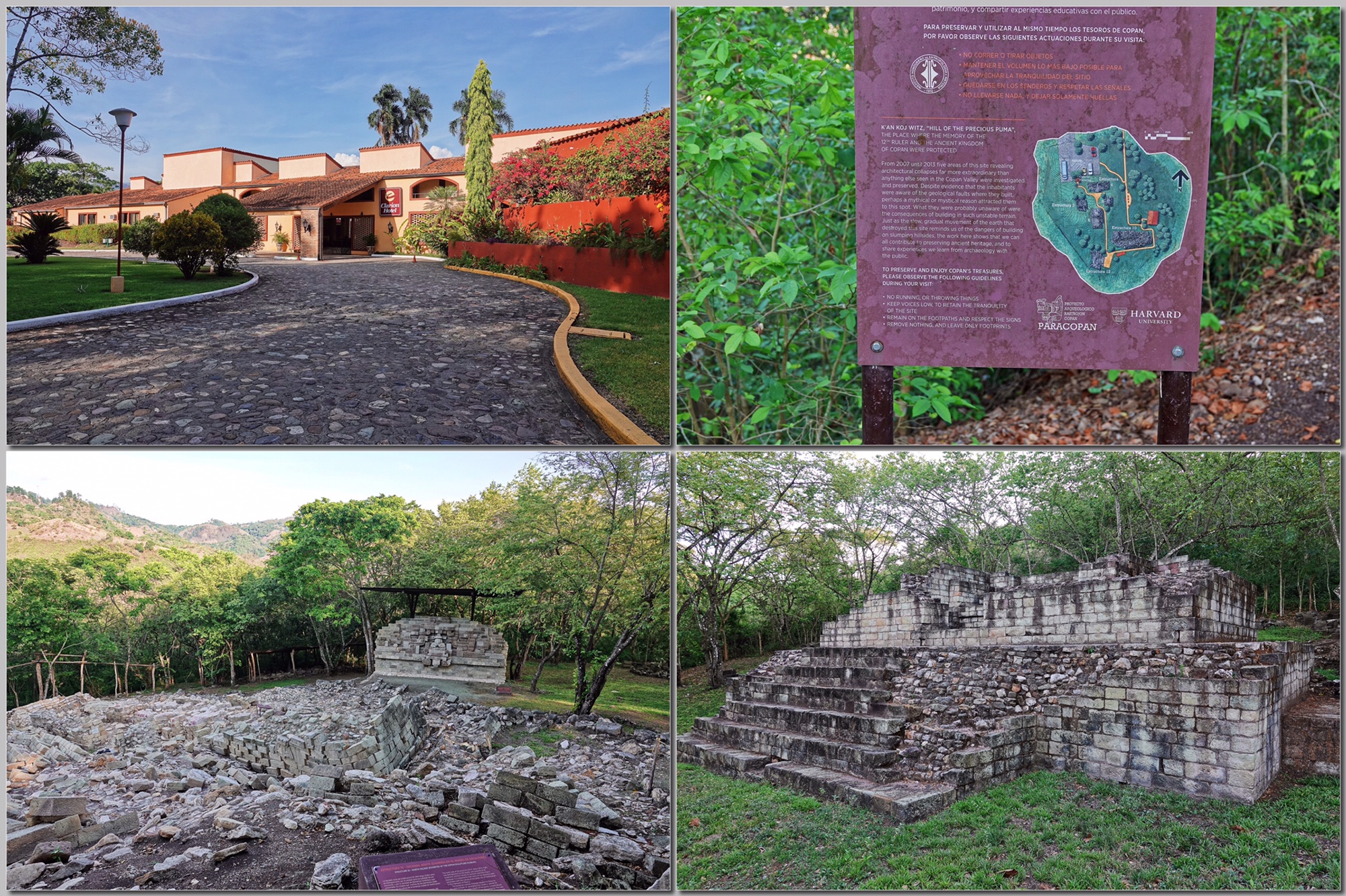
The Clarion is the least expensive of three hotels that Alex uses in Copan Ruins. It is modern, with comfortable rooms, a great restaurant, and extensive grounds. If you are more interested in birds and photography than in luxury accommodations, but demand a nice surrounding and comfort, then the Clarion is the choice for you. I should say that May is the “low season” for hotels (and birding) in Honduras. The first night I may have been the only person staying at the Clarion, though the second night there might have been one other guest. I ate alone in the excellent restaurant each morning and night…though the full menu was available and the service was excellent. (http://clarioncopan.com/)
I also got my first bird of the trip on that walk at the Clarion. The very wide-spread Lesson’s Motmot sat on a limb in the dark under the canopy, with brilliant blues and its long bobbed tail feathers trailing, and let me take a few pictures. It was especially dark as evening was coming on, and my first photos of the trip demonstrated one of the major challenges of photographing birds in the forests of Honduras and all of tropical Central America. Light! Too often, there is just not enough light. I shoot in Program and auto ISO and my ISO was pushed right up to my practical limits at 6400. A one inch sensor camera like my Sony RX10iv does not have the same image quality at higher ISO as today’s full frame DSLRs, but all in all, considering that I, at my age, would not carry a full frame DSLR and a 600mm f4 lens in the tropics (or anywhere else), I am happy with the results the Sony brought back…even in extreme low light conditions. And, I was very pleased that the Sony was able to auto focus even in the lowest light.
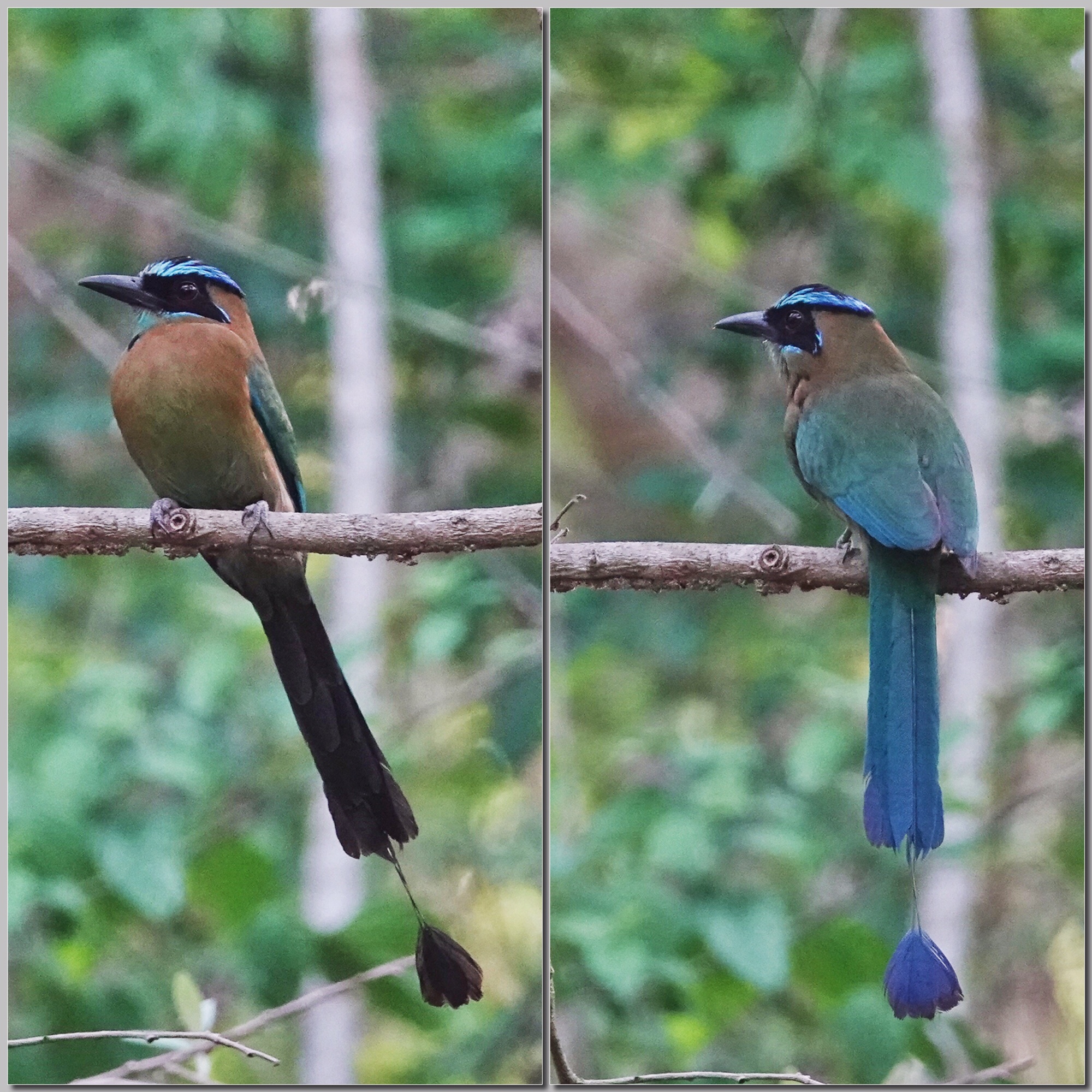
The next morning Alex picked me up for the short drive to Copan Ruins. Copan is the major Mayan site in Honduras, and a particularly fine example of Mayan ruins…full of amazing carvings and buildings on grand scale. It is, of course, worth seeing in its own right, but for a birder and bird photographer, the main attraction has to be the Scarlet Macaws. The Scarlet Macaw was important in Mayan culture and religion and is featured in many of the carvings at Copan. It was clearly common in the area in Mayan times, but it has died out in modern times. The Macaw Mountain Bird Center in the hills above Copan Ruins pioneered a reintroduction program, with chicks raised from pairs of Macaws rescued from the pet trade. These birds were released at Copan Ruins and successfully nested on the grounds and raised chicks of their own. The free-flying, wild population has grown to over 40 individuals now, and the birds are spreading out from the Ruins themselves to recolonize the hills around the city. It is a great reintroduction success story.
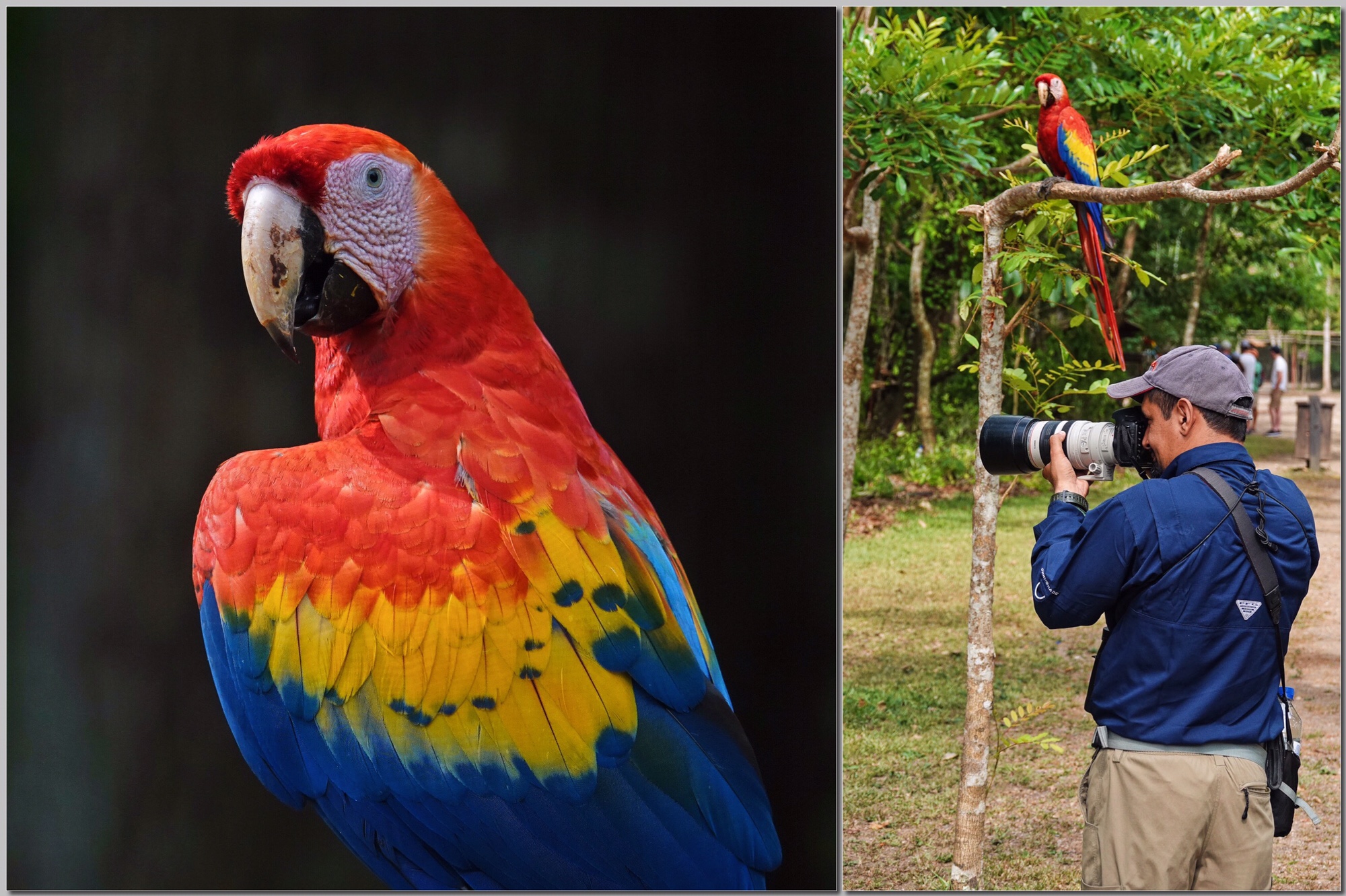
They still provide feeding platforms for the Macaws at the Ruins, and put out fresh fruit every morning. There are few experiences in the world as fine, for the photographer or bird lover, as standing among the feeding platforms just after 9 AM, surrounded by 40 Scarlet Macaws.
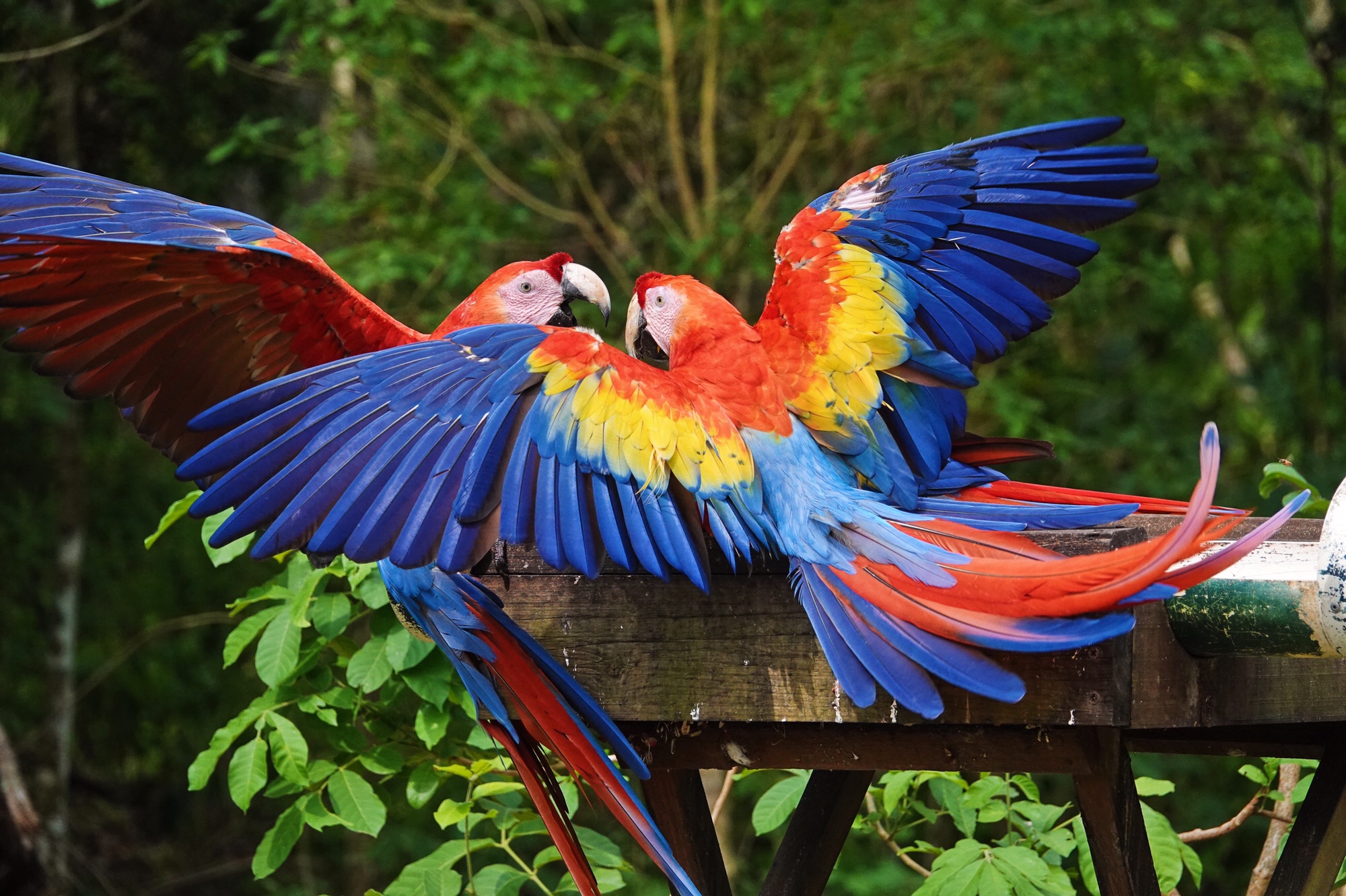
The Macaws pay no attention to humans. They are too busy competing with each other for the fresh fruit. They are especially avid during nesting season, when we visited, as many of them have chicks in the nest to feed. We had birds perched as close as 5 feet, and birds in flight all around us. Catching a Macaw in flight at close range is a real challenge. They are big and fast, and very hard to keep in the frame long enough to catch focus. I found that I could not follow them in the eye-level viewfinder on the camera. I resorted to extreme Point and Shoot tactics…simply pointing the camera in the right direction and shooting off a 10fps burst…hoping that 1) I had the birds somewhere in the frame, and 2) that the auto focus would lock on some of the time. Reviewing the images that night, it worked surprisingly well. Of course, it was a percentage thing…and would not have worded if I had had only one chance at flying Macaws…but with as many attempts as I made, some were bound to work. I came back from the morning with over 4000 exposures. 🙂
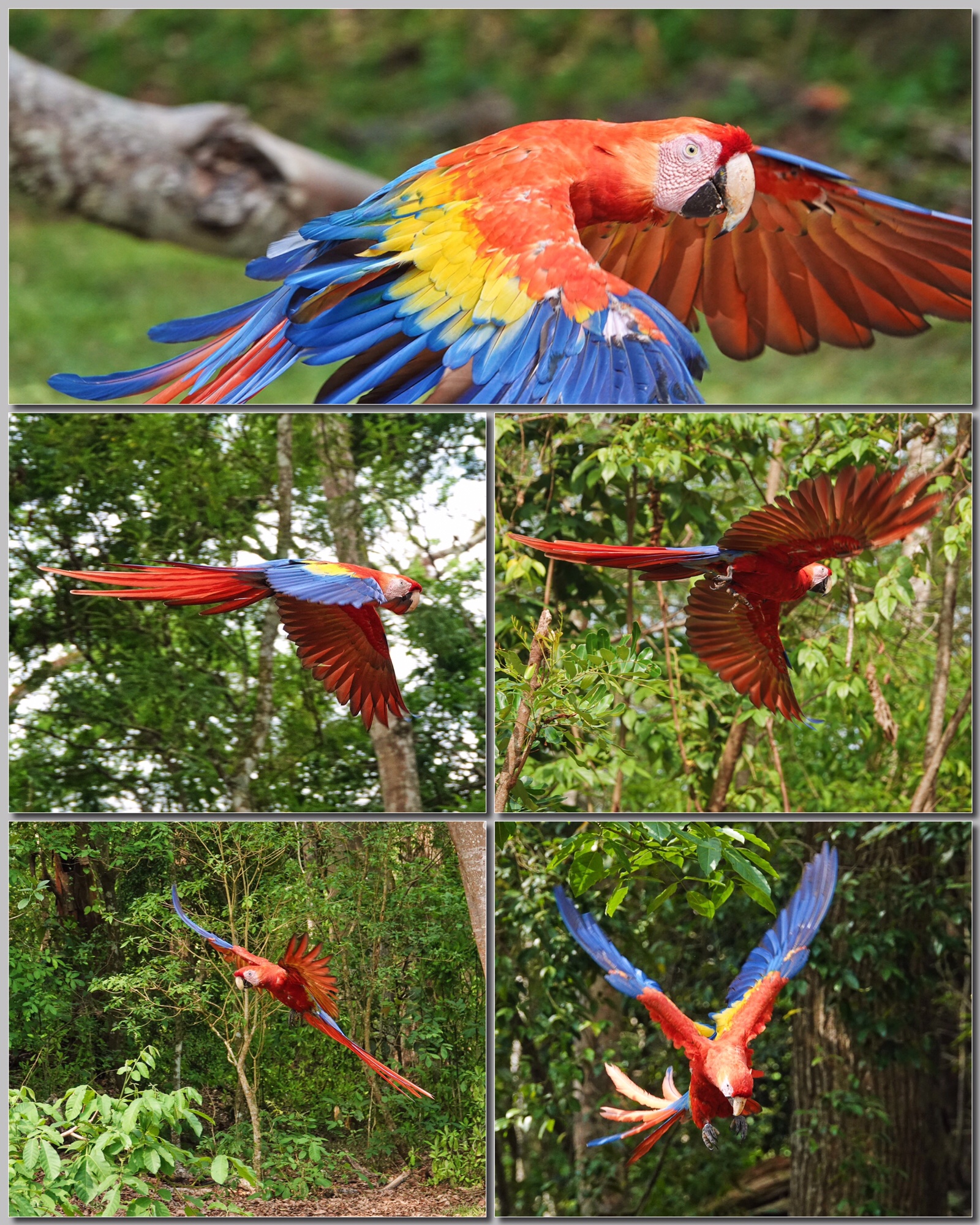
Of course we also found Macaws perched among the ruins, for some really classic shots of the birds on Mayan carvings.
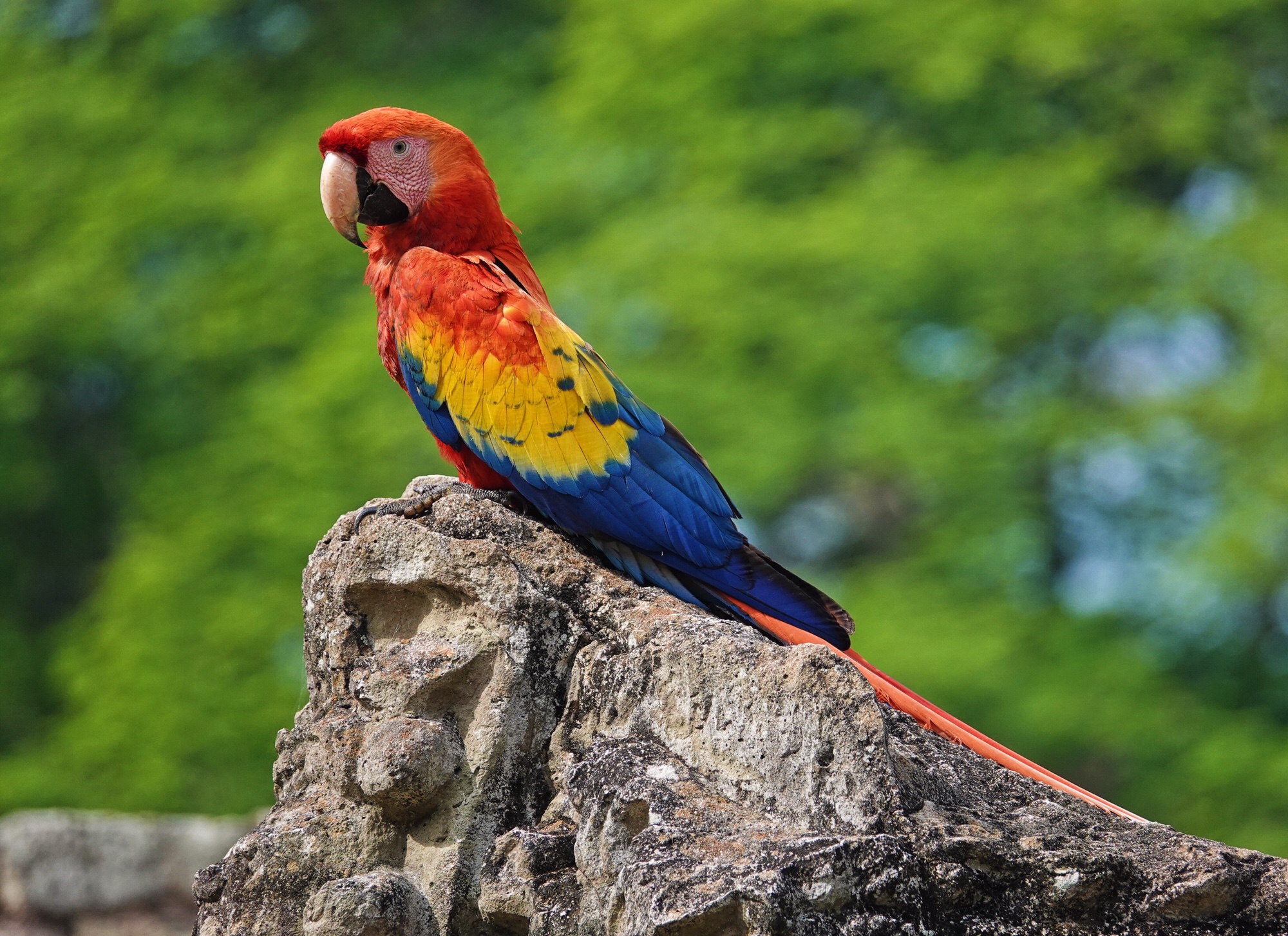
As we walked through the extensive grounds, Alex spotted a couple of workmen at ease in one corner of a ceremonial courtyard below us. He called down to them and they explained that they were “guarding” the nest of Turquoise-browed Motmot, where the adults were actively feeding young. They invited us to come down and we descended the steep step like wall of the courtyard and spent 45 minutes watching and photographing the Motmots. The nest was in a hole between two of the stones of one of the courtyard walls, under a massive tree that had sprouted generations ago at the foot of the wall. Male and female motmots were taking turns bringing bugs and spiders to the nest. We could not see the young, but the adults would land on a rock near the nest and then make a short direct flight into the hole. They would often sit in the branches of the overhanging tree right in front of us, before diving to the rock.
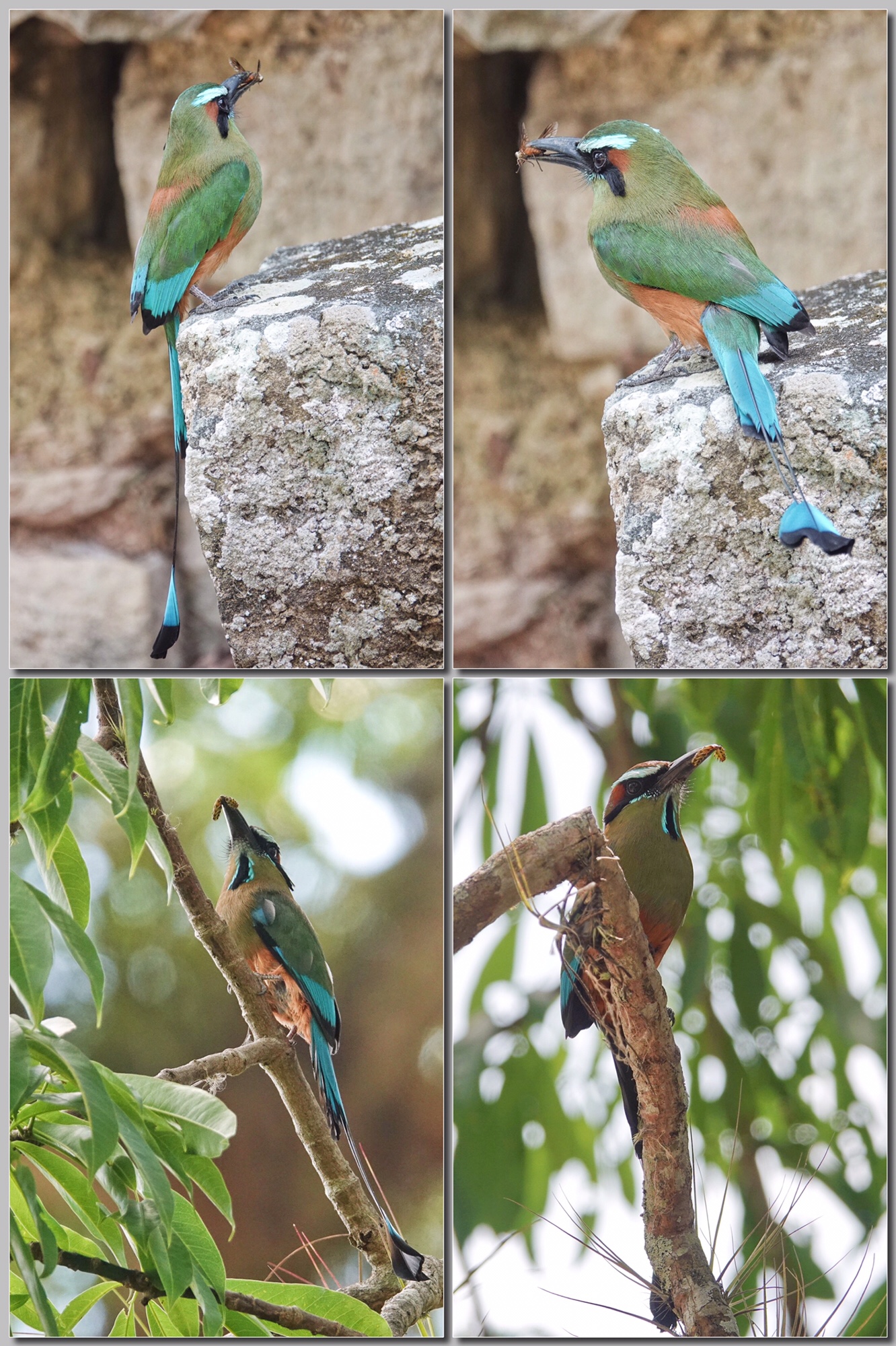
A little further on we found a nest of Boat-billed Flycatchers with 3 chicks.
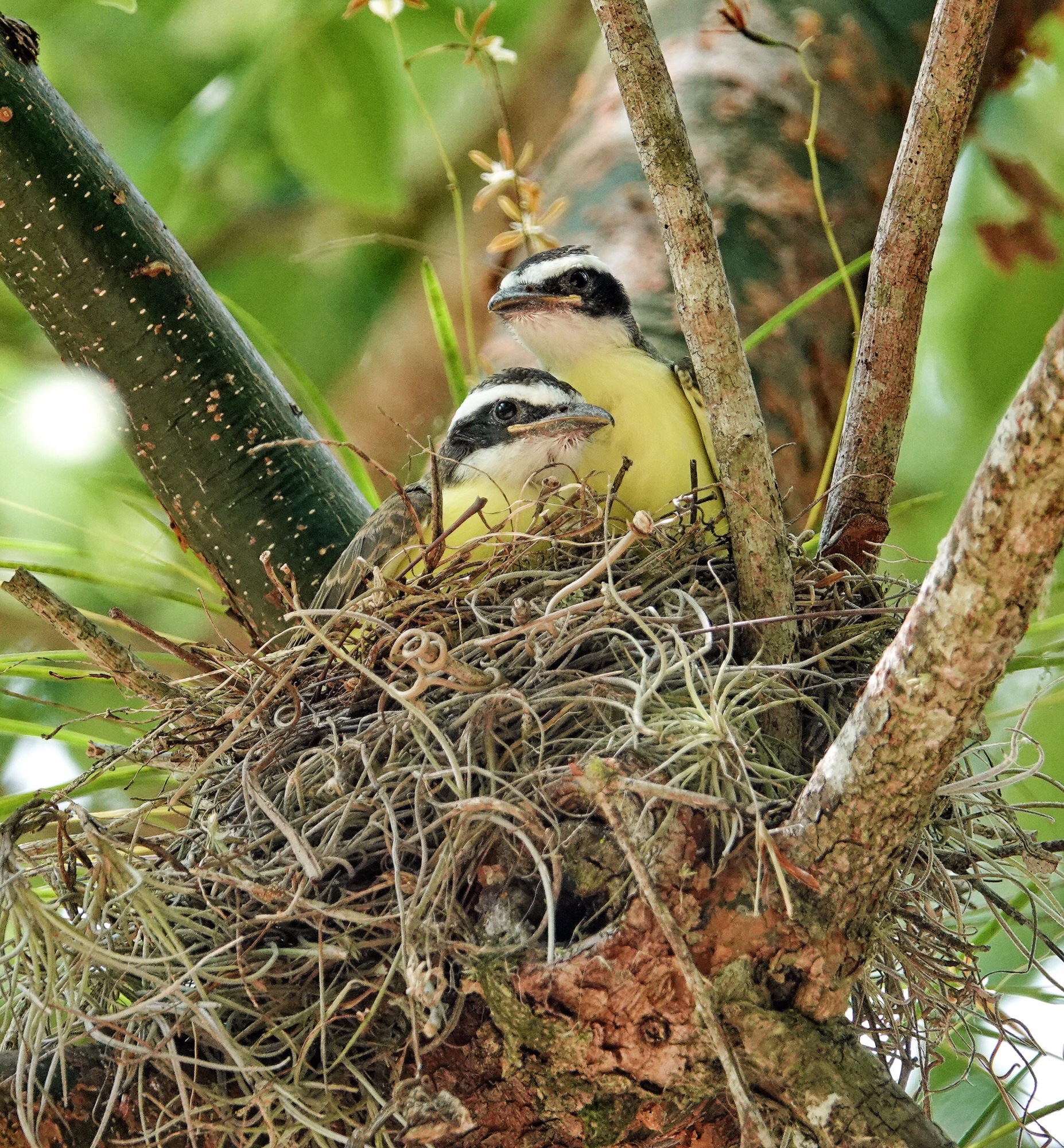
Of course the ruins themselves are worth seeing. Copan is has one of the best Mayan sites for sculpture, as well as having a wide range of buildings and courts.
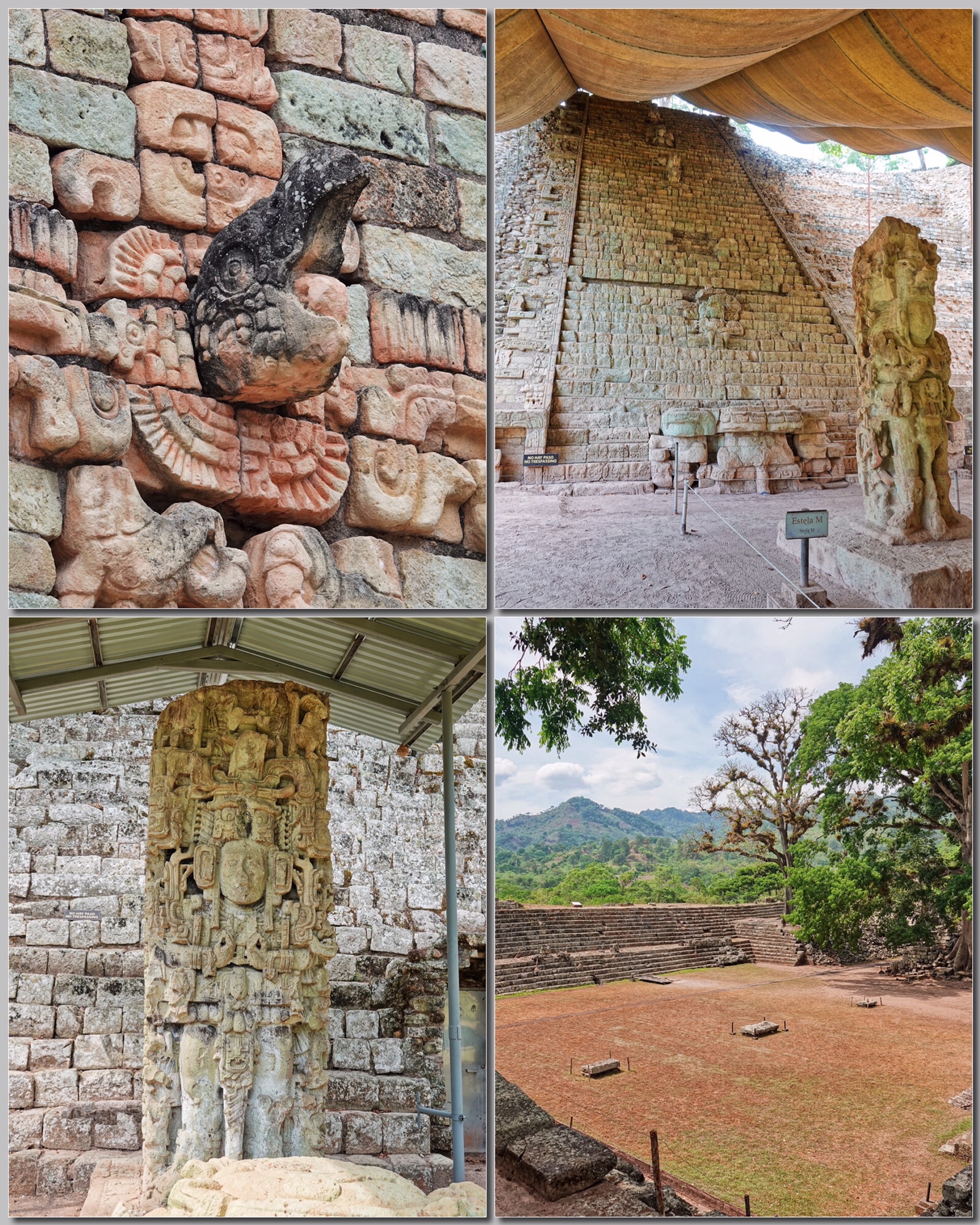
For those wanting a more luxurious stay, Alex also uses the Hotel Marina Copan in downtown Copan Ruins. We visited the Marina after a lunch of the local chicken speciality. The Marina has standard and deluxe rooms (both of which looked pretty deluxe to me) and small suites. The suites have hosted American Presidents and other dignitaries over the years. The grounds are small, but there is beauty in every nook, lush courtyards everywhere. In our short visit there, I saw orchids, butterflies, dragonflies, and a surprising number of birds (including a pair of Green Herons nesting in one of the courtyard trees). (https://www.hotelmarinacopan.com/)
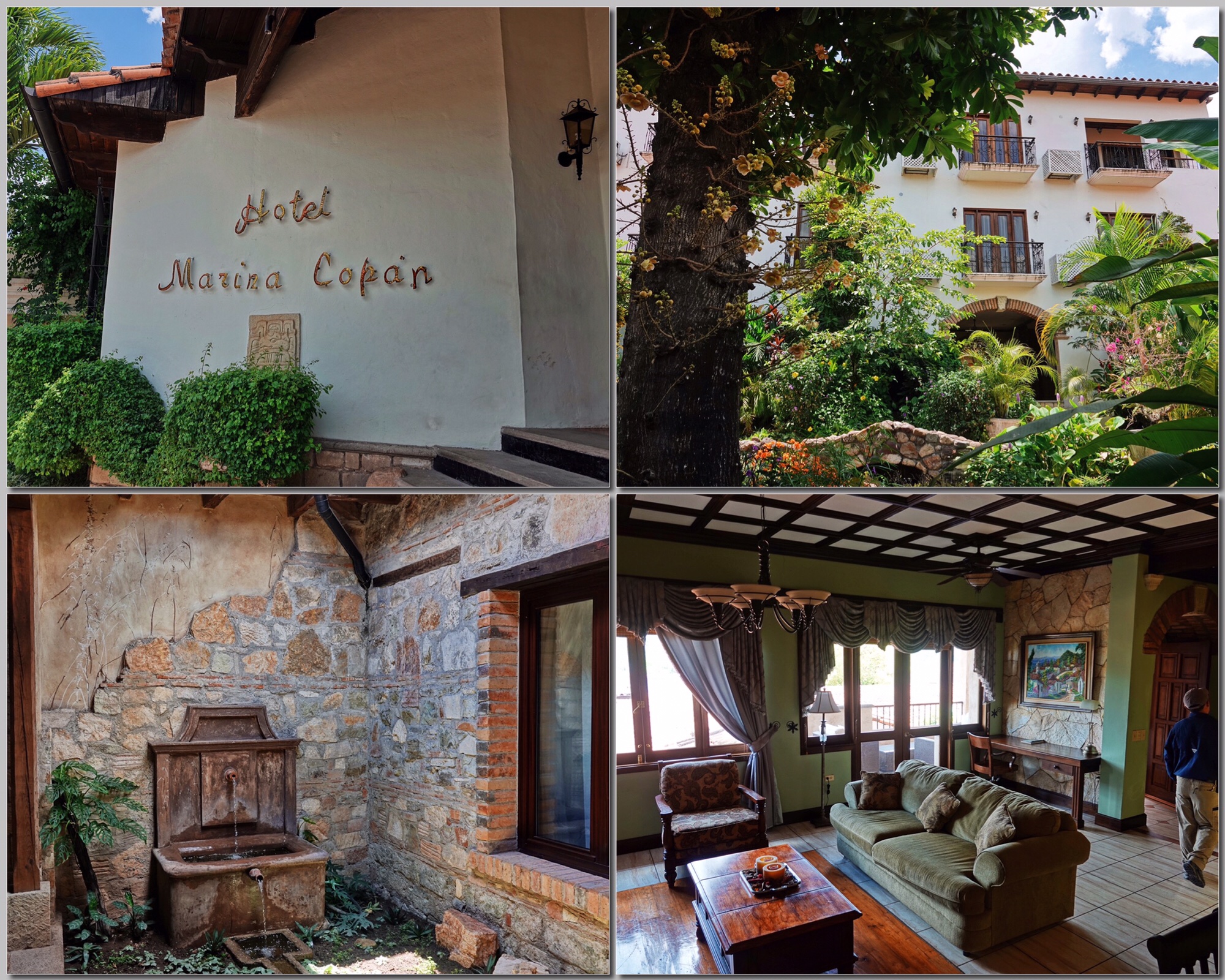
The final possible Copan Ruins accommodation is at lodge in the foothills above the city, Hacienda San Lucas. It is up a typically Honduran dirt road, rough by almost any standard, but the lodge itself is quaintly attractive, with a dozen rooms terraced up the hillside. It provides a more rustic, if completely comfortable, experience of Honduras, and the extensive grounds are home to all the typical birds of the foothills, including Magpie Jay and Elegant Trogon. They even have a nesting box for Scarlet Macaws and Macaws have started coming to the feeders there. The lodge, being smaller and more specialized, is the most expensive accommodation option near Copan Ruins, but it might be the most authentic and certainly provides the best on-site birding. We looked for the Elegant Trogon, without success, but did find a small flock of Magpie Jays. (http://www.haciendasanlucas.com/)
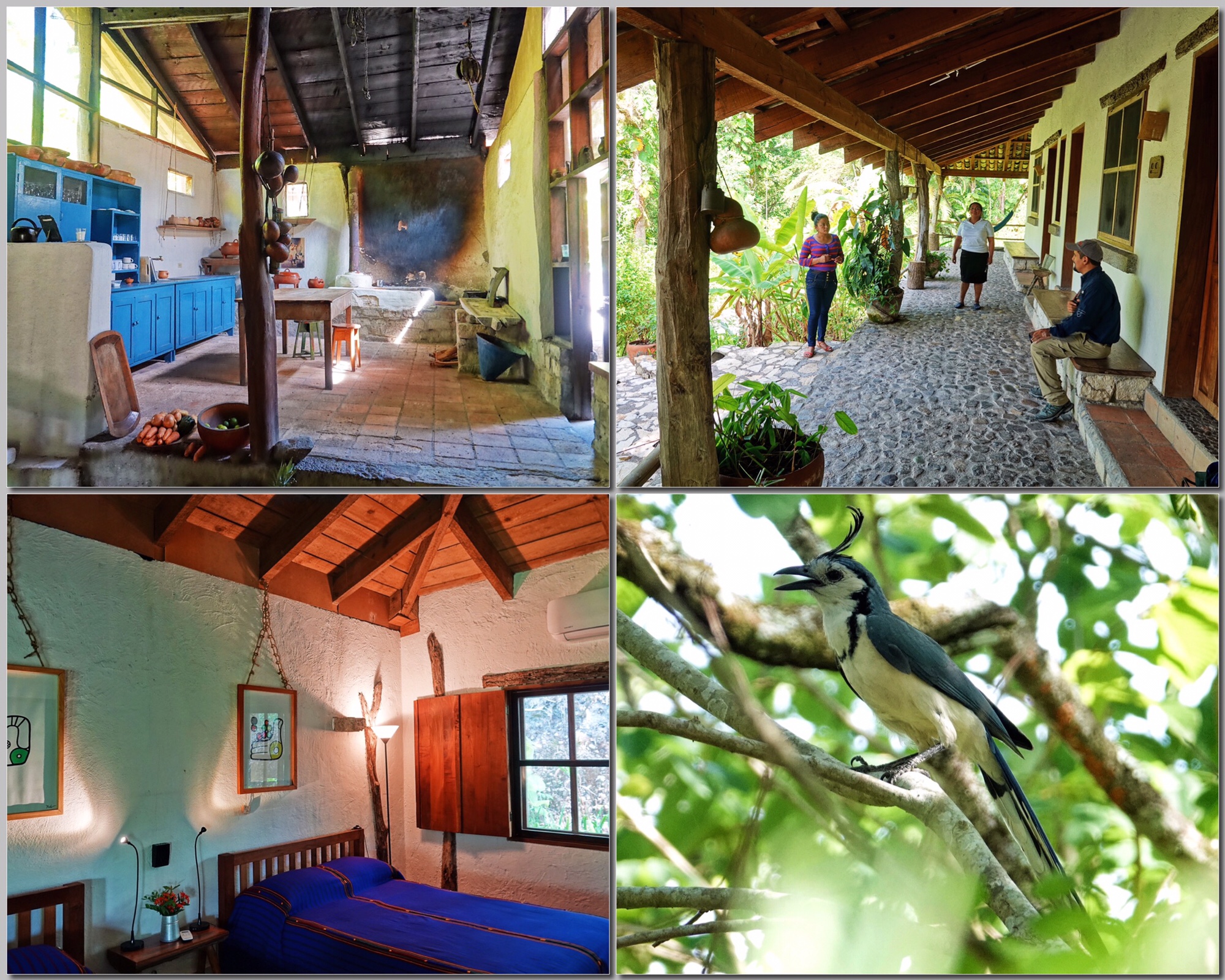
Our final stop in Copan Ruins was the Macaw Mountain Bird Center, where the Macaw reintroduction program got its start. Feeders around the deck at the coffee shop have begun to attract a wide variety of birds, and it is one of the best places to photograph birds in the area…perhaps in Honduras. Photo orientated trips sometimes spend a full day at the center, mostly sitting on the deck sipping coffee and waiting to see what will come. In our short visit I was able to photograph Keel-billed Toucans, Collared Aracari, Yellow-napped Parrot, Streak-backed Oriole, and Montezuma’s Oropendola…as well as Grey Cracker Butterfly. http://www.macawmountain.org/
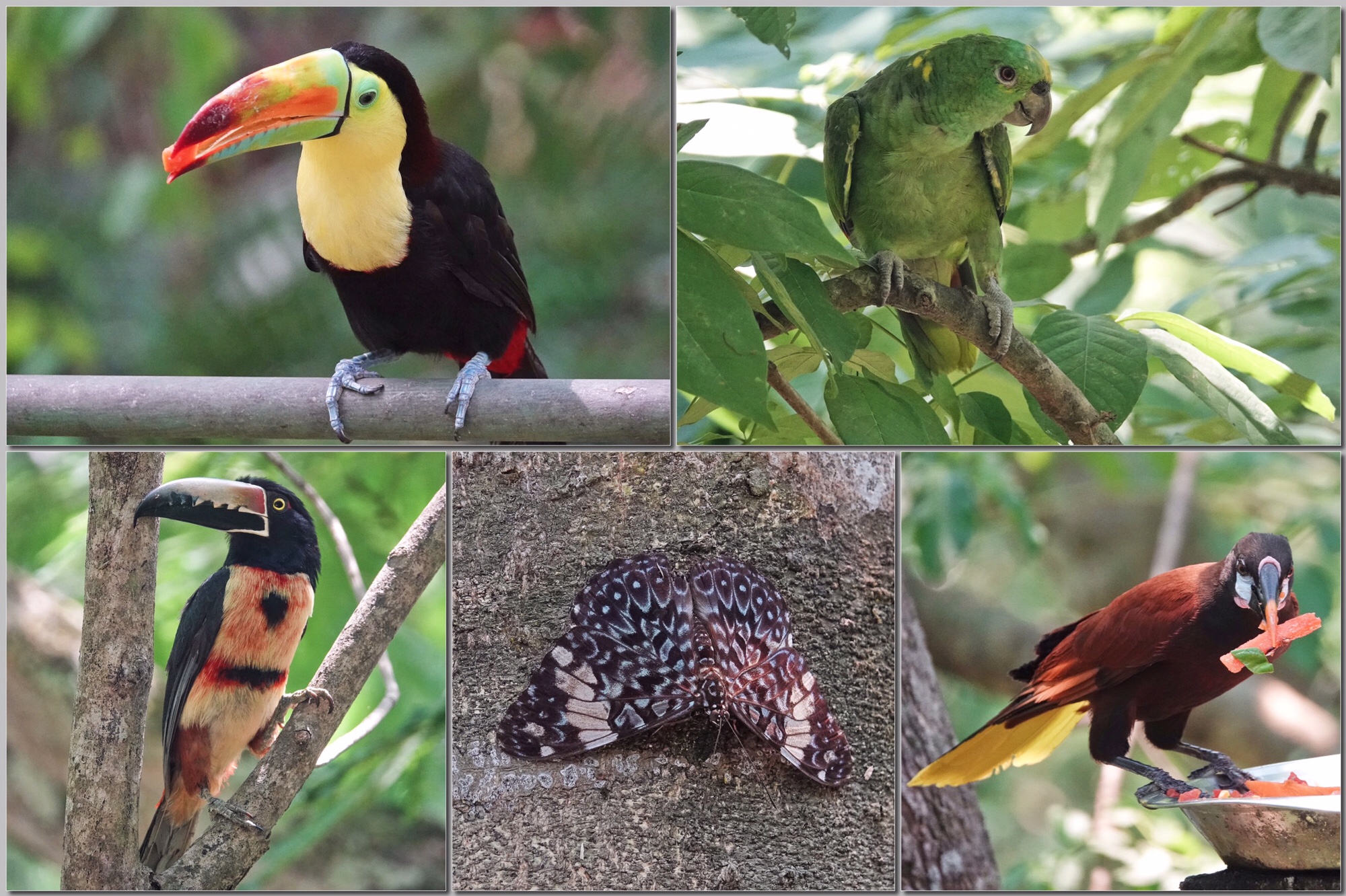
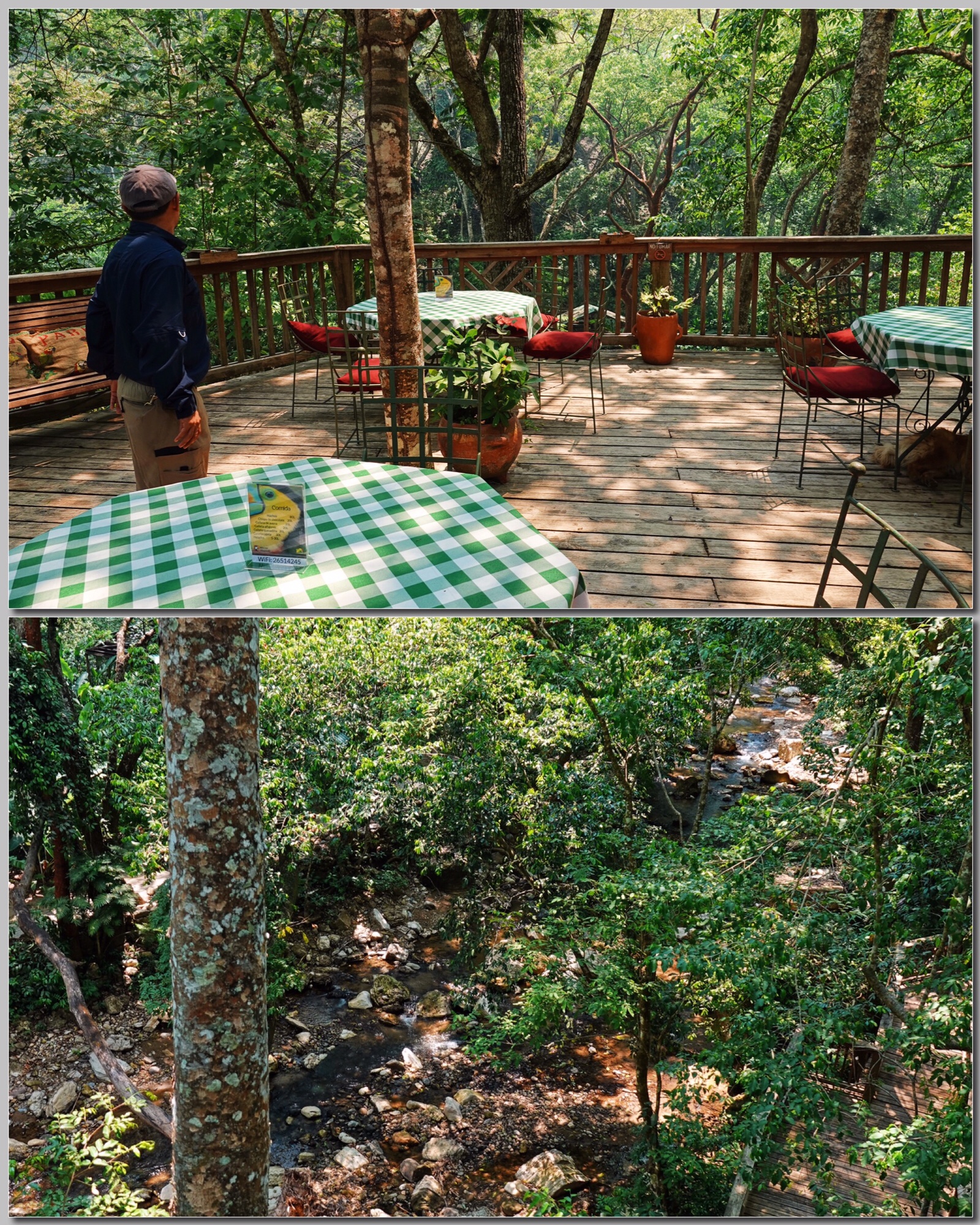
The next day we left Copan Ruins early and drove back to San Pedro Sula to pick up Older Rodriguez, a young guide who has worked for The Lodge at Pico Bonito (perhaps the best known birding destination in Honduras). He had visited the Opatoro Highlands and La Tigra National Park once before but was interested in birding the region again. We arrived at our hotel outside the village of Marcela in the foothills below the Opatoro Highlands by late afternoon. Hotel La Casona is not as rustic as Hacienda San Lucas, but it is definitely a more rustic than the Clarion. The rooms are comfortable, they have a basic restaurant for breakfast (and there are many restaurants in-near by Marcela), and the hotel is part of extensive grounds that include tilapia ponds, plantations, and a unique church on top of the hill across the valley. The first afternoon we went in search of a nesting Great Horned Owl, not all that common in Honduras, and saw it at a distance. While there we also chased down Whiskered Screech Owl and had good sightings of Ferruginous Pygmy Owl. Three owls is pretty good for any location. (https://www.facebook.com/hotel-La-casona-Marcala-La-Paz-270452666295/)
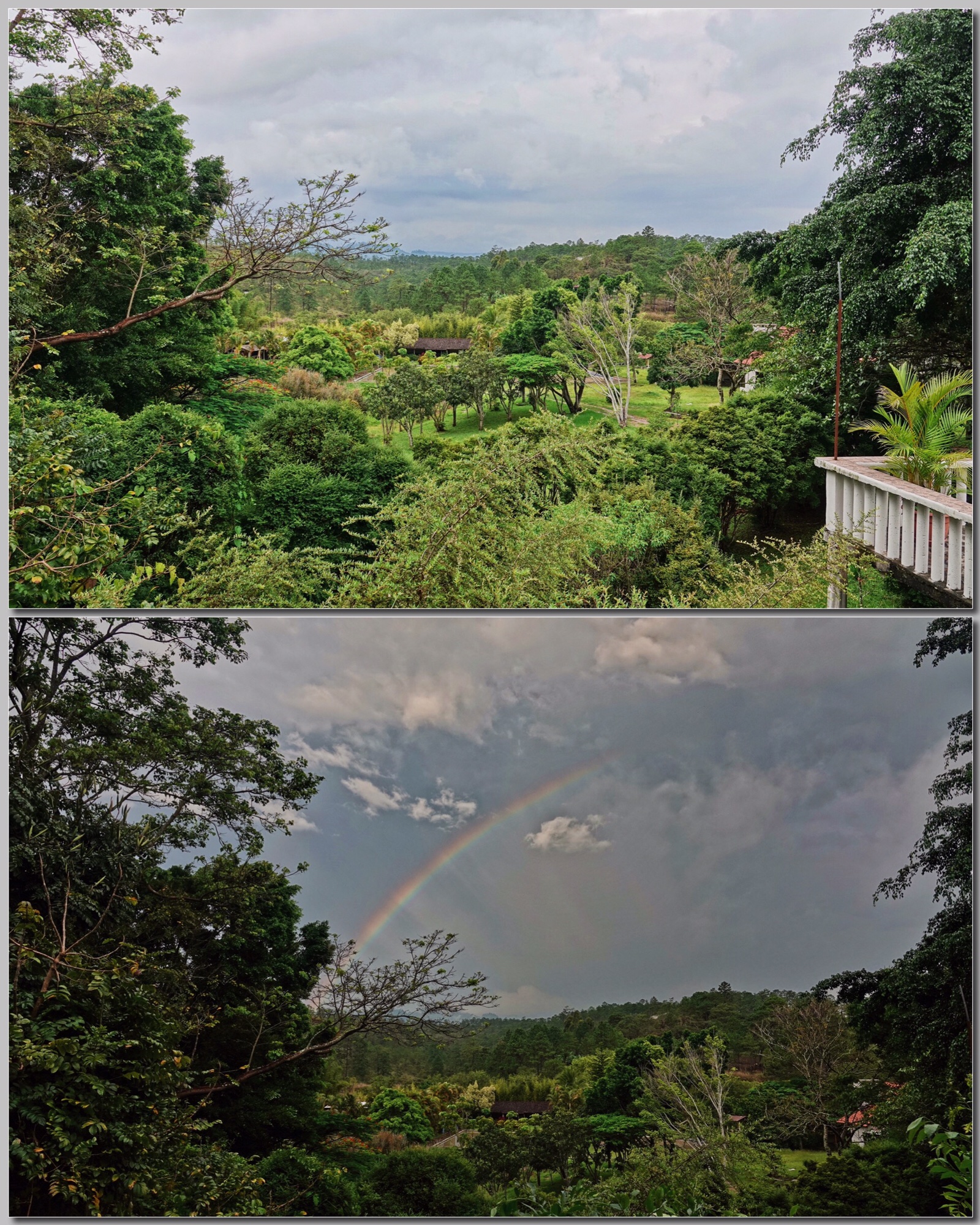
While out for supper, we laid in supplies for a full day in field, including breakfast and lunch, and were off soon after dawn for the Opatoro Highlands…the highest forests accessible by road in Honduras. The highlands are coffee country, producing some of the most sought after beans in the world. Because of that, and the heavy truck traffic the roads get in season, the roads are a challenge. Alex is used to them, and got us safely up into the highlands. We were searching for the signature bird of the region…the Blue-throated Motmot. Though we looked in all the right places, the best we could manage that day were glimpses through the dense foliage. We had better luck with the Fulvous Owl, which came to a call about 1/4 mile off the road exactly where Alex predicted it would be.
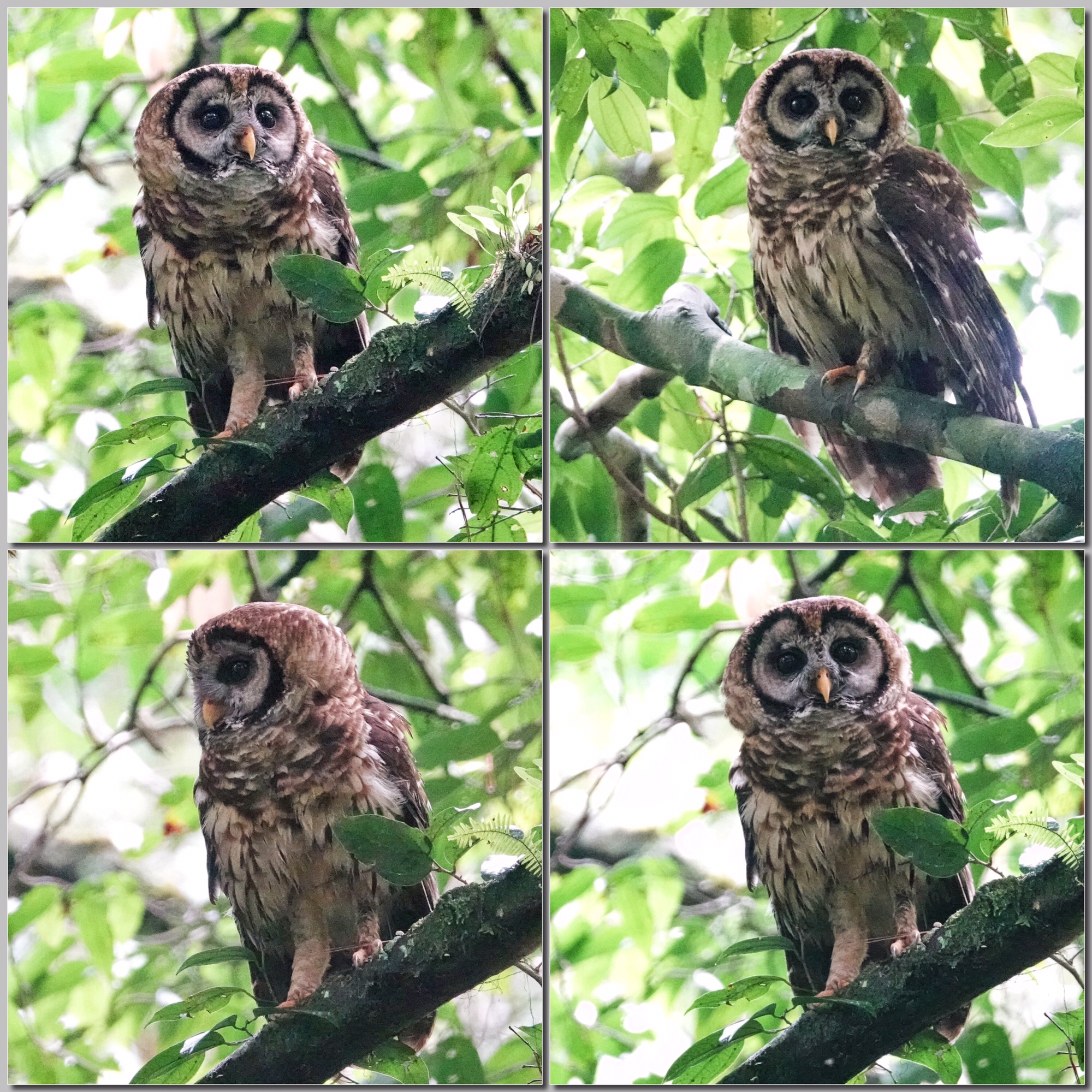
Best of all, as far as I was concerned, were excellent views of both male and female Mountain Trogons. I am always happy with Trogons and the Mountain was a new bird for me. Lunch was picnic style under the trees beside the road. We even had a second Fulvous Owl late in the day when we went to check to see if a Resplendent Quetzal was near its nest. No Quetzel, but the owl right overhead almost made up for it.
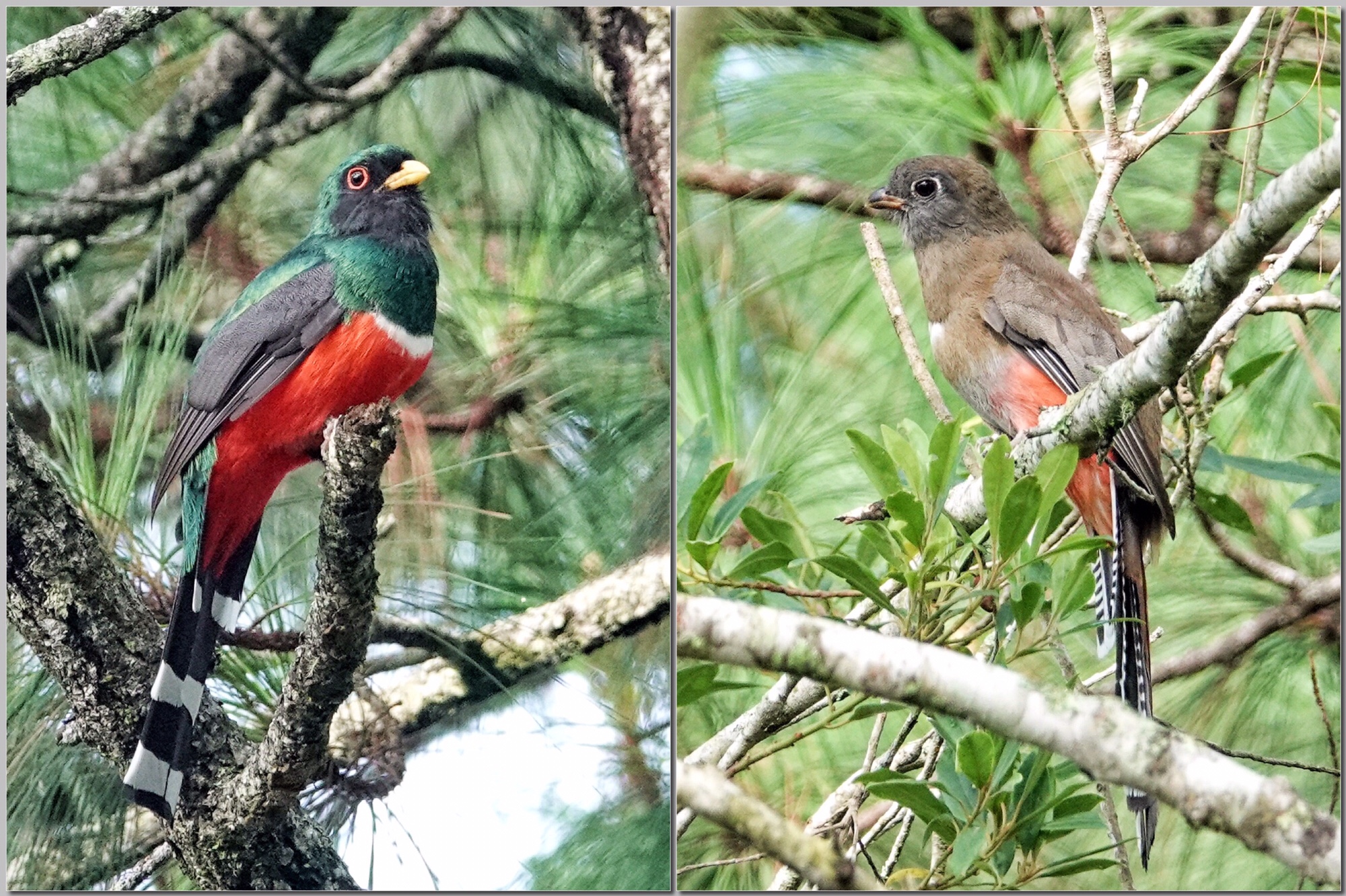
The next morning we were out on the grounds of Hotel La Casona in search of Crested Bobwhite quails. We found two groups…in addition to good looks at Whiskered Screech Owl, Ferruginous Pygmy Owl, Spot-breasted Oriole, and Eastern Bluebirds.
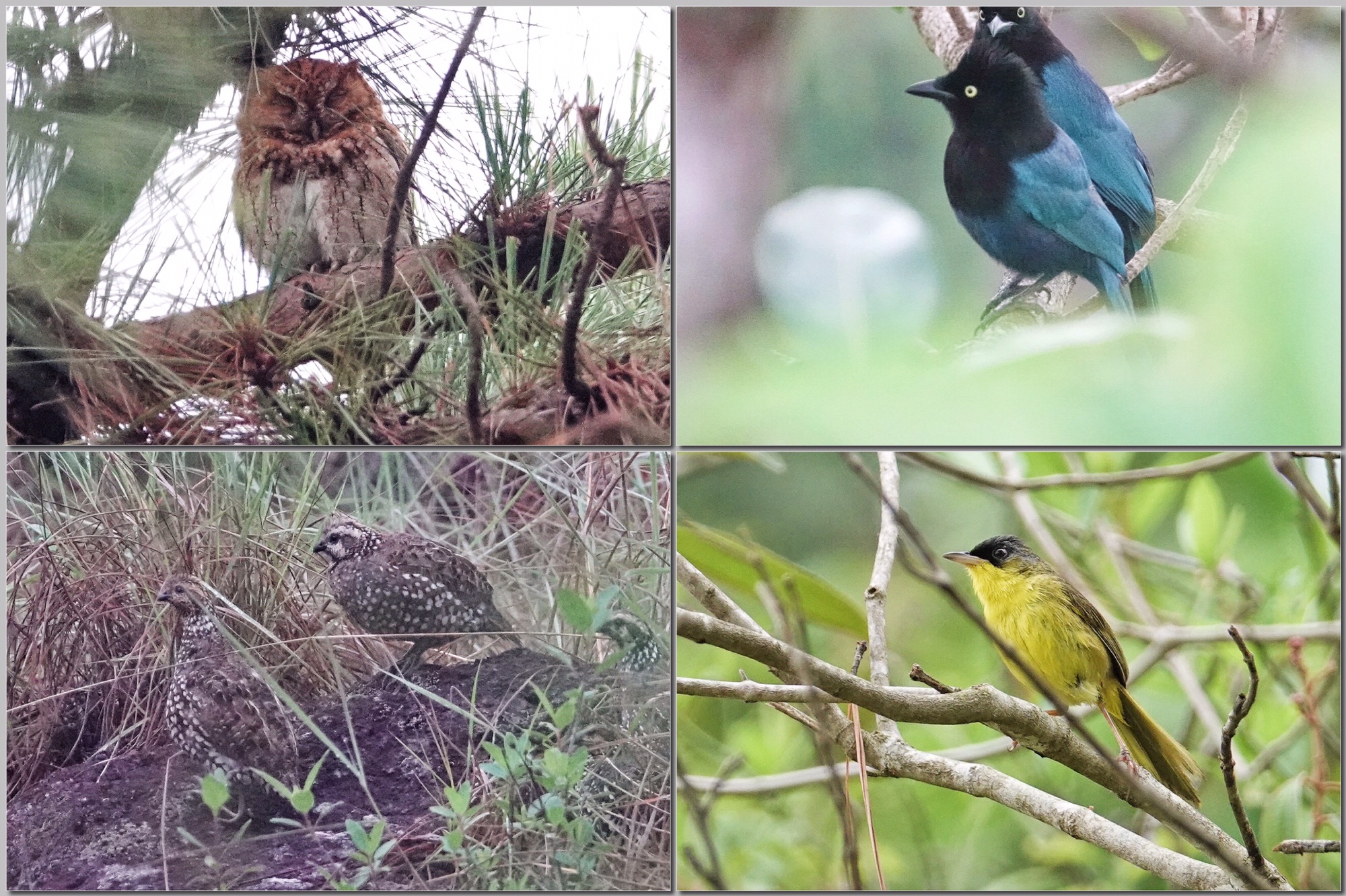
It was about two and a half hours from Marcela to Tegucigalpa. Tegucigalpa is the capital of Honduras, and does not have the best of reputations in the US, so I was interested to see what it was like. It is a crazy city, with narrow streets, and lots of traffic of all kinds, but other than taking a long time to get through downtown, it was much like any other Central American city…more of an overgrown village, or a large number of hill top villages that simply filled the valleys between them, than it is like a North American city. As the home of the University of Honduras and all the government agencies, it is full of art and culture and very alive. Our hotel, Los Gloriales Inn, turned out to be well out of the city itself, up on a high ridge across a deep valley from La Tigra National Park. The Inn is built of rough red stone. My room had a flagged stone floor and two fireplaces, as well two sleeping areas and a small kitchen. All very rustic but very comfortable. Hanging curtains around the bed I slept in. There is a complete restaurant in the central lodge, with a traditional Honduran outside kitchen. Again, being the low season, our group to 3 were the only guests. We ordered traditional breakfasts and a common meal at supper.
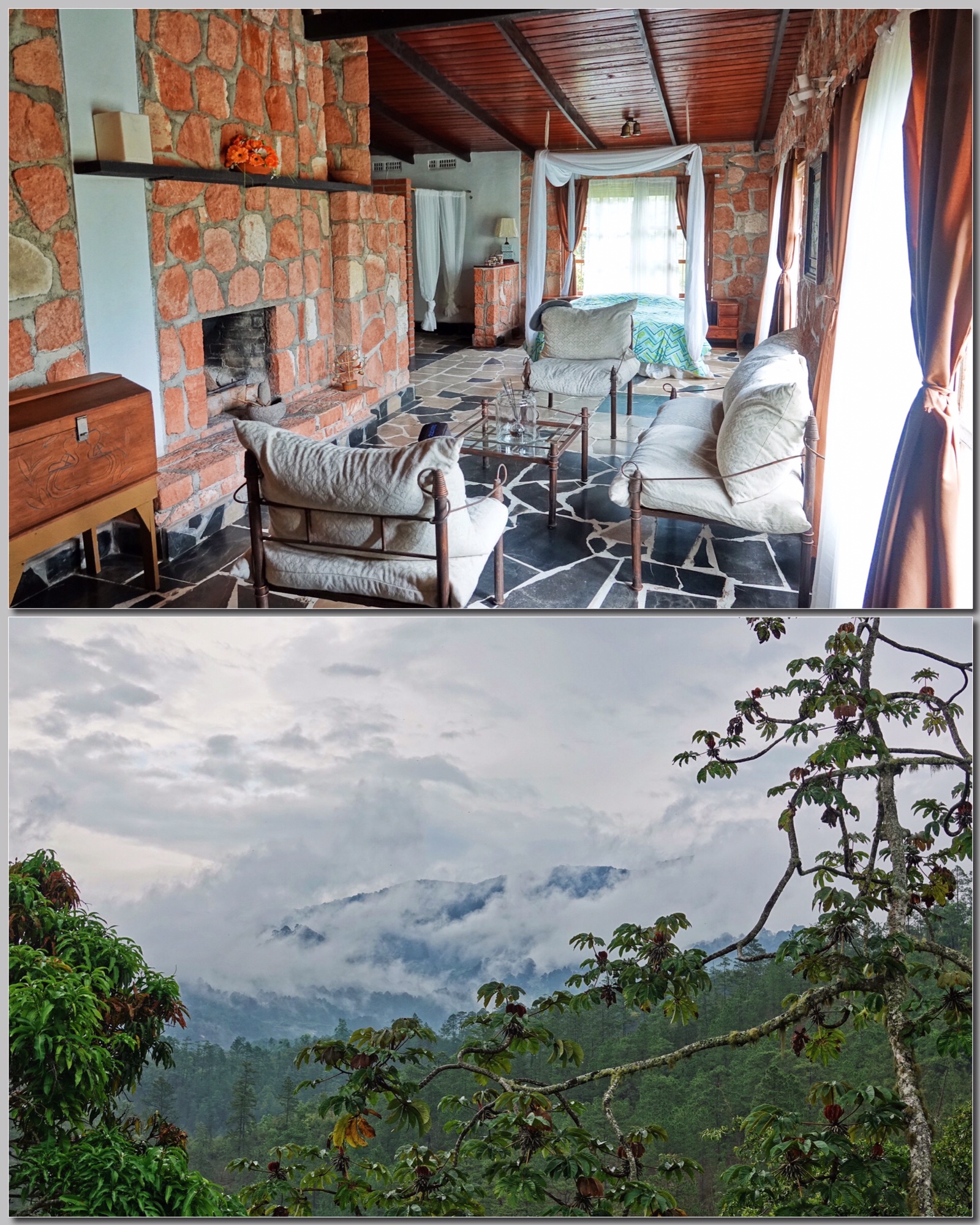
Los Gloriales sits in a coffee plantation and the coffee processing buildings are across the road from the Inn, right at the edge of the almost vertical drop into the valley between there and La Tigra. Mature trees and bushes along the drop attract all kinds of birds in season. We had Yellow-backed Oriole, Squirrel Cuckoo, and two Emerald Toucanettes. The Toucanettes were a real treat…a bird I had only seen poorly in deep forest, or at a distance. They were close and cooperative at Los Gloriales. (https://www.facebook.com/Gloriales-Mountain-Inn-120257305226404/)
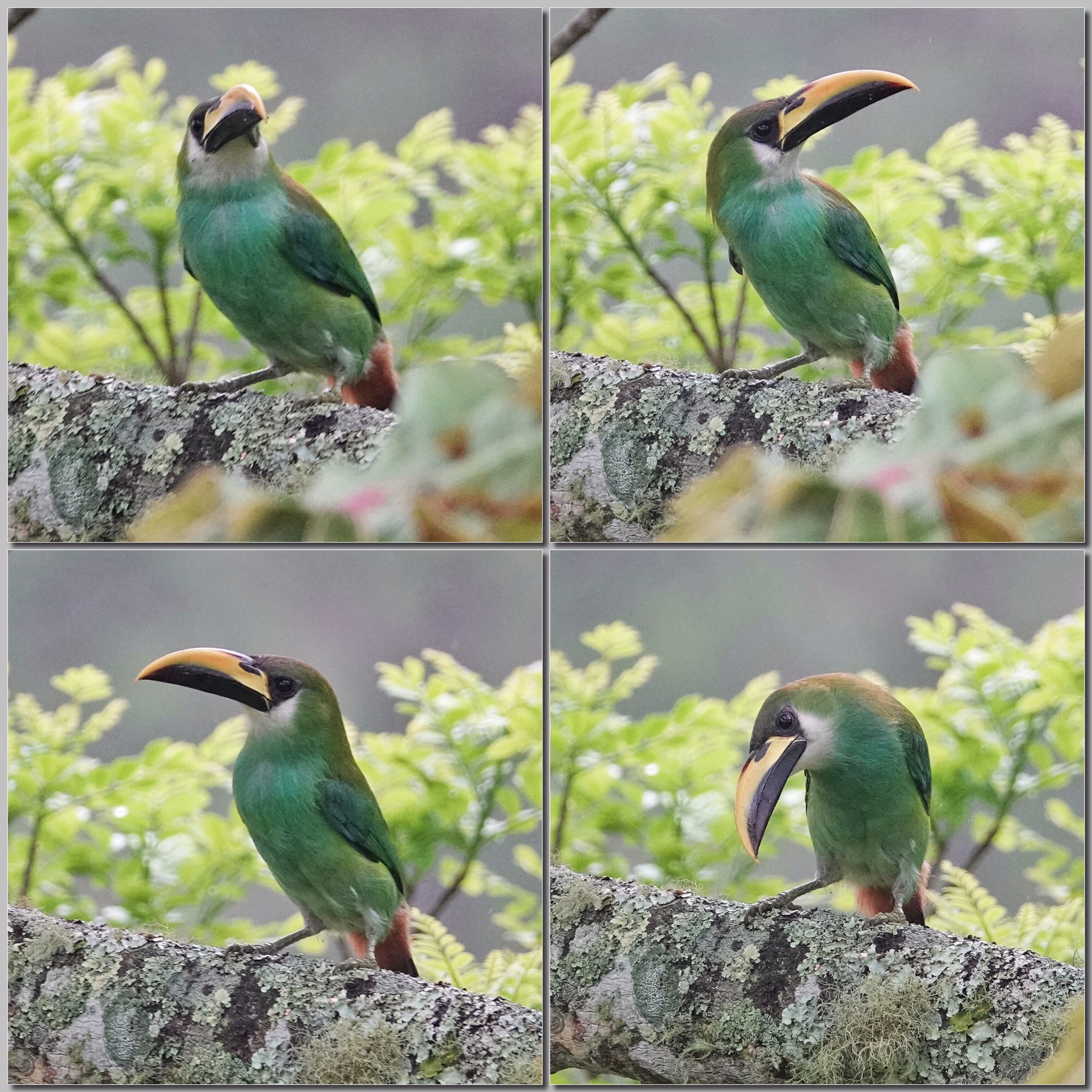
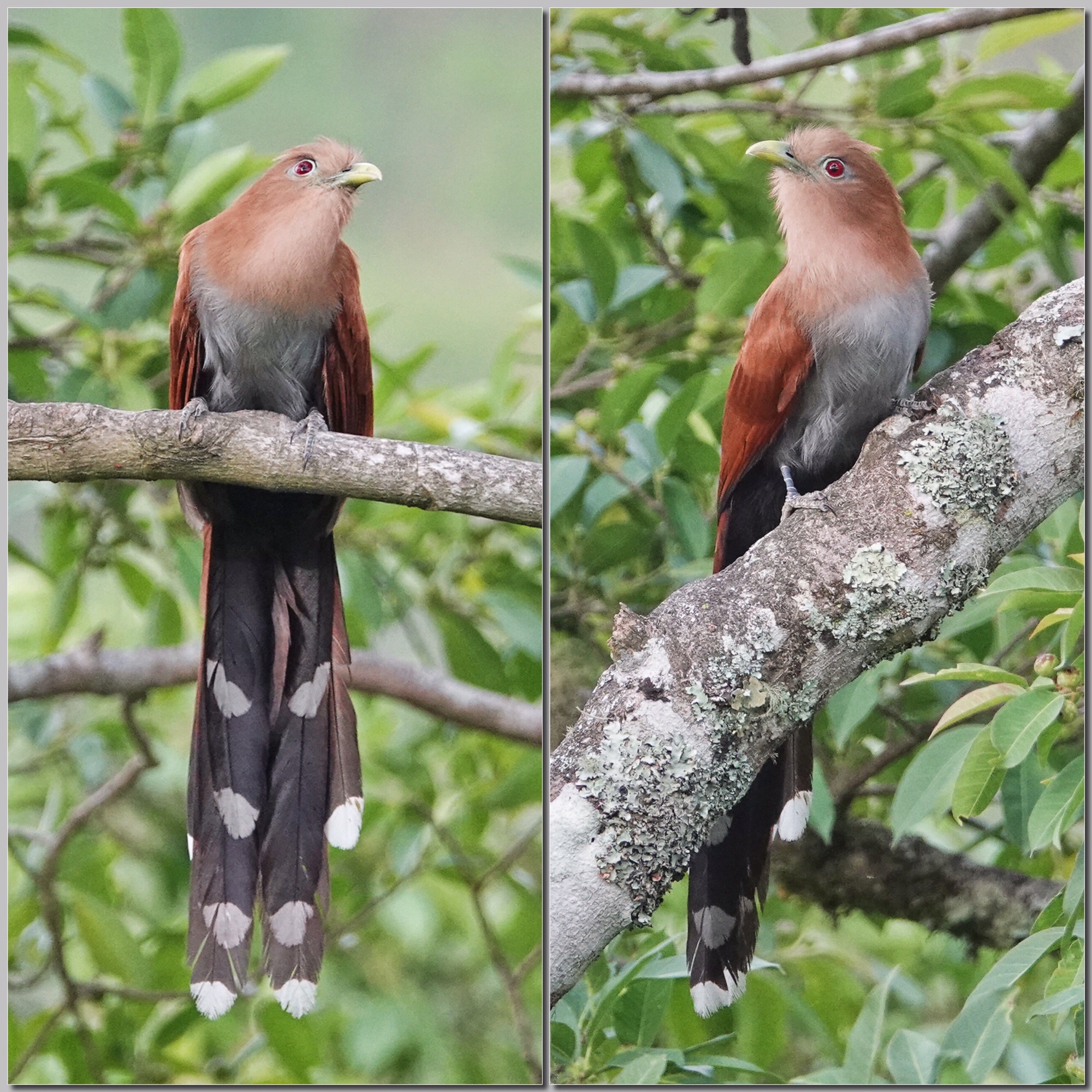
After breakfast the next morning we were off to La Tigra. (https://en.wikipedia.org/wiki/La_Tigra_National_Park) La Tigra National Park was the first National Park in Honduras. It is silver mining country and after the mines played out, the land became available for conservation. It was set aside as a national park in 1980. It is mix of high rainforest and cloud forest, and rich with birds, mammals, reptiles, rare plants and all manner of natural life. Hondurans are justly proud of it, and since is only a short drive from downtown Tegucigalpa, it gets a lot of visitors.
On our way up to the park, near the entrance gates, we had our first good birds of the day. We stopped by a little overgrown stream that passes under the road and two Ruddy Crakes responded to Alex’s recordings. We watched them, and attempted photographs, for about a half hour as they worked their way up and down the chocked water flow, feeding. “Attempted” is the operative word there. 🙂 Crakes are notorious for always being behind or under vegetation, and these were no exception. I have a lot of “pieces of crake” that might be assembled into a whole crake with some imagination.
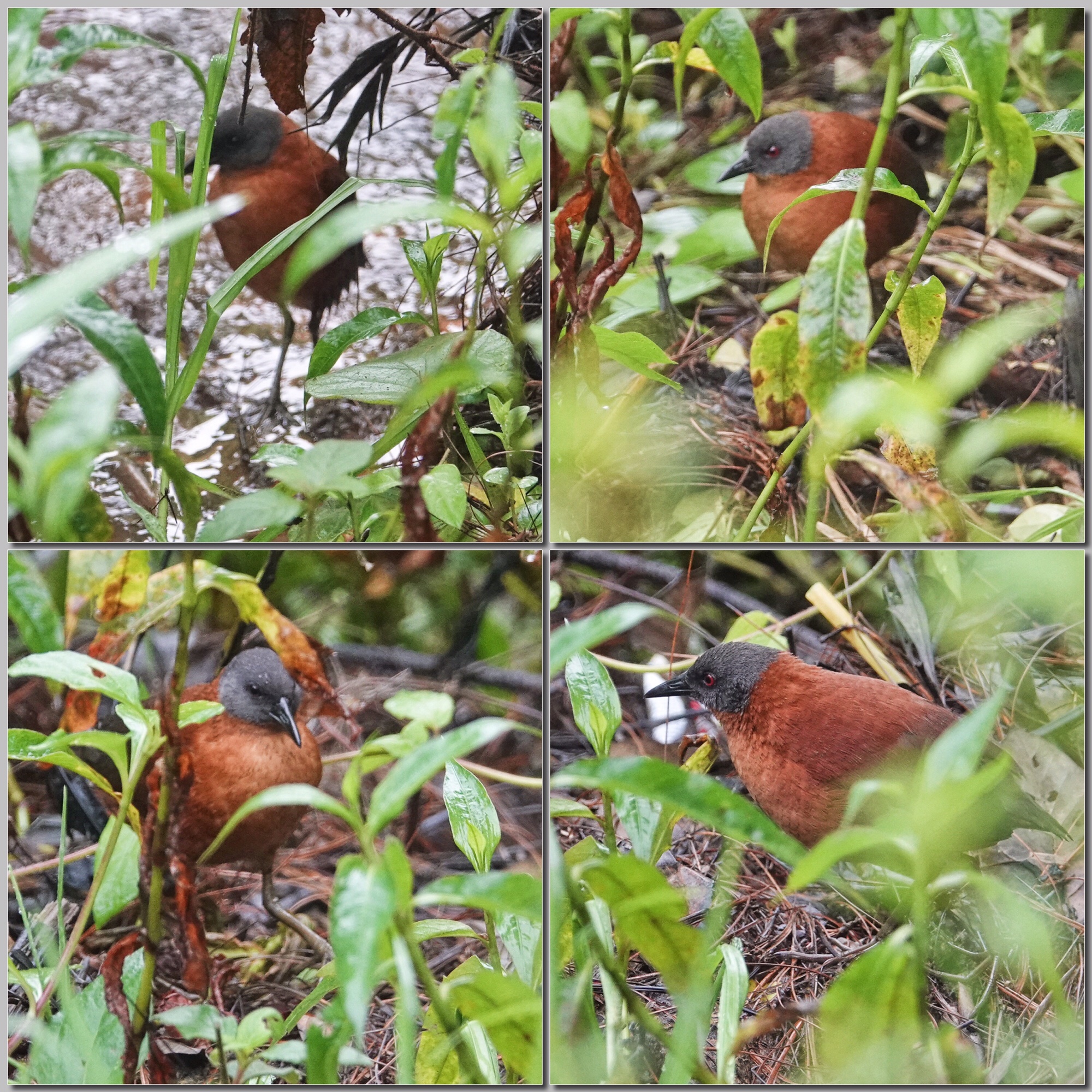
While still watching the Crakes, a pair of Chestnut-capped Bushfinches appeared in the brush on the other side of the road behind us. Photographically, they proved almost as elusive as the Crake. Good birds though.
When we arrived at the park itself we hiked in to find the area where Wine-throated Hummingbird are known to feed. It was a longish hike, but along the way we had good sightings of Tawny-throated Leaftosser…a bird that is evidently not that easy to see anywhere, and great views of Singing Quail…singing!
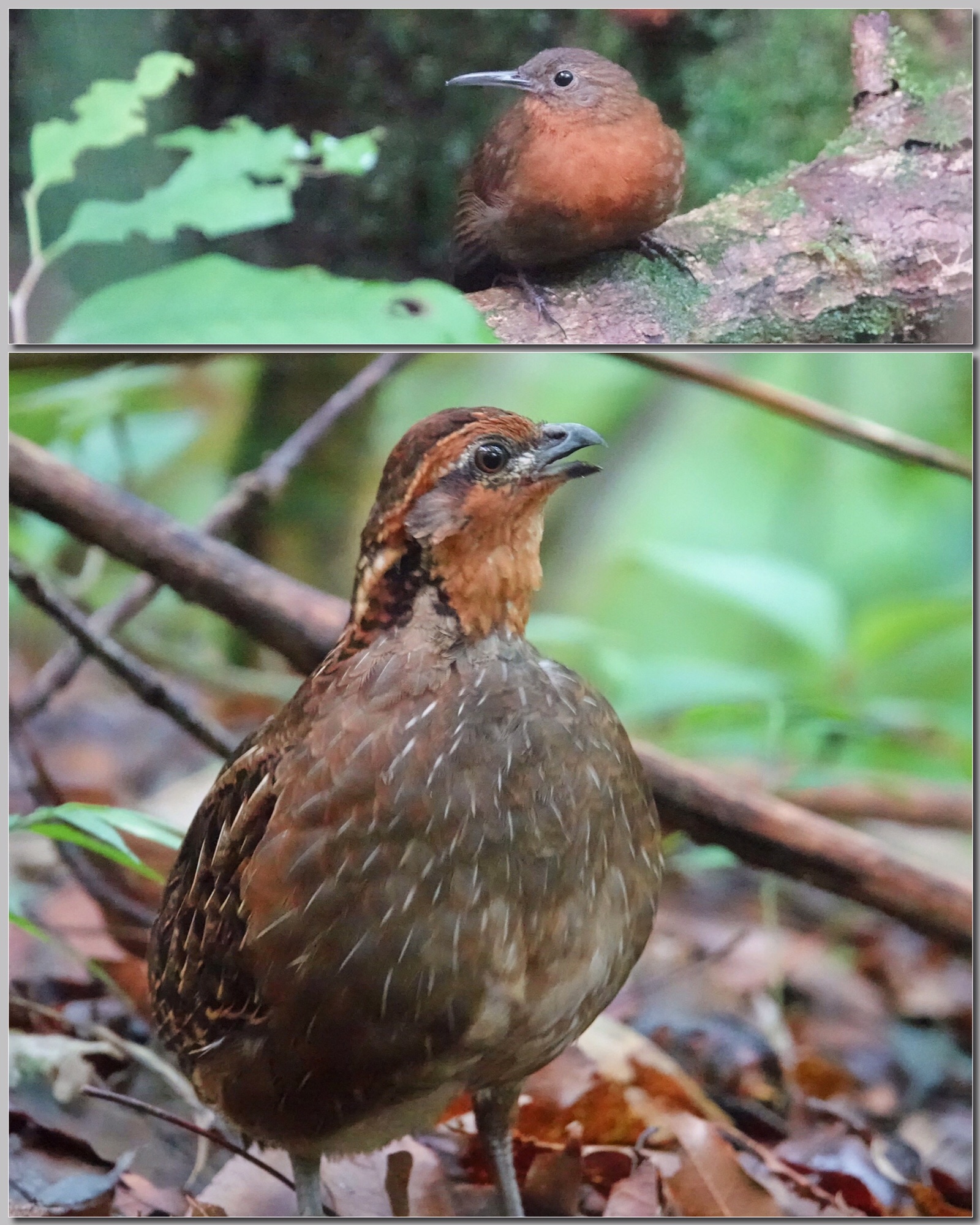
When Alex found the Wine-throated Hummingbirds they were well off the trail, down a sharp slope, and in deep cover…well, actually, there was a little opening in the surrounding forest where they were actively feeding, but there was no easy way to get in there to see them. “No easy way” did not stop Alex from bushwhacking deep into the brush and undergrowth, and climbing over fallen trees and branches buried in tangled, and tangling, vines to reach a perch where we could see the hummingbirds. Older and I followed him in, while Alex called back with encouragement. “This will be the photo of the trip!” And I have to say it was worth it. Once perched precariously in the vines, we had excellent views of the Wine-throated Hummingbird feeding and returning to one of several favored perches. We spent 45 minutes there watching and photographing this amazing hummer. The Wine-throated is tiny but it as one of the most amazing gorgets in the hummingbird world. I took way too many exposures. 🙂
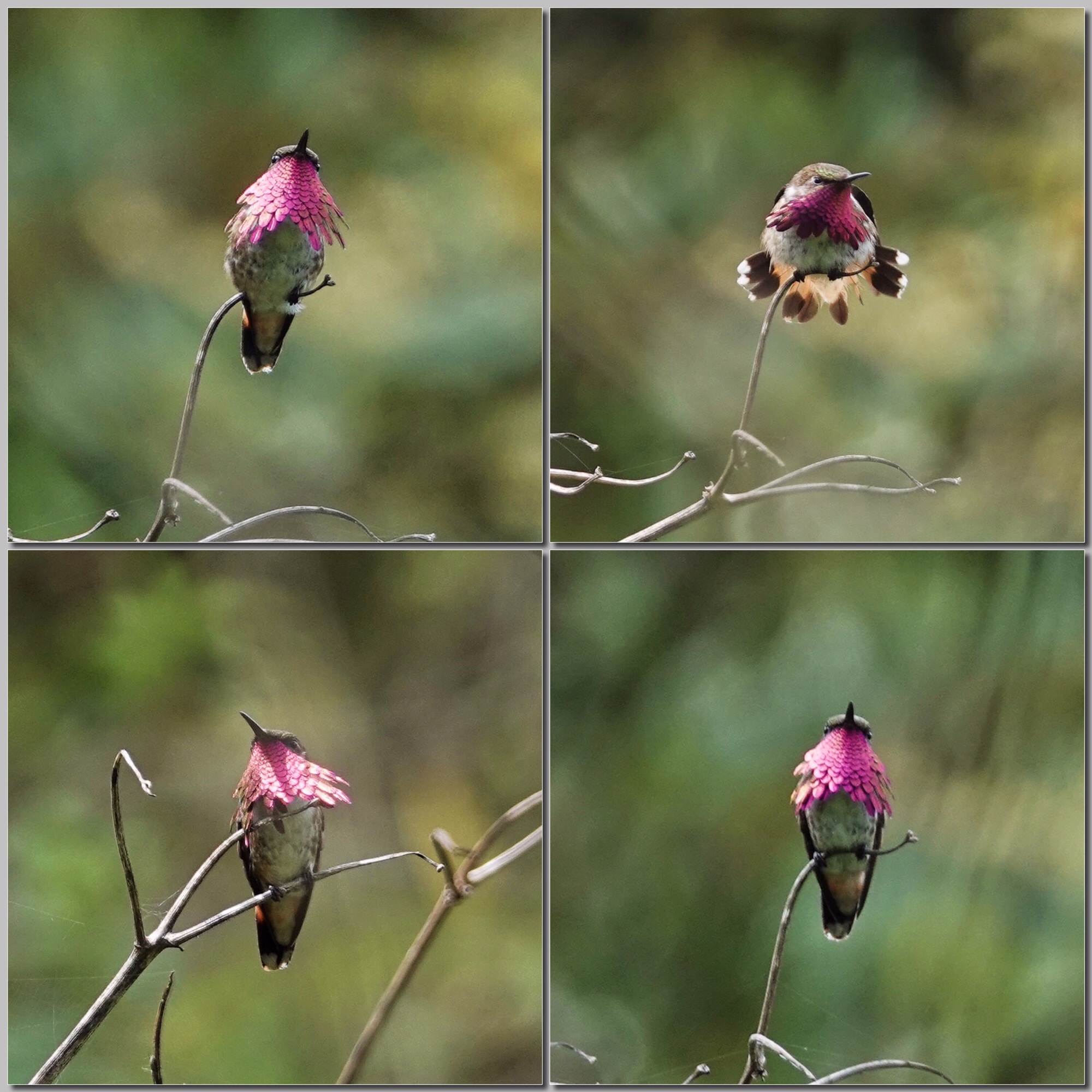
On the way back out, Alex spotted a Forest Viper in brush beside the trail and hooked it out onto the path for a better look. We had lunch at the little cafeteria near the Visitor Center and rested before one of the park rangers joined us for the real mission of the visit. In May there was an active Resplendent Quetzal nest up the mountain from the Visitor Center, and we hiked in, and then off the trail a hundred yards (all up-hill) to stand at a respectful distance and watch for the adult Quetzals coming to the nest to feed the chicks. Though we spent an hour there, only the female came. I say “only” but we are talking Resplendent Quetzal here…and the female is spectacular enough.
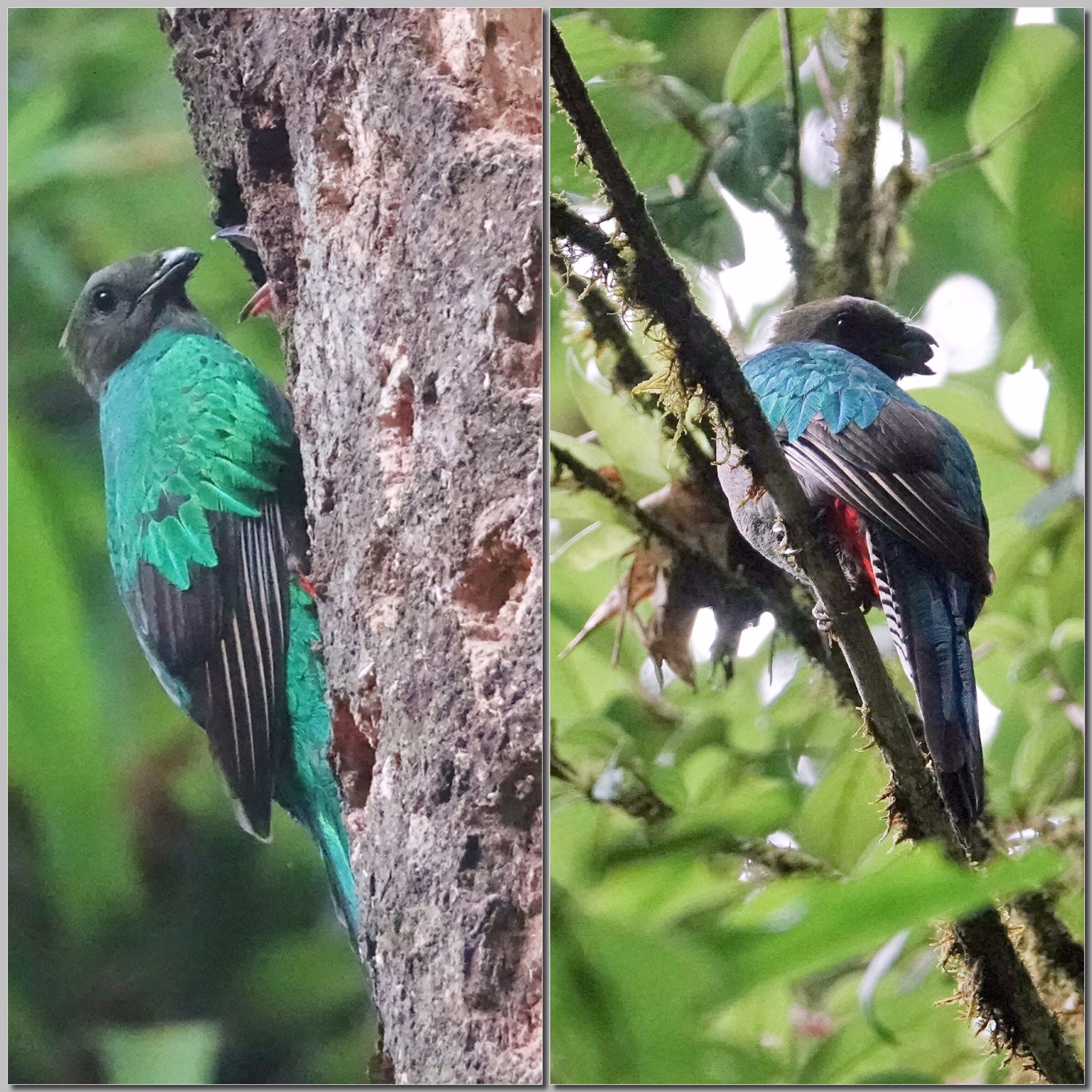
We birded around the Inn the next morning and I got some excellent shots of Squirrel Cuckoo, before leaving for the drive to Panacam Lodge. Before we were down the mountain, we stopped at a city park at the edge of Tegucigalpa for good views of Acorn Woodpecker, Bobwhite Quail and another Lesson’s Motmot…as well as amazing views of the City below us. The park is home to the traditional giant stature of Jesus overlooking the City, common in almost every Spanish speaking country of the world.
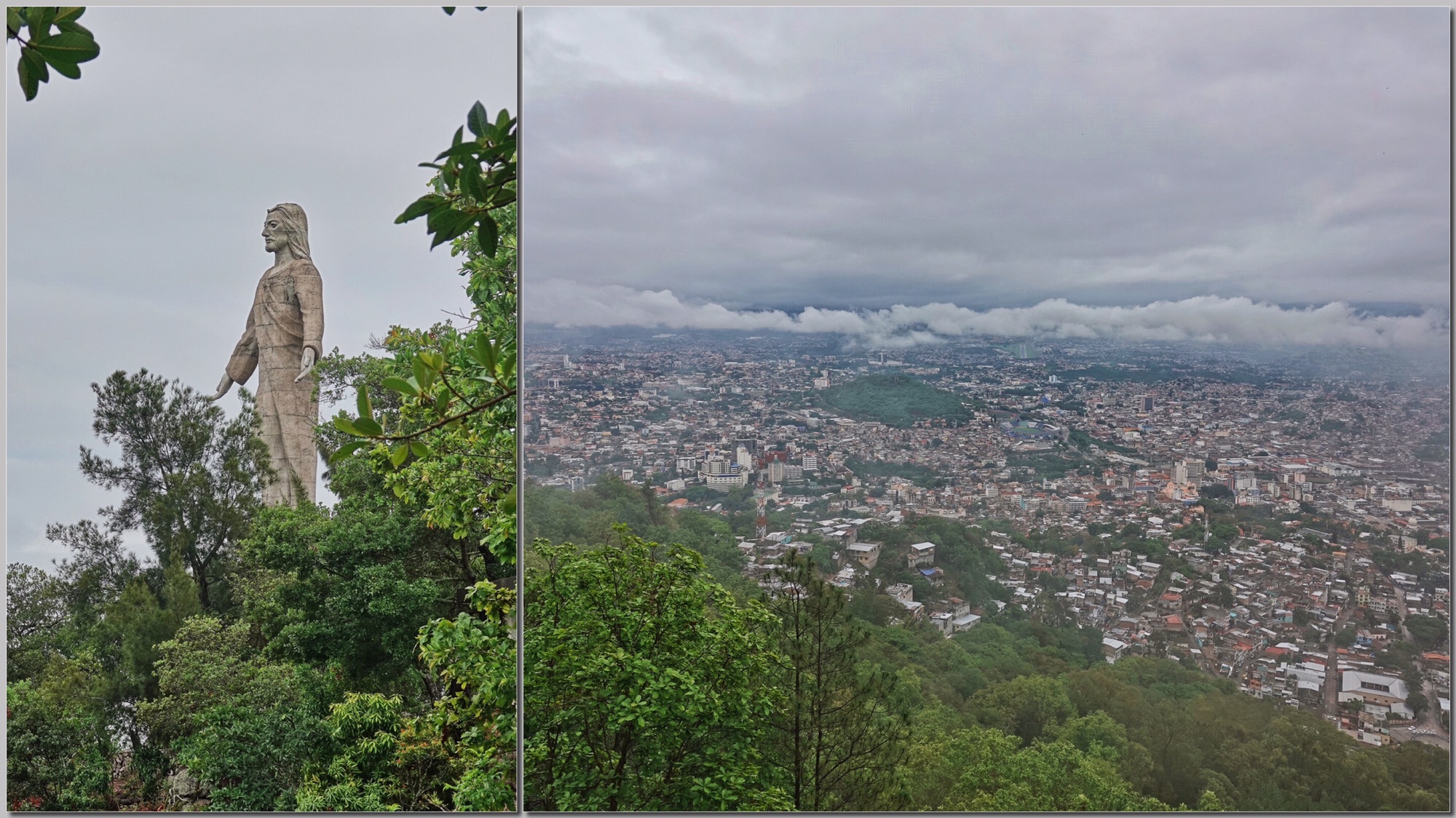
Older left us in La Guama, on the shores of Lake Yojoa, and at the foot of the Blue Mountains where Panacam Lodge is a major birding attraction, to continue his birding adventures with a planned week in Guatemala, while Alex and I made the drive up to Panacam. I remember thinking, on my first visits to Panacam, that the road in was a challenge. Now having been on more Honduran mountain roads, I can say that the road to Panacam is exceptionally well made and maintained. 🙂
Panacam Lodge is the official lodge of the Parque Nacional Cerro Azul Meambar, or, in rough translation, Blue Mountains National Park. There is an excellent restaurant / gift shop / a small conference and event center and a variety of cabins and rooms scattered down terraces below…as well as miles of trails. Birding on the grounds is always excellent, with active hummingbird feeders attracting numerous species, nesting Chestnut-headed Oropendolas, at least two Trogons, and several Motmots, including the hard to see Keel-billed Motmot. A short walk down the entrance road will generally turn up at least a half dozen additional species: Red-legged Honeycreepers, Golden-crowned Tanagers, Orioles, Seed-eaters, Ferruginous Pygmy Owls, Montezuma’s Oropendolas, etc. Add in the exceptional views out over Lake Yojoa, and Panacam is just a wonderful Honduran birding destination.
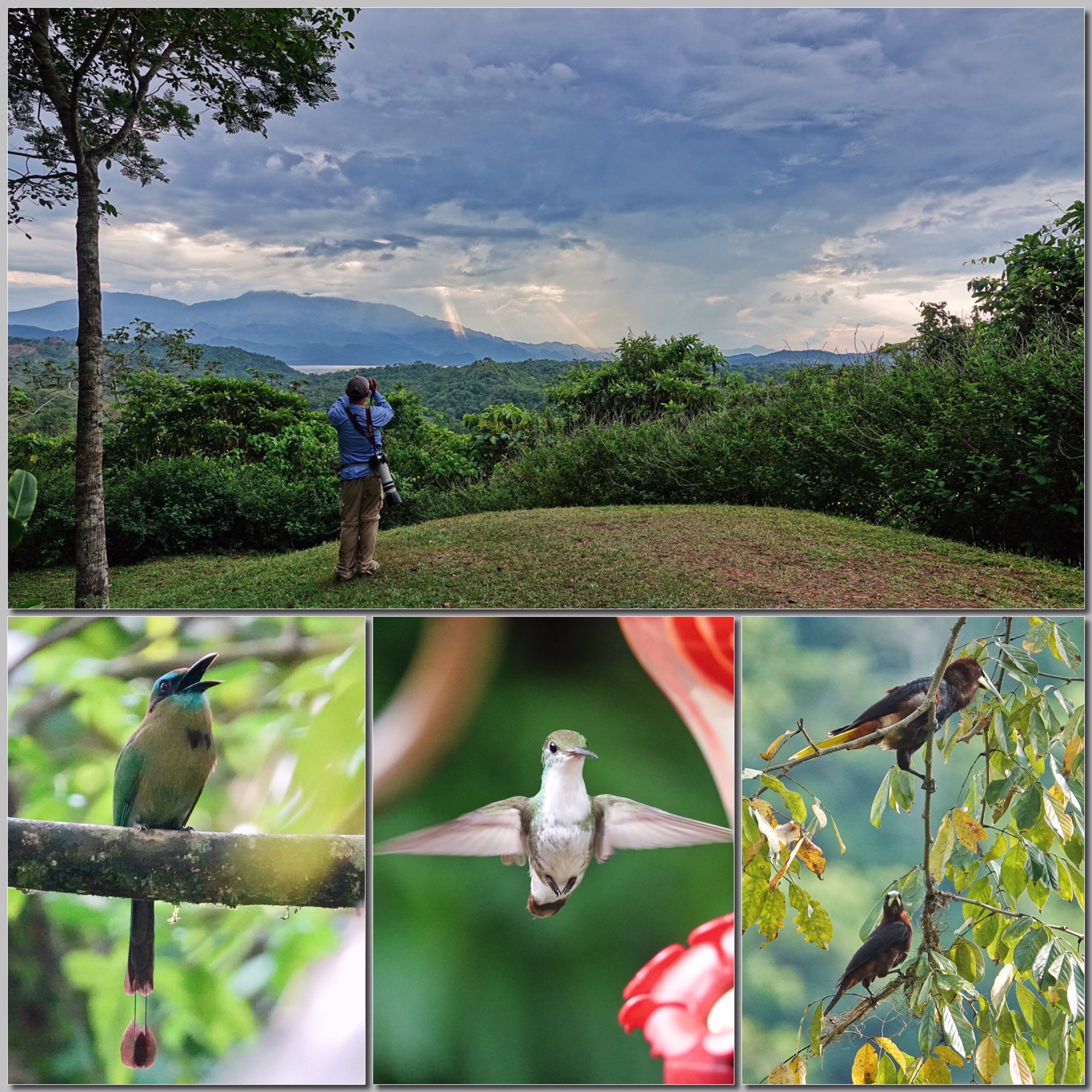
We spent our first day at Panacam exploring the margins of Lake Yojoa. Lake Yojoa is the largest natural body of water in Honduras and it attracts hundreds of species of birds. It is also home to extensive Talapia farms. It is a major tourist attraction for Honduras, and there are resorts and restaurants all around the edge…as well as another park…Eco-Arqueológico Los Naranjos. Since it was looking like rain by the time we got to the lake, we started the day at one of the lake-side resorts just off Rt C5, the main route between San Pedro Sula and Tegucigalpa. The resort had a covered boat shed and a long dock reaching out toward the open water with a covered area at the end. As it turned out, we did not get rained on anyway, but the dock provided excellent views…amazing views…of hunting Snail Kites, Limpkin, Purple Gallinules, Bare-necked Tiger-Herons, Great Egrets, Black-crowned Night-herons, Fulvous Whistling Ducks, Grove-billed Anis, and Red-wined Blackbirds. I could easily have stayed all day, watching and photographing the Lake-side birds.
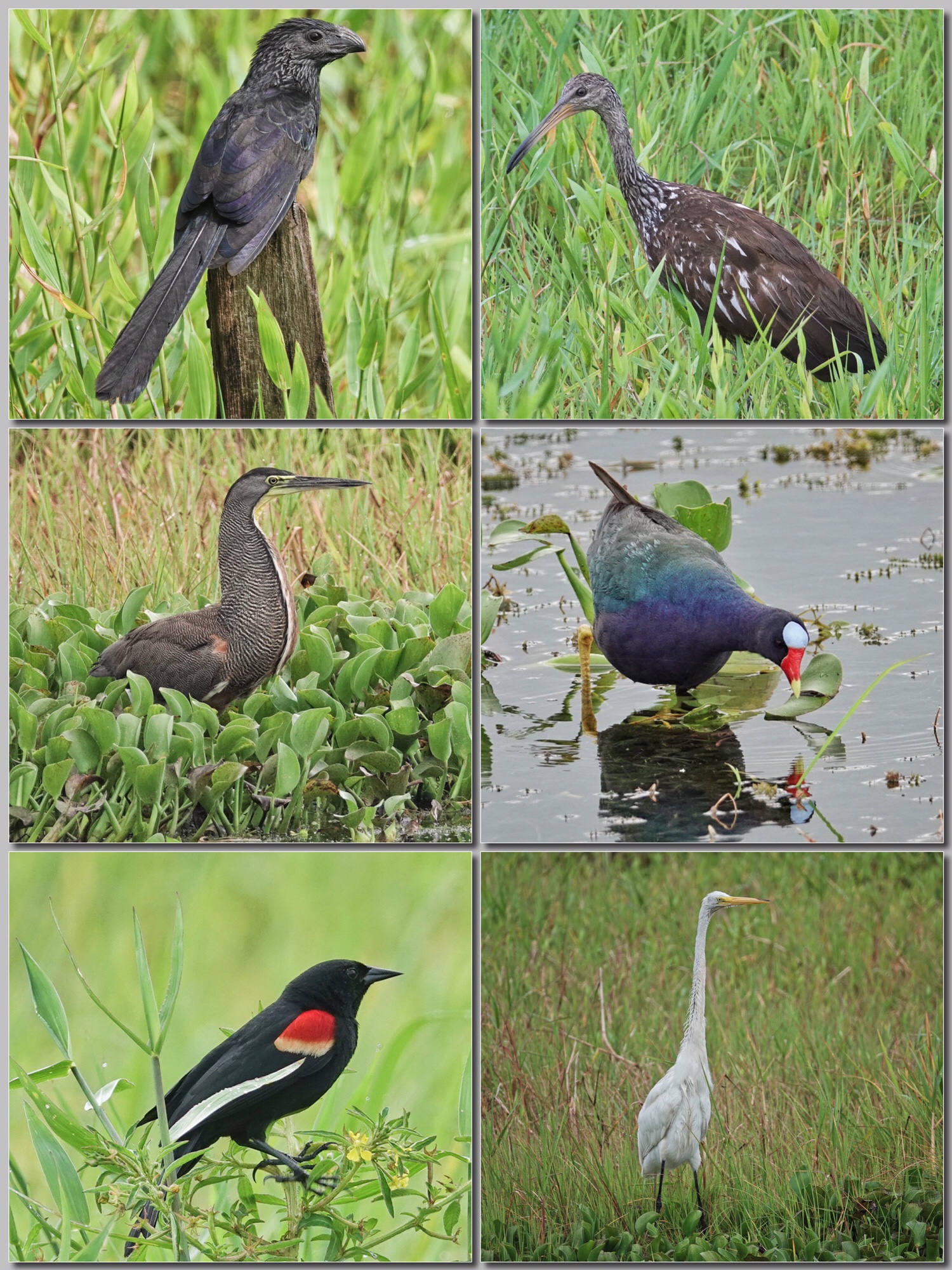
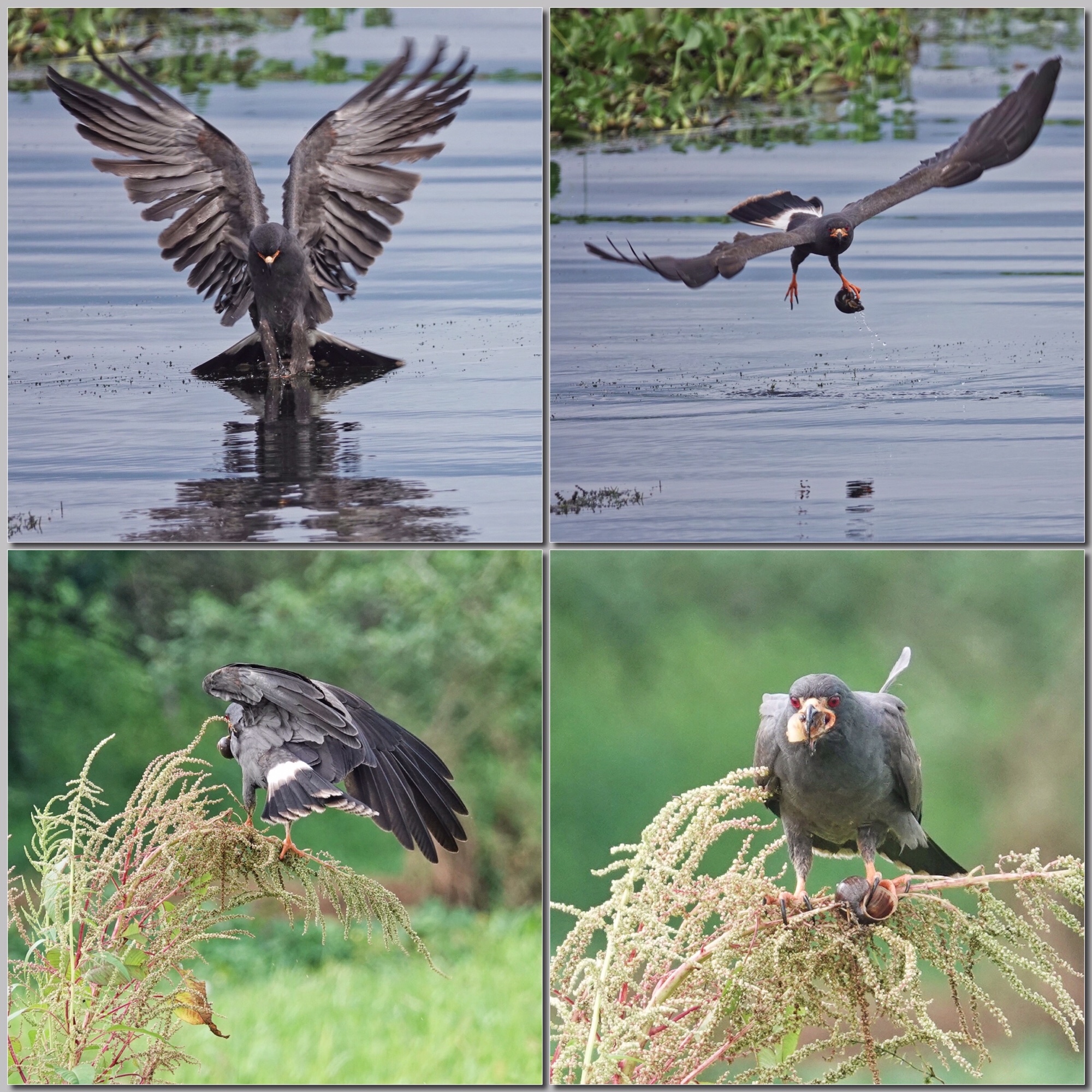
We moved on though to another resort, Hotel y Finca Las Glorias for lunch and turn around the grounds. Here we again hand access to the marshes that line the lake for more birding.
After lunch we drove to Los Naranjos and walked the trails there. It was hot, and the slow time of day for birding, but we still managed some good birds, including a Blue-chested Hummingbird and excellent views of a Berylline Hummingbird. The Arqueologico part of the park involves ruins of a culture common in the area prior to the development of the Mayans. The highlight, for me at least, was a flowering bush at the base of one of the ancient mounds that was attracting a wide variety of bright butterflies. Alex and I spent at least 30 minutes with the bush and its beauties, before continuing on back to the car and Panacam. In the high season, Los Naranjos is full of birds and definitely a place you want to visit while at Panacam.
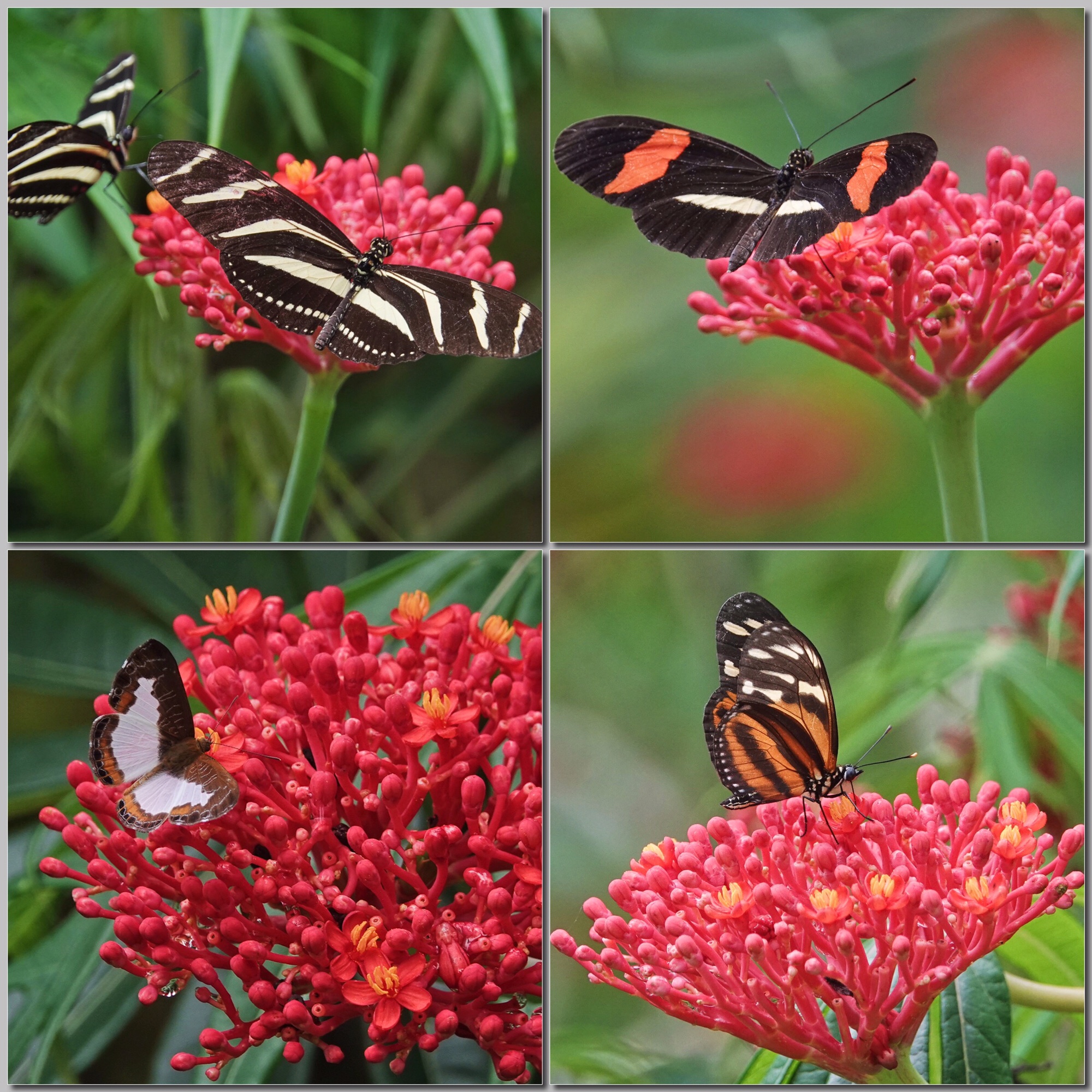
Late in the afternoon, Alex and I took another walk down the entrance road at the lodge and discovered a nest of Lesson’s Motmots in the bank beside the gate. The chicks were calling loudly for food. They were big, about ready to fledge. I was able to get a flash photo of them in their cavity. Further down the road, we found a Ferruginous Pygmy Owl in the bare top of a tree surrounded by a mixed flock of Honeycreepers, Tanagers, and Euphonias. It looked like the Honduran equivalent of a tropical Christmas Tree.
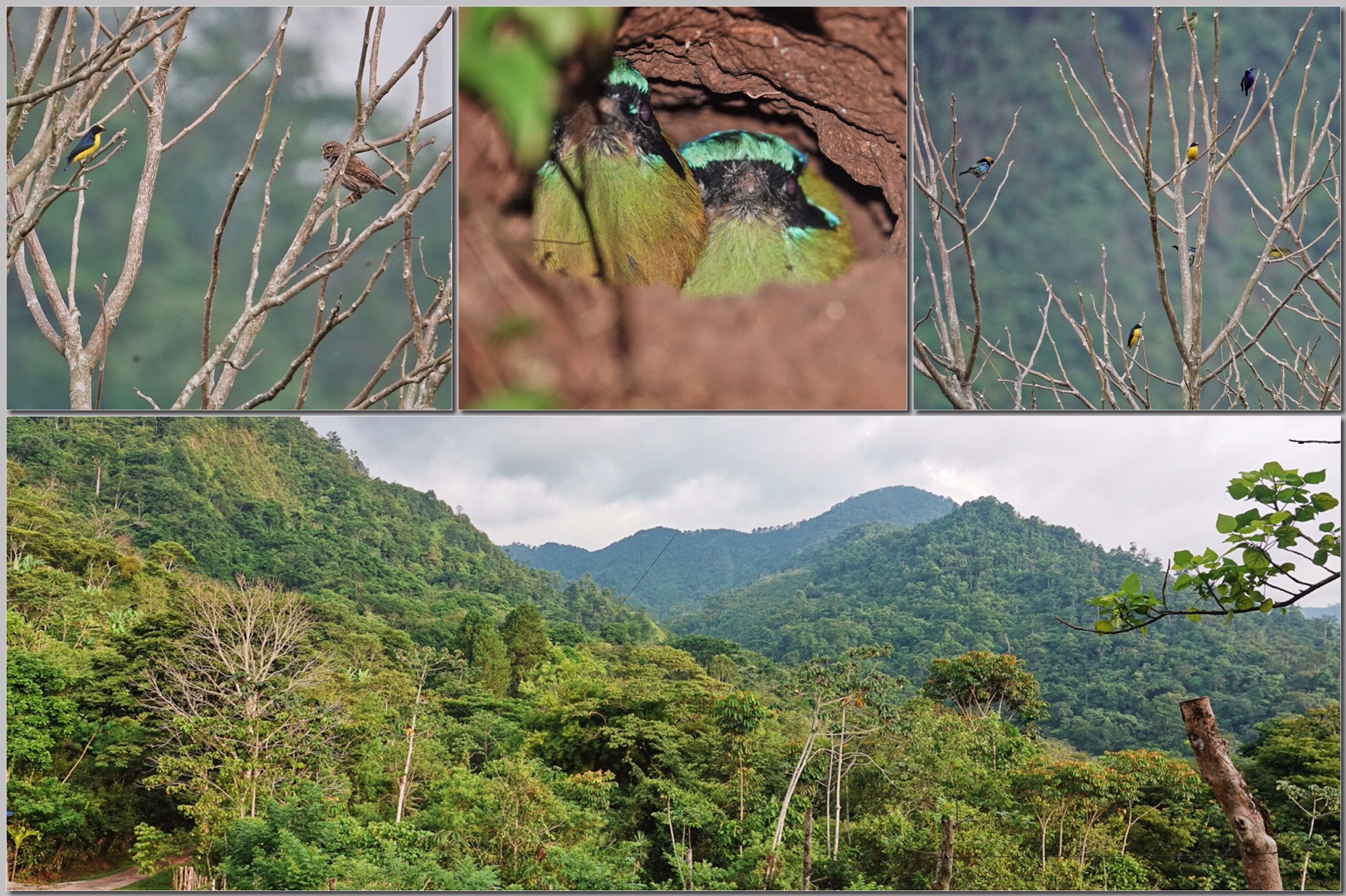
There were reports of an active Ornate Hawk-Eagle nest in the Santa Barbara Mountains (another National Park) so we made a breakfast appointment with Denis and his wife. Denis is one of the local guides being trained by Alex and a local village conservation project, Montana de Vida, run by Robert Lambeck, an Australian who has lived in the area for several years. I had met Denis before, on one of my previous visits to Panacam. One of the aspects of the Montana de Vida project is to encourage the local women to open their homes to birders who visit the area and offer meals. The idea is to convince the local villagers that there is an alternative to cutting down the high forest surrounding Santa Barbara National Park and planting more coffee, and, these days, avocado. We had both breakfast and lunch with Denis and his family.
We were joined for the hike into the Ornate Hawk-Owl nest by Esdres Lopez, another young guide who has worked with the Lodge at Pico Bonito and Alex’s Hondruan Birds, and by Robert Lambeck. The hike was steep, up rough trails that were cut to access a spring and waterline high up at the edge of the National Park. As it happens, we only caught a glimpse of the hawk flying off the nest, and while we waited an hour or so, it did not return…though it had been seen on most other hikes in. So it goes. The hike took us up through coffee and avocado plantations and into the cloud-forest and was totally worth the effort even if we missed our target bird.
You can find out more about the Montana de Vida project at http://www.montanasantabarbara.com/
On the way down the mountain, at the foot of the mountain near Lake Yojoa again, we stopped at the D&D Brewery and Lodge for a home-brewed Root Beer. The craft brewery, and mini nature preserve, attracts birders from all over the world when they visit the lake area, as well as Honduran vacationers. They do beers, root beer, and cola, and serve a menu typical of a craft brewery with a local Honduran twist…not to be missed. (http://ddbrewery.com/)
For my final day at Panacam, Alex took me to area I had never visited. Several years ago, he discovered a population of the endemic Honduran Emerald Hummingbird in the foothills around the El Cajon Hydroelectric dam. Since then, Alex Martinez Matute, a local birder, who owns and operates a restaurant and small hotel inside the El Cajon gates, El Rancho (https://www.facebook.com/hotelyrestauranteelrancho/), has tracked down several near-by locations where it possible to see the Honduran Emerald Hummingbird without taking the long drive into the Aguan Valley to the Honduran Emerald Hummingbird Reserve. He spent the morning with us, and showed other specialties of the area, including the Yellow-tailed Oriole (one of the few reliable populations in Honduras) and the White-necked Puffbird.
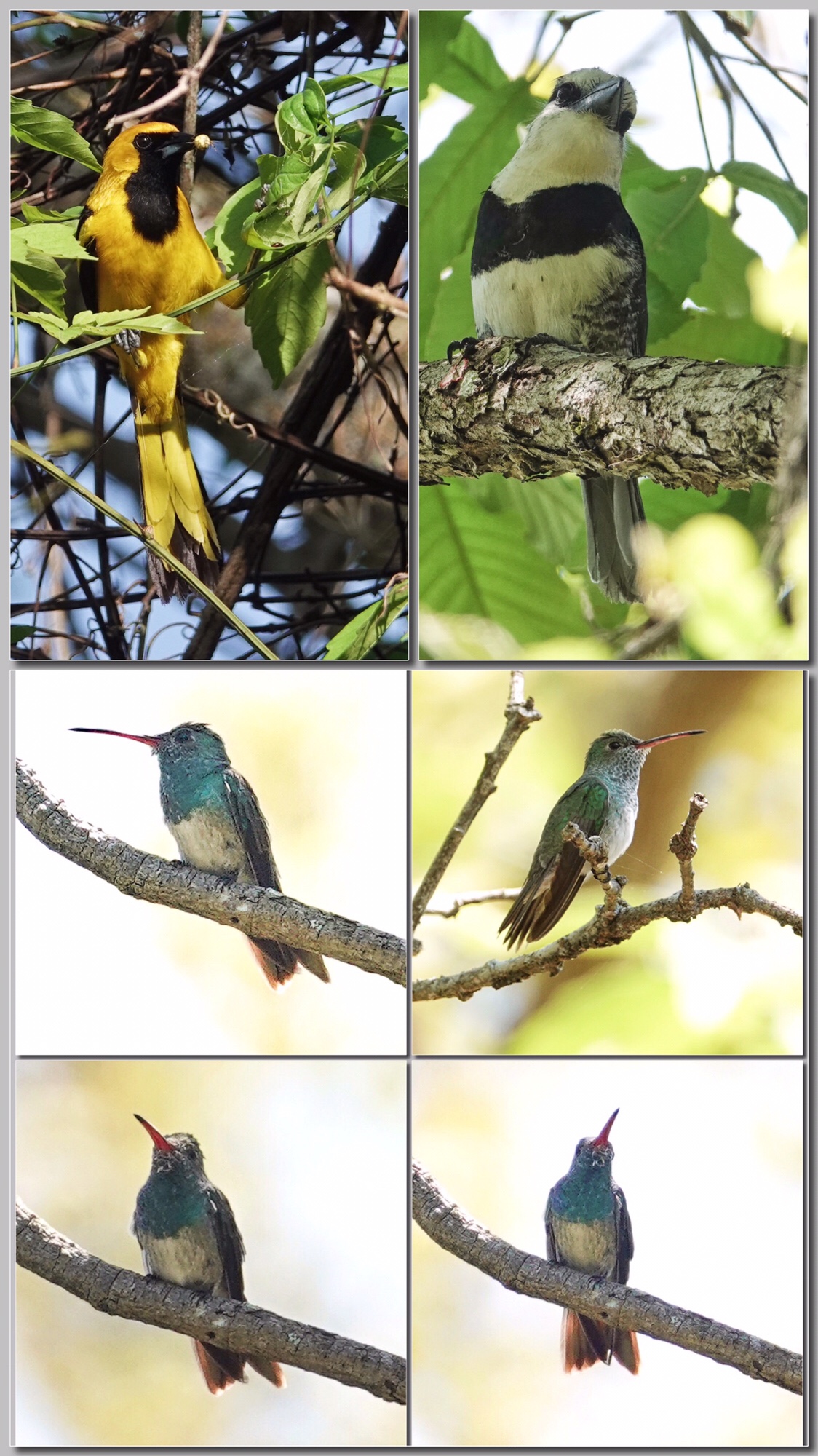
On the way back to Panacam Alex took me to EcoFinca Luna del Puente, a small lodge and campground in the foothills. (https://www.facebook.com/lunadelpuente/) Last time I visited, several years ago, they had nesting Northern Pootoos on the grounds. No Pootoos this time, but Alex led me deep into the thickets behind the lodge to look for the elusive Tody Motmot. The Tody Motmot is the smallest of the Motmots in Honduras and Central America, and the only one without the bobbed tail feathers. We had several good sightings, and even managed a few photos in the semi-dark of the deep undergrowth under the heavy canopy. Right by the lodge we had a chance to observe and photograph a Black-crowned Tityra hunting insects from a low perch.
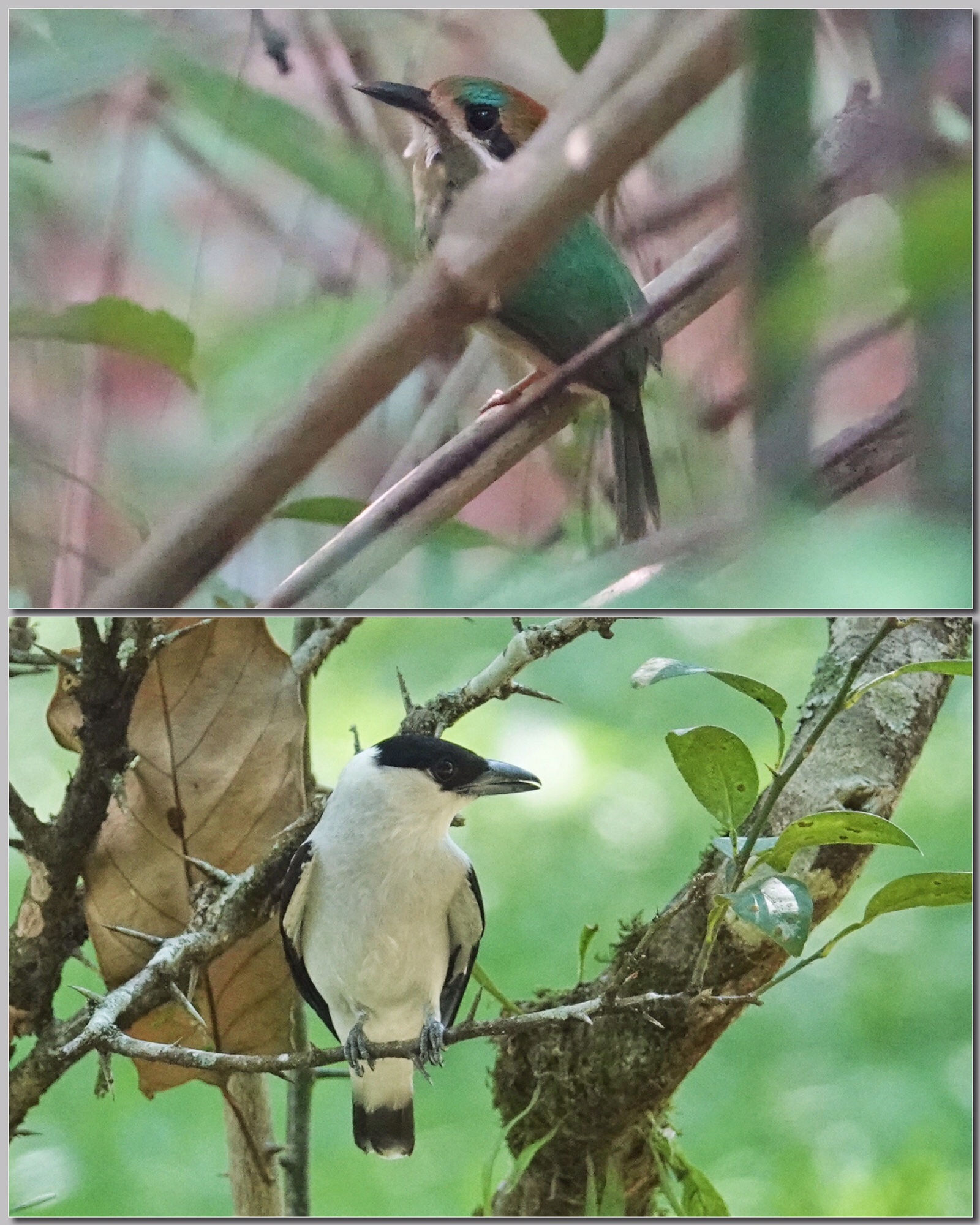
I as due a the airport the next morning for my flight home, so we only did a short walk down the road from the lodge…but we got good shots of Spot-breasted Orioles, Masked Tityra, and a close encounter with the Ferruginous Pygmy Owl. Back at the lodge, just before loading up the car for the final trip to the airport, I got the bird I had been wishing for on my last day…a trogon for Panacam…the Collarded Trogon.
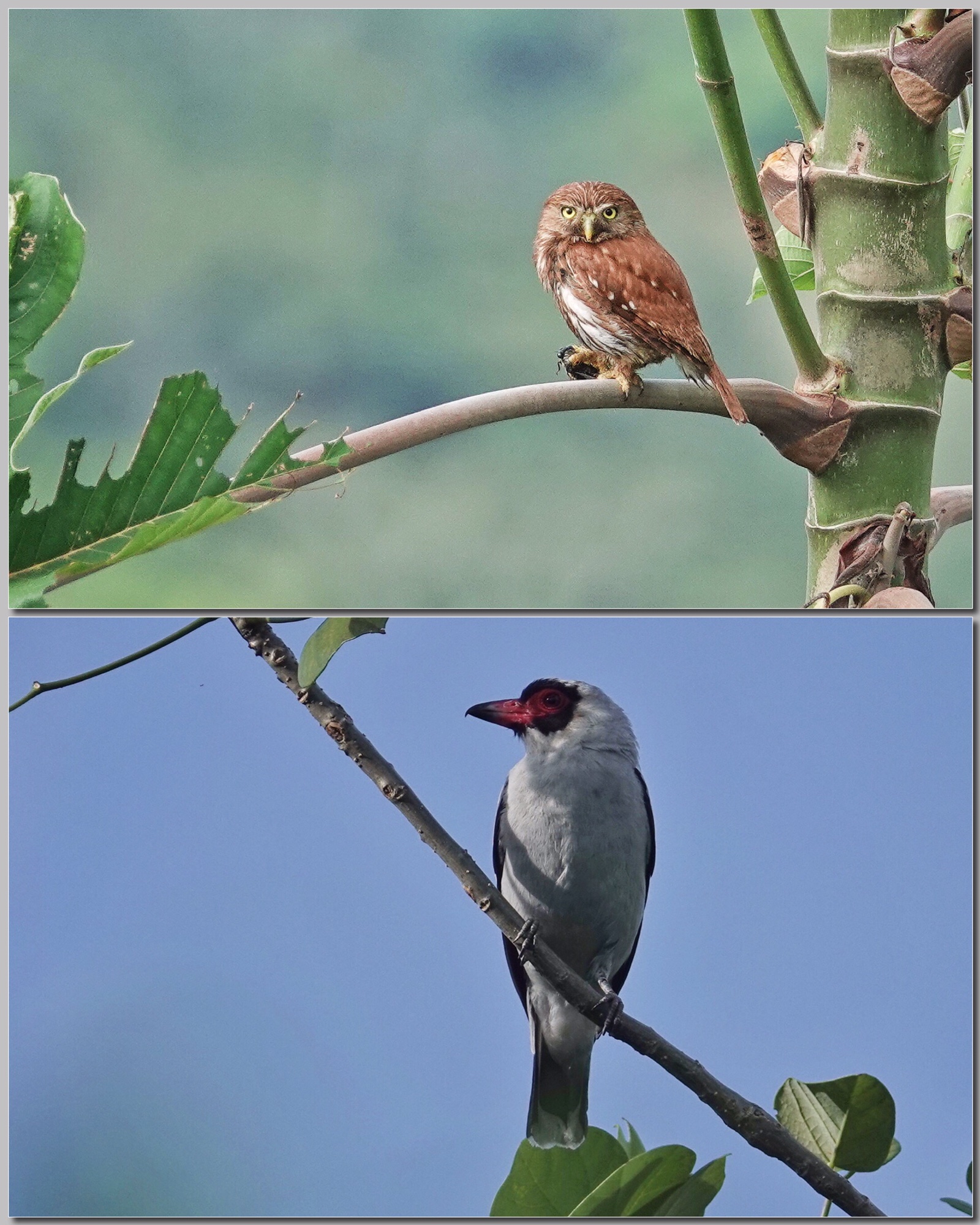
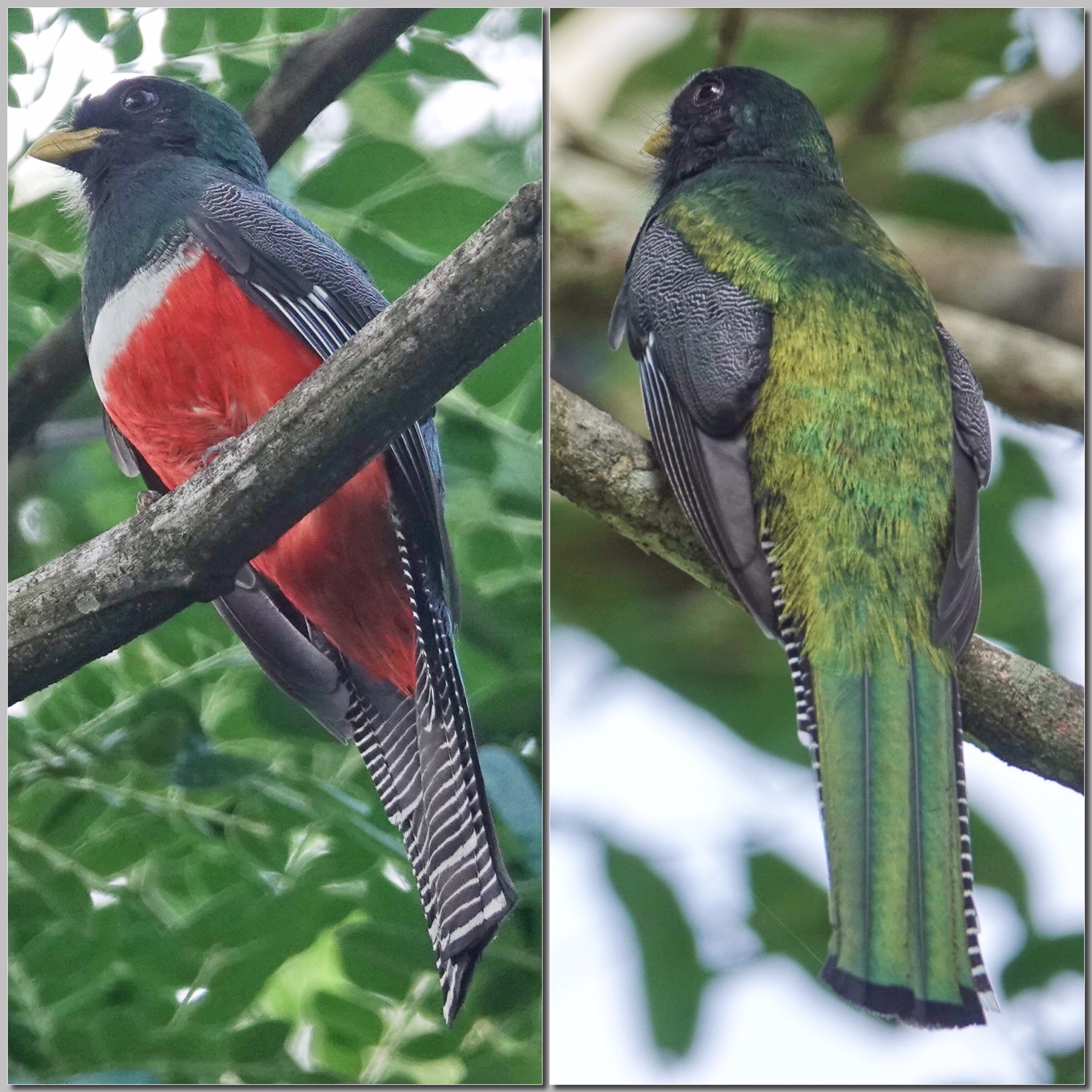
On the way back to the airport, I asked Alex about how he got into birding. I had heard bits of the story in past visits and knew it was a story worth hearing in full. Alex grew up in Honduras and attended a technical school to learn a trade as an electrician. He, along with many Hondurans his age, entered the US illegally, where he worked in the Landscaping industry until he was arrested and deported. Back in Honduras, and settled with his parents in their new home in a village near Copan Ruins, he managed to scrape together a living doing construction work, but his ability to speak English lead to his being asked to help teach the language at a local school. One of his students there told him his English was really good enough so that he ought to find a job in the tourist industry, and introduced him to his father, who was a manager at the Hotel Posada Real de Copan today it is Hotel Clarion . He worked on the desk, and in reservations. As I mentioned the Hotel Clarion has extensive, well landscaped, grounds, and Alex began to notice the birds near the windows of his work area. Soon he was coming to work early to see the birds…and it was only a short step from there to going out into the foothills and mountains around Copan Ruins to find more. “It was my salvation. Out looking for birds I felt whole and sane in a world that was getting out of control.” That lead him to volunteer at the Macaw Mountain Bird Center, where they noticed his interest and gave him his first field guide. Now, of course, he had to see every bird in the book, and he began to horde his days off to travel to other areas of Honduras looking for birds. As his knowledge grew, the folks he worked with at Macaw Mountain offered him a job there as an English speaking interpreter for their guests, and after a short trial period, he took it. Among the visitors to Macaw Mountain was a woman who organized tours from the US. She asked who could show her the birds of the area and the management at Macaw Mountain pointed her to Alex. When she got home she recommended Alex as a tour guide, Later High lonesome Tours came on a exploratory trip to Honduras they asked him to guide them to some of the harder to find birds. That lead to his first organized tour, arranged for High Lonesome the following year, and a real learning experience. “I knew the birds and I knew where to find them, but I knew nothing about logistics…how to move people to the birds.” With help from High Lonesome he was able to master the logistics before the next season and several of the international tour companies used him as their “man on the ground” in Honduras that year. Soon he had a website: Honduran Birds (http://honduranbirds.com/) and a company. Since that he has not looked back. His company provides guiding and logistics for almost all of the international tour groups that come to Honduras, and he organizes his own independent and private tours. His Honduran friends find it hard to believe that in a few short years he has built a business that supports his family…”I have a nice house…I have car…I have a good life.”…but mostly they continue to find it hard to believe that visitors to Honduras will actually pay him to show them birds. He laughs, “They are convinced I am up to something else out there in the jungle with these foreigners.” Honduran Birds has grown to the point where Alex employs several other native Hondurans as guides during his busy season…and he is a mentor for many of the younger Honduran guides. In the low season he also spends a lot of time in local schools introducing the next generation to the wonderful natural resources of Honduras and to the possibilities of nature tourism. There are other home grown Honduran birding companies these days, but Honduran Birds continues to be the “go to” company if you want to see the best of Honduras.
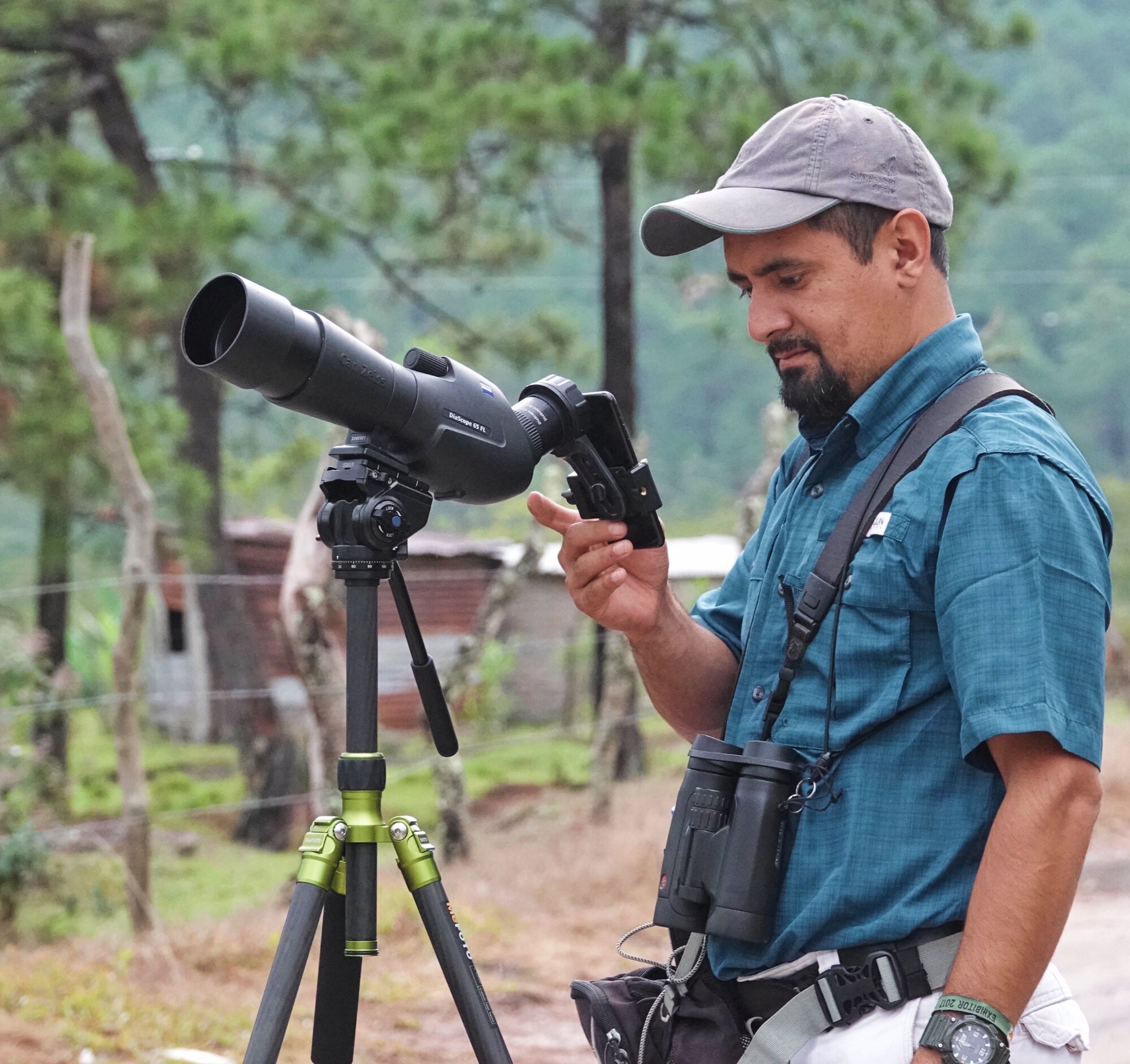
So, you might already know about the Lodge at Pico Bonito, and you might already have been there…but that does not mean you have see all Honduras has to offer. Honduran Birds and Alex Alvarado can show you much more on your next, or your first, visit to Honduras.
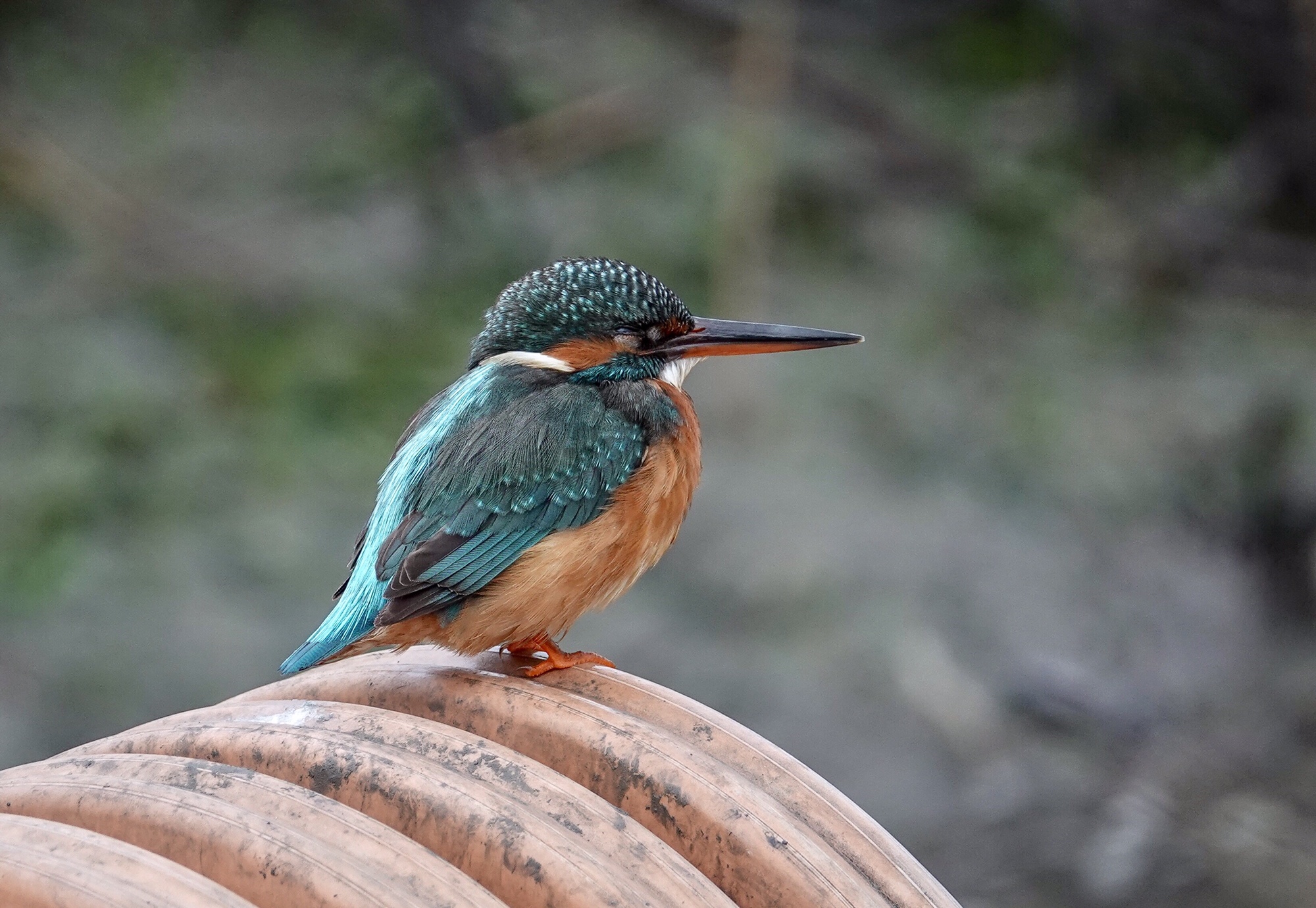
Note: I will be returning to southern Portugal in the spring of 2019 for more breeding birds and the hillsides covered with wildflowers, as well as the attractions detailed below. If you would like to join me check out the info here.
Let’s cut to chase: if you want to see the most iconic European birds, and you want to see them in a few days, without traveling long distances between birds, then there is simply nothing to equal Portugal, and southern Portugal in particular. Between the Tagus Estuary and the coastal areas north and south of Lisbon, and the steppe and canyon country of the Alentejo between Castro Verde and Mértola, you will have good scope and binocular views of all the most sought after European species. If you add a day in marshes and tidal areas of the Algarve just to south, you will pick up most of your remaining target birds. And all of this is within a day’s drive from the international airport in Lisbon. Conceivably you could find, in two spring days based in Lisbon, all the birds you would spend two weeks seeking out in other countries of Europe. Sound too good to be true?
My visit was in winter when wintering birds replace nesting and migrant populations, so I missed some highly sought after birds (European Roller, Bee-eater, Lessor Kestrel, Black Stork, etc., all easy in the spring), but my trip certainly demonstrated the potential. In five days, we saw Little and Great Bustard; Imperial, Golden, and Bonelli’s Eagle; White Stork and Flamingo; Squacco Heron, Little Bittern, and Purple Swamphen; Black-bellied Sandgrouse (1) and Black-tailed Godwit (1000s), Red and Black-winged Kites; Little Owl; 1000s of Azure-winged Magpies and Northern Lapwings; several Hoopoes; and all of the common winter passerines, from European Robin and Goldfinch and Eurasian Tree Sparrow and Corn Bunting to the ever present and highly variable Chiffchaffs. We even had a glimpse a very rare vagrant from the East, the Dusky Warbler. Again, all of this within 2 hours of Lisbon. The trip was organized by João Jara of Birds & Nature Tours Portugal, and guided by Helder Cardoso. Birds & Nature Tours Portugal is oldest and most experienced birding and nature tour company in Portugal, and certainly my recommendation. They know the birds and the country better than any other group, and work hard on every trip to show you all the birds you came to see. And besides, they are just really wonderful people to spend time with.
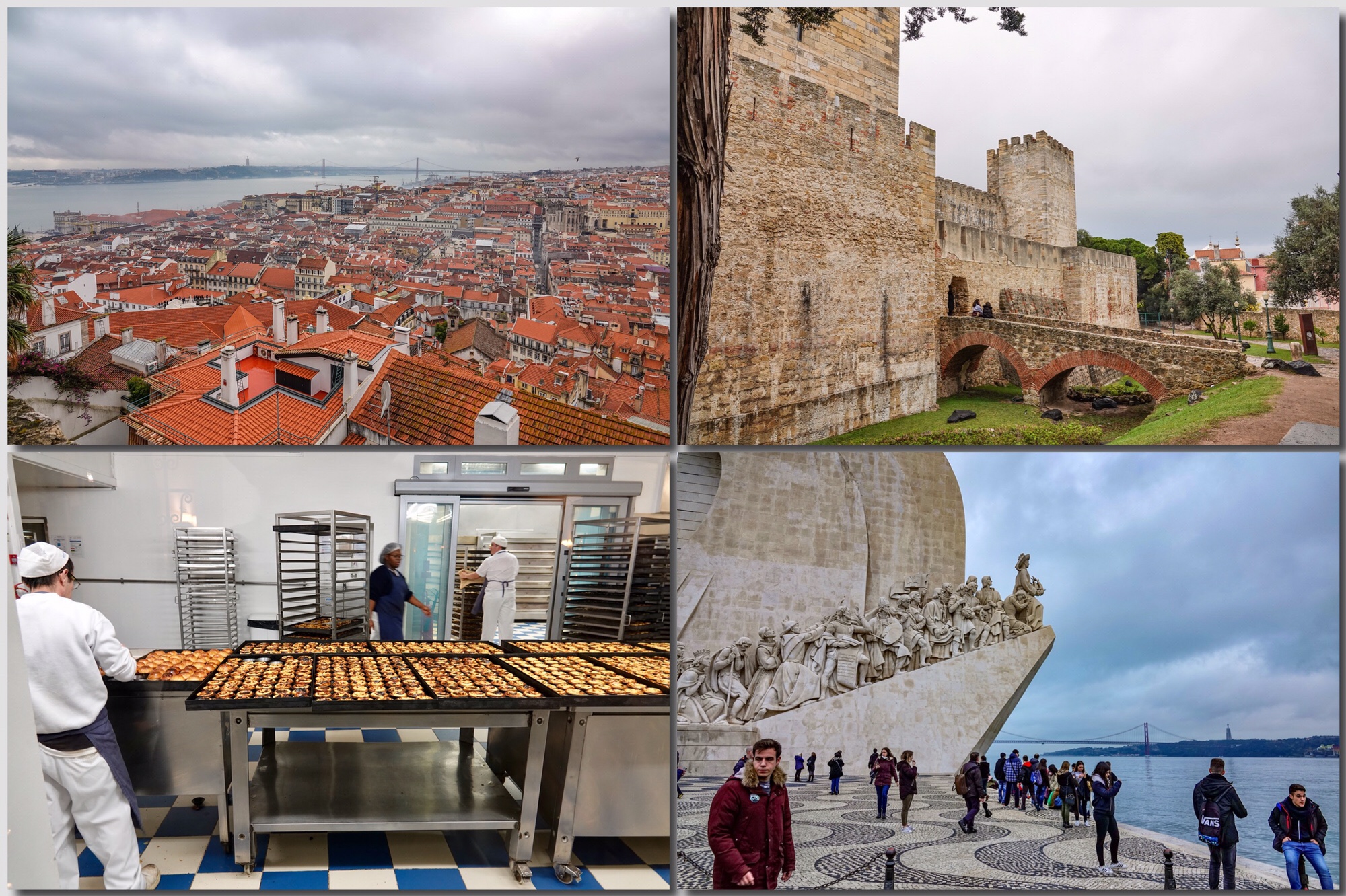
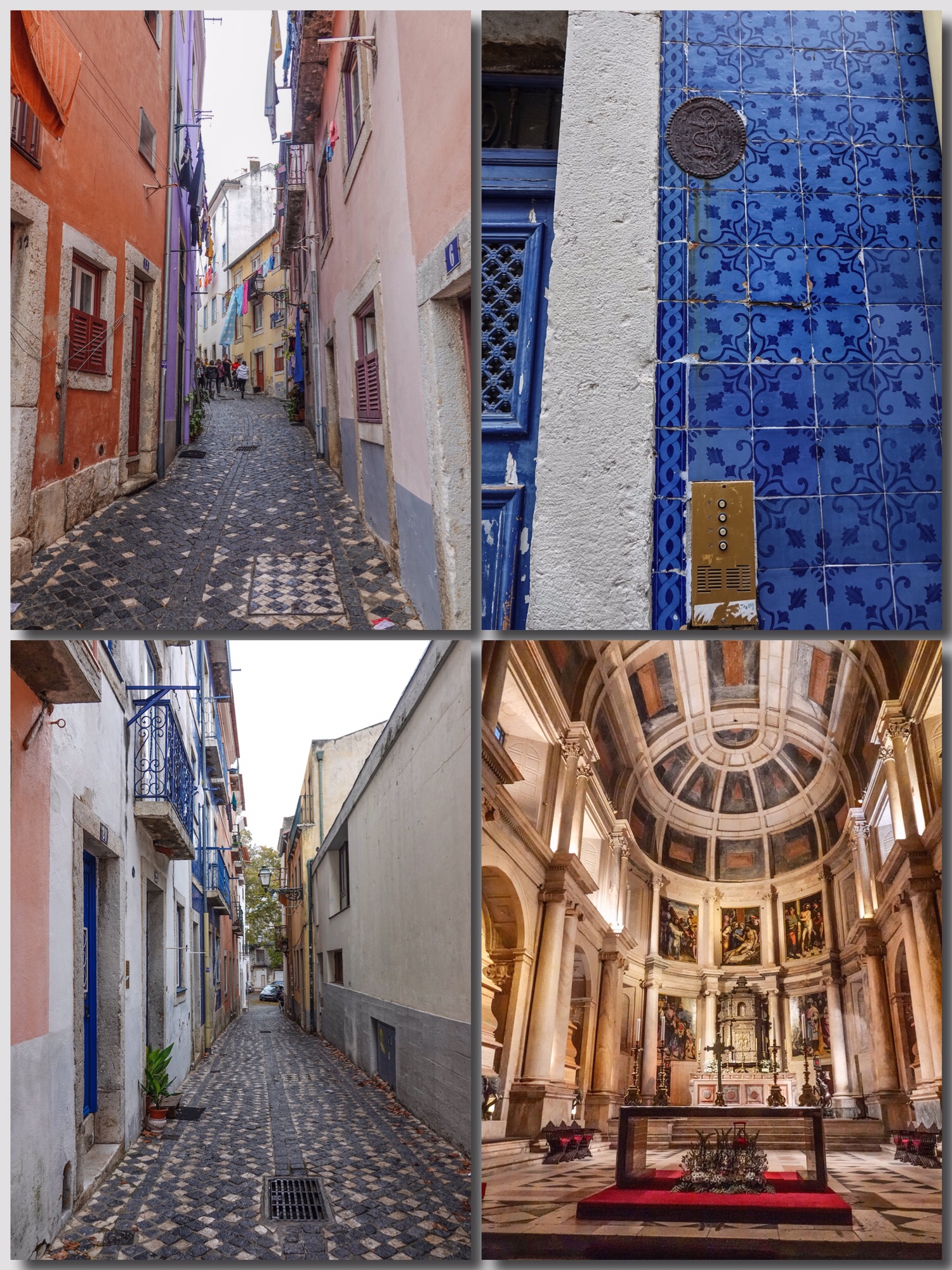
For ease and comfort I spent 3 nights in Lisbon (though Birds and Nature Tours groups often stay across the river nearer the Estuary). My visit started with a tour of Lisbon itself, which I highly recommend including in your itinerary. The city is full of interesting history dating back before Roman times. The monuments to the age of Discovery are worth seeing, as are both the older and more modern sections of the city. I spent an interesting evening with Miguel Gonzaga, head of tourism programs for the City of Lisbon, talking bird conservation and tourism. Lisbon is committed to working with João and other tour leaders to promote southern Portugal as a birding destination. They are aware of the challenges and of the potential. I was impressed. (I want to thank Turismo de Lisboa for helping to making my trip possible.)
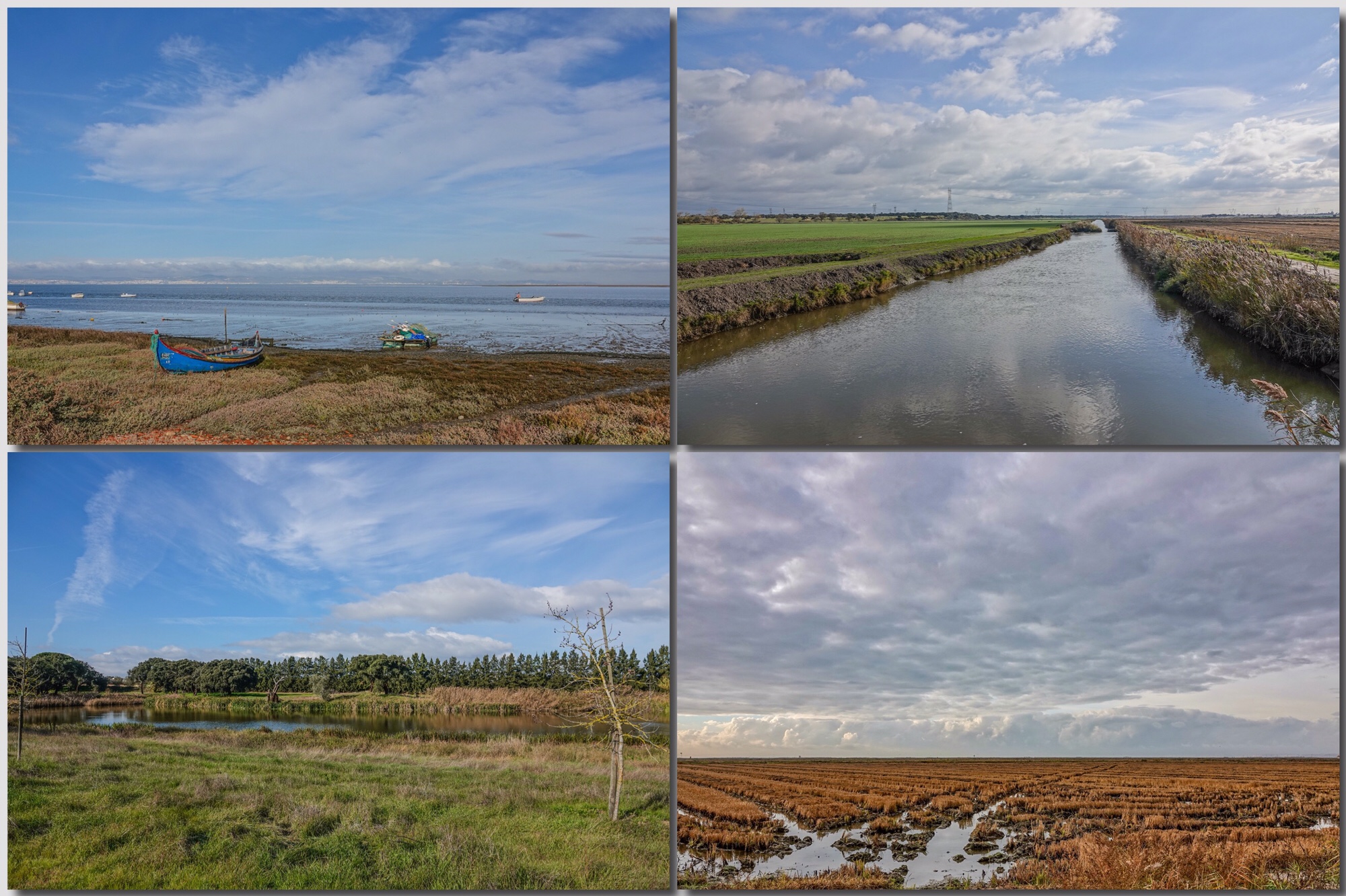
The following two days, Helder took me to the Tagus Estuary across the broad Tagus River from Lisbon. The Tagus Estuary is a “reserve” focused on bird conservation, but reserve in Portugal means something different than most Americans, used to our developed National Wildlife Refuges, National and State Parks, and conservation areas will expect. The Estuary is mostly rice fields, and aggressively agricultural, and though access is limited, there are no official tour loops or trails. When you visit, you drive the dyke roads between the rice fields, or visit a few spots what give access to the mud flats at low tide. There is a Visitor Center of sorts, the EVOA Center. It is actually an Eduction and Research station (Bird Observatory), funded by the Tagus Estuary Land-owners Association and both government and private funds with an ultra modern natural looking building, man-made lagoons and traditional hides (blinds) for viewing birds, but it is still very much under development. One of the most interesting places we visited was a farm just at the edge of the estuary where the ground begins to rise, where a fresh-water pond in a Cork Oak grove is home to both Little Bittern and Purple Swamphen, and the surrounding grove is full of passerines. Birds and Nature Tours Portugal has an arrangement with the land owner for access.
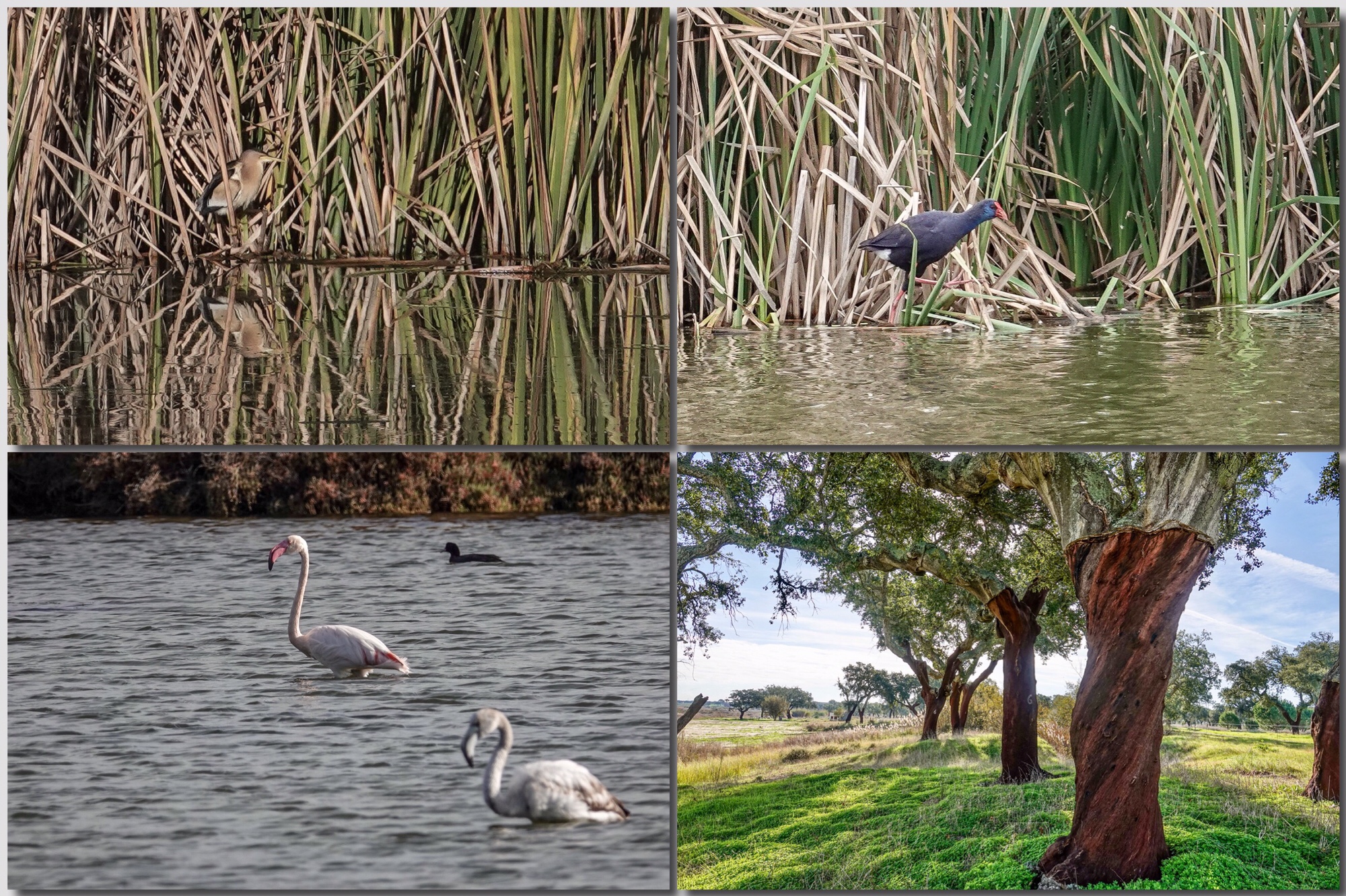
Cork is one the major exports of Portugal, and you see Cork Oak groves everywhere the land is suitable, generally with pigs grazing on the acorns under oaks. All cork in Portugal is protected by law, and very carefully managed. It takes 18 years for a cork tree to reach the size where the first layer of cork can be stripped…and that cork is of no use. You have to wait 9 more years for the cork layer to grow back before you get usable cork, and then the tree can only be harvested every 9 years after that. Clearly cork is a long term investment. As Helder said, you don’t plant cork for yourself…you plant it for your children.
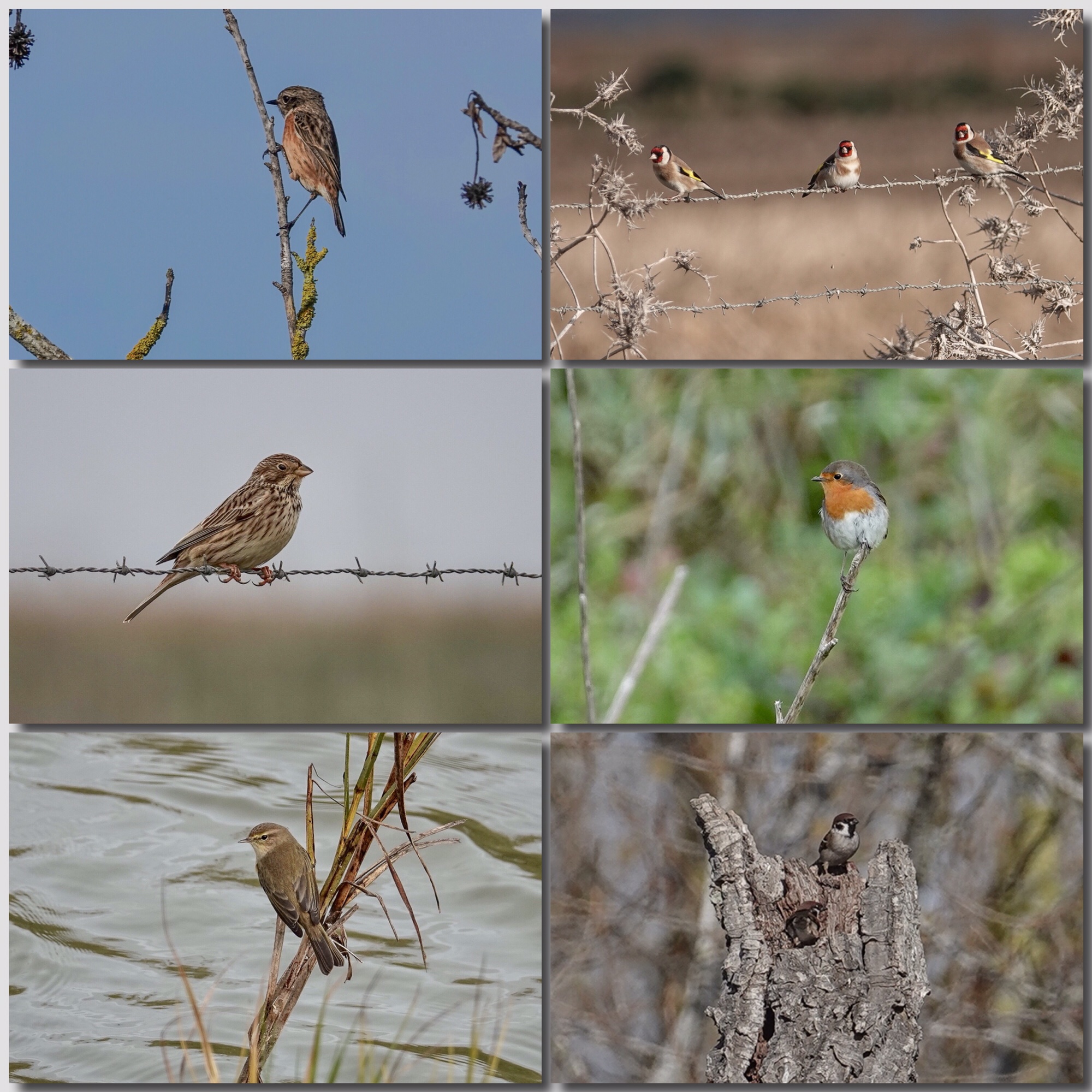
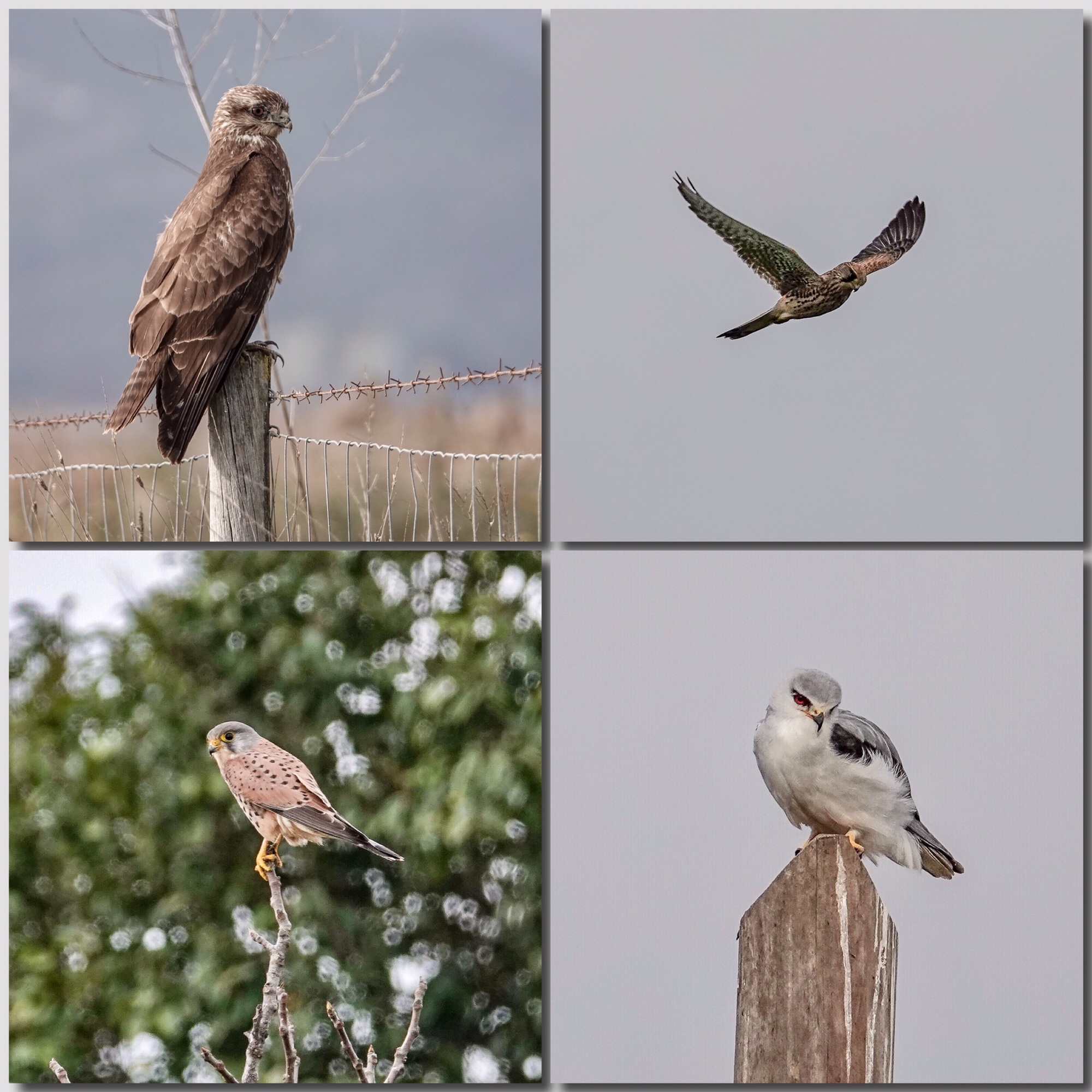
Because I was primarily interested in photographing birds, we spent more of our time at the north end of the Estuary in the rice fields than we did scoping the mudflats. In the rice fields smaller birds often perch relatively close on the road-side fences, and raptors perch on anything with any height (we saw our only Bonelli’s Eagle perched on a high-tension tower in the Tagus). White Storks wander the dryer fields, while flocks of Godwits, Glossy Ibis, Avocets and Stilts hunt the shallow flooded fields. And Snipe. 🙂 We found the flock of Little Bustards, and glimpsed a Great Bustard off across the fields near the EVOA center. The highlights of the Tagus Estuary for me were 1) a very close view and photographs of a European Kingfisher perched on the end of a drain pipe early one morning (seen at the top of this post), and 2) the Squacco Heron, probably the most difficult Heron to see anywhere in Europe that we finally saw on our 4th attempt in its territory, on a detour from our route home to Lisbon on the last day.
I am always looking for landscapes, and the unique nature of the both the land and sky of the Tagus Estuary, with the hills behind Lisbon, gave me several opportunities.
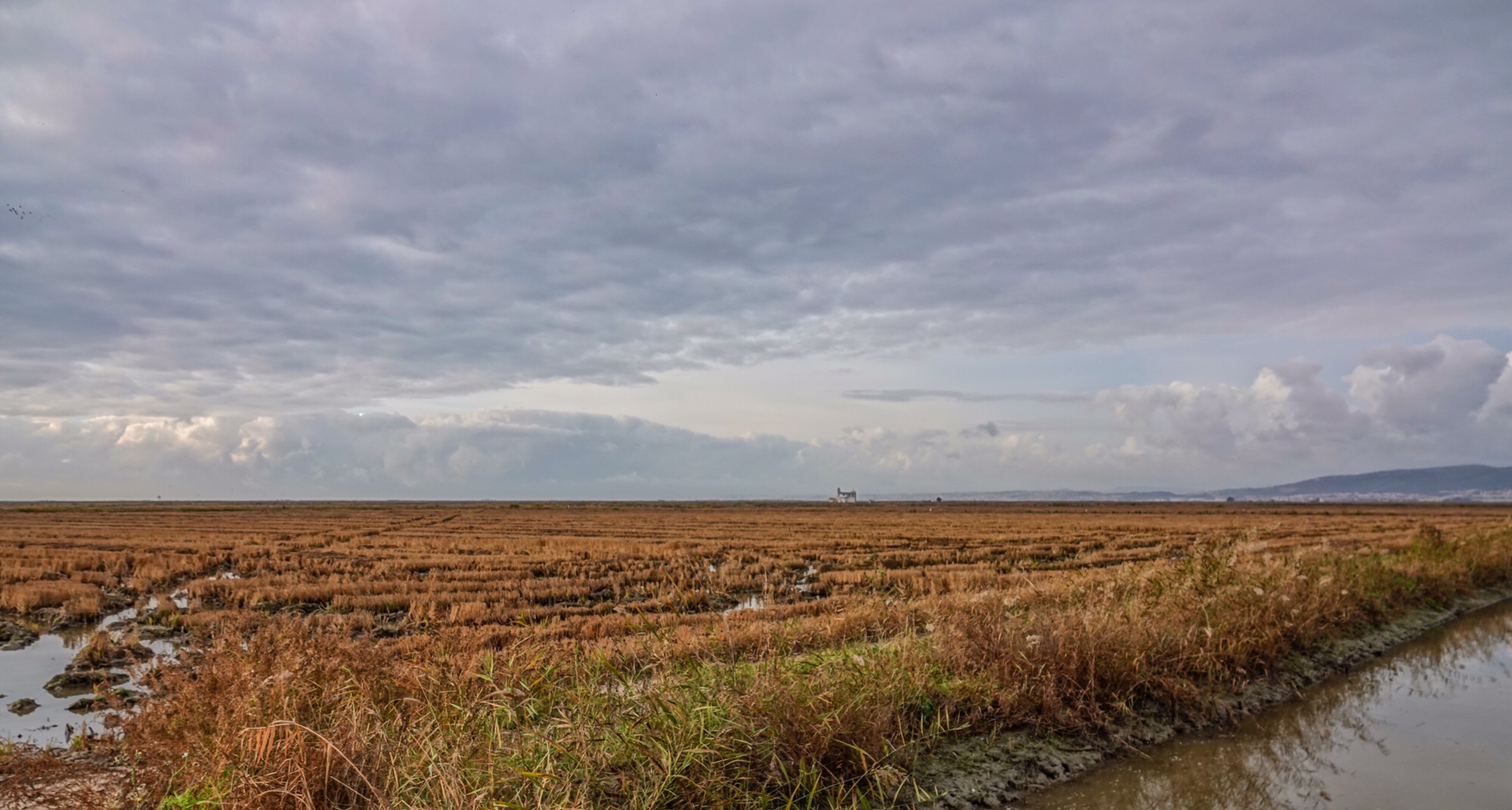
After two days in the Tagus Estuary, we headed inland toward the steppe country around Castro Verde where we hoped to find closer looks at Great Bustard, and locate some Imperial Eagles. Our first birding stop was a hill-top chapel that featured a spectacular 360 degree view out over the rolling hills of the region, and, on a good day, often provides views of Eagles and Kites riding the thermals. I can’t say we were there on a bad day, since, for me, the view and the interesting chapel were worth the visit, but the raptors did not cooperate. We spent the late morning and afternoon driving the roads looking for Bustards and Eagles.
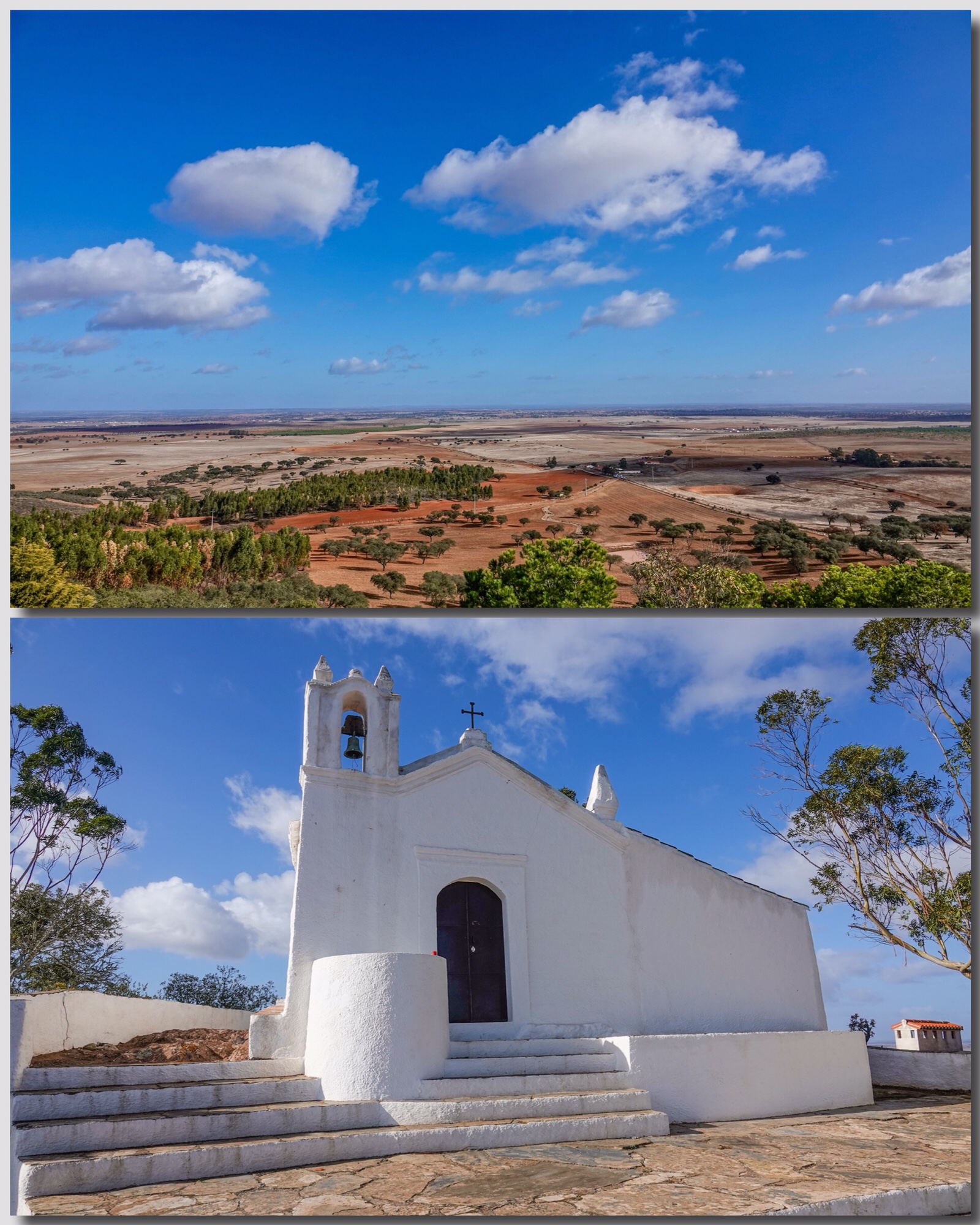
We had several sightings of Bustards, far off across the winter fields, and finally found a small flock feeding over a rise from the main road between Castro Verde and Mértola. We were able to park the car and walk to the top of the ridge for a slightly closer view and some photographs…still at the far range of possibility. Magnificent birds in the scope. And I got proof that they can actually fly, as they did just that after about 10 minutes of observation.
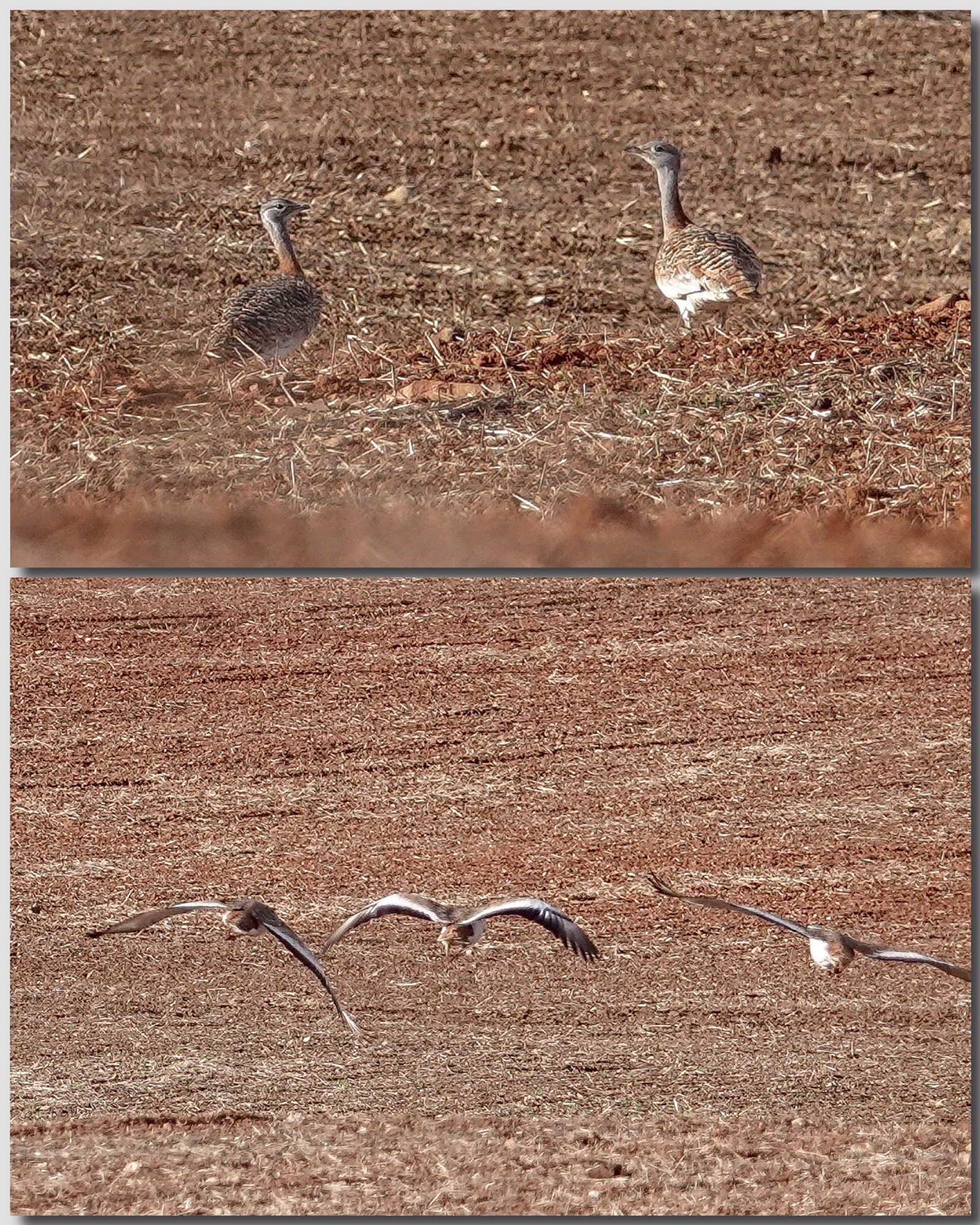
We located two juvenile Imperial Eagles soaring over the hills north of the route from Castro Verde to Mértola, near a known active nest. They were this year’s hatchlings, still hanging out on territory. I was able to get some decent flight shots as they came right overhead. Later, near a irrigation dam feeding a huge olive grove between the hills north of Alvares, we spotted three Golden Eagles on a far ridge. Good Scope views but too far for photography. On the way into the dam, we found a Little Owl in one of it favored roosts in a pile of stones left from an old building right next to the road. Both Red (native) and Musk (not native but certainly naturalized) Deer wandered the hillsides above the dam.
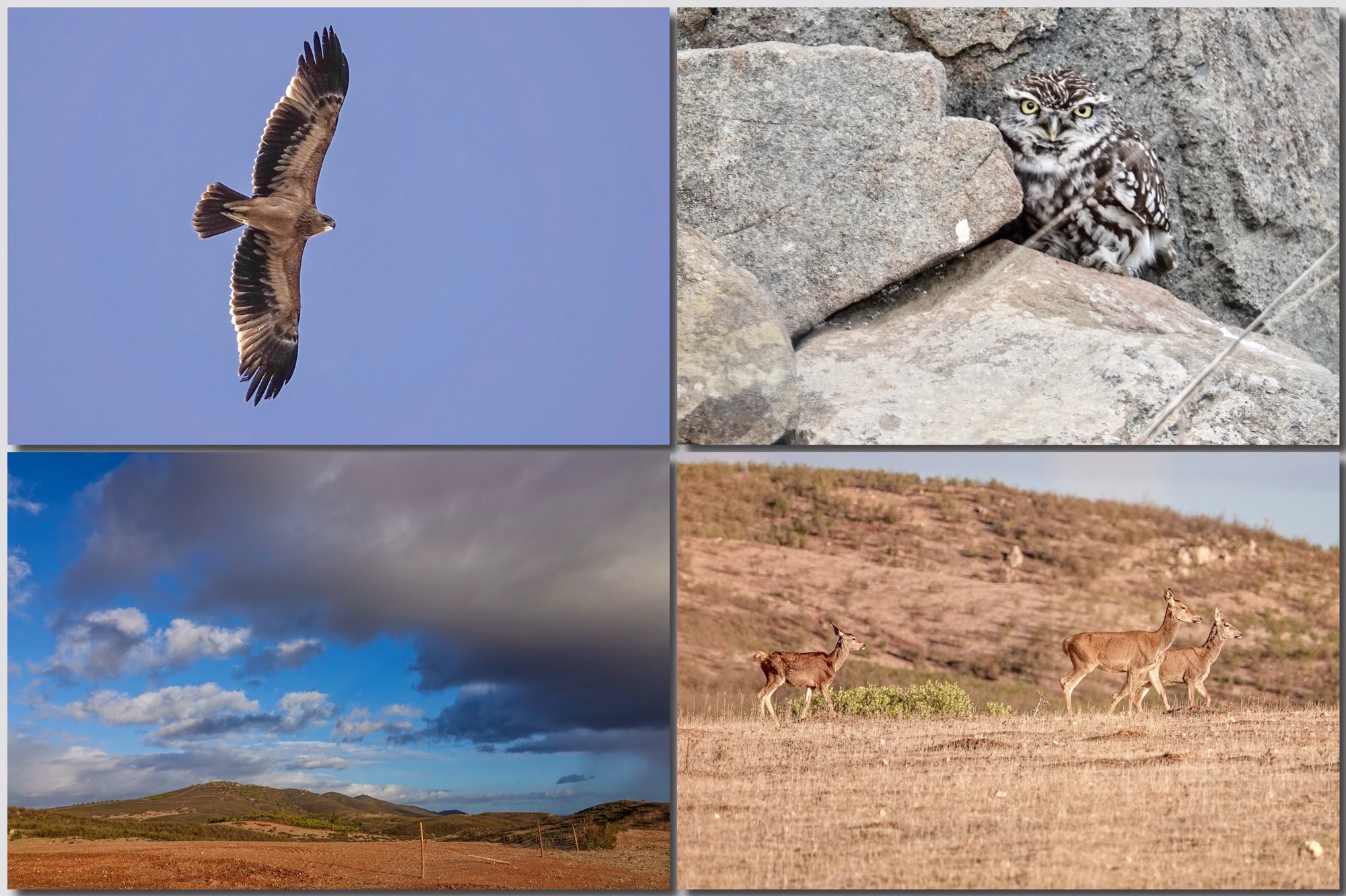
We chased a rainbow all the way back to Mértola and our hotel, and stopped to photograph it above the classic white hilltop village of Alvares.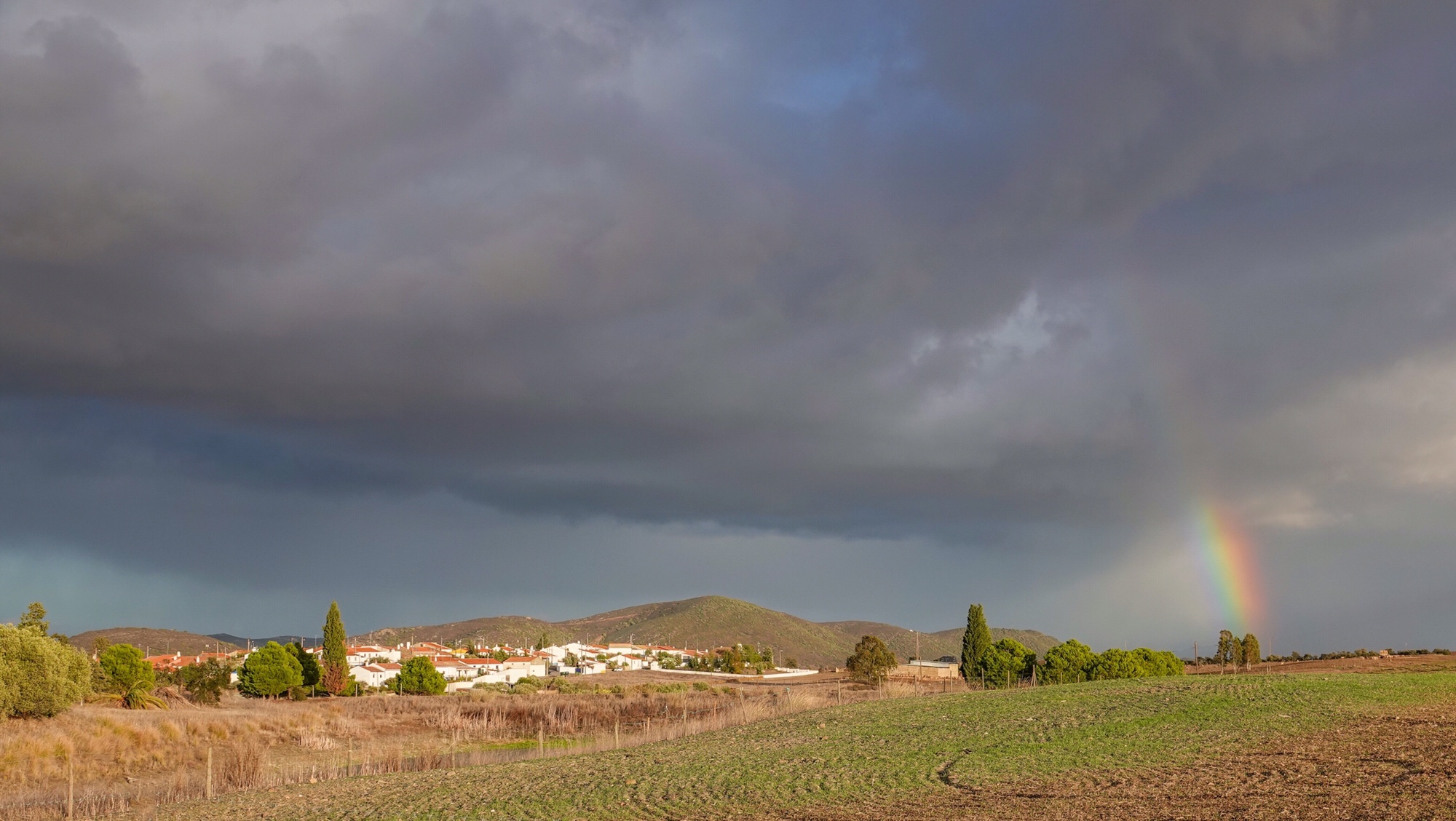 The highlight of the next morning was a single field where we stopped to scope Eagles on the ridge. They were immature Imperial’s, probably the same two we had seen the day before, but while stopped we located a Great Bustard, perhaps playing lookout for a group concealed in folds in the landscape, and a lone Black-bellied Sandgrouse, much closer. That makes three of most sought after birds of the region in a single stop in a single field. And, of course, Red Kites circled and there were the ever-present (in winter in southern Portugal) Northern Lapwings.
The highlight of the next morning was a single field where we stopped to scope Eagles on the ridge. They were immature Imperial’s, probably the same two we had seen the day before, but while stopped we located a Great Bustard, perhaps playing lookout for a group concealed in folds in the landscape, and a lone Black-bellied Sandgrouse, much closer. That makes three of most sought after birds of the region in a single stop in a single field. And, of course, Red Kites circled and there were the ever-present (in winter in southern Portugal) Northern Lapwings.
Again, my birding in the Alentejo consisted mainly of driving the rural (often one lane) roads to see what we could find. Helder and João are both in the region most weeks of the year, so they know where to look and what they are likely to find in any season, but it is a different kind of birding than most Americans are used to. There are fewer trails (though João tells me that there are more than I hiked in my short time there…several of which are usually included in the longer trips). There are very few observation blinds. We rarely get out of the car unless there was something that required a scope view. In addition, there are few concentration points where the birds reliably gather in any number. There is a lot of good habitat and the birds can be spread thin. Still, in course of our morning, we had most of the common wintering species…and good looks at most of them. I was able to photograph my Hoopie and Great Spotted Woodpecker out the car window.
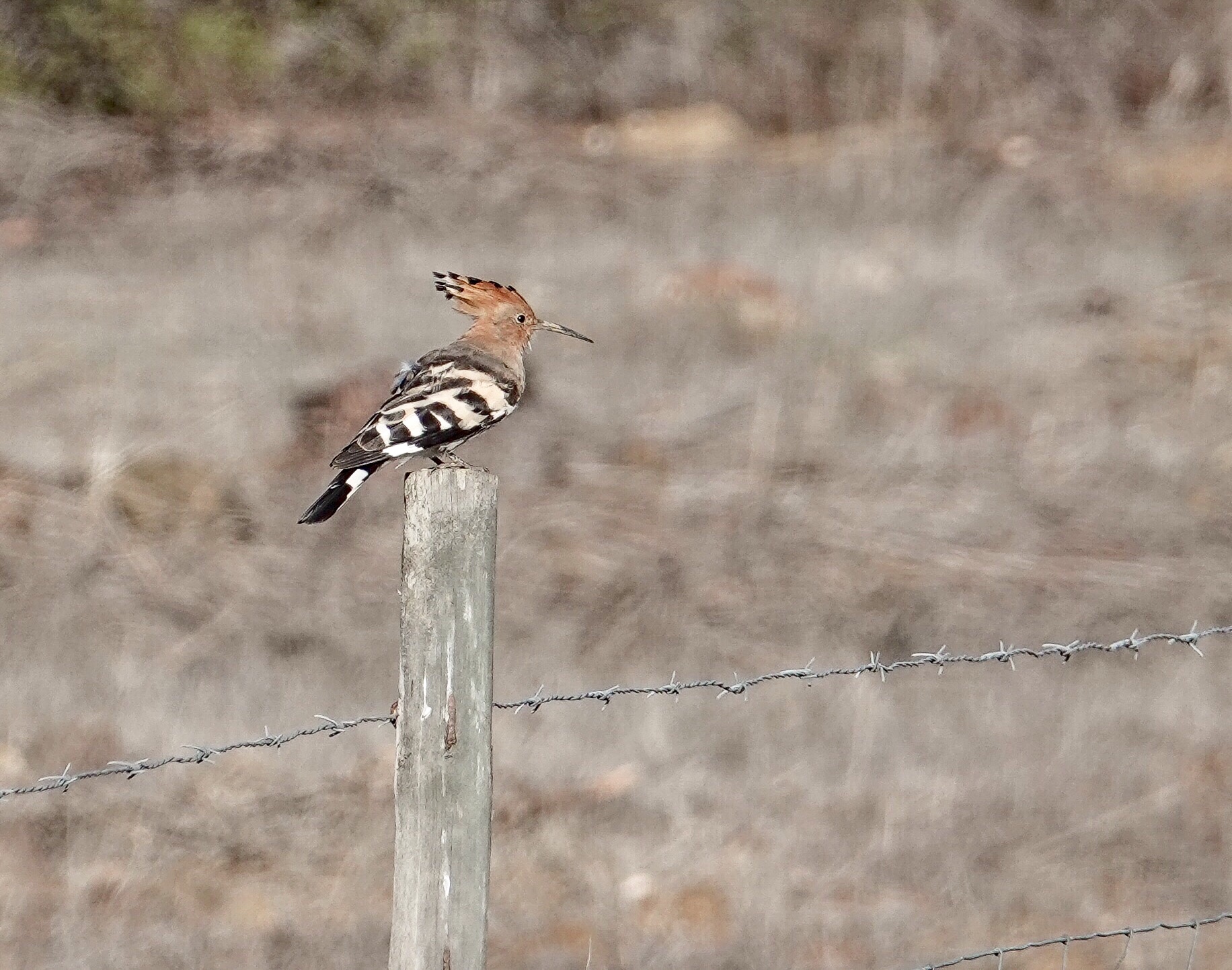
We were back in Mértola for lunch, which included coffee with the Vice President of the Municipality, Rosinda Pimenta, who manages tourism in the region. She is energetically enthusiastic about developing the area as a birding destination, and very aware of how birding and nature observation and photography can be part of the sustainable future she sees for Mértola. Mértola is the 2nd largest Municipality in Portugal, and its most scarcely populated. People visit for the scenery, the hunting (Hunting Capital of Portugal according to the sign), the history (the whole village is one huge museum and archeological site, with settlement dating back to before Roman times, and activity in every age since), and, hopefully, as it develops, the birding and nature observation. They realize their limits…it is a small village with a small number of hotel beds…and they lack the infrastructure (trails, blinds, public access to birdy and wildlife observation sites…but they see the potential. They are actively introducing the local population, merchants, and land owners to the idea that birders and photographers can make a valuable contribution to the economy. Birding is not yet well known as leisure activity in Portugal as a whole, and practically unknown in Mértola. João encourages his birders to wear their binos into the hotel and restaurants just so locals can get used to idea of birders in town. One point the VP made was that birders and nature lovers can feel good about visiting Mértola because they are contributing to the survival of the Municipality at a time when it is becoming more difficult to find employment and a viable lifestyle in the region. (And again, I want to thank the Municipality of Mértola for sponsoring part of my trip to Southern Portugal.)
From every standpoint, Mértola has a lot to offer. Because of my general photographic interest, we spent the early afternoon touring the village, hiking up to the 11th century castle on the top of hill, and the equally as ancient church (originally a mosque) within its walls, viewing the excavations in the Moorish village that once hugged the castle walls and visiting the reconstructed Moorish home on the site, and photographing the ancient streets and buildings. We were staying at the Hotel Museu, or Museum Hotel, which is actually constructed around and above a excavated moorish dwelling from the 12th century.
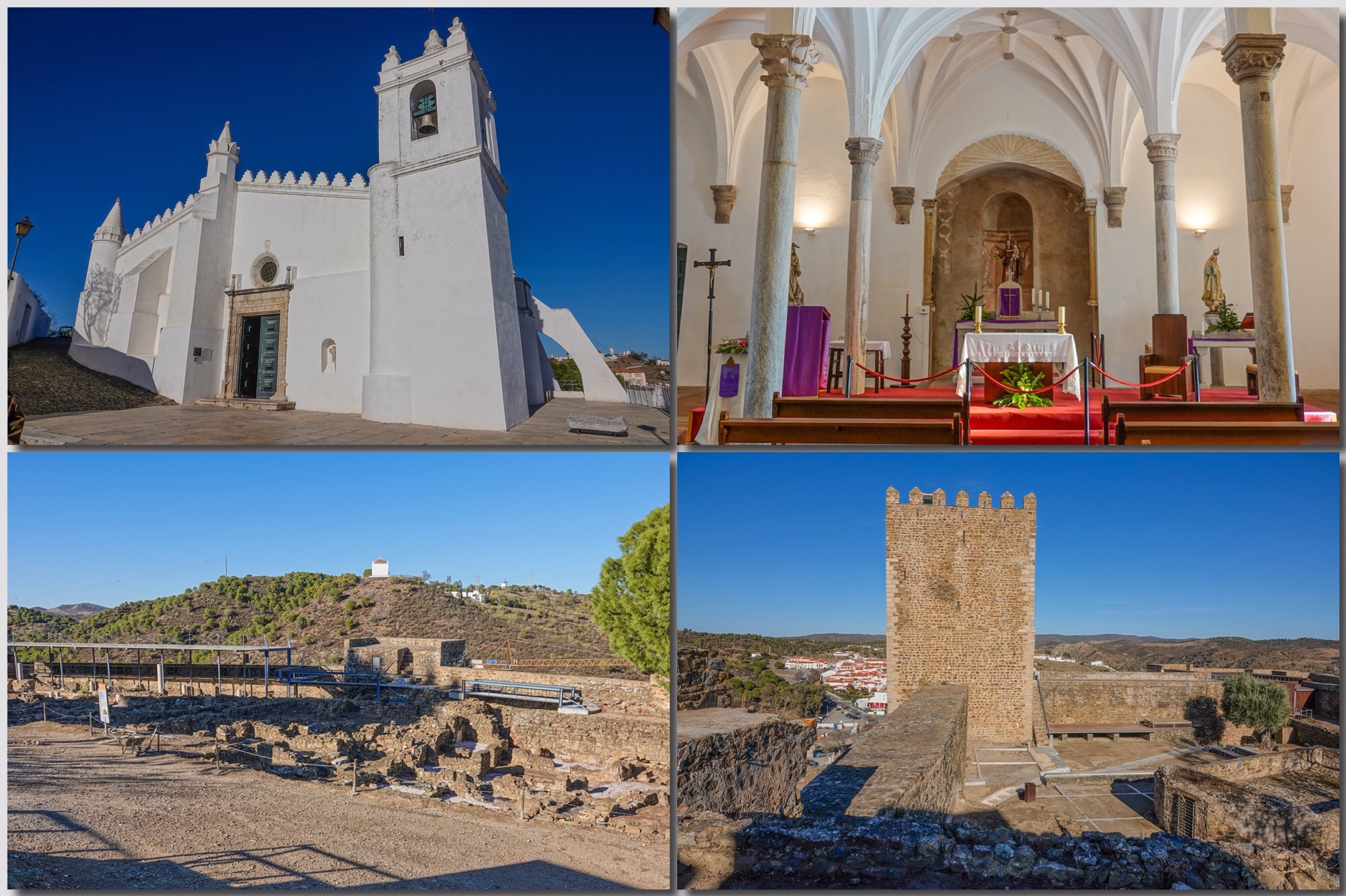
On the way back to the hotel I encountered flocks of Azure-winged Magpies and Linnets, and later in the afternoon we drove out across the river and along the top of the river canyon to a gap in the hills where Bonelli’s Eagles nest. The eagles did not show, but the drive includes the classic sunset shot of Mértola, from Castle to river, glowing white in the low light.
 The landscape around Mértola is also interesting from a photographic point of view. I got lots of satisfying shots. In spring, Helder assured me, the hillsides are carpeted with wildflowers, which makes the landscape even more interesting.
The landscape around Mértola is also interesting from a photographic point of view. I got lots of satisfying shots. In spring, Helder assured me, the hillsides are carpeted with wildflowers, which makes the landscape even more interesting.
The following morning was my last in the field, and we drove north to Wolf’s Leap (Pulo do Lobo), a famous waterfall and canyon on the Guadiana River where it narrows. The story is, a wolf fleeing hunters leapt the river above the falls. It is a very scenic area, and, in spring, an excellent birding location. Almost last, but not least, on our way back to Lisbon we visited the Mourisca Tide Mill in the Setubal wetlands, another reserve right on the coast south of the city. We only had time for a brief stop, but the potential here is great. For one thing, the constant human traffic to the museum and coffee shop in the Tide Mill means the the birds are not nearly as skittish as elsewhere in Portugal, allowing for some close observation and photography. Finally, we made a detour off our main route to the city to take one more crack at the Squacco Heron. Helder insisted that it was generally much better behaved (and visible) than in our previous visits…where the most we saw of it was the bird flying away across the marsh. 4th time is charm. It was not on its perch near a small one-lane bridge, but we found it in dead water plants near another bridge a quarter mile on. Considering how difficult this bird is to see anywhere in Europe, I was happy with my views.
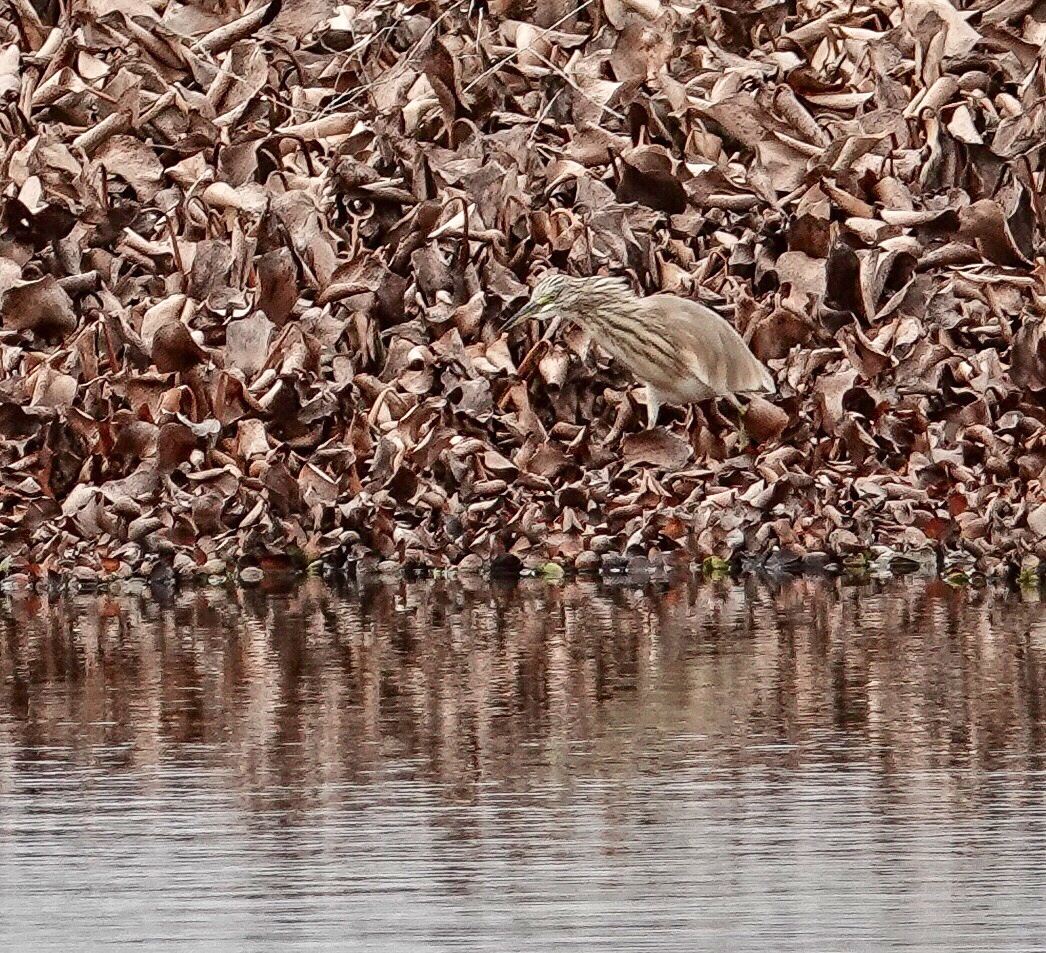
Helder dropped me off at the hotel in Lisbon and I caught my flight home the next morning.
To summarize…well I can’t say it any better than I did in the introduction. “Conceivably you could find, in two spring days based in Lisbon, all the birds you would spend two weeks seeking out in other countries of Europe.” And that is not an exaggeration in any way. Bird photography is a bit more challenging, as it would be anywhere in Europe, but if close views can be found, João and Helder will find them for you. I hope to get a group together for the spring of 2019 to see and photography the birds and landscape of southern Portugal with Birds & Nature Tours Portugal. We would work the area around Lisbon and definitely visit the Alentejo and Mértola, with a possible extension to the Algarve (there are a lot of pelagic species and shorebirds that can be seen closer to the coasts): an easy, relaxed tour of 10-12 days which would promise just about all of the classic European species and some wonderful landscape and village photography. (João tells me that by the spring of 2019 he hopes to have several more blinds in place for hard to photograph birds.) If any of my readers are interested, please contact me at lightshedder@gmail.com for more information. Or contact João Jara at Birds & Nature Tours Portugal at joao.jara@birds.pt for one of his regularly scheduled tours.
Or visit Birds & Nature Tours Portugal on the web.

Note: I am returning to Costa Rica in December 2018 for another amazing photo adventure. Join me there. Info.
I have been to Honduras seven times, and to Panama twice, but until this past October, I had never been to Costa Rica. No Central American traveler or photographer can afford to miss Costa Rica. Costa Rica offers rich and diverse bird and wildlife in a country with a well developed ecotourism structure, and an eco-friendly ethic that produces some of the finest observation and photography opportunities to be found in Central America. The lodges are well established and comfortable, the roads are, for the most part, good, there is a whole industry devoted to getting tourists around, the people are friendly, and at least the ones I met, are used to dealing with people who have come to enjoy the experience of wild Costa Rica. And Costa Ricans are proud of their country. They have more land devoted to National Parks and Reserves than most “developed” countries (over 25% of their country is within the National Park System), and their wildlife protection laws, mostly enacted a generation ago already, are a model for their neighbors. They take birds and wildlife, and those who come to see and photograph it, seriously.
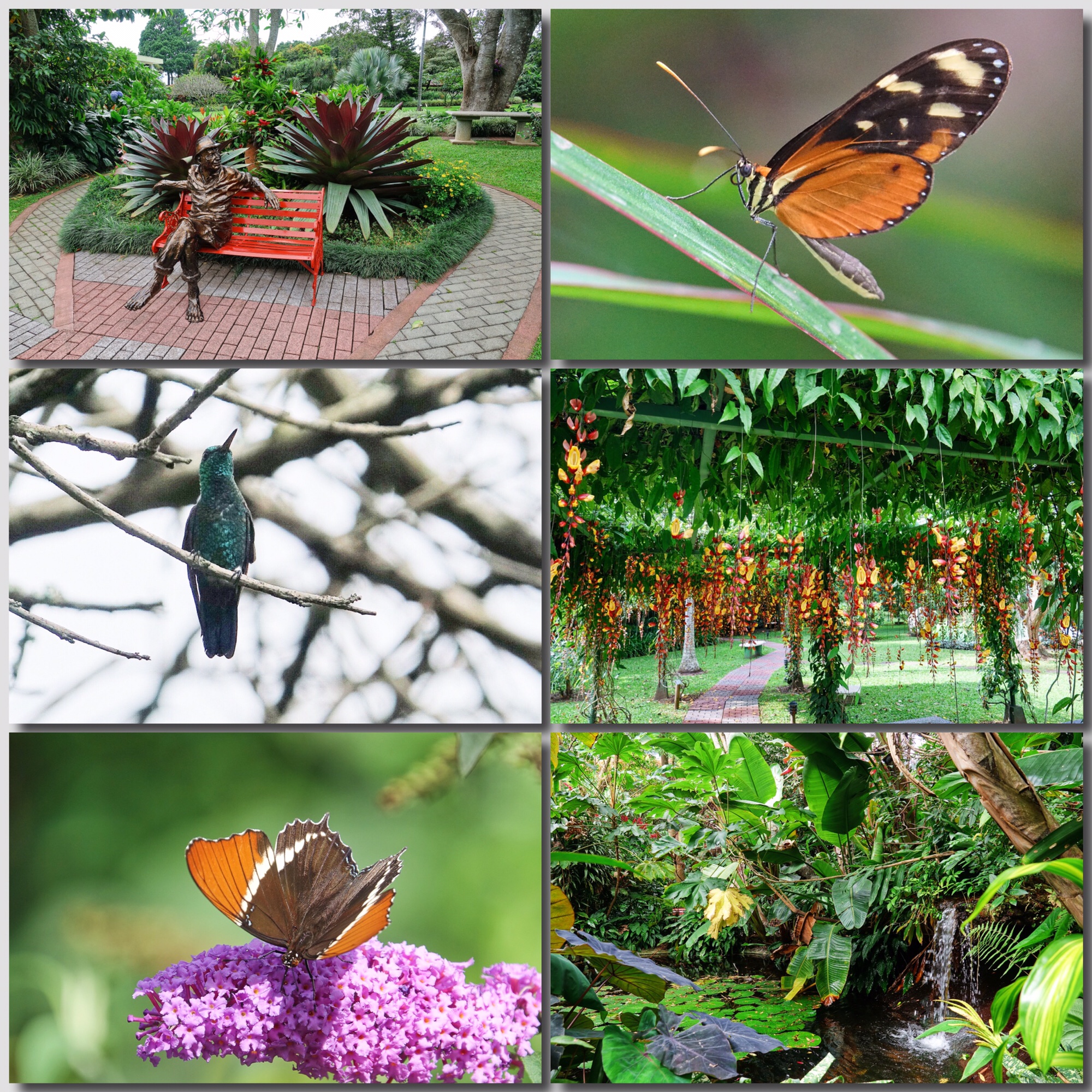
My trip to Costa Rica was arranged by Holbrook Travel (http://www.holbrooktravel.com/), and for most of my visit we stayed at Selva Verde, a rainforest lodge owned and operated by the Holbrook family. (http://www.selvaverde.com/ ) While the lodge itself offers great wildlife and birds, and many excellent photo opportunities, most days we went out to other well known birding and photography hot-spots in the valley of the Serapique River, and the surrounding foothills. The last three days I, and two other members of the group, went up into the mountains to the Savegre Hotel for an experience of the cloud forest and its birds (http://www.savegre.com/).
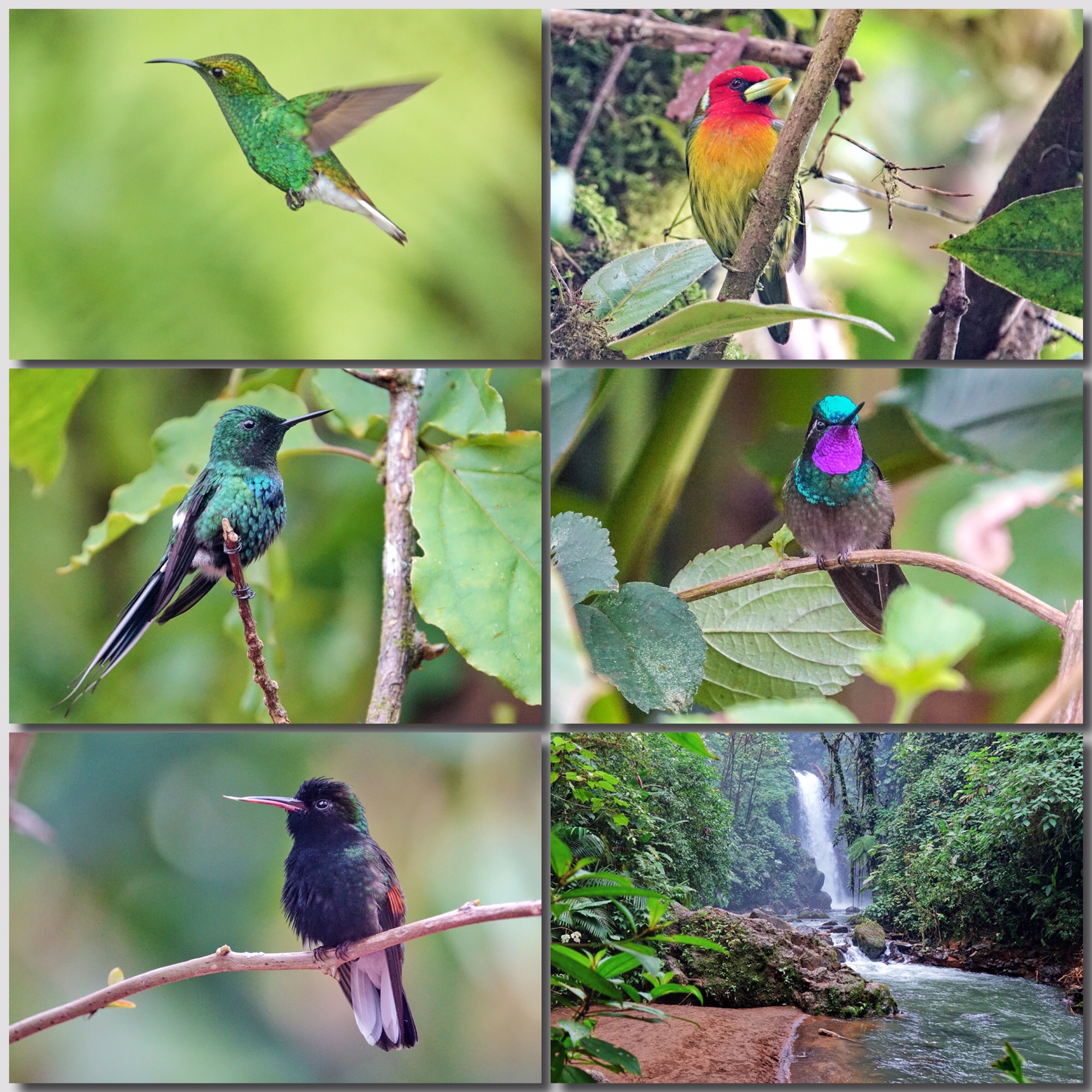
October is, perhaps, not the ideal month to visit Costa Rica. It is the rainiest month, and we had rain at least part of pretty much every day. In the mountains we had to detour around roads that were still closed due to mudslides from the recent tropical storm (a once in a generation phenomenon) and Sevegre had only reopened the day before we got there. The road in and out was still a bit sketchy, but we made it both ways. The rain did not discourage the wildlife or the birds, and we did not let it discourage us. Overall it was one of my most enjoyable tropical experiences. Still, next year’s Point and Shoot Nature Photographer tour of Costa Rica will be scheduled in early December, after the rainy season. 🙂
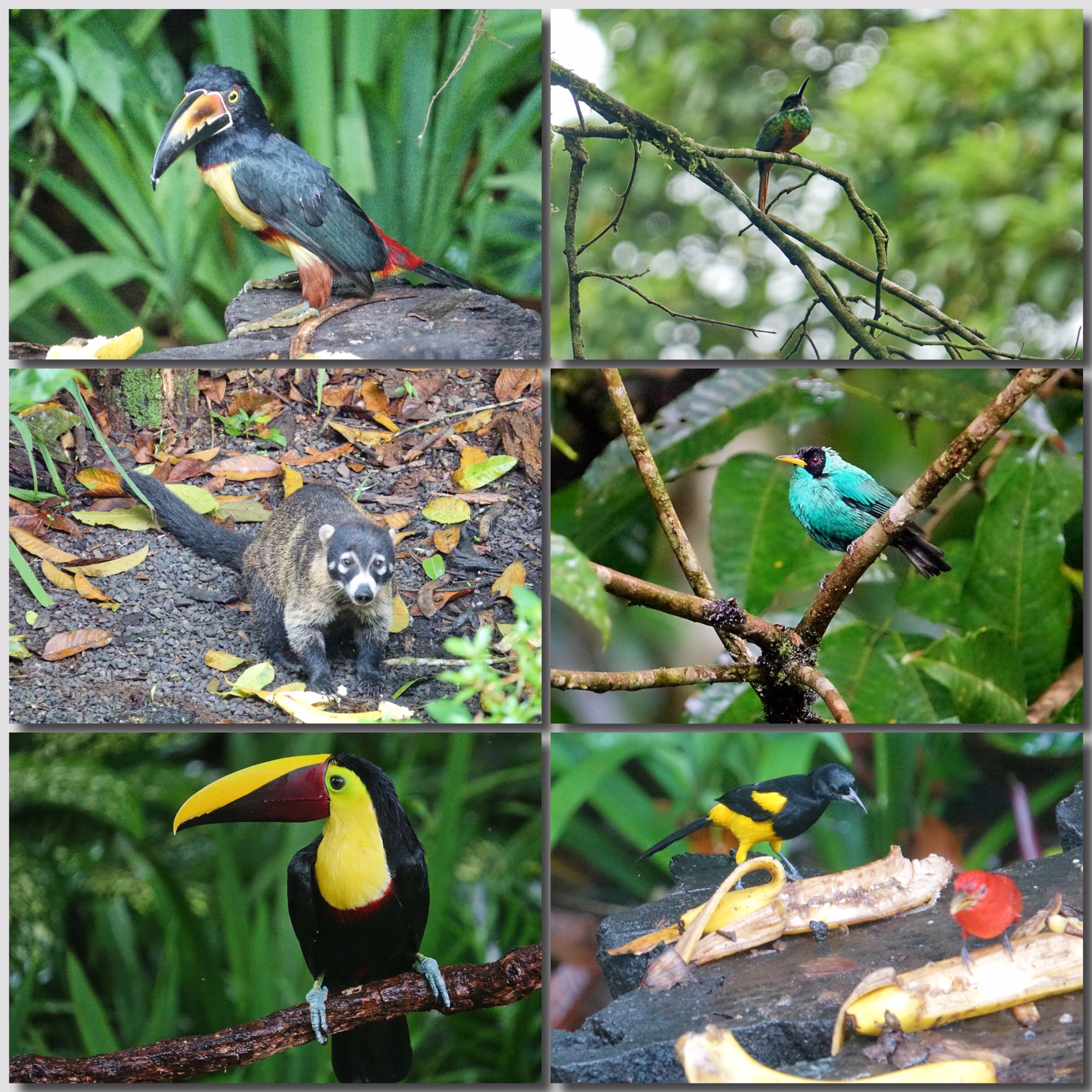
Around the feeders at Selva Verde: Collared Aracari, Rufous-tailed Jacamar, White-nosed Coati, Green Honeycreeper, Yellow-throated Toucan, Black-cowled Oriole and Summer Tanager.
One of the most attractive aspects of birding and photography in Costa Rica is the number and variety of birds that come to the feeders and frequent the grounds at the lodges and private reserves. Selva Verde had three kinds of Toucans, at least a dozen bright Tanager species, woodpeckers, Variegated Squirrels and a White-nosed Coati coming to the feeders. There were Howler Monkeys in the trees above the cabins every day, and White-faced Caputians across the street in the gardens. There were also Motmots in the Gardens.
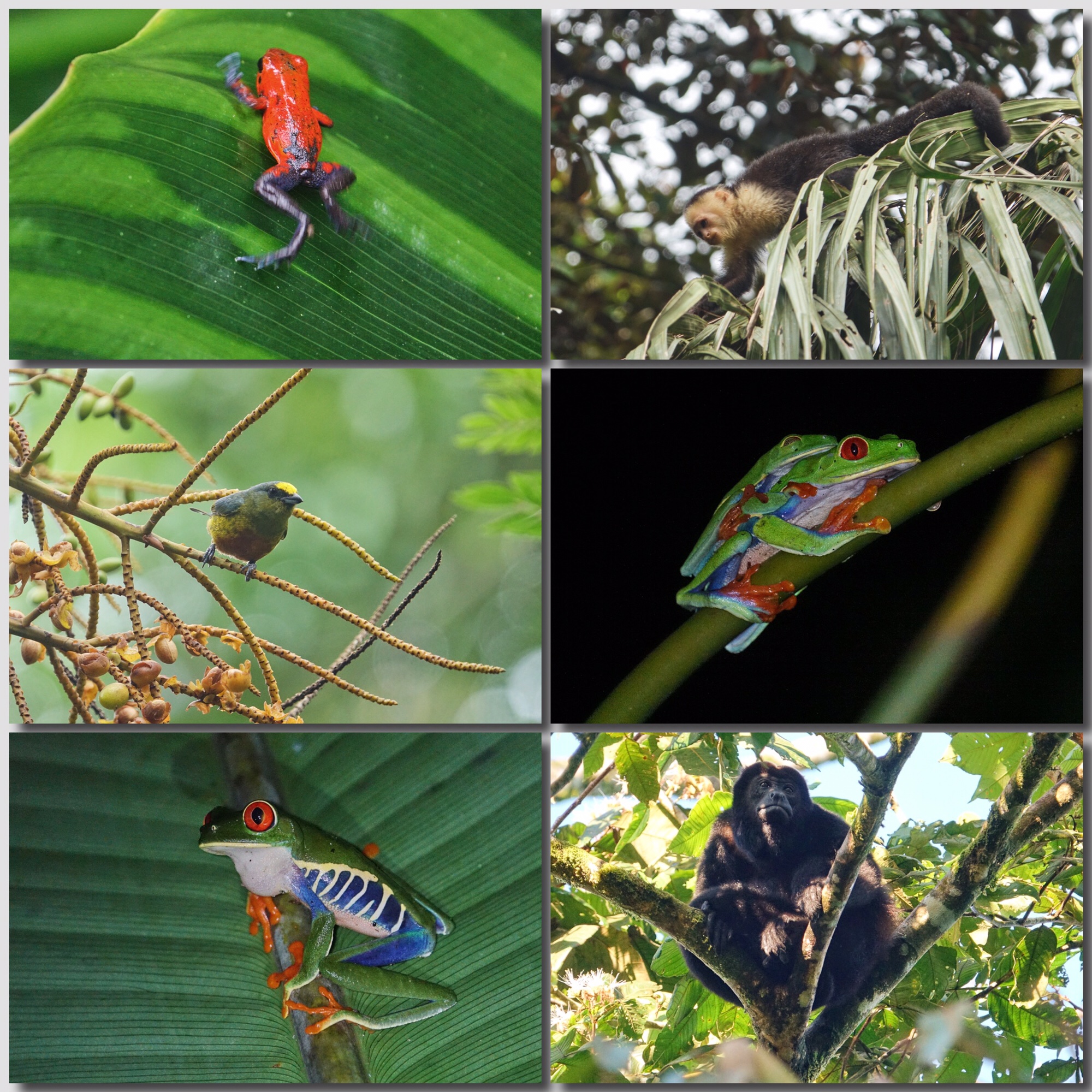
Out away from the feeders at Selva Verde: “Blue-jeans” Poison Dart Frog, White-faced Capuchin Monkey, Olive-backed Euphonia, Red-eyed Tree Frog, and another, from our night walk, Howler Monkey who woke me on our last day at Selva Verde
Before we even got to Selva Verde we visited the La Paz Waterfall Gardens on the mountain rim surrounding the high central valley and San Jose, where we saw a dozen different species of hummingbirds around the feeders and our first Barbets. Dave and Dave’s Costa Rican Nature Park, quite near Selva Verde lodge, has an array of carefully managed, natural looking, feeding stations that attracts Tanagers and Toucans, as well as a variety of rainforest hummingbirds. One afternoon we visited Cope, a native artist in La Union de Guápiles about 45 minutes from Selva Verde (http://copeartecr.com/) who not only showed us a Crested Owl in the rainforest, but took us back to his home, which he has transformed to something between a wildlife sanctuary and an outdoor photo studio, where he showed us all kinds of unique and interesting creatures, including a Glass Frog and the very rare White-tipped Sicklebill (hummingbird) which happens to come to his feeders.
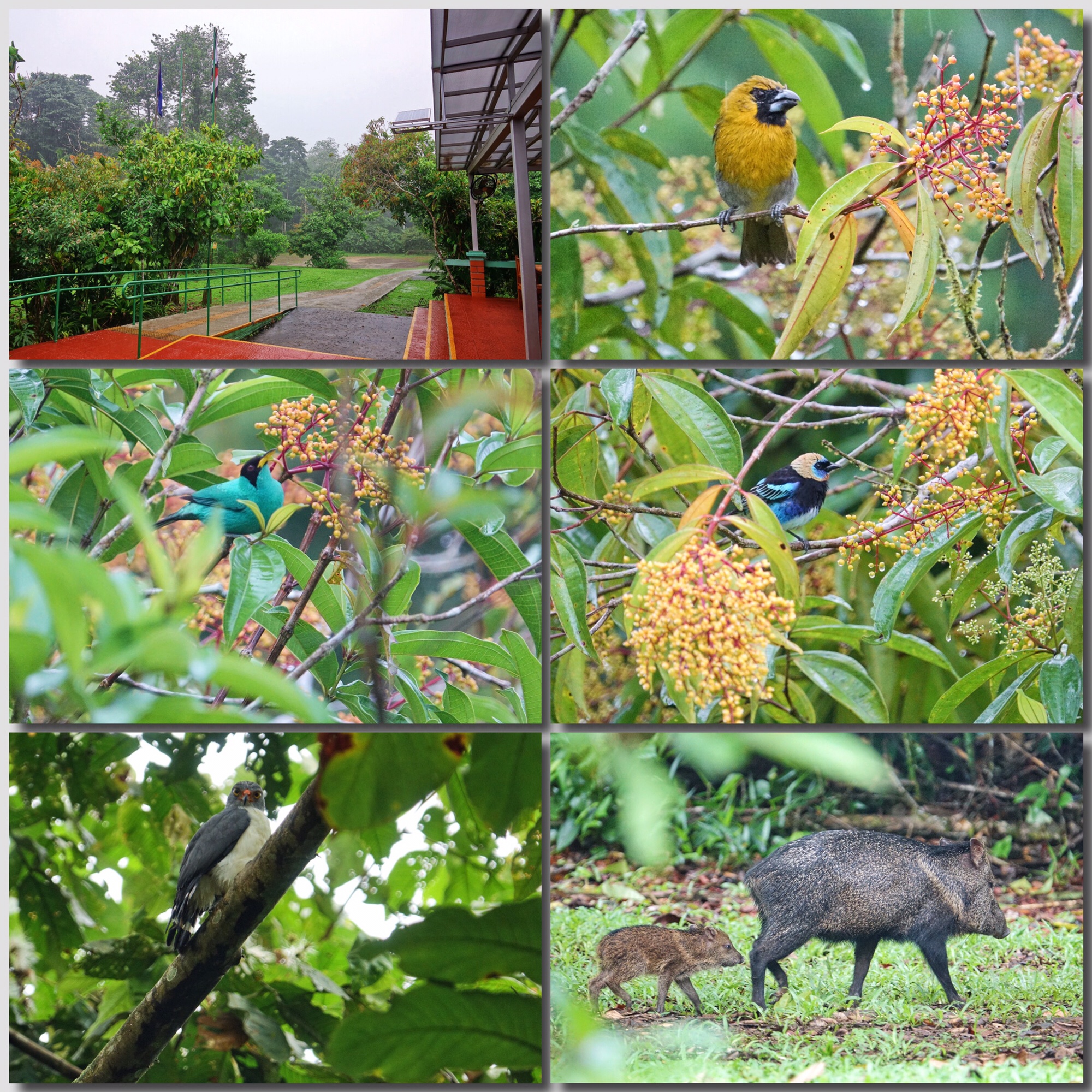
La Selva Biological Research Center is one of the most famous birding locations in Central America (or the world depending on who you talk to): Our day there was rainy and dark, but we still saw interesting birds right outside the restaurant patio. Black-faced Grossbeak, Green Honeycreeper, and Golden-headed Tanager. La Selva is one of the reserves that does not feed birds, but the native plants bring the birds in just the same. We later walked the paved forest trails and found this Semiplumbeous Hawk, and, near the research residences, a Collarded Peccary with young.
Some of the more “official,” publicly supported, reserves and research stations do not have bird feeders on principle…as they feel it keeps wildlife from the plants they would otherwise pollinate and may produce dependency on human resources. They rely on native plantings to bring the birds and wildlife in close. Dave and Dave’s or Cope’s are good examples, I think, of responsible feeding. At Dave and Dave’s they only put out banana slices (a low priority food for most birds) on natural vines hung around the photo patio, and backed by native flowering and fruiting plants. Their hummingbird feeders are kept to a 15 to 1 solution, with much less sugar than the natural nectars of the abundant native plants. The feeders bring the hummers in, but they spend most of their time, as I can attest, feeding on natural sources. Natural perches are provided and fresh Heliconia flowers daily where the hummers can drink. Dave and Dave are certainly very aware of their impact on the birds that they feed, and have made extraordinary efforts to restore native plants, fruits and flowers, on their property over the years they have owned it. In the process they provide some of the best photo opportunities for bird photographers to be found in the Serapique region. (http://sarapiquieco-observatory.com/welcome)
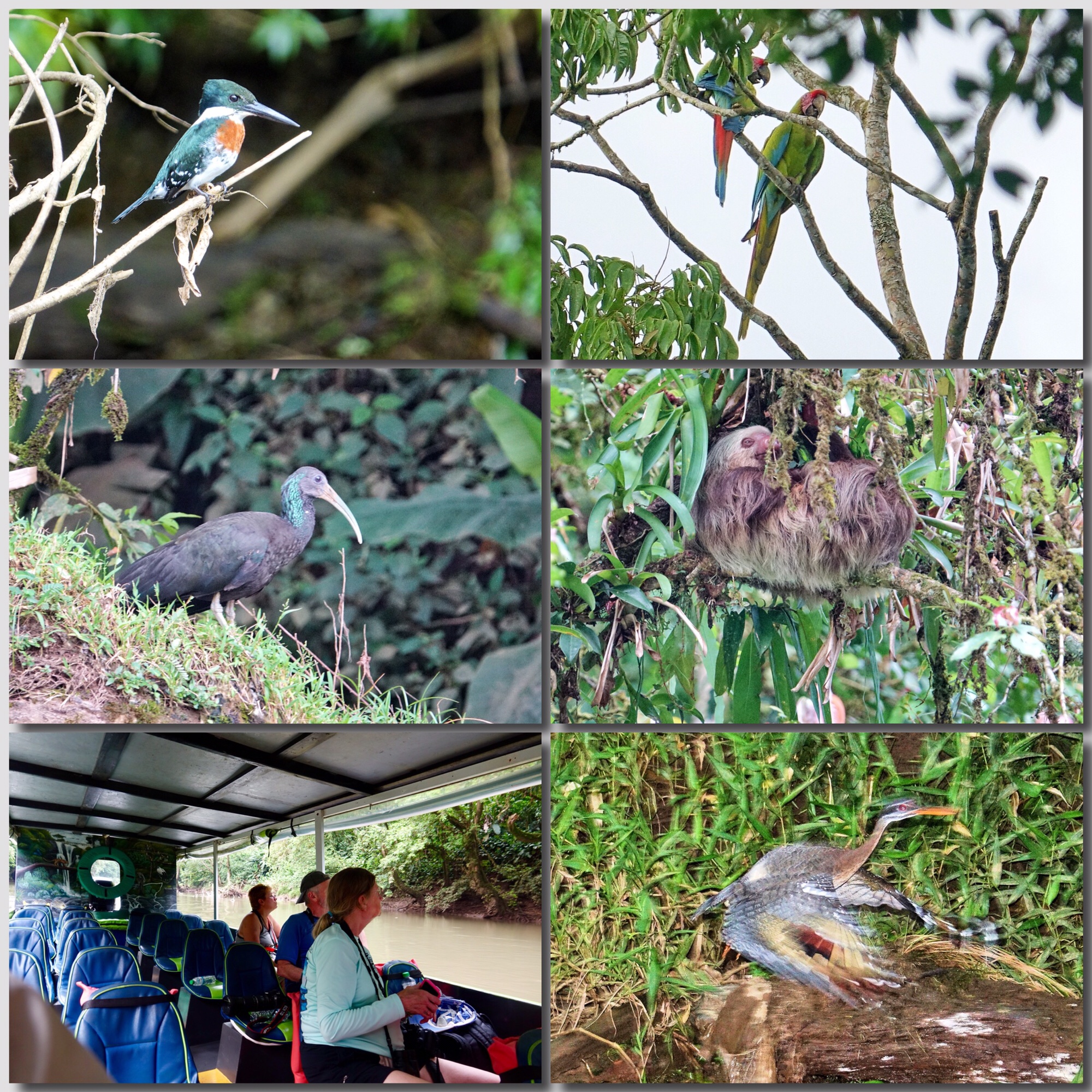
An afternoon on the Sarapique and Puerto Viejo Rivers: Amazon Kingfisher, Great Green Macaws (our closest and only perched views), Green Ibis, Sloth (with baby), well equipped and excellently captained tour boat, Sungrebe in flight (the highlight of the boat tour, seen as we were losing the light)
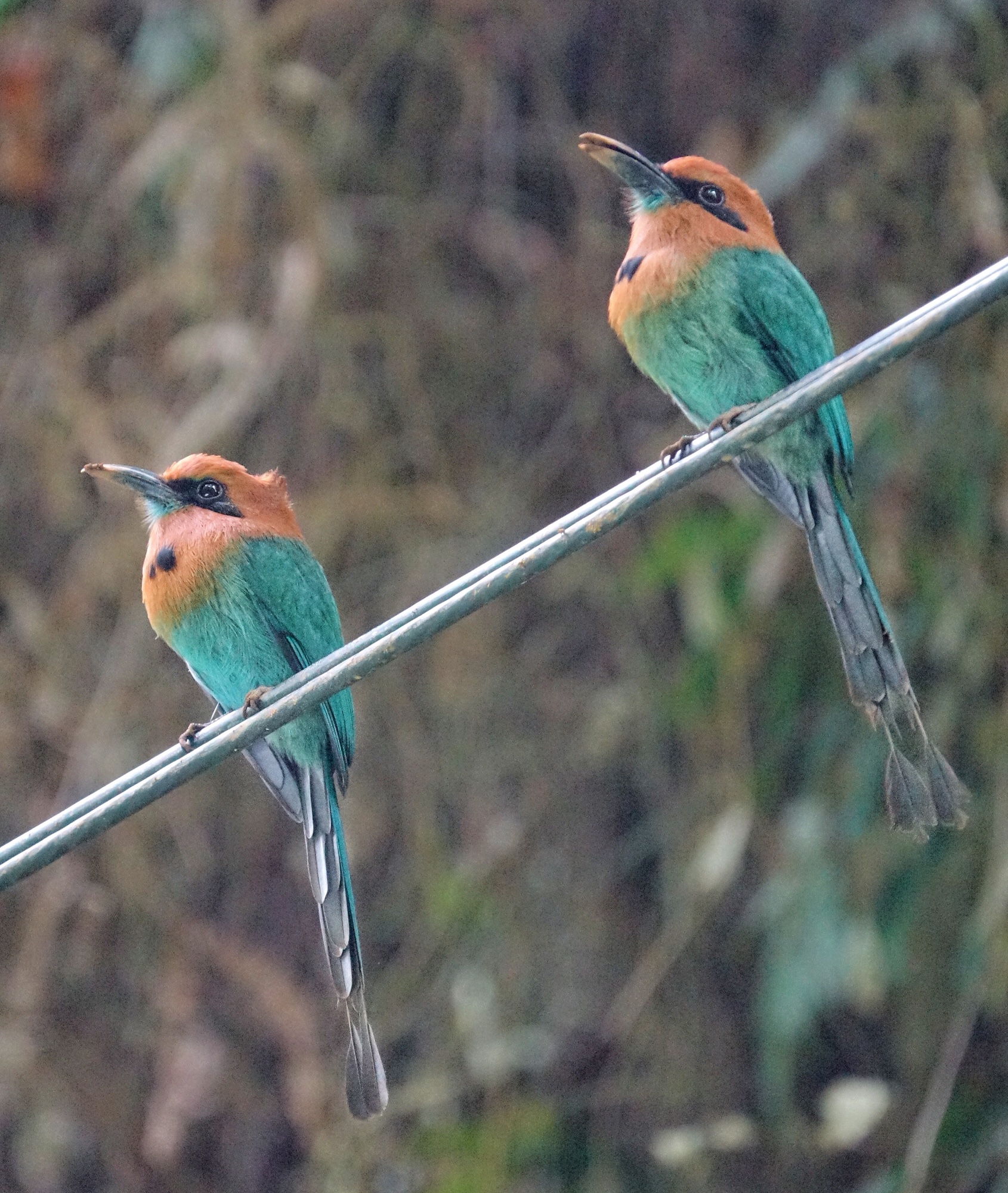
Broad-billed Motmots from the mid-level mountains near Socorro Costa Rica
Another factor that makes Costa Rica such a great ecotourism destination is the ease of access to such a wide variety of habitats. There are lodges, hotels, and reserves in every region, from dry forest in the north west, to the rainforest of the Caribbean lowlands, to the mid-level forest on the volcanic rims in the coffee country, to cloud forest at the higher elevations…all accessible by well maintained roads. And much of it is no more than 2-3 hours from San Jose’s international airport.
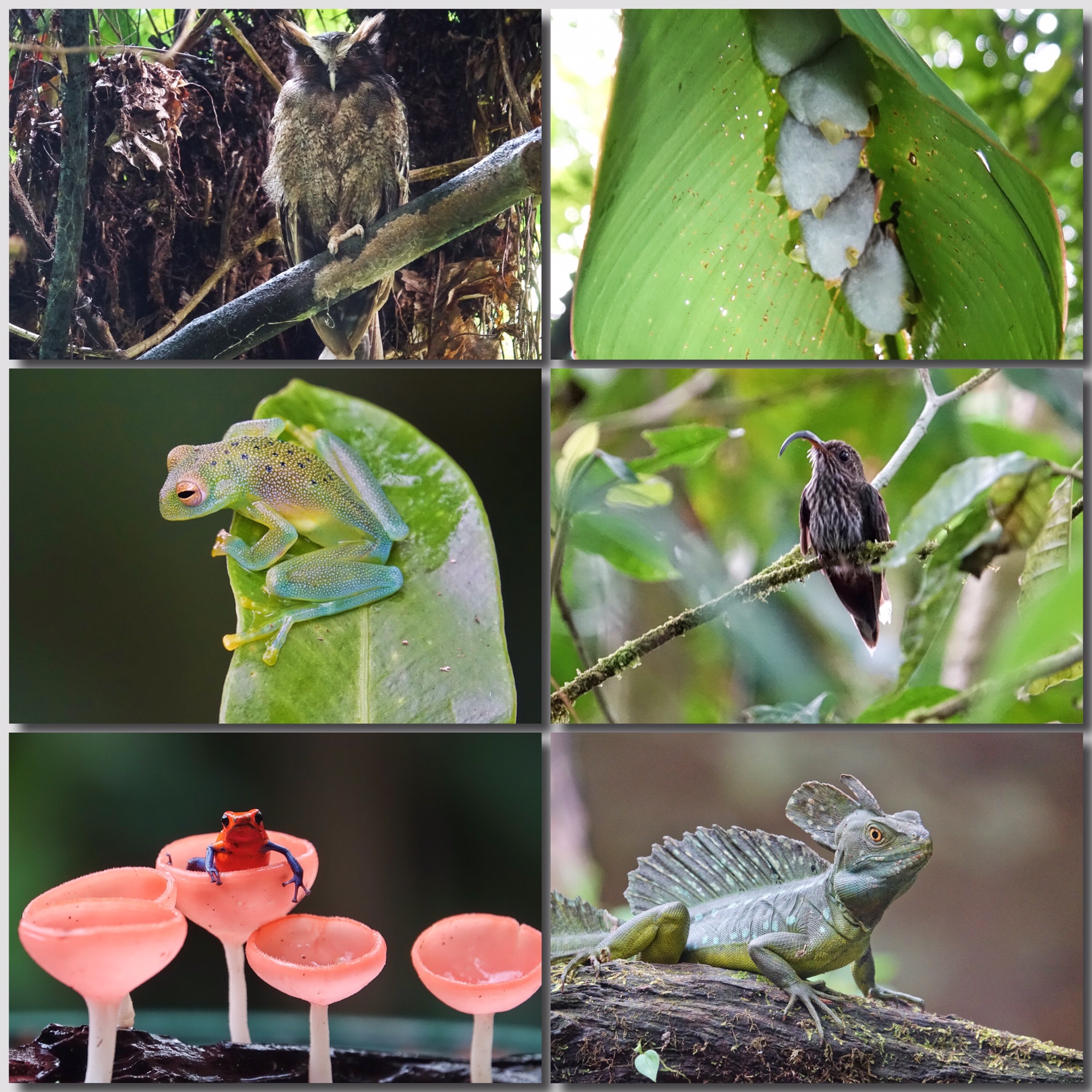
With Cope in the rainforest to find the Crested Owl and Honduran White Tent-making Bats, and then at his home for some exotic photography. He had collected the frogs the night before (Glass Frog and Poison Dart Frog) and set them up in his outside studio for natural looking shots. The White-tipped Sicklebill, one of the rarest hummingbirds in Costa Rica, comes to his feeders daily, and he has been photographing this big male Basilisk Lizard for over 10 years.
And everywhere you go, the people of Costa Rica are ready to show off their country and their wildlife. Near Savegre Hotel there is a tree up on a hillside that is famous for its Resplendent Quetzals. Right tree, right place. The farmer who owns the land has built a rough trail up the all but vertical slope, complete with hand-rails, and chopped out a platform on the hillside across from the tree where birders and photographers can stand to watch and photograph the Quetzals as they come in to feed. The day we visited, he met us at the foot of the trail and accompanied us up to the platform, as delighted as we were with the birds, though he sees them every day. He collects a small fee from birders and photographers who want to see “his” Quetzals, that helps his family to survive (hopefully more than survive) and gives him incentive to keep the land as natural as possible. He could easily rip out the wild avocado trees otherwise, and plant coffee or corn.
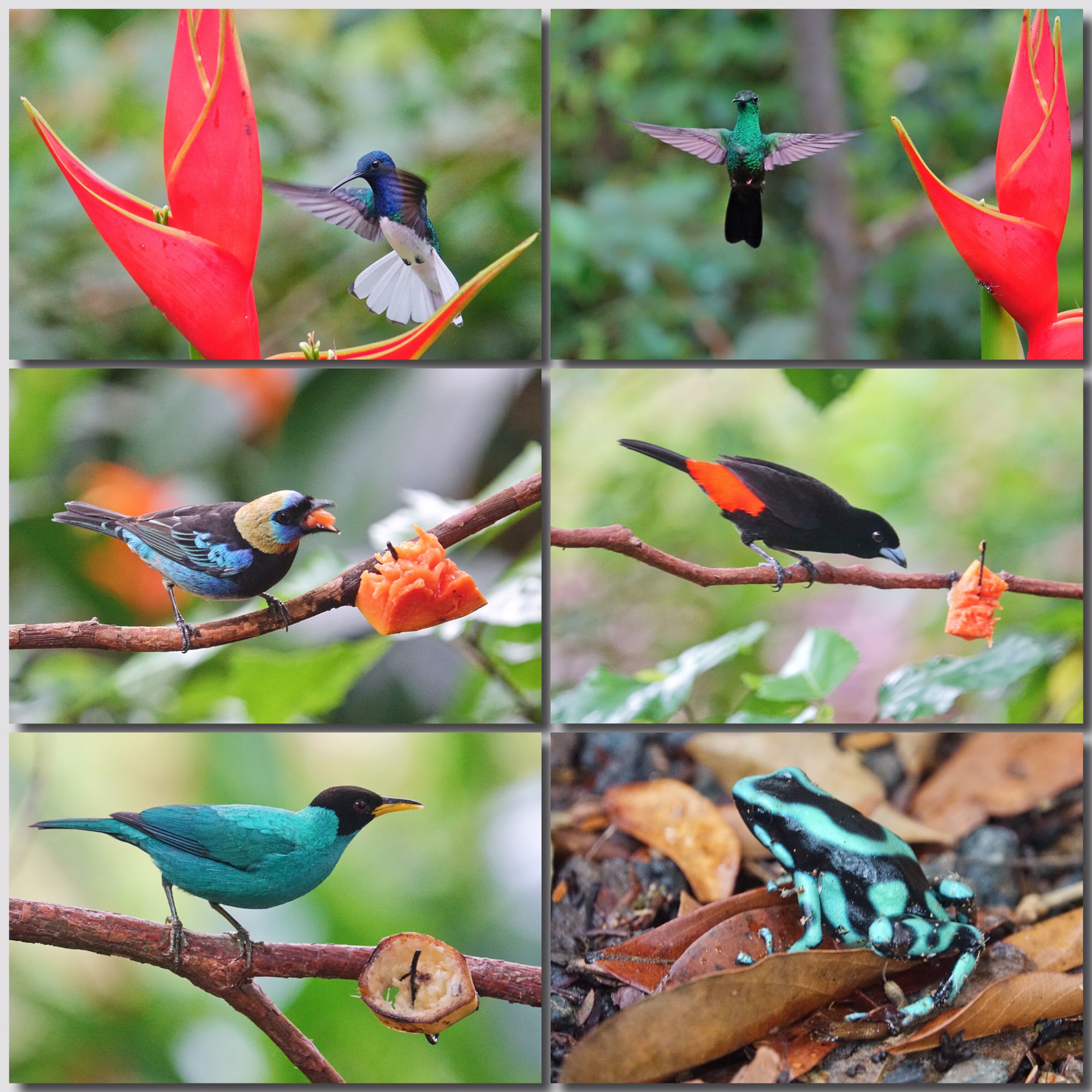
Dave and Dave’s Costa Rican Nature Park is a small private reserve with exceptional photo opportunities. White-necked Jacobin at Heliconia flower, Bronze-tailed Plumeleteer, Golden-headed Tanager, Passerini’s Tanager, Green Honeycreeper, Poison Dart Frog.
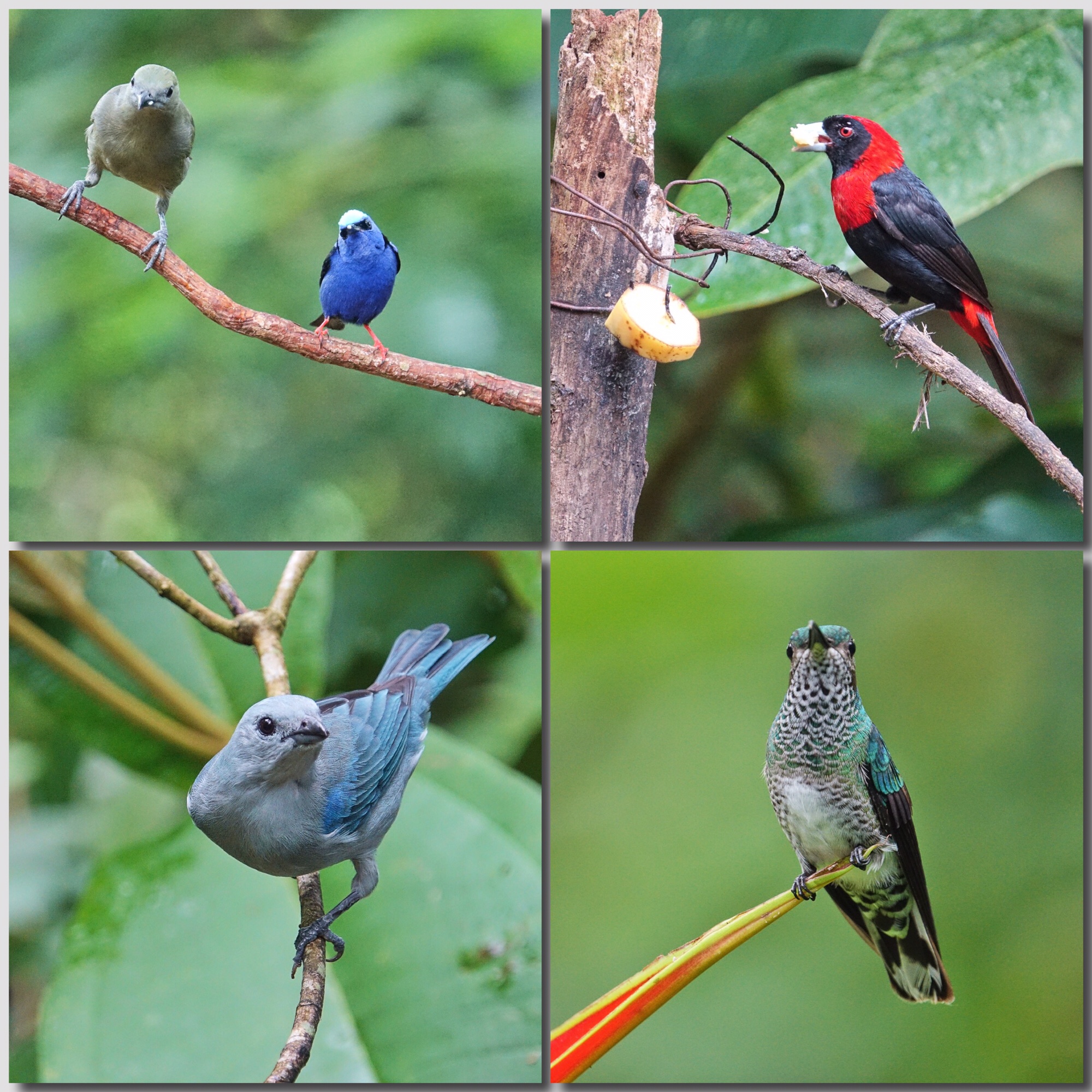
More from Dave and Dave’s. Shining Honeycreeper and Plain-colored Tanager, Crimson-collared Tanager, Blue-grey Tanager, Female White-necked Jacobin
All of the native guides and naturalists we met and worked with were well trained, knowledgeable, and delighted to be of help in our understanding of what we saw and experienced. Costa Rica does have an extensive and through guide training program that includes ornithology, biology, botany, geography, history, ecology, and first aid…and, of course, the interpreters at the official research stations are generally graduate-students or research assistants, experts in their fields. If you work with an experienced tour company like Holbrook, you can be confident that you will be in good hands while in Costa Rica.
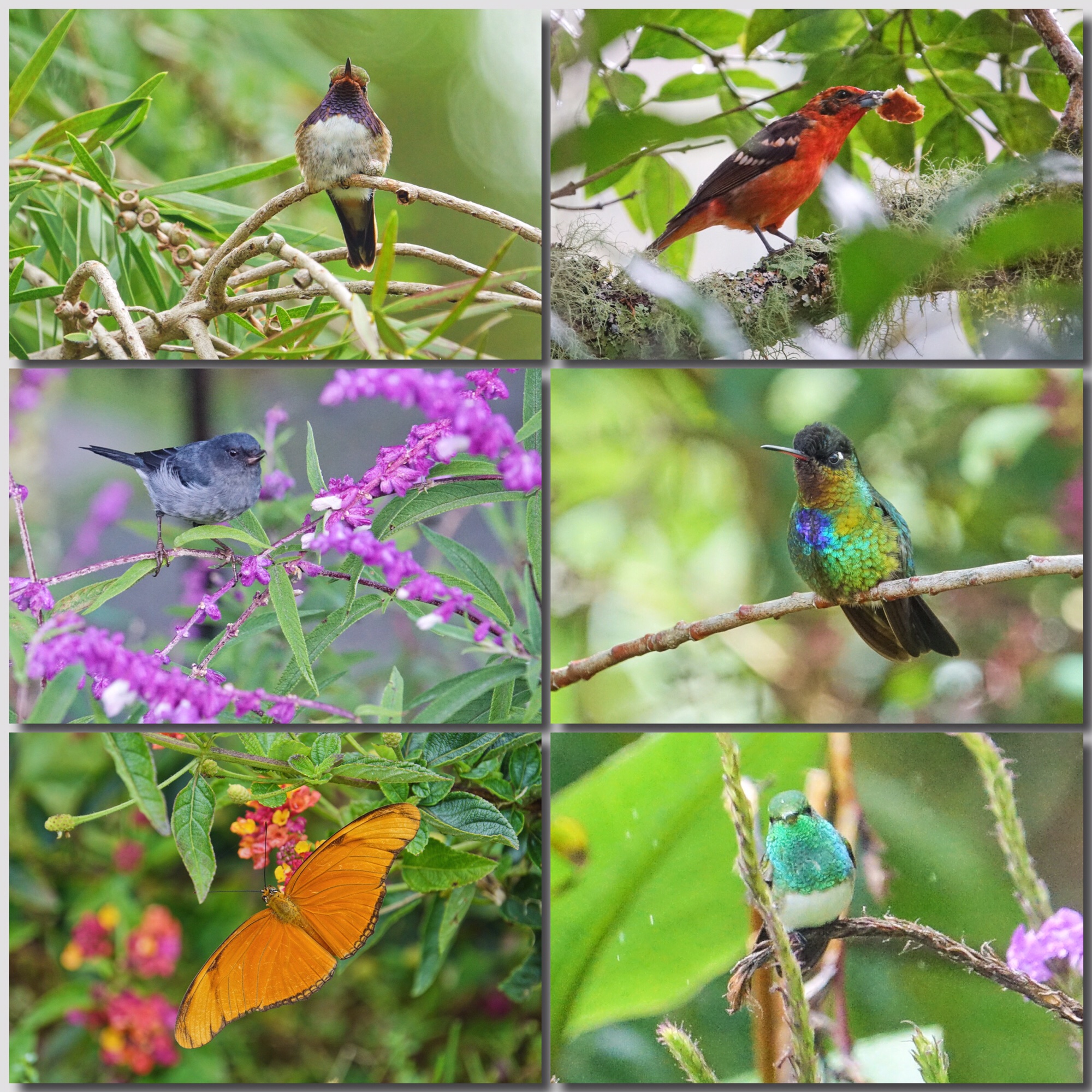
Cloud Forest and mountain specialties around the Savegre Hotel: Volcano Hummingbird (another Costa Rican endemic), Flame-colored Tanager, Slaty Flowerpiercer, Firey-throated Hummingbird, Julia Heliconian, Snow-bellied Hummingbird.
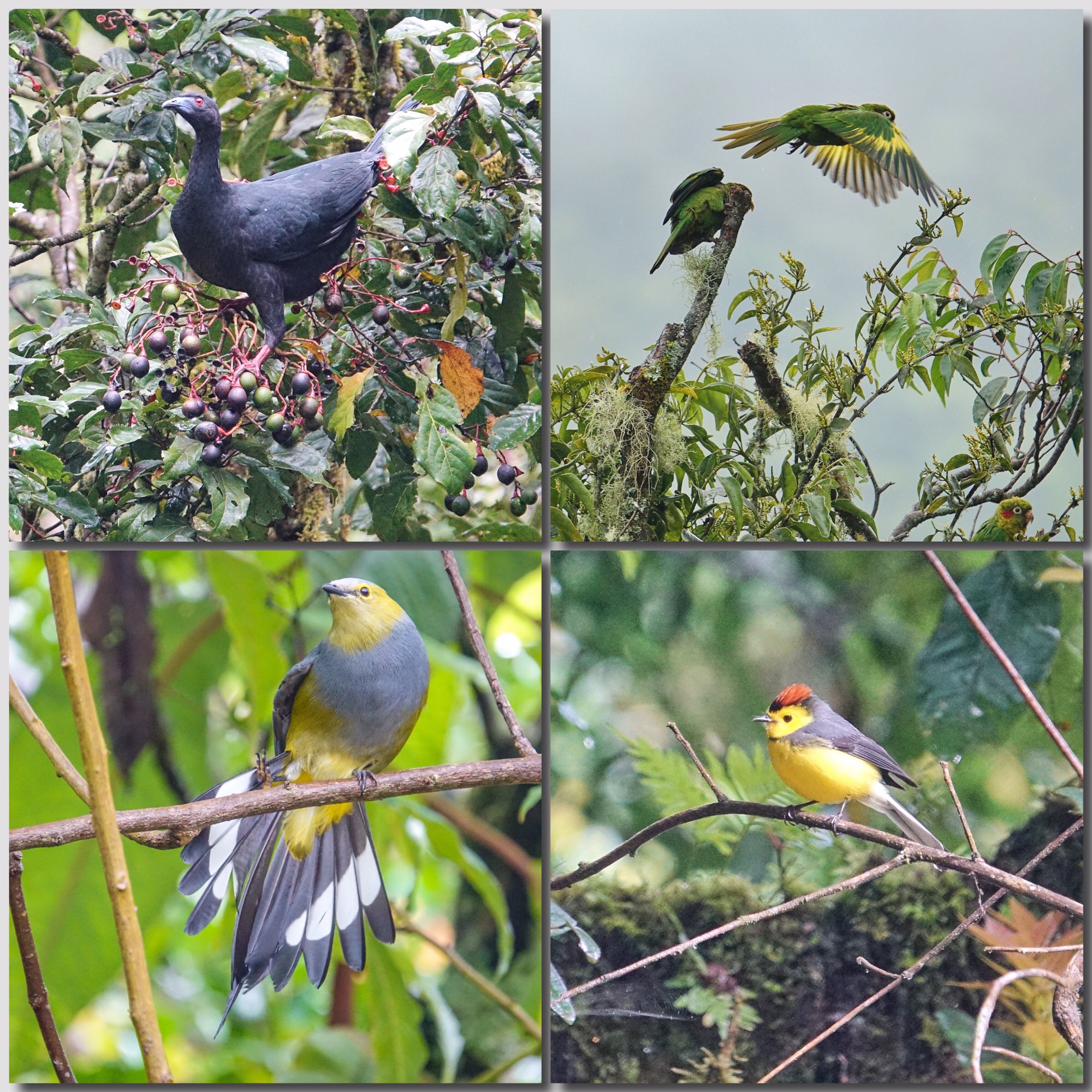
Black Guan, Sulpher-winged Parakeet, Long-tailed Silky Flycatcher, Collared Redstart
I was impressed enough with the potential (and the reality) of Costa Rica to plan to return with another group next year. I can not imagine any birder or photographer going there and not wanting to go back. A amazing country, amazing wildlife, an amazing experience, and amazing memories. That is what Costa Rica has to offer.
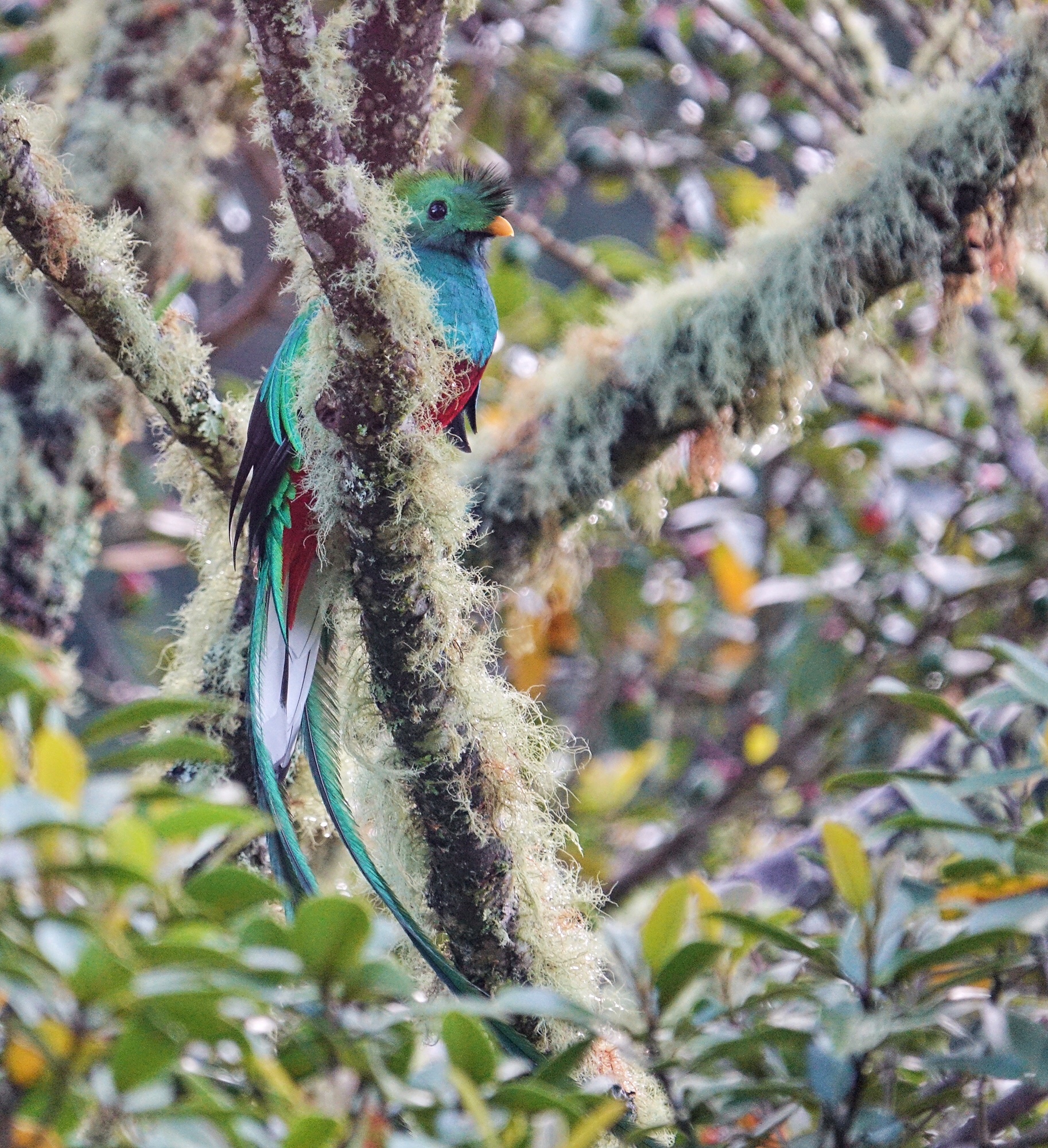
Resplendent Quetzal, near Savegre Hotel in the cloud forests of Costa Rica. Worth the trip all on its own.
All of the photographs in this article were taken with the Sony RX10iii and processed in Polarr on my iPad Pro.
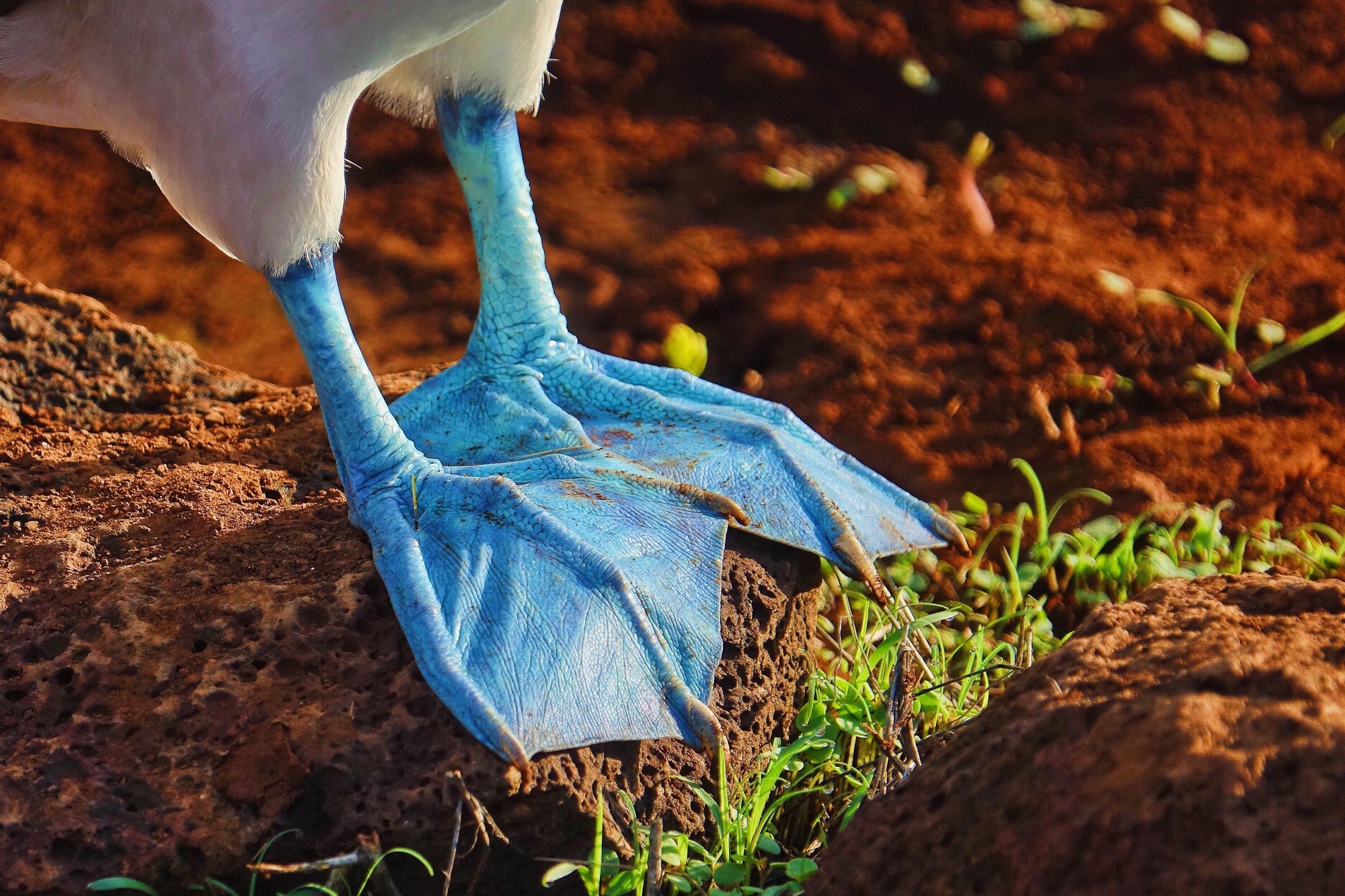
The Galapagos has to be on any nature photographer’s short list of most wanted places to go…it is on the bucket list for those who simply appreciate nature, and many a pure tourist longs to tick it off the list. I know it is a cliche but there is truely no place like it in the world. The Galápagos Islands sit right on the equator, in the middle of the Humbolt Current, just far enough off-shore from Ecuador to maintain a totally unique habitat. There are certainly birds and animals there that you can see no-where else…but the real magic is in how close you can approach all of the island residents. Combine that with some of the most stunning seascapes and landscapes imaginable…sunrise to sunset…and why wouldn’t anyone want to travel there?
Since I was already in South America for the Wildside Nature Tours Amazon Riverboat Adventure, I was also invited to participate in a special, small-boat, 7 day trip to the Galapagos. Kevin Loughlin, the major partner in Wildside Nature Tours, does the islands at least twice a year. Our trip was his 24th. He knows the best boats, the best guides, and the islands themselves as well as anyone in the business…better than most. His tours, generally limited to 12 people, spend more time ashore on the islands than any others. Land time on any island is limited to 4 hours per boat, and no more than 20 people. We got to spend the whole 4 hours on each trip ashore, while most boats had to fit several groups in that same time frame. We got to sit with good subjects for the perfect shot, and take all the time we wanted to appreciate the scenery.
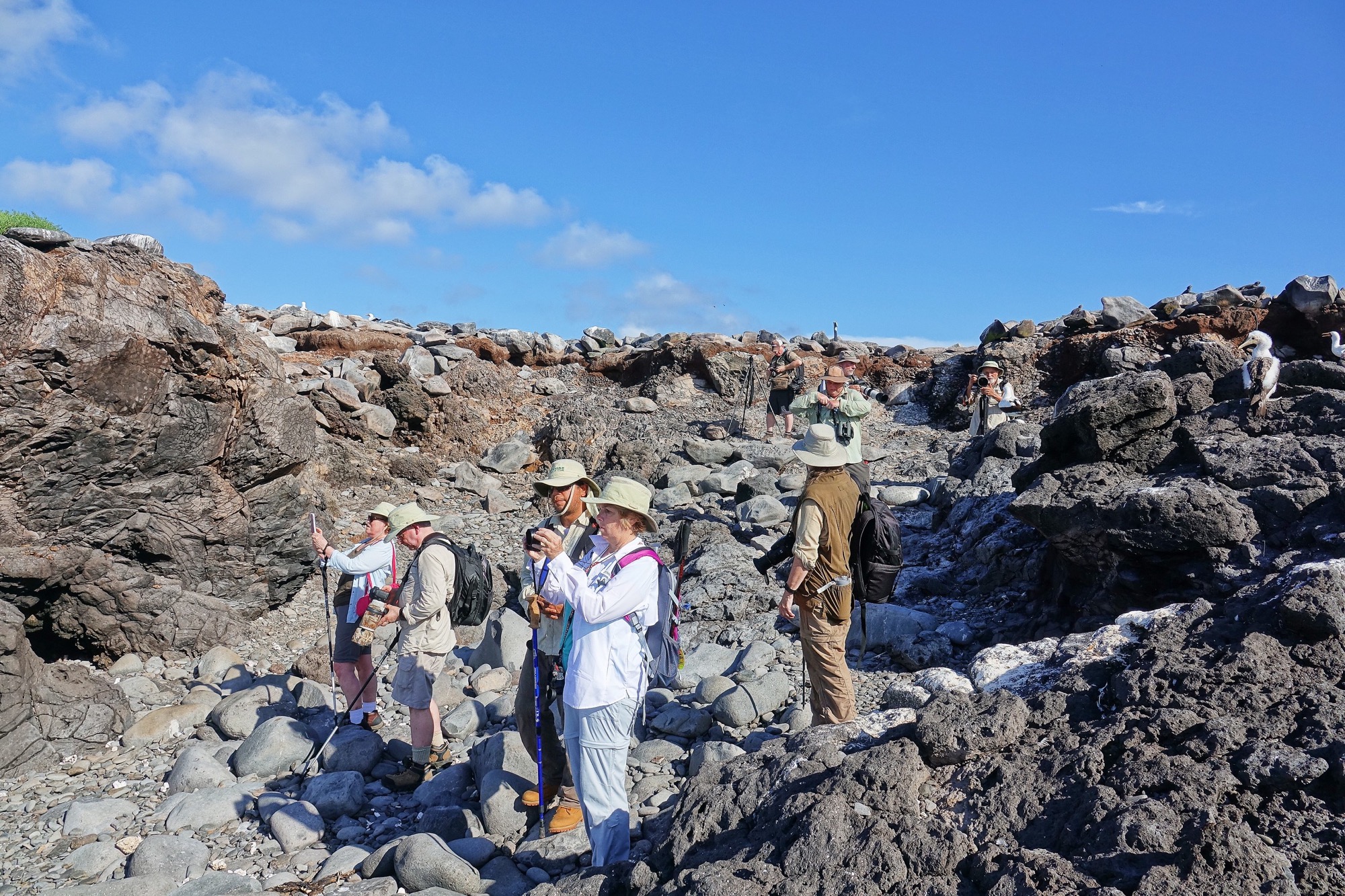
On this trip again, I used only the Sony Rx10iii. It’s 24-600mm zoom covers the ideal range for the islands. Much of the time I had to zoom back from 600mm. The birds and animals were just that close. And the Sony in-camera HDR was perfect for the sunrise and sunsets, and the amazing island and seascapes. Then too, most of the other folks on the trip were carrying 20-40 pounds of camera equipment ashore each day. My Sony, with the same kind of capability as their whole outfits, was much easier to carry, and fit in a small wet-bag for the wet landings. I really appreciated it by the end of 4 hours in the equatorial heat of the islands.
We spent our first night in Ecuador at the Garden Hotel near the airport in Quito. Wonderful grounds and a great atmosphere. And the first of my Ecuadorian Hummingbirds.
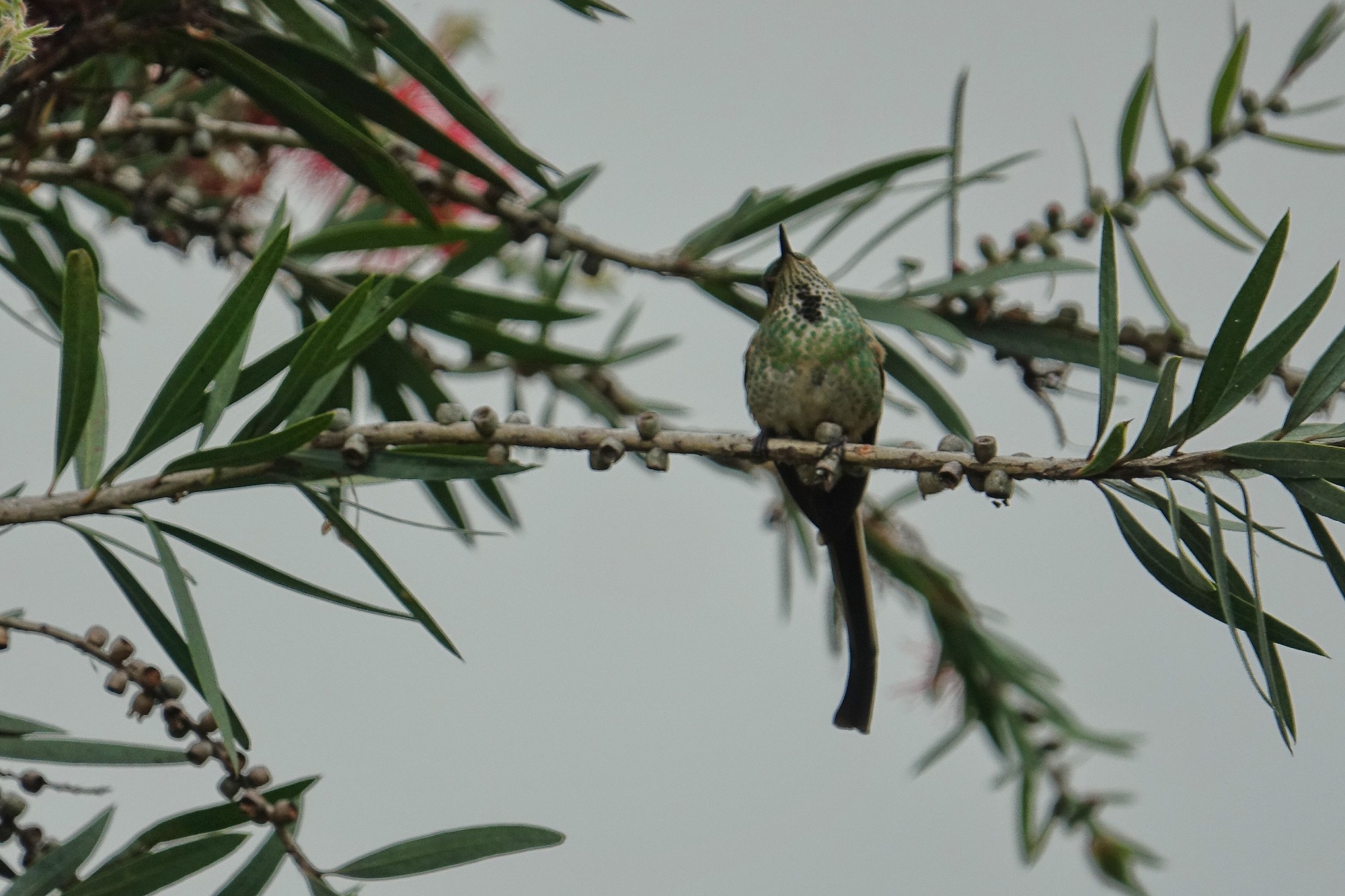
The next morning we were off early again to catch a two-hop flight to the Galapagos…though you stay on the same plane there is a short layover in Guayaquil. Having realized the shortcomings of my packing while on the Amazon, I spent the time at the airport in Quito searching, successfully, for a small day-pack to carry my camera on the wet landings (I already had a dry bag to go inside).
When we landed in San Cristobal, Kevin advised us not to try to photograph the birds at the airport. Tempting as it was, he assured us we would have better opportunities on the other islands we were to visit. Still, when you get to the dock to board the pangas (rubber zodiac like boats) that take you out to your yacht, it is impossible to resist the sea lions who greet you, or would greet you if they were awake.
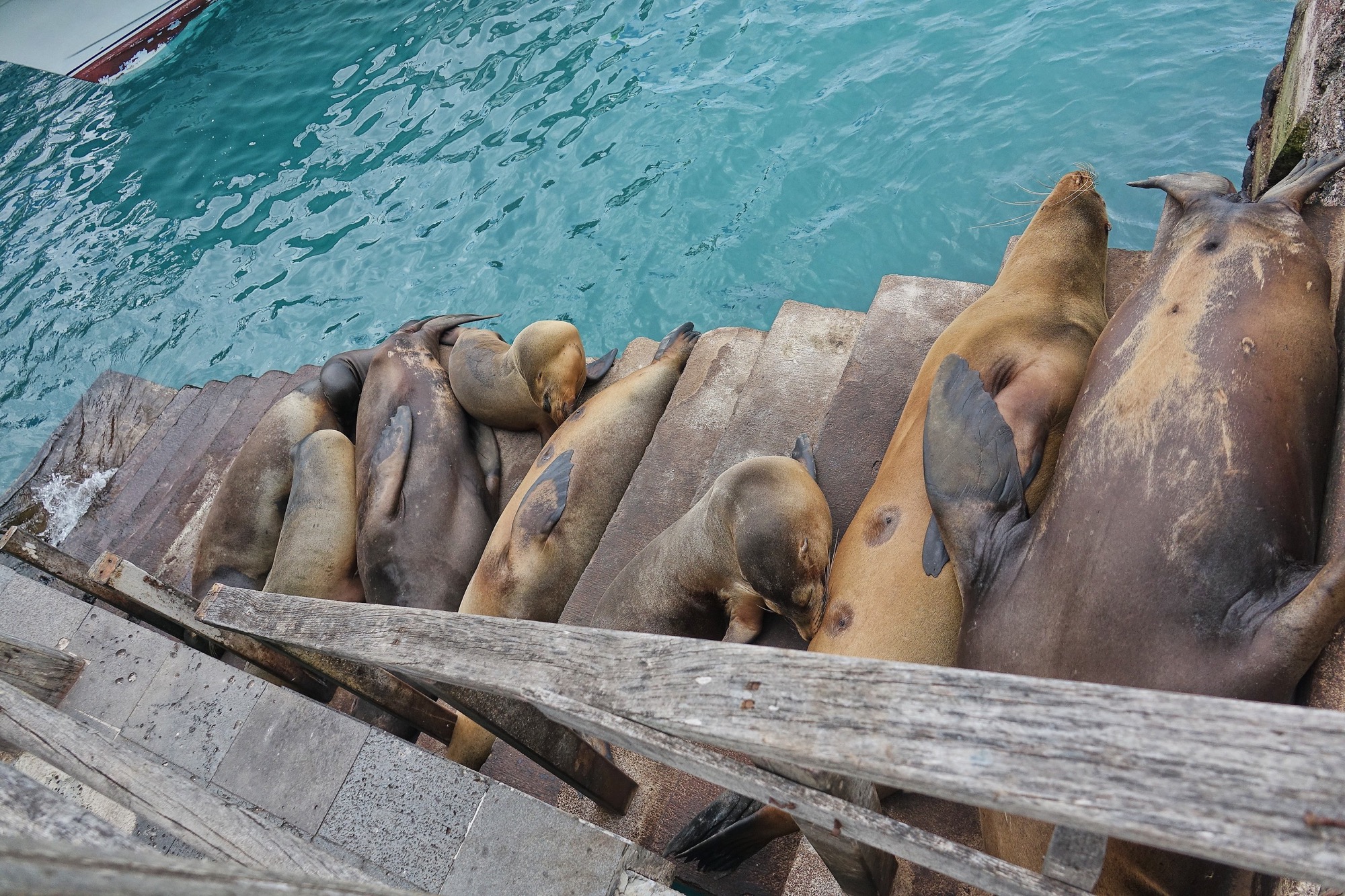 After room assignments and lunch on the yacht, we returned to San Cristobal to take a bus up over the top of the island for a visit to a Tortoise Reserve and Breeding Station, for our first looks at unique Galapagos wildlife. We saw the giant Tortoises of course, but while there we also had our first encounters with one of the 4 species of endemic Mockingbirds of the islands, one of the Lava Lizards, and one of Darwin’s Finches.
After room assignments and lunch on the yacht, we returned to San Cristobal to take a bus up over the top of the island for a visit to a Tortoise Reserve and Breeding Station, for our first looks at unique Galapagos wildlife. We saw the giant Tortoises of course, but while there we also had our first encounters with one of the 4 species of endemic Mockingbirds of the islands, one of the Lava Lizards, and one of Darwin’s Finches.

We returned to San Cristobal town in time for sunset, a little shopping, and back to our yacht for the first of many excellent dinners.
 To make the most of your time in the islands, the yacht moves at night, while you are sleeping. It takes some getting used to, as the waters around the islands, stirred by the Humboldt Current, can be quite choppy…but it is a small price to pay for paradise. We woke on our first full day in the Galapagos to a stunning sunrise…the first of many…and, after a hearty breakfast, boarded the pangas for a short ride to Espanola Island. Every trip to the Galapagos is a mixture of dry and wet landings. Some islands have landing jetties, and on some you run the pangas up to the beach and climb out knee deep in water to wade ashore. Kevin insists on good wading sandals for the wet landings. I also invested in two pairs of sand socks…lycra crew-style socks with neoprene soles and heels. The sand socks keep the sand out from between my toes and my feet and the sandals. Before the end of the trip could have gotten several times their cost if I had been willing to sell them. Highly recommended.
To make the most of your time in the islands, the yacht moves at night, while you are sleeping. It takes some getting used to, as the waters around the islands, stirred by the Humboldt Current, can be quite choppy…but it is a small price to pay for paradise. We woke on our first full day in the Galapagos to a stunning sunrise…the first of many…and, after a hearty breakfast, boarded the pangas for a short ride to Espanola Island. Every trip to the Galapagos is a mixture of dry and wet landings. Some islands have landing jetties, and on some you run the pangas up to the beach and climb out knee deep in water to wade ashore. Kevin insists on good wading sandals for the wet landings. I also invested in two pairs of sand socks…lycra crew-style socks with neoprene soles and heels. The sand socks keep the sand out from between my toes and my feet and the sandals. Before the end of the trip could have gotten several times their cost if I had been willing to sell them. Highly recommended.
The Galapagos are all volcanic islands, but they are mixture of what I think of as short islands and tall islands. Espanola is one of short islands…essentially a slab of lava raised maybe 70 feet above the sea at its highest point. The trails are pretty rough, with loose lava underfoot and no soft landings if you fall…but both the scenery and the wildlife are totally worth the hike.
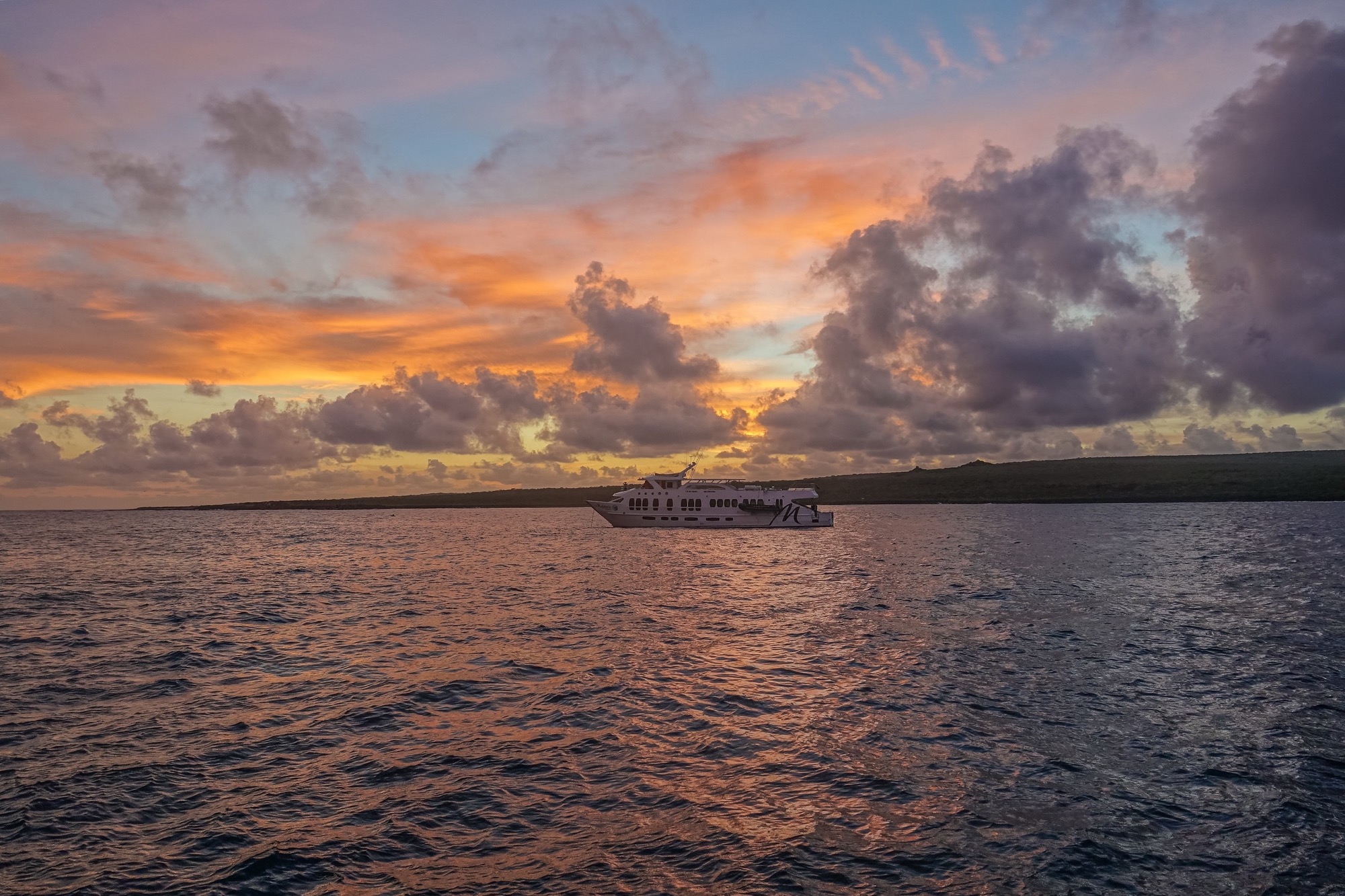
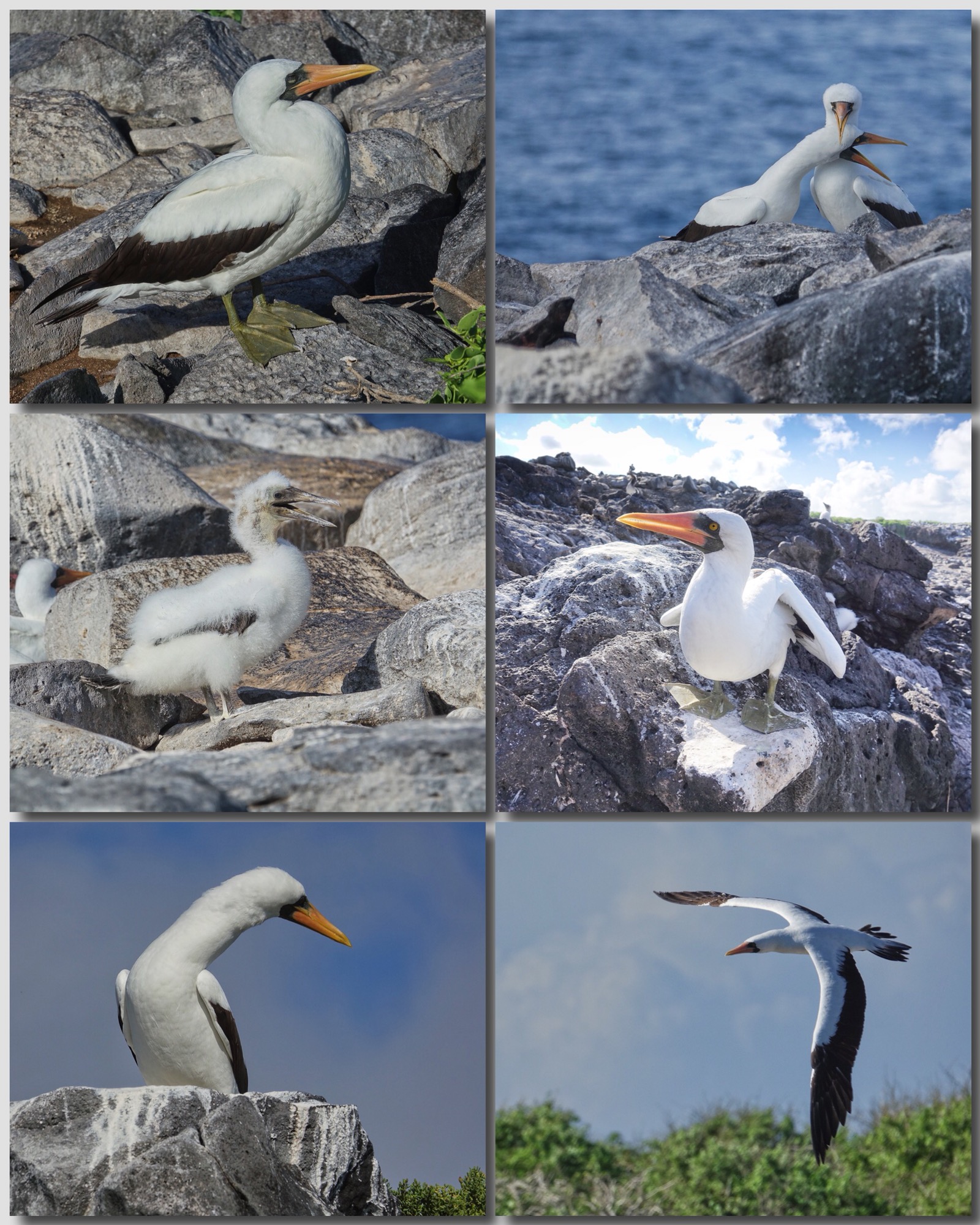

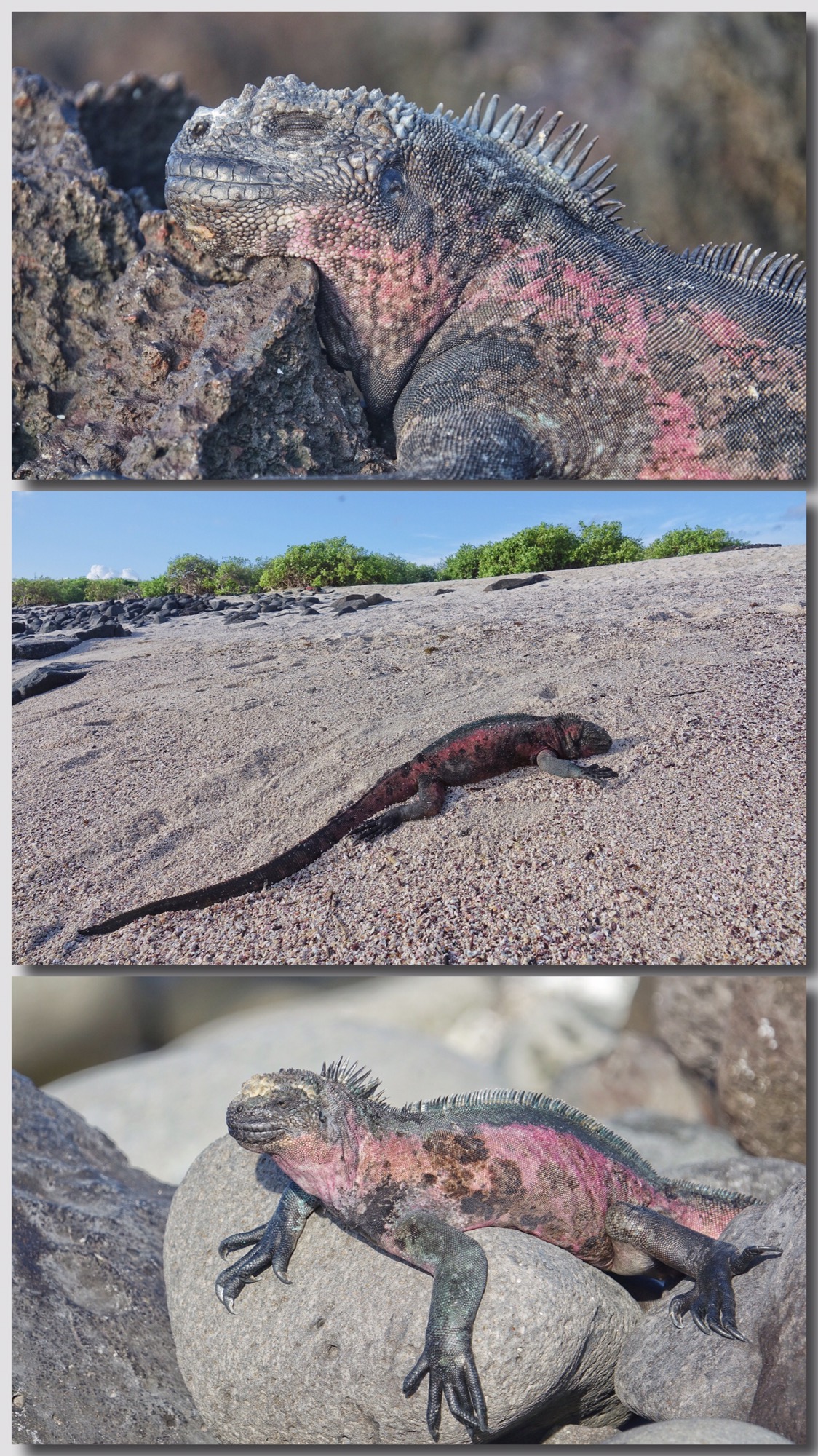
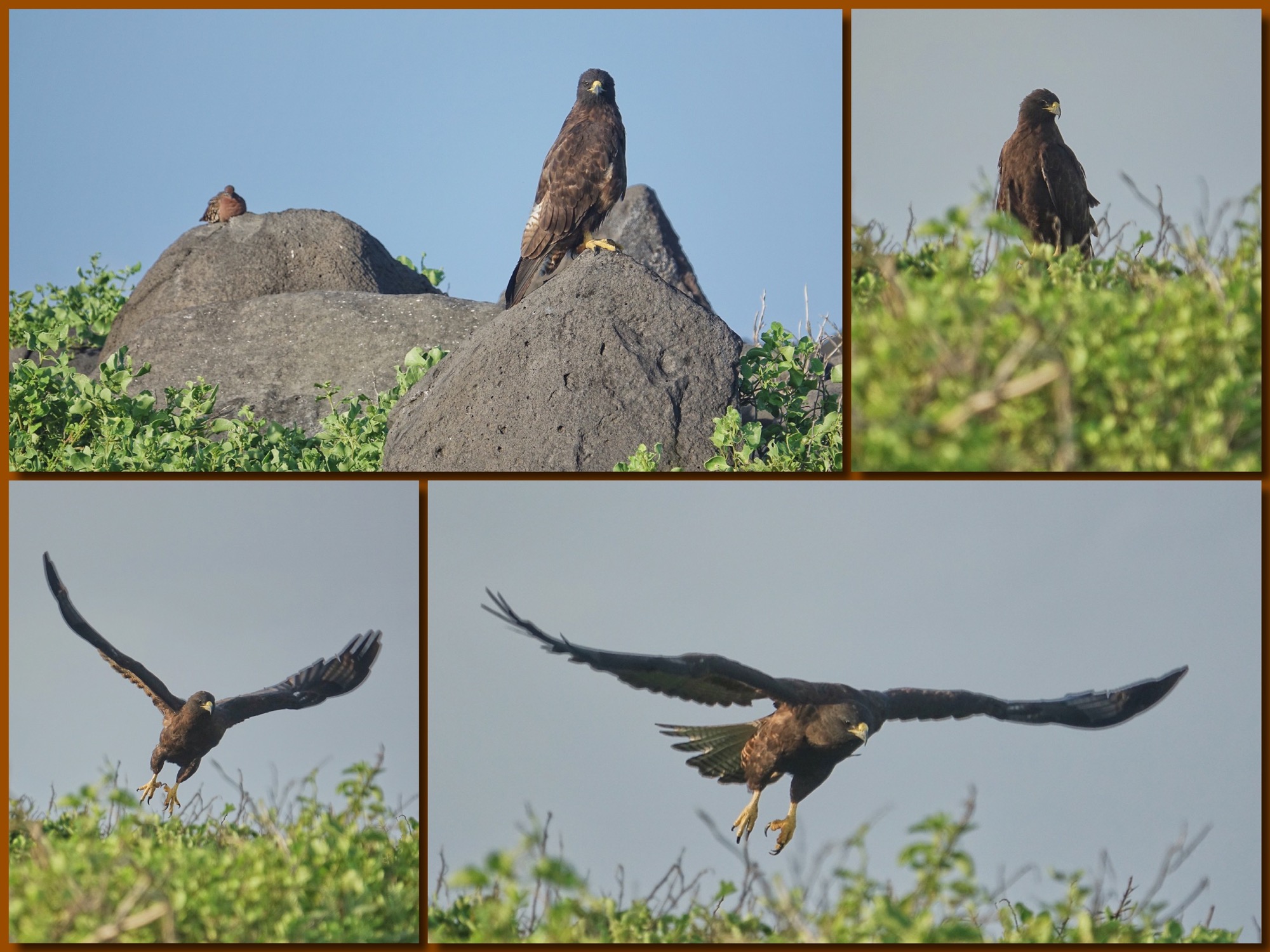
Each day there were several activities, with snorkeling generally in the late morning after time on one of the islands. I had never snorkeled before this trip, but I came equipped with an underwater camera. Unfortunately after one disastrous attempt I did not get in the water again, so I missed part of the Galapagos experience. Maybe next time…after a few lessons.
This is as good a place as any to highlight the sealions of the Galapagos. They are everywhere, from tiny pups to great beach-master bulls. They have absolutely no fear of human beings, and on several occasions we had pups come up and get very familiar with both our gear and our persons.
Our next day was spent on Floreana Island, one of the high islands of the Galapagos, and one with gorgeous beaches were Green Sea Turtles nest and rays swim in the surf. We did not see the turtles, but we certainly saw their excavations and tracks on the beach.
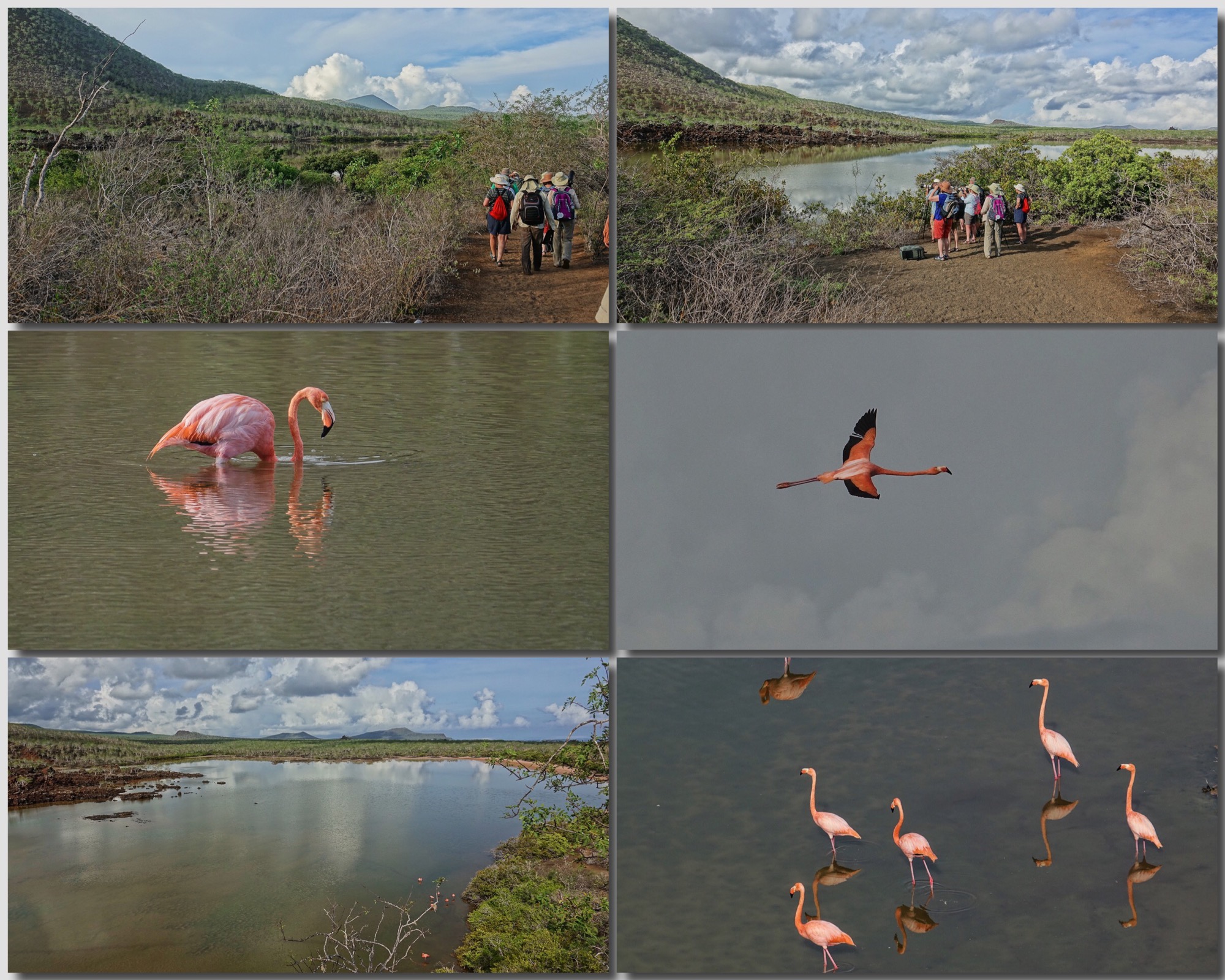
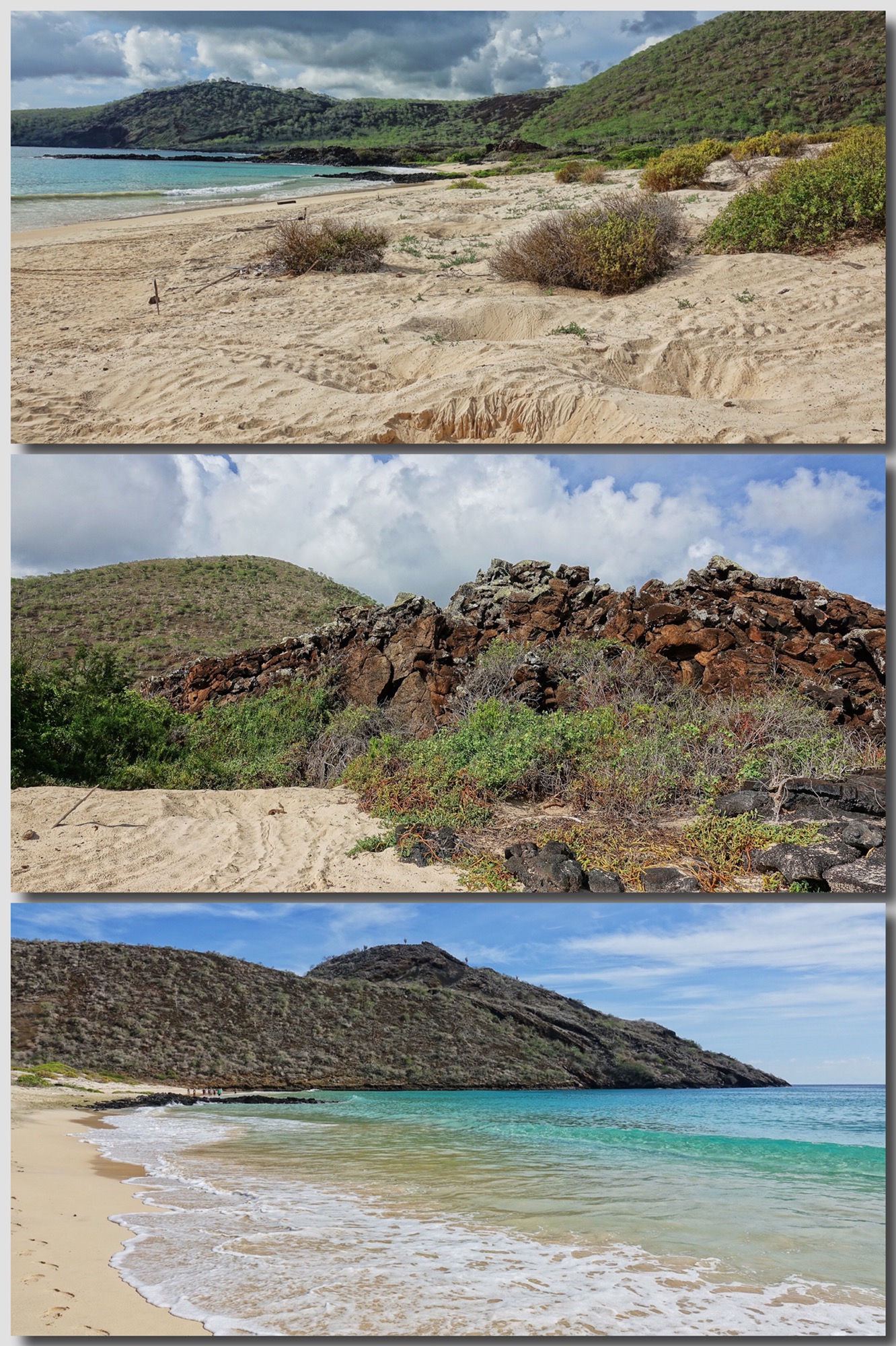
In the two panels above you can appreciate the real versatility of the Sony RX10iii (and soon to be iv). Flamingos at 600mm, in flight, and landscapes worth bringing home and showing off.
Overnight the boat moves us across the Humboldt Current once more to South Plaza, another short island…and indeed very plaza like. Here we had our fist encounters with the Giant Prickly Pears and Land Iguanas.
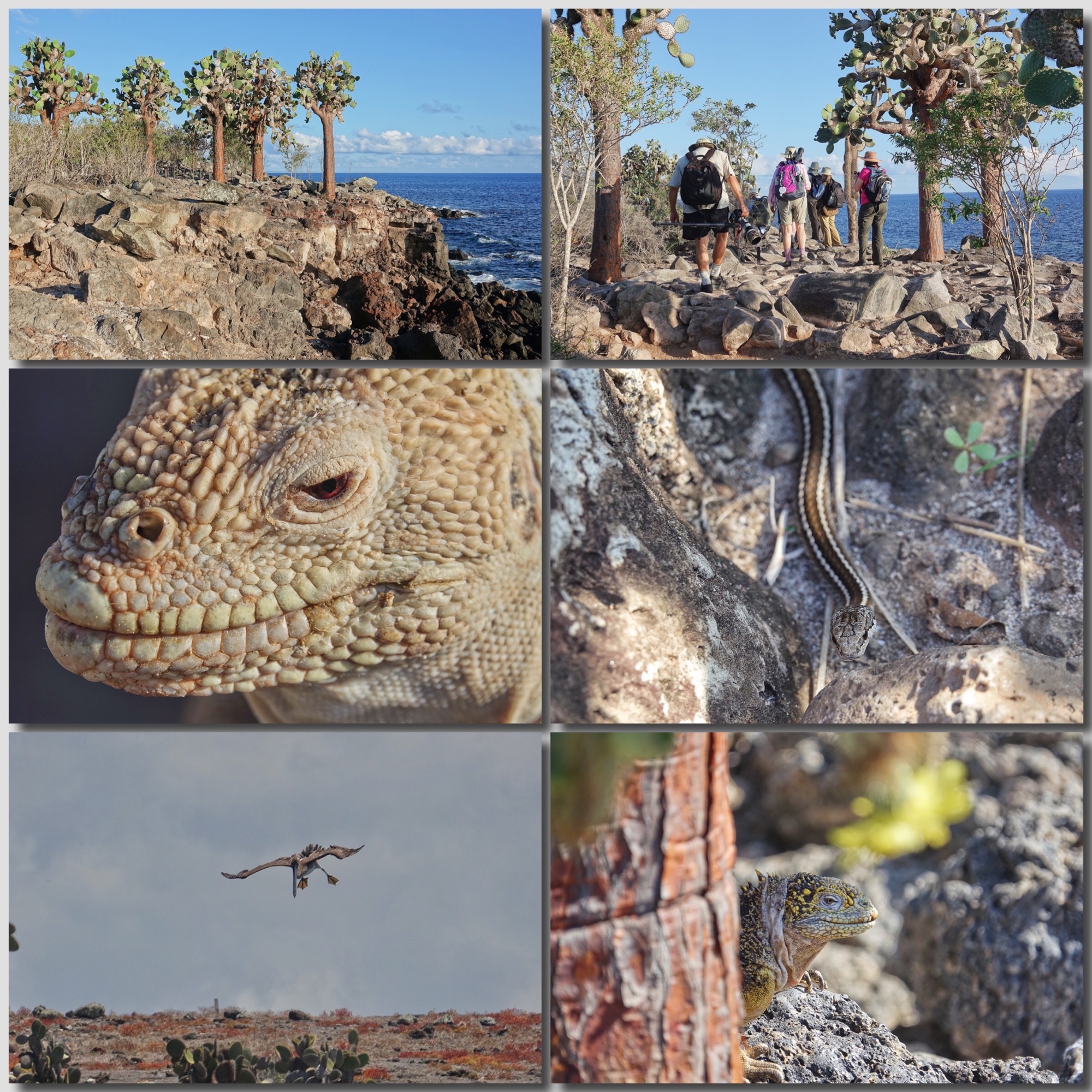
The afternoon was spent on Santa Fe Island, with more Land Iguanas, chances to photograph Tropic Birds from the cliffs, wonderful views of Swallow-tail Gulls, and a close encounter with a Lava Heron…as well as stunning landscapes.
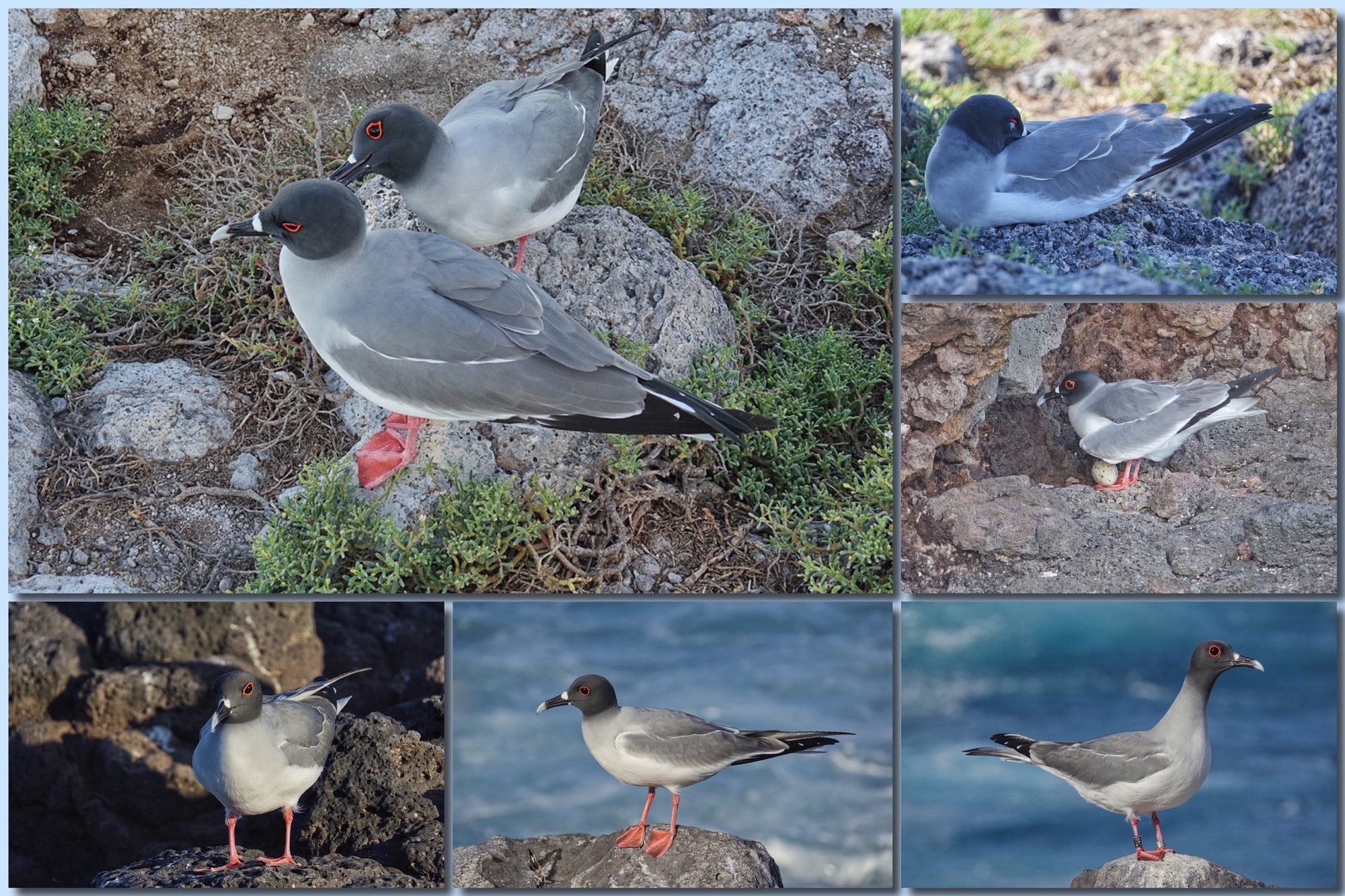
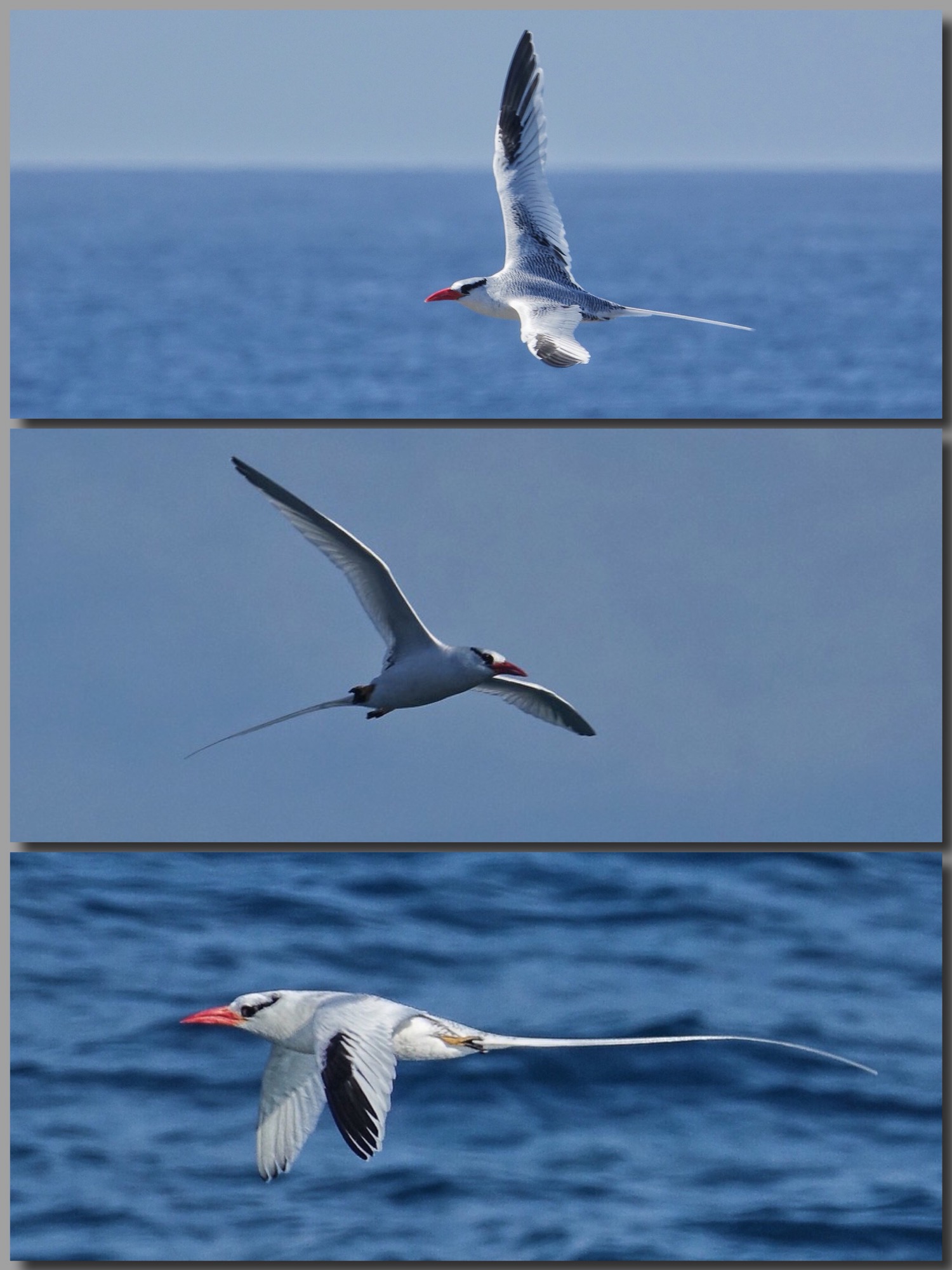
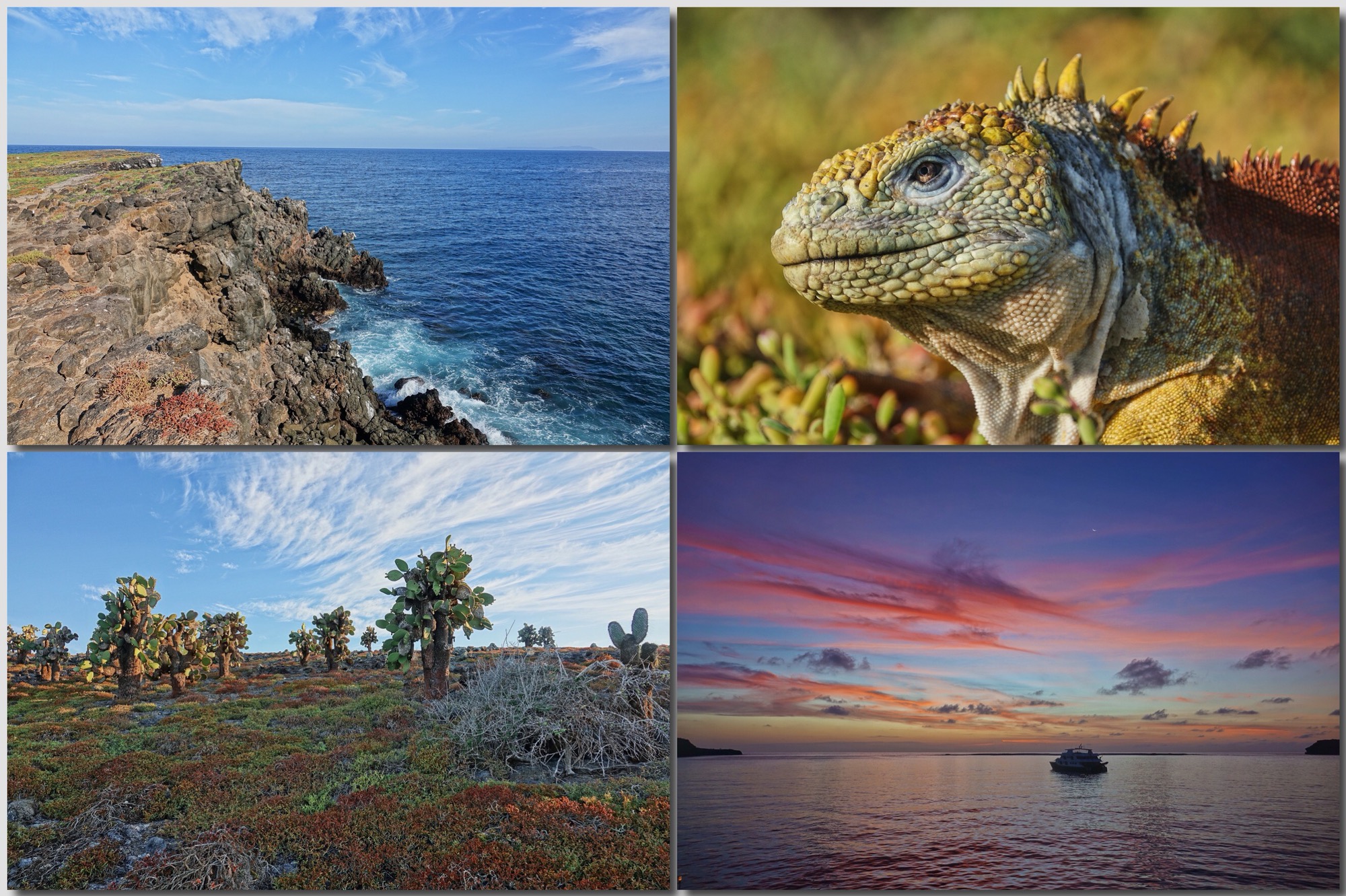
North Seymour Island was our next to last stop…saving the best for last. North Seymour has nesting colonies of Blue-footed Boobies and a mixed colony of both Magnificent and Great Frigatebirds. The Boobies are everywhere, underfoot, nesting in the trail, beside the trail…so close you sometimes have to walk around them. And they are displaying…doing their booby dance in pairs. The Frigatebirds are almost as close, nesting in taller brush wherever they can find space…and the males are in full display (or were when we visited). It is a totally amazing experience.
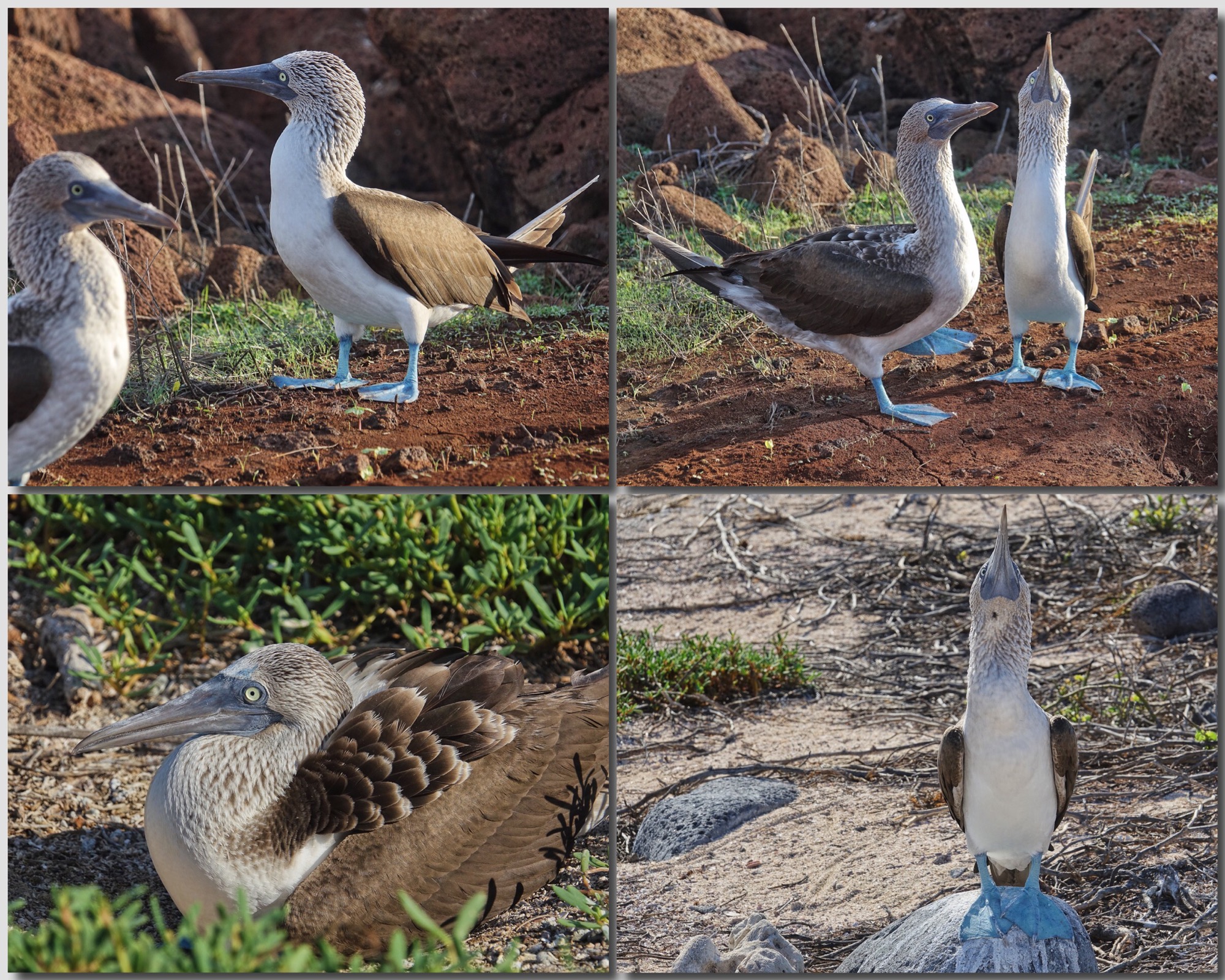
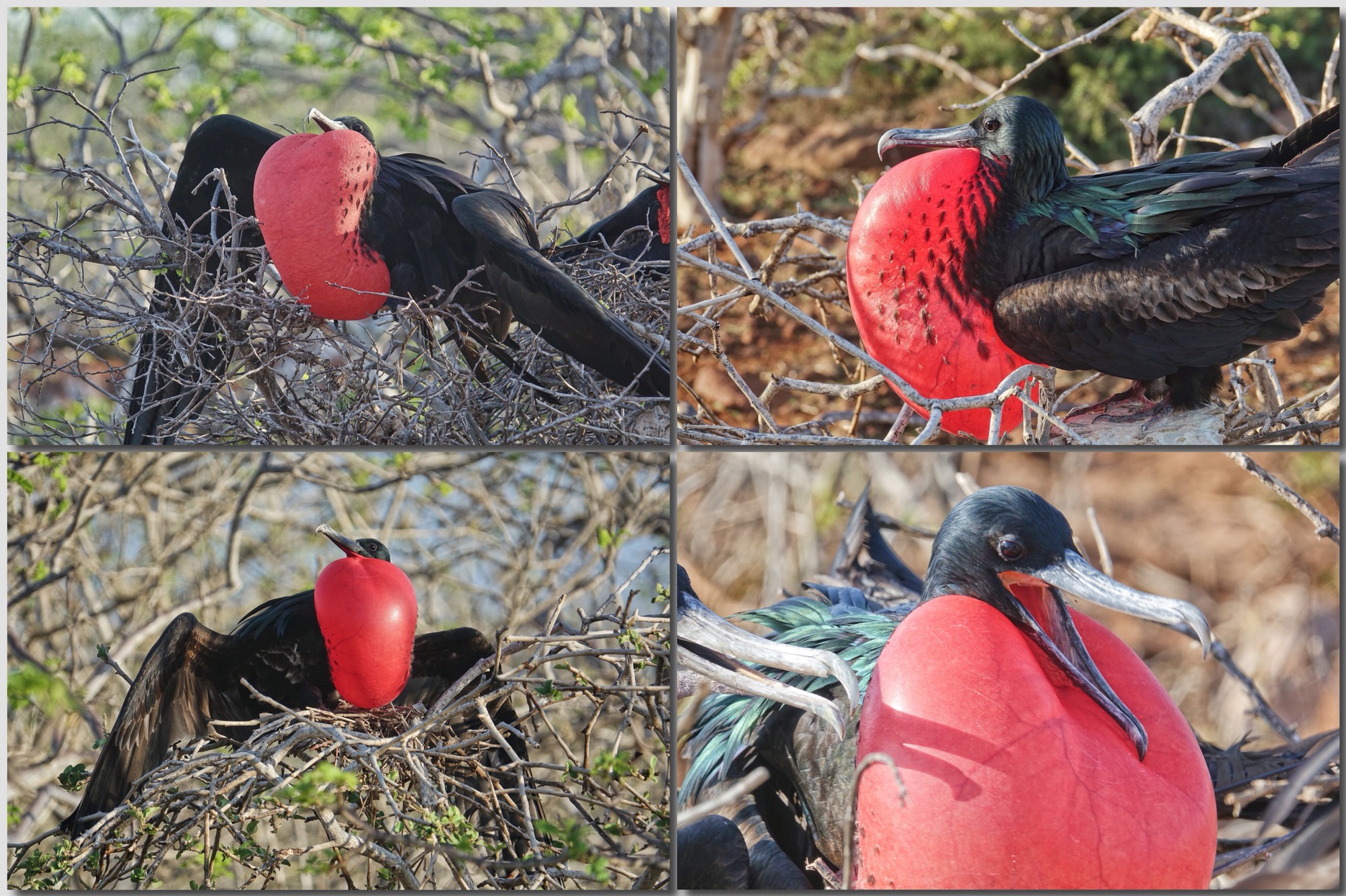
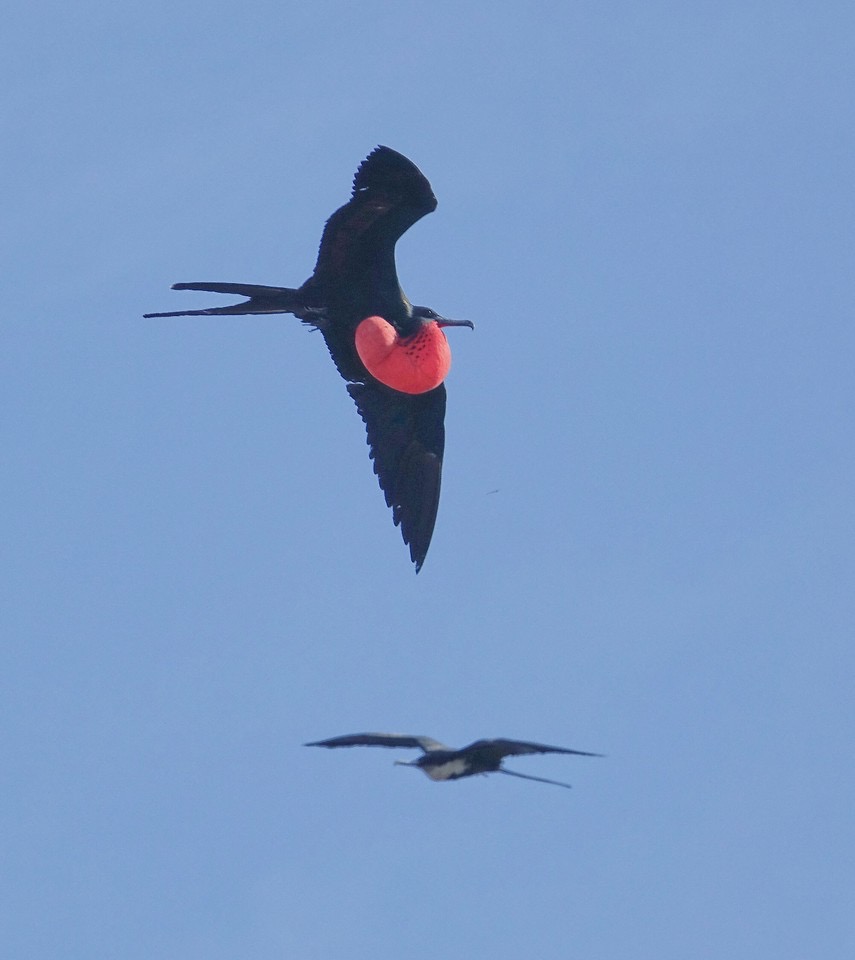
On our last full day in the islands we visited Santa Cruz, and traveled by bus up into the highlands to visit the largest of the Giant Land Tortoises that inhabit the Galapagos. We stopped along the way for some birding and sightseeing around a huge sink-hole, a common feature of volcanic islands.
It is hard to imagine just how big the Giant Land Tortoise is. When they move through the brush they are like a bulldozer…nothing stops them…and yet this giant grass eater is among the gentlest creatures on earth. Too gentle perhaps as hundreds of thousands of them were collected each year, before they were protected, by passing ships and consigned to life in the hold until the crew was hungry for fresh meat. Since protection their numbers are slowly growing on the islands and most of the high islands have reserves.
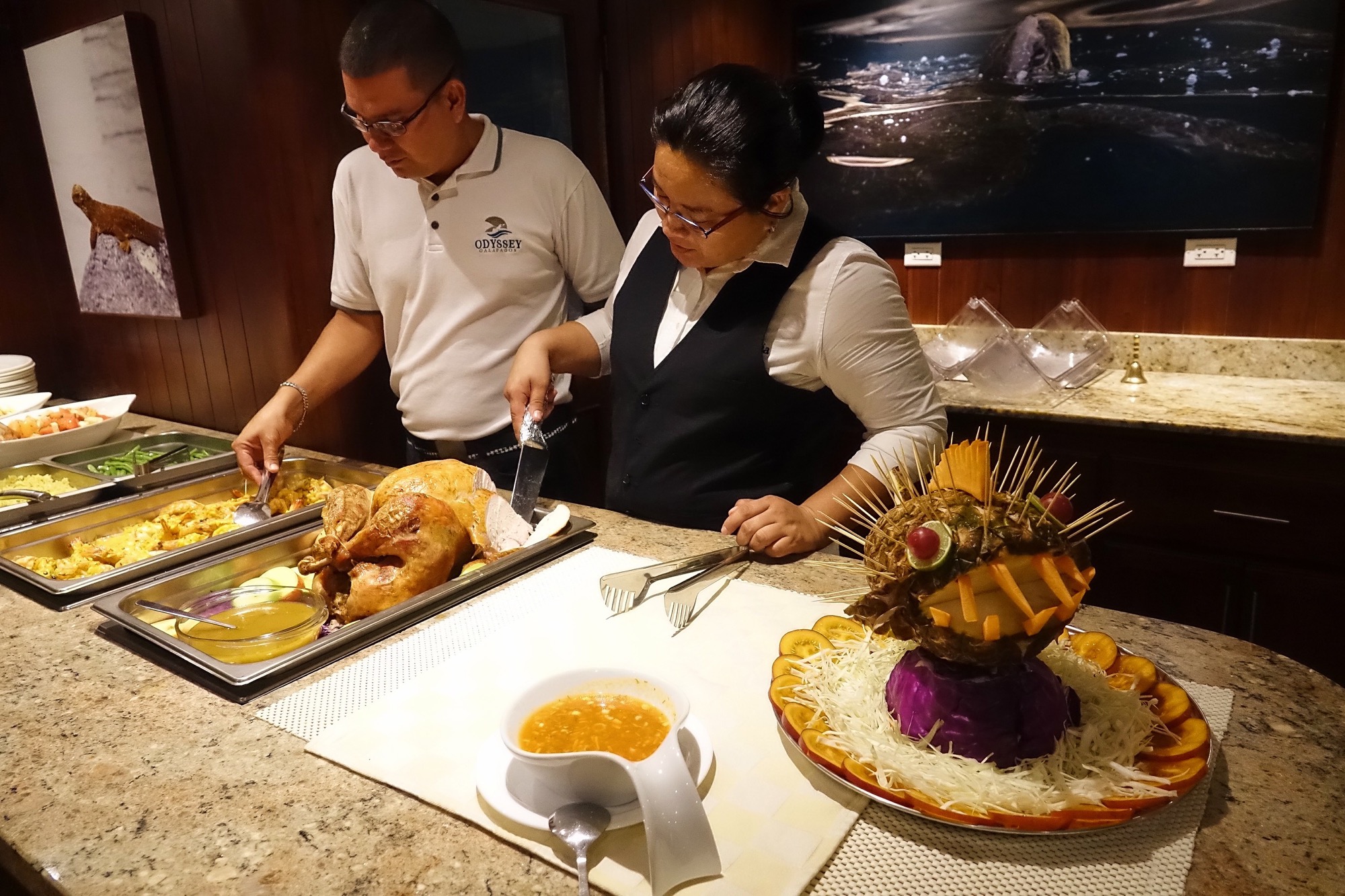
We flew back to Quito for another night at the Garden Hotel, but since most of us had night flights out, we spent our last day in Ecuador traveling to the high Andes above the city and over the other side for Andean hummingbirds. We visited a lodge that specializes in hummers and spent a slightly rainy day photographing them, and sharing a traditional Ecuadorian meal.
The Sony RX10iii really came through on the hummingbirds in low light.
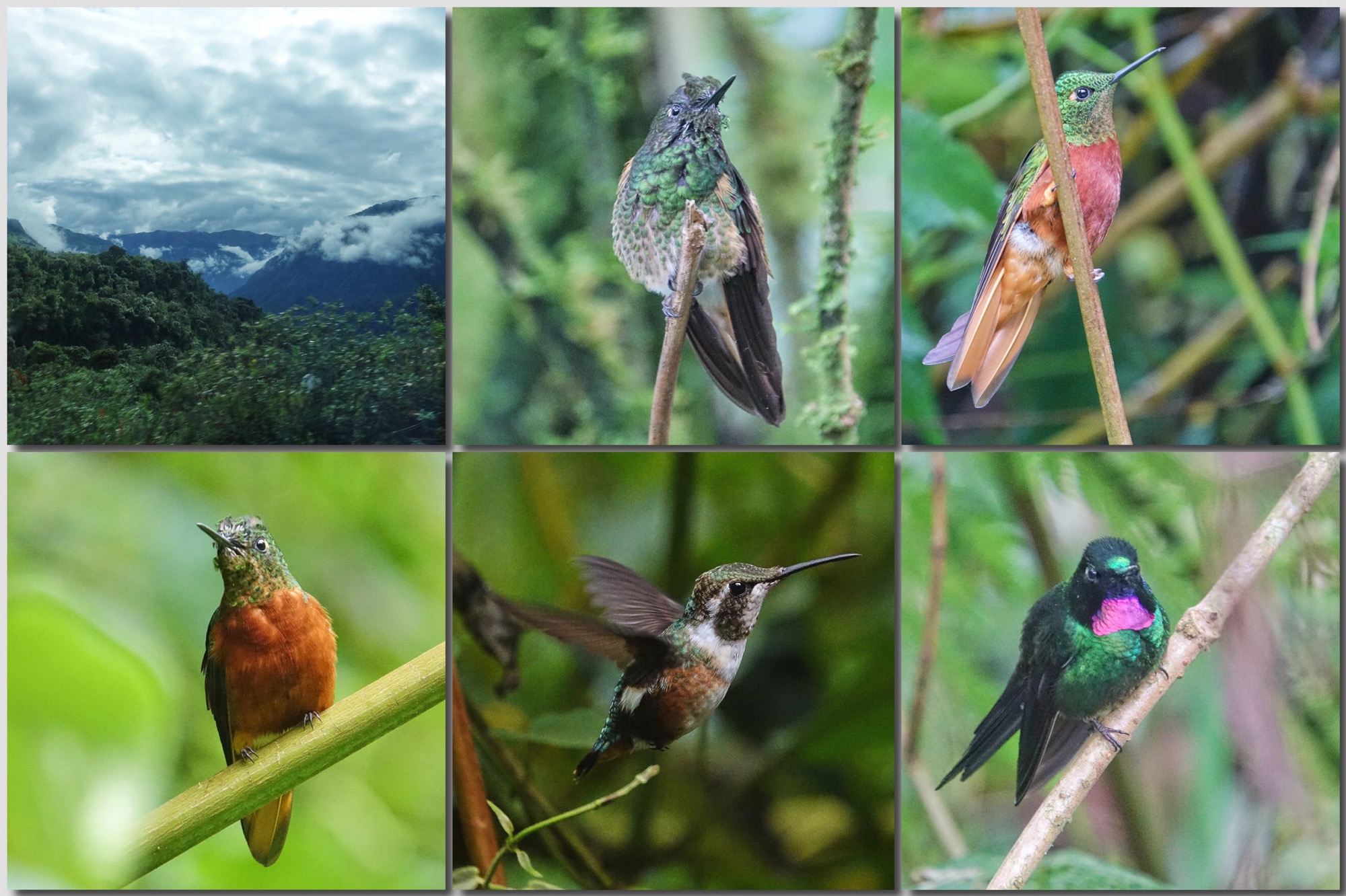
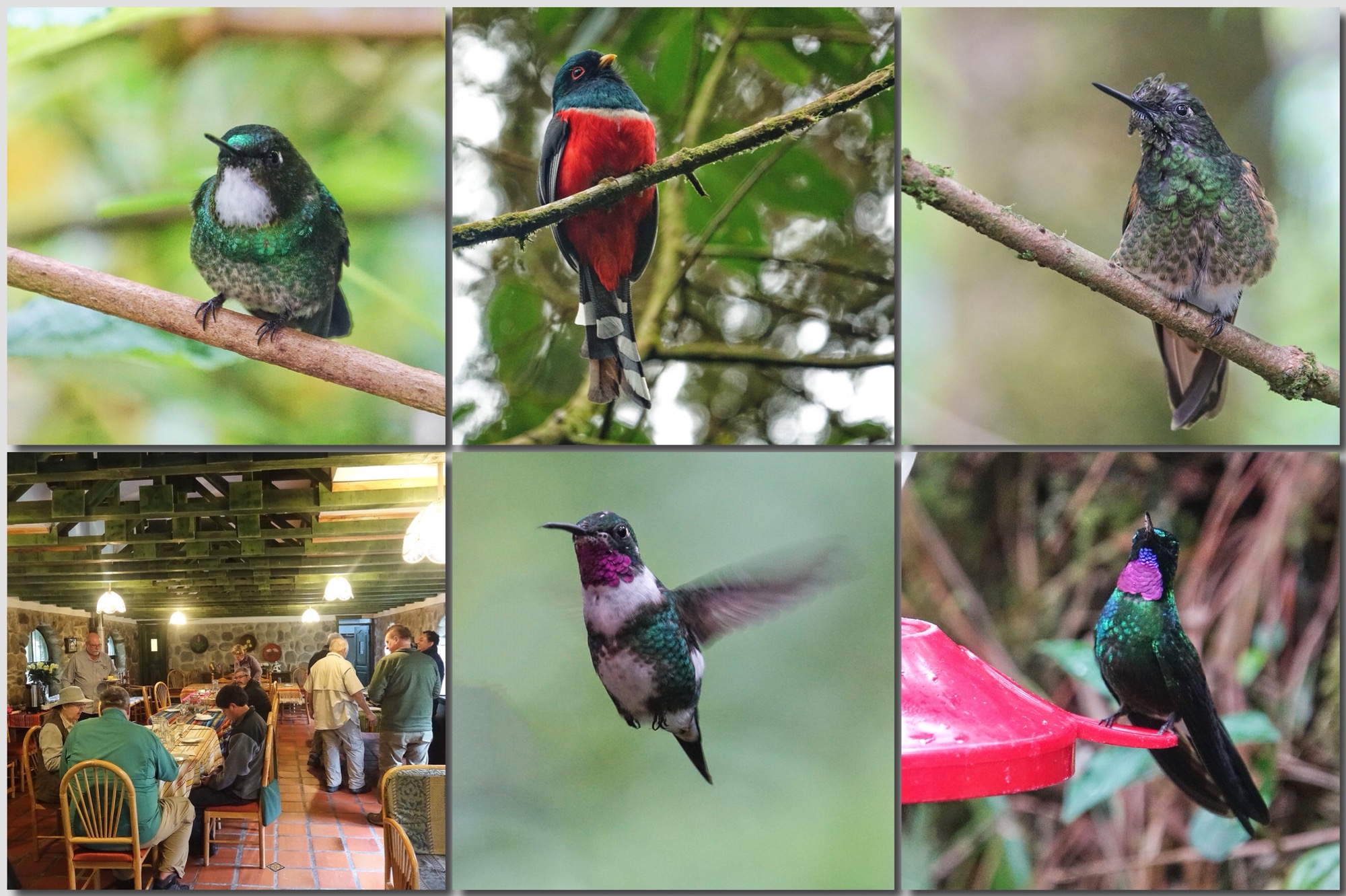
We were back in Quito in time for evening flights. The end of a remarkable adventure in the Galápagos…thanks to Wildside Nature Tours.
For many the Amazon River is a thing of legend. It runs through the jungle heart of South America, from the Atlantic delta in the east to the slopes of the Andes in the west, and its basin dominates almost half the continent in 5 different countries. I was privileged to be invited to co-lead the Wildside Nature Tours Amazon Riverboat Adventure last March, to experience the Amazon for myself.
On this trip I carried my Sony RX10iii, an advanced-point-and-shoot superzoom, with a tack sharp 24-600mm f2.4-f4 zoom lens, and Sony’s excellent 1 inch sensor. Much of the trip I was shooting from moving boats, and the Sony handled the various challenges very well. I never felt the need for another camera.
Some of us flew into Lima a day early, and spent the first day, while others were still arriving, visiting the high coastal desert and mountains north of the capital city in the De Lachay reserve. This is a unique landscape, as strange and wonderful as the Amazon itself, but about as different as different can be. These arid uplands, within sight of the Pacific, are home to many species of birds, lizards, dragonflies, and butterflies that you just do not see elsewhere in Peru.
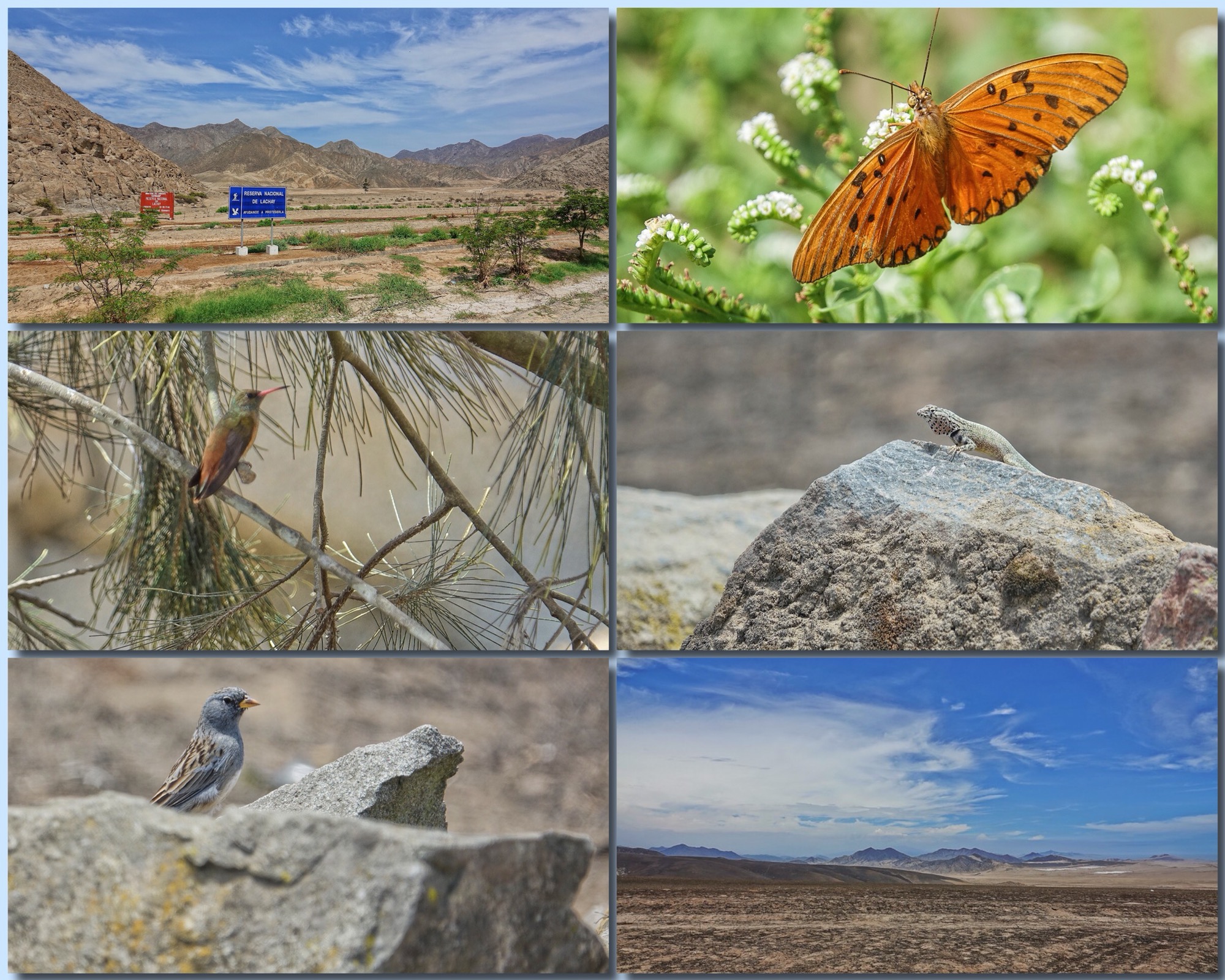
On the way back to the hotel, we stopped at the Ventinilla wetlands just at the edge of Lima…home to major wintering colonies of Franklin’s Gulls and Black Skimmers. It is wonderful that the Lima has preserved its wetlands, though they are surrounded on all sides by haphazard development. There were birds in the air continuously so I had a good chance to hone my birds-in-flight skills. BIF is not as easy with a P&S as with a full fledged DSLR, but the Sony brought back some satisfying images. I can not wait to try out the new Sony RX10iv with its improved focus in a similar situation when it arrives.
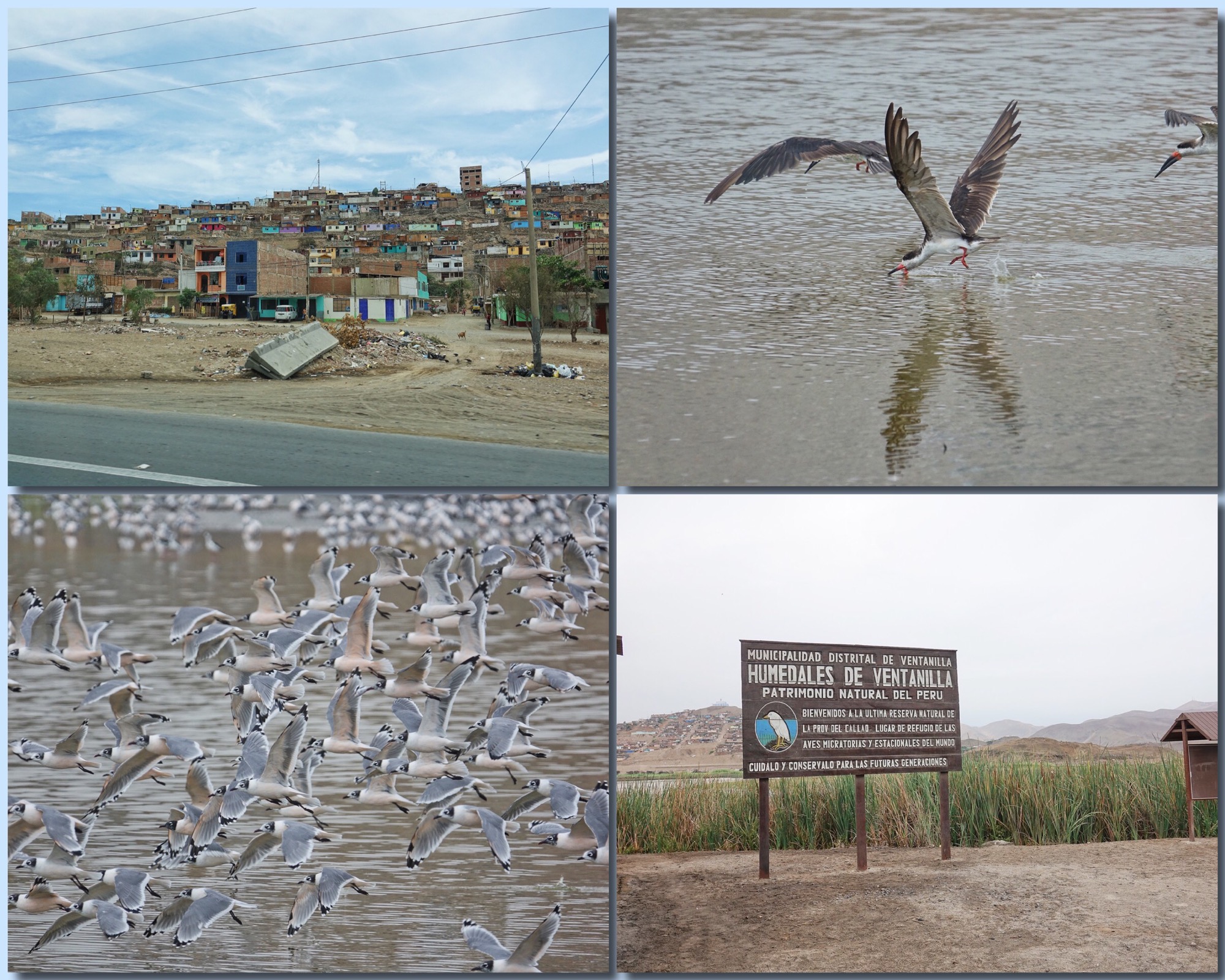
The following day we were at the airport at 5 AM to board a small commercial flight for Iquitos. Iquitos the major port of call on the Peruvian Amazon. There are about 60 miles of roadway in and around Iquitos, but there is no highway connecting the city to anywhere else in Peru. You can only get there by air or by boat…and by boat would take you almost 2/3s of the lenght of the Amazon through all of Brazil. We landed in the pouring rain. We were to experience rain several times on our journey but, considering we were in the heart of the Amazon Rainforest, we stayed remarkably dry. On our way from the airport to our river boat, we stopped at the White Sands Forest to explore another unique habitat. Shooting in the rain is always a challenge. I had some confidence in the weather sealing of the Sony RX10iii, but still, I tried to keep the camera under my umbrella and covered it with a gallon sized zip lock bag with a hole punched for the strap. I kept the bag on the strap the whole trip, and had several more occasions to use it.
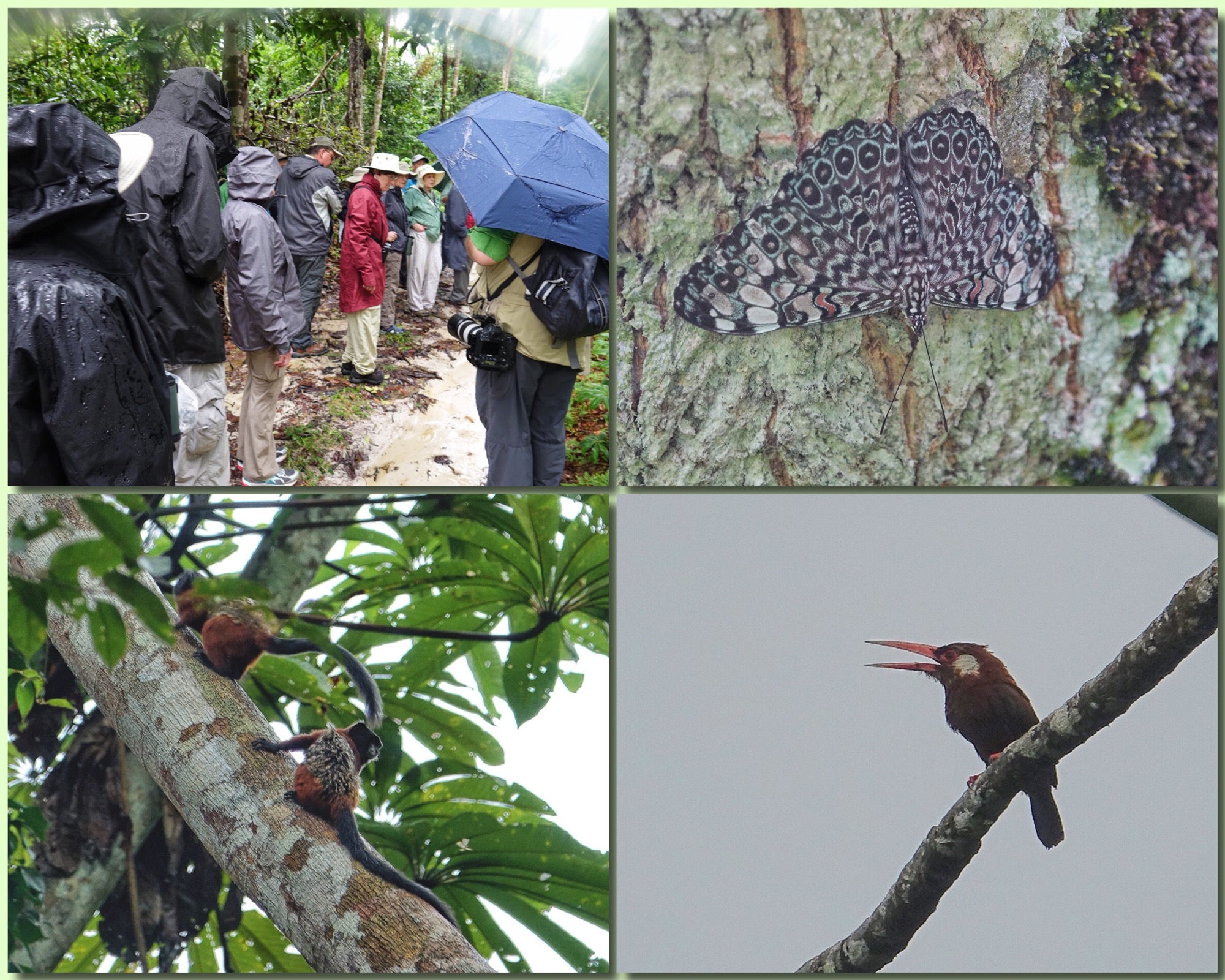
One of the things I appreciate about the Wildside Nature Tours Amazon Riverboat Adventure is the cultural aspect. Wildside recommends that each participant purchase a small cache of school and art supplies, soccer balls and frisbees, to distribute in villages were we stop, and to throw to children who come down to the river as we pass. We made a stop at a department store in Iquitos to stock up…then bused down to the docks for our first sight of the Amazon and our riverboat home for the coming week.
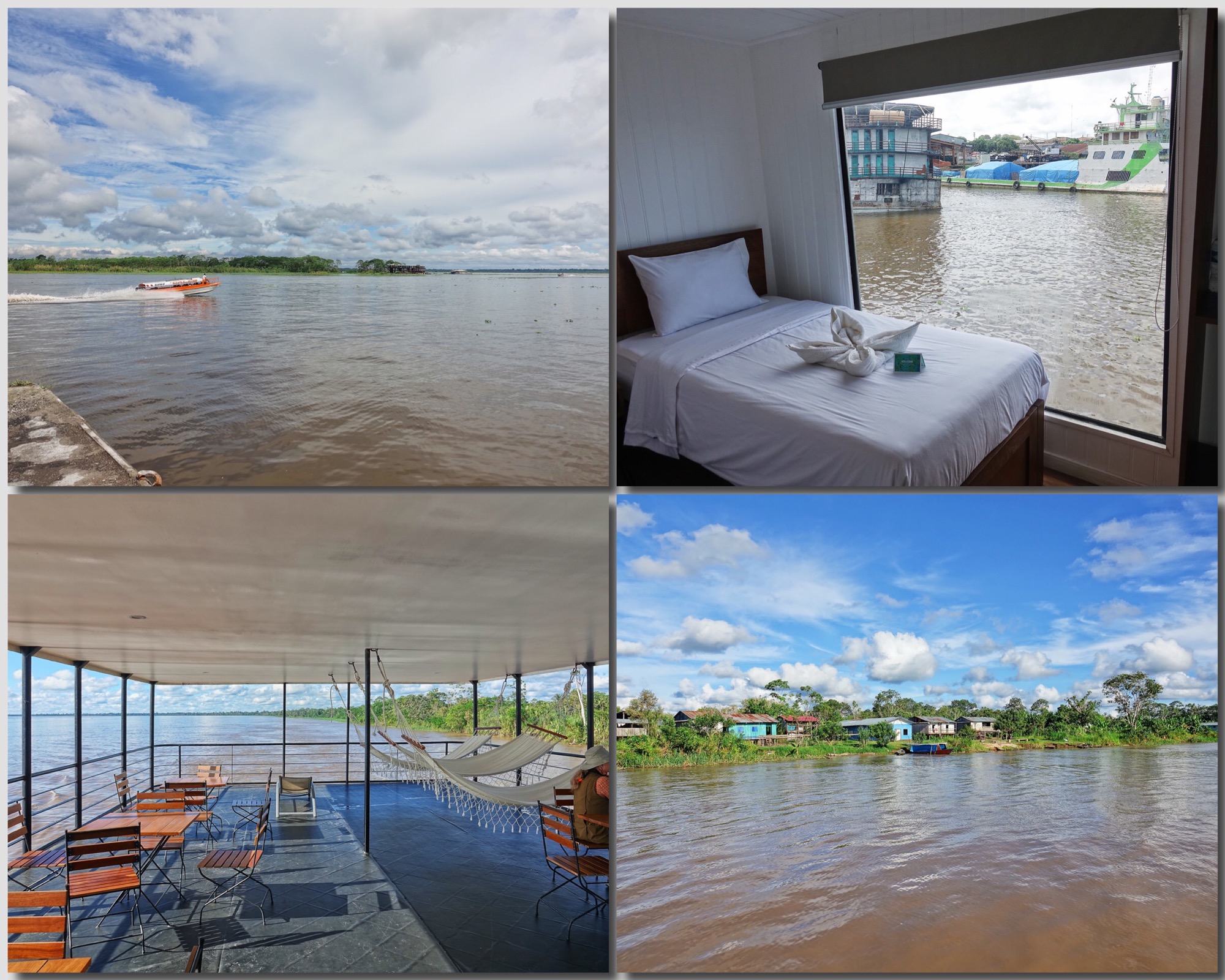
One of the great advantages of a riverboat trip on the Amazon is that you bring your hotel with you, deeper and deeper into the rainforest. Though we went off every day in motor launches to explore tributaries or to land and hike in the terra firms forest, we returned each noon and evening to comfortable rooms (each with a large picture window on the river), hot showers, and great meals. And we did not have to repack until we got back to Iquitos. There is no better way to experience the Amazon.
There is also no way to convey the size of the Amazon river…or to capture it with a camera. We were on the river near high water for the year, and the volume of water flowing down and past, the width of the river, the endless water stretching way east and west…even as far up river as Iquitos…is astounding. I can only image what it is nearer the mouth in Brazil. We woke every morning to the river and were always amazed. It is in vistas like the one below that the Sony’s 24mm equivalent comes into play…that and the built in HDR. I would not have been able to capture the clouds and detail in the water in the same exposure without the HDR mode…and Sony’s HDR implantation is among the best…giving you the choice of 1 to 6 stop exposure differences and allowing you to fine tune the center exposure using EV compensation.
We spent our days in flat bottomed 14 foot motor launches pushing our way up tributaries to get deeper into the rainforest to find birds and mammals, and returned each day to a new towel animal on our beds. Dawn to dusk and even one night boat trip.
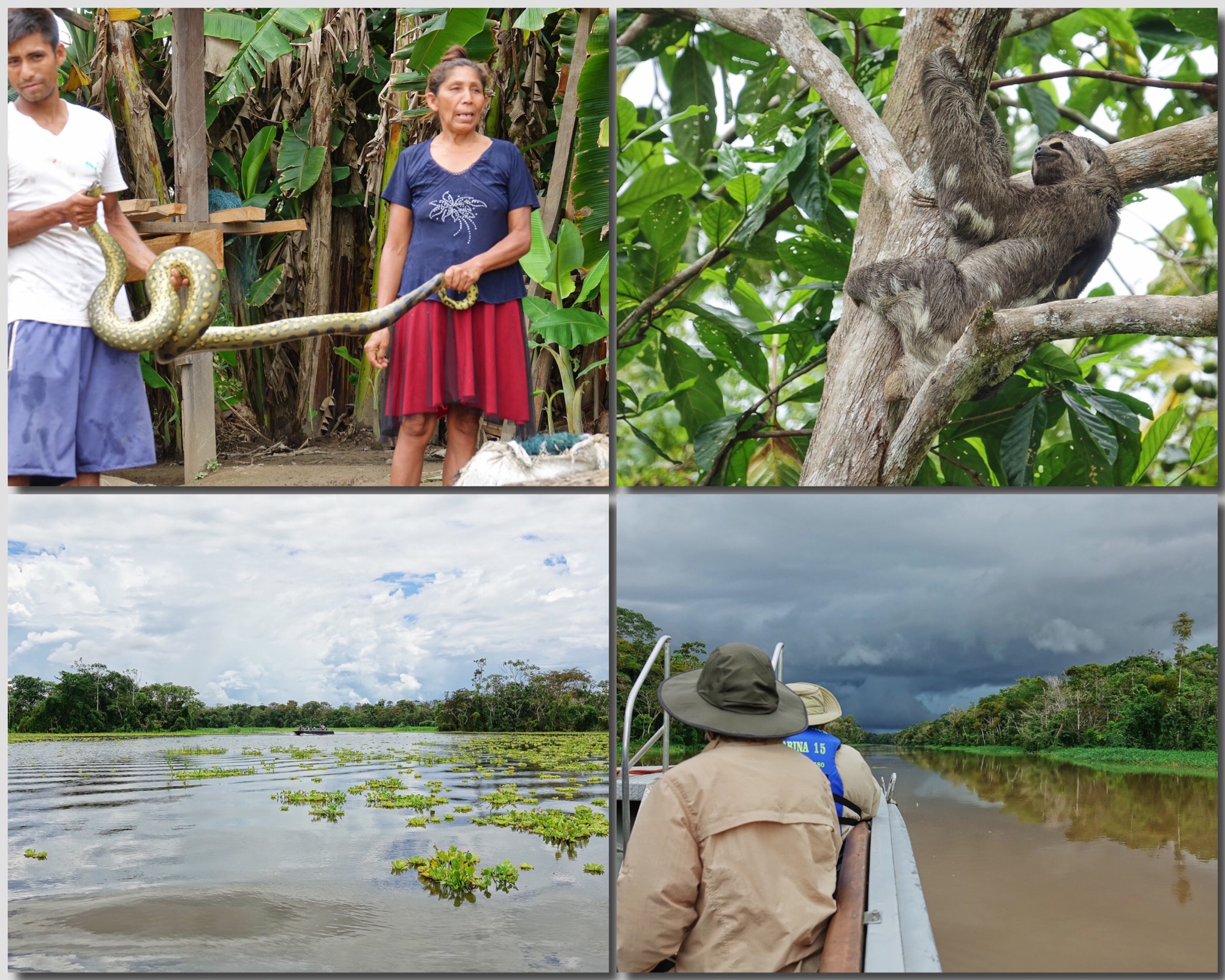
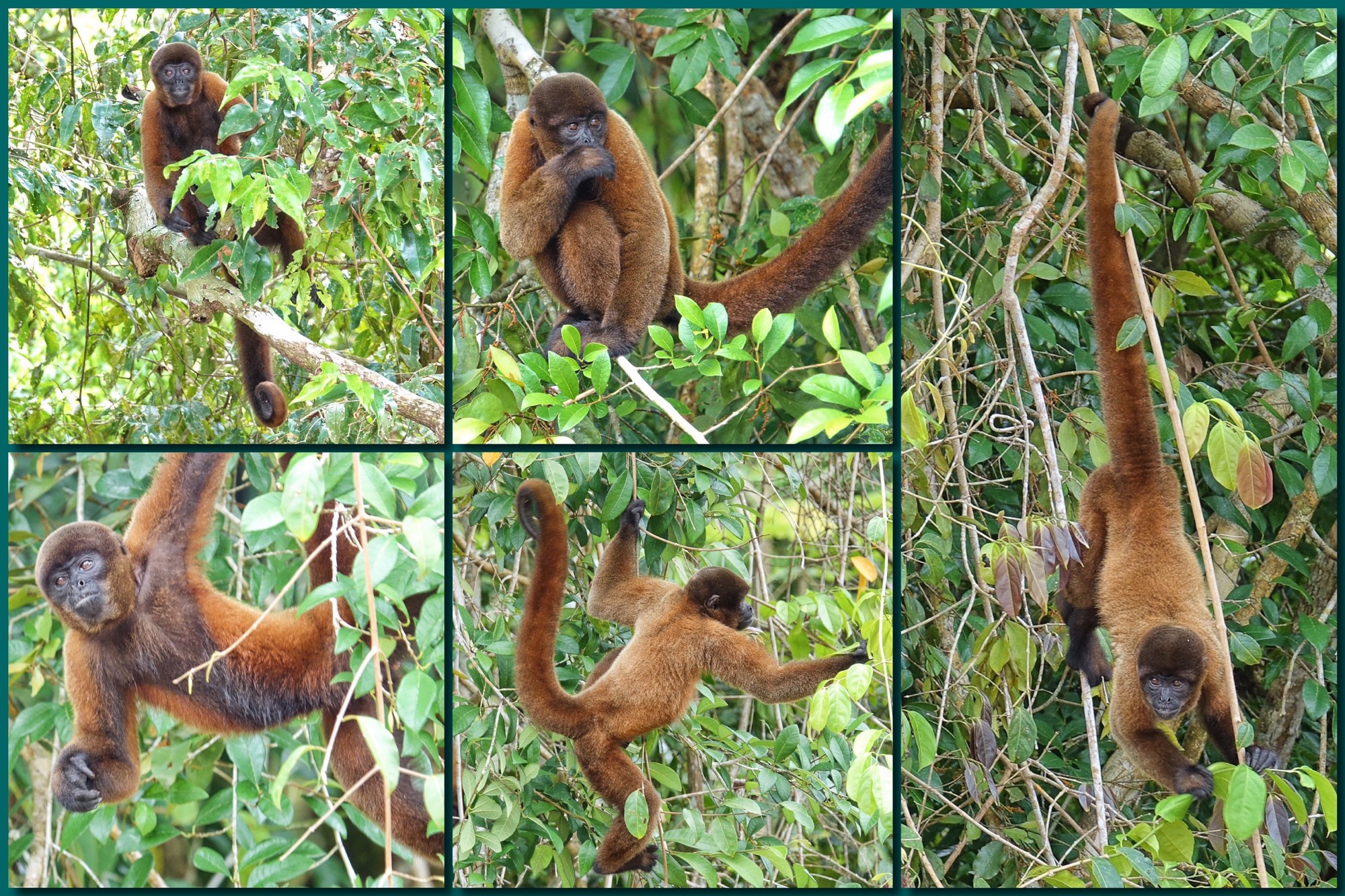
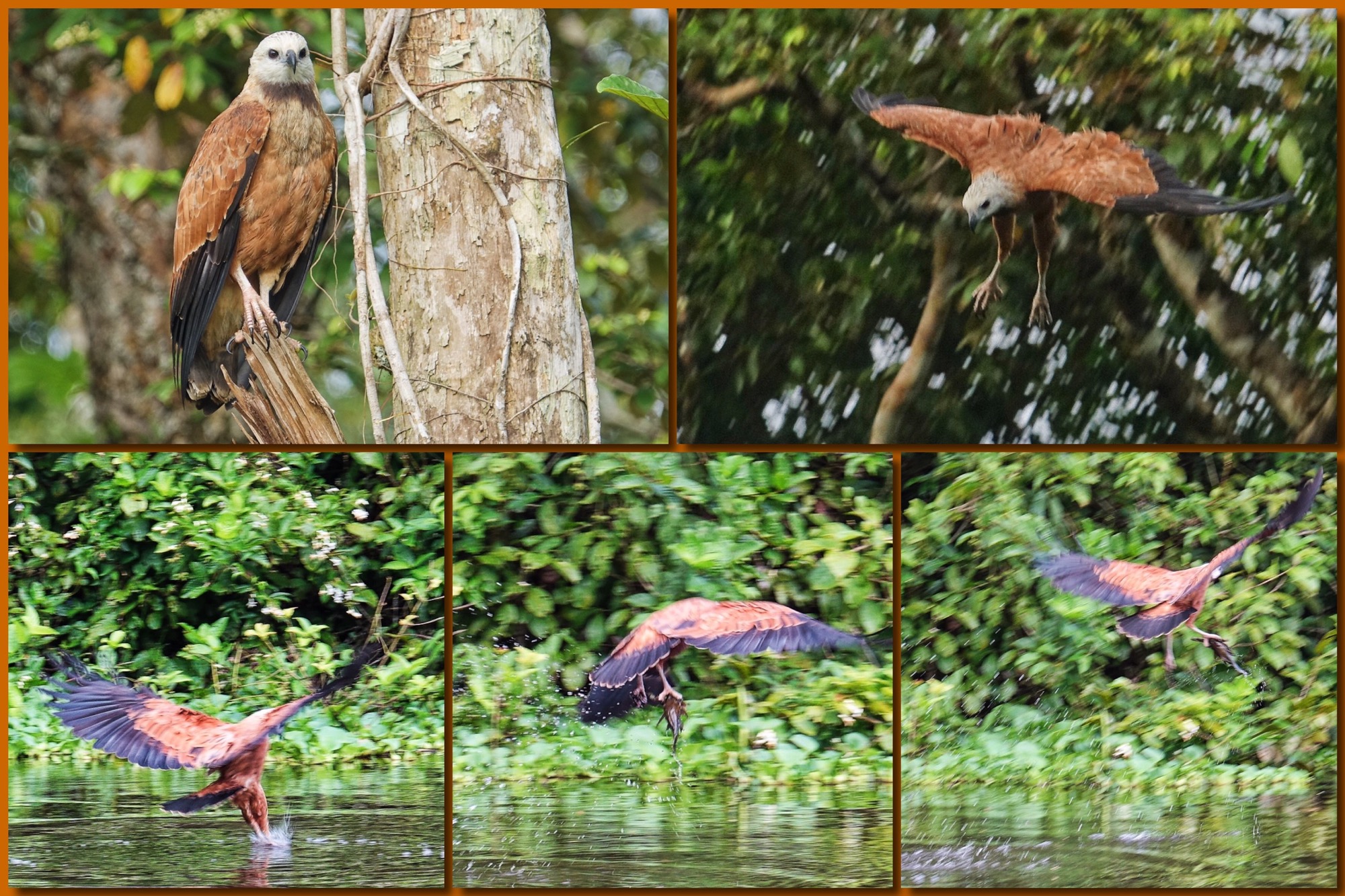
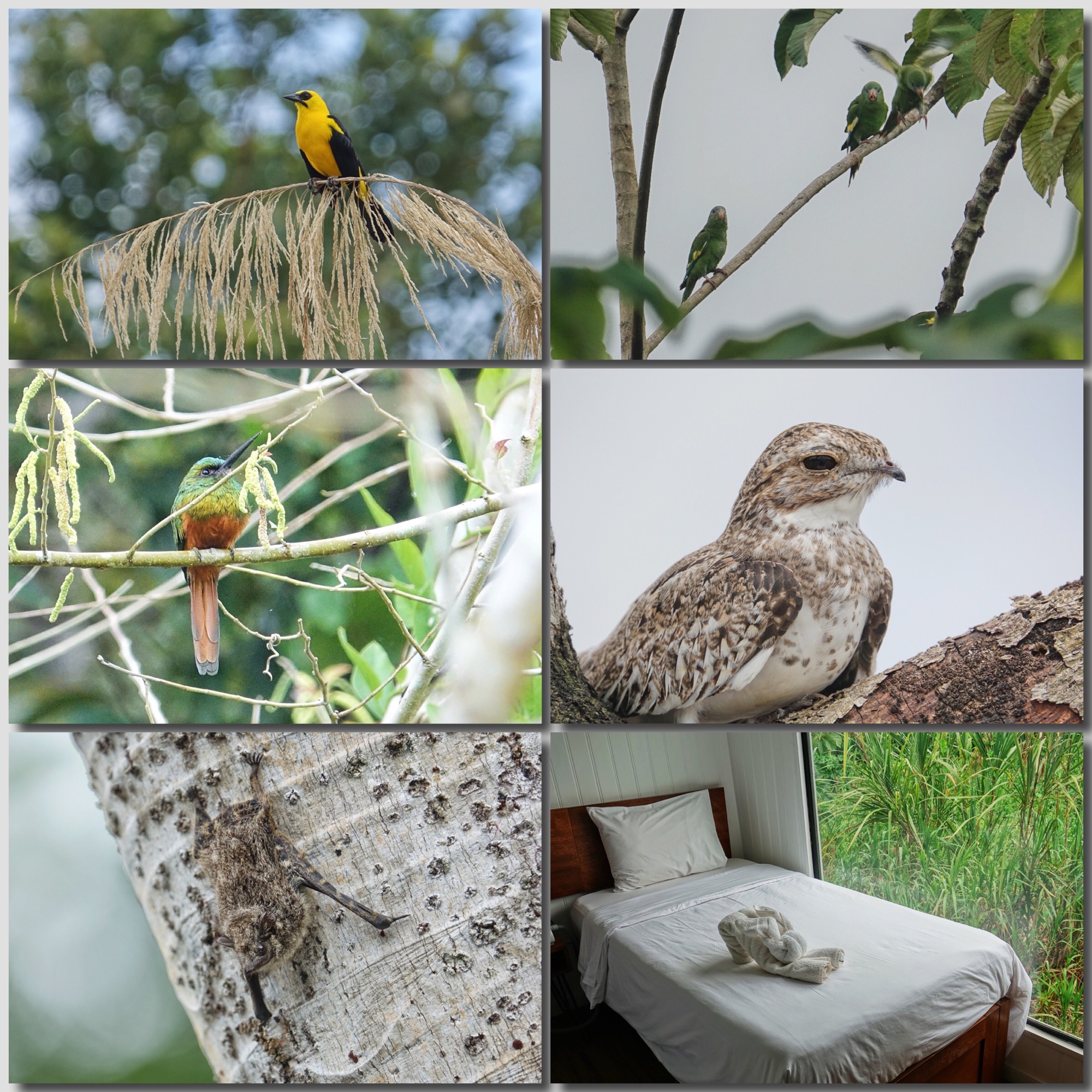
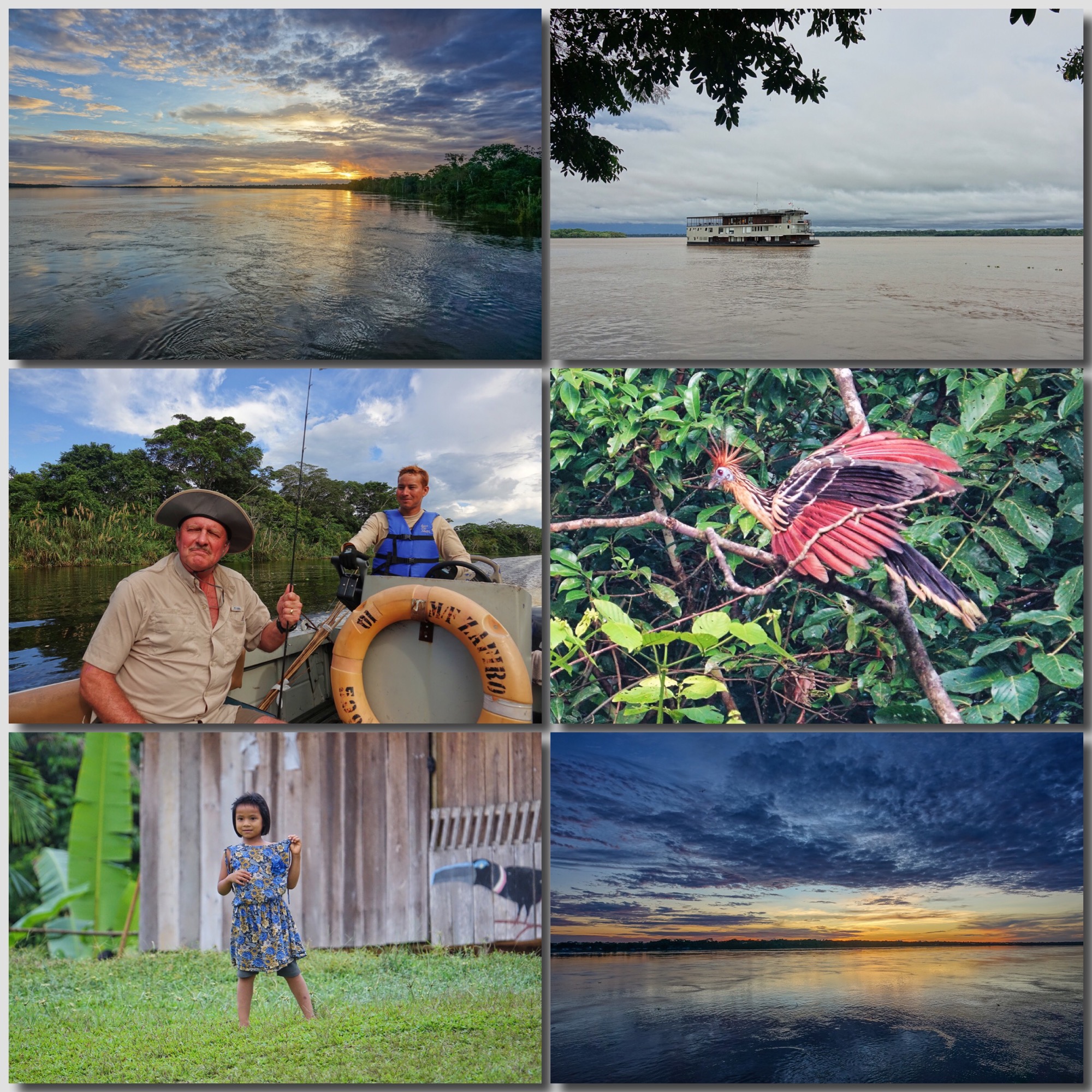
We did go ashore for several hikes in the terra firma forest…in search Pygmy Marmoset and Night Monkeys, birds, and reptiles of the rainforest.
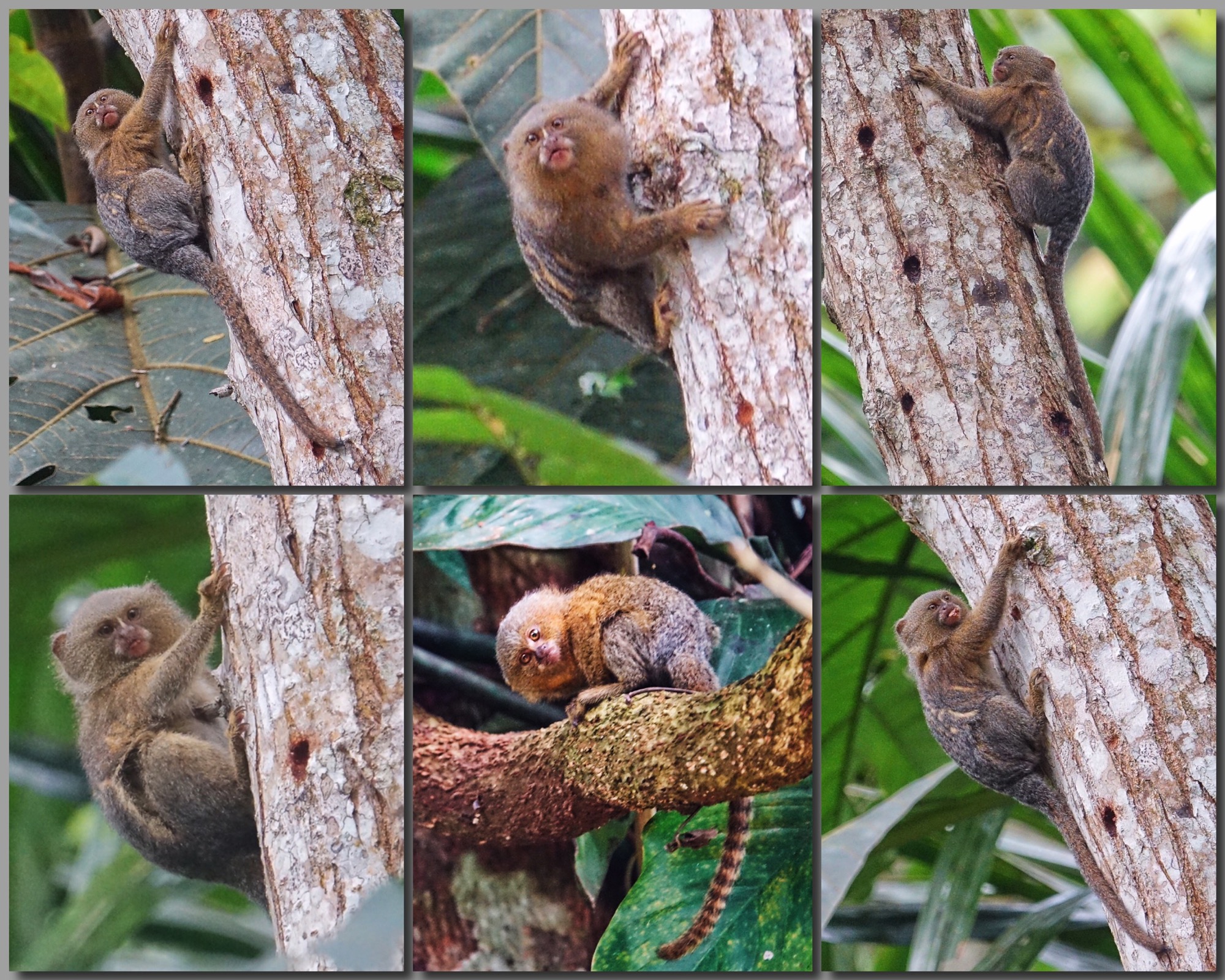
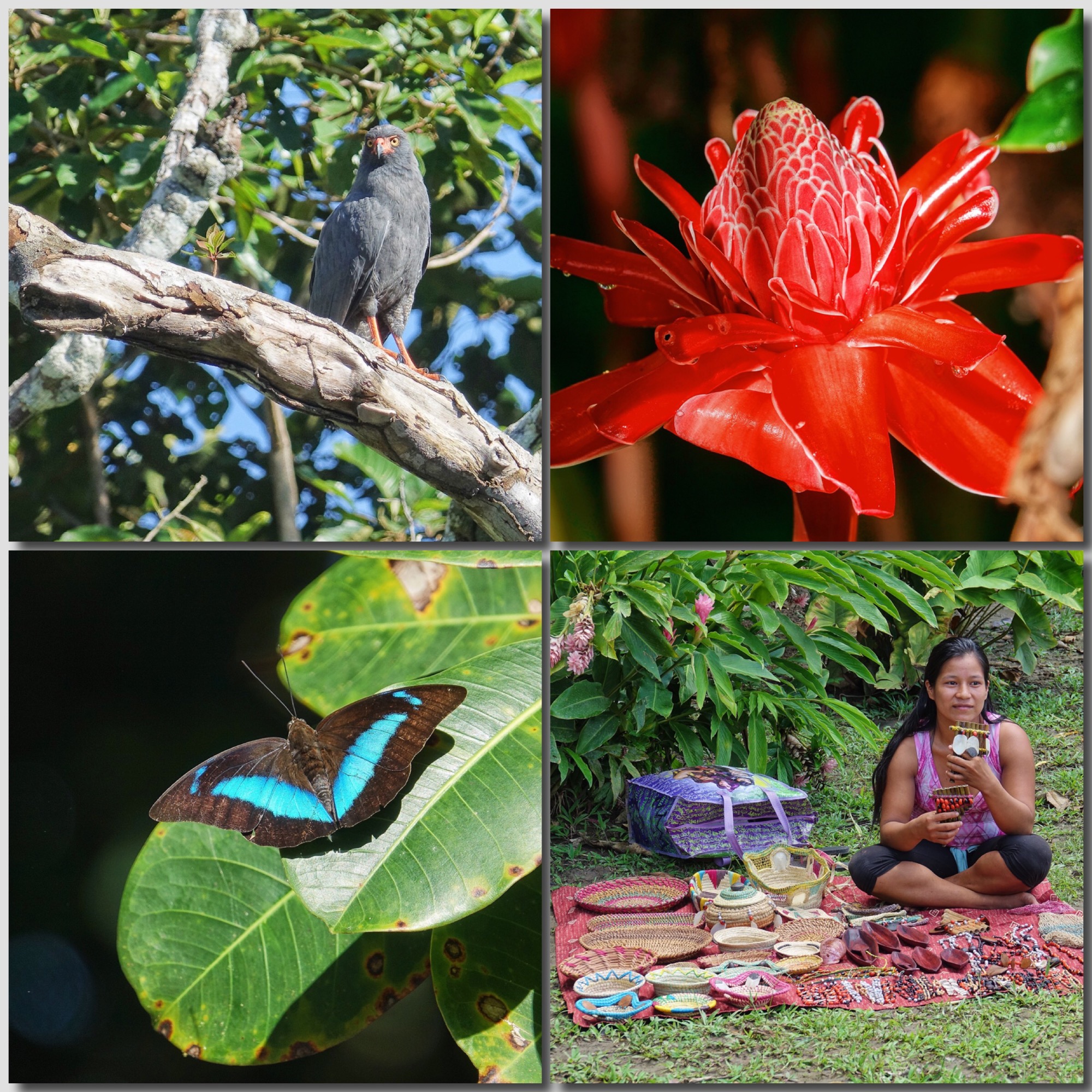
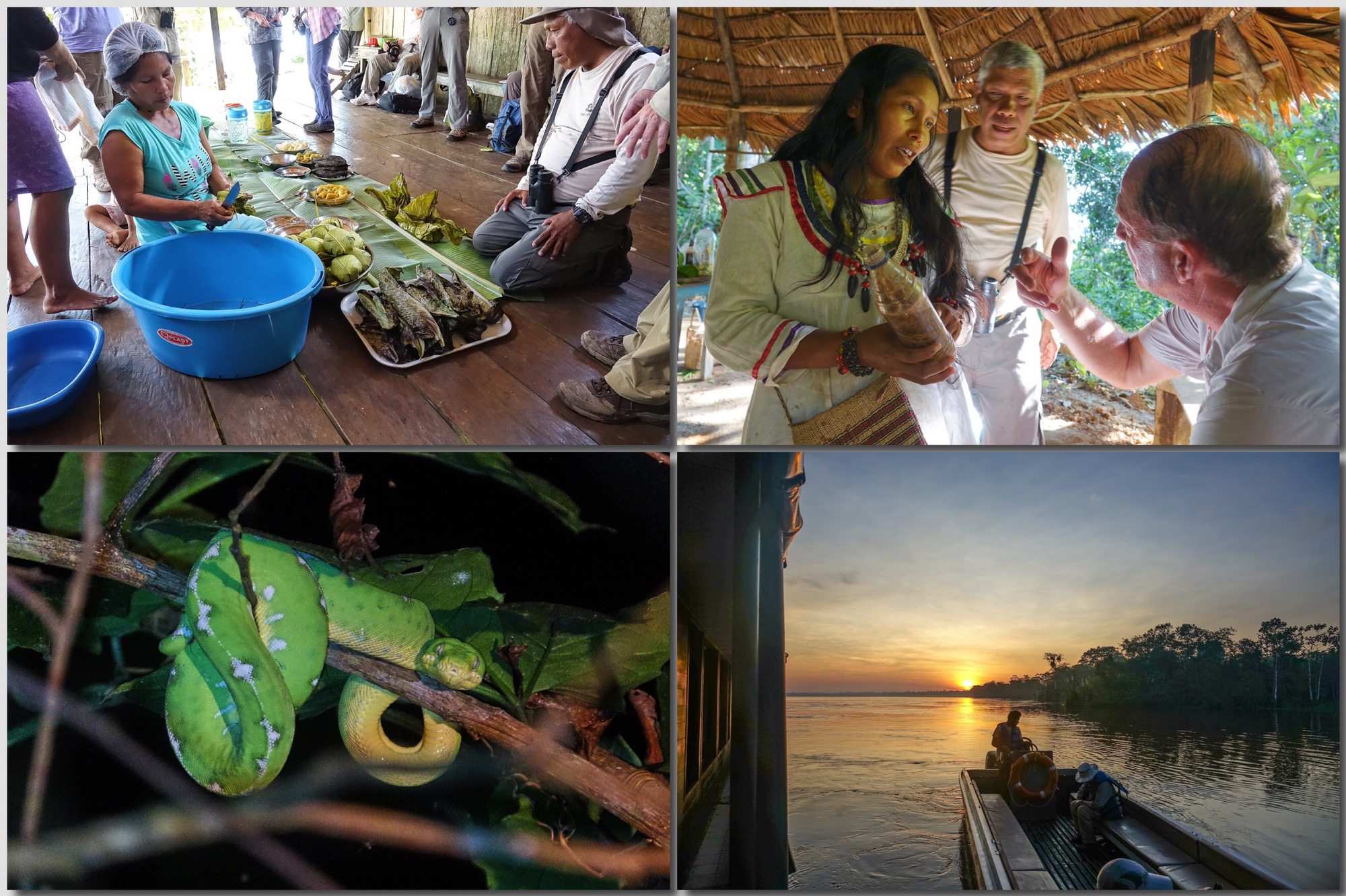
Besides our visit to a native healer, we shared a noon meal with a village beside the river. The women of the village prepared a traditional Amazon high water meal (lots of fish), and after the meal the local teacher assembled her students to give us an impromptu concert.
Shooting in the rainforest is a challenge for any camera. Light levels are often low, but with contrasting areas of bright sun that finds its way through the canopy high above. Good high-ISO performance helps, and the Sony RX10iii does not disappoint. The Anti-motion Blur mode is also very useful for really low light. The Marmosets were taken with AMB and produced effective exposures where I would have needed flash. The Emerald Boa was taken in total darkness by the light of a flashlight (a good flashlight but a flashlight none the less). Considering the conditions I am very pleased with the results.
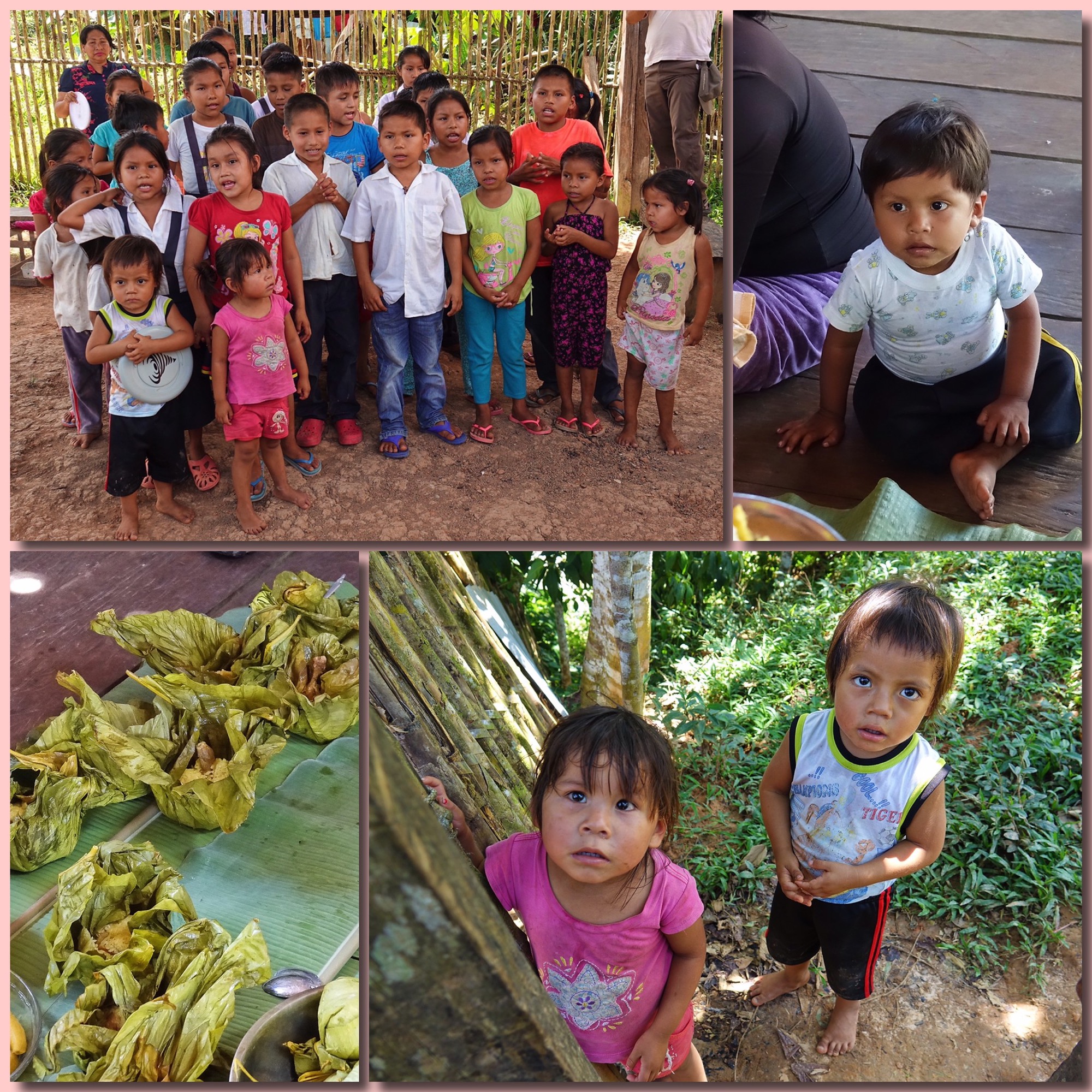
Another thing I appreciated about the Wildside Nature Tours Amazon Riverboat Adventure was the local guides. We had two professional guides with us, one for each boat, both raised on the river, and both college educated in the ecology of the river. In addition, at each landing, we hired villagers to provide specific guidance on the local trails. Most of our hikes were in the Pacaya-Samiria National Reserve but each section of the reserve is managed by a local village…villagers maintain the trails, guard the wildlife, and guide the tourists who land on their landing. These local guides found us birds, mammals, reptiles and insects that we just would not have seen otherwise. And each one overflowed with pleasure at showing us their jungle home. At most landings there were also local villagers selling crafts and art from the Amazon basin.
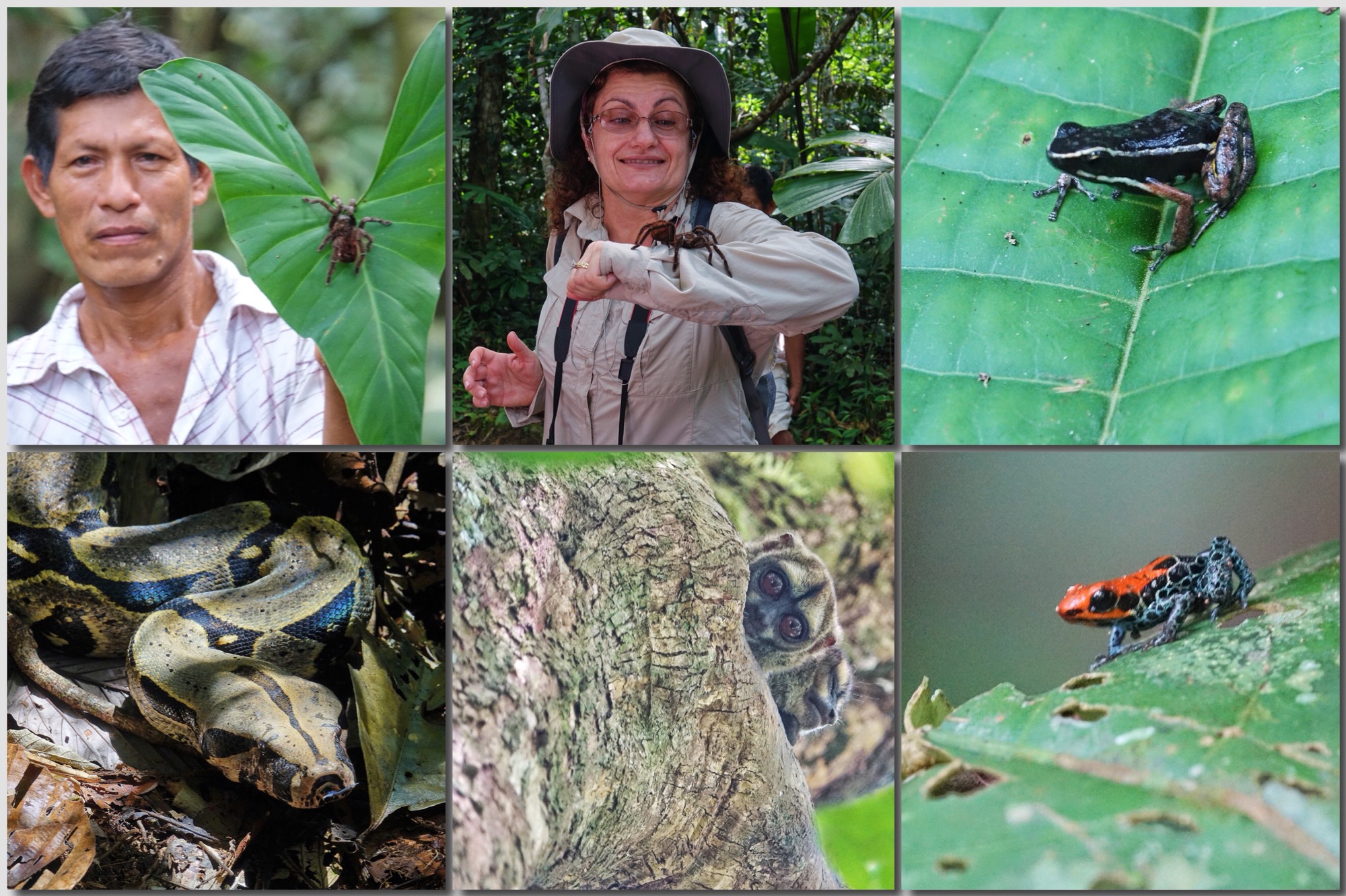
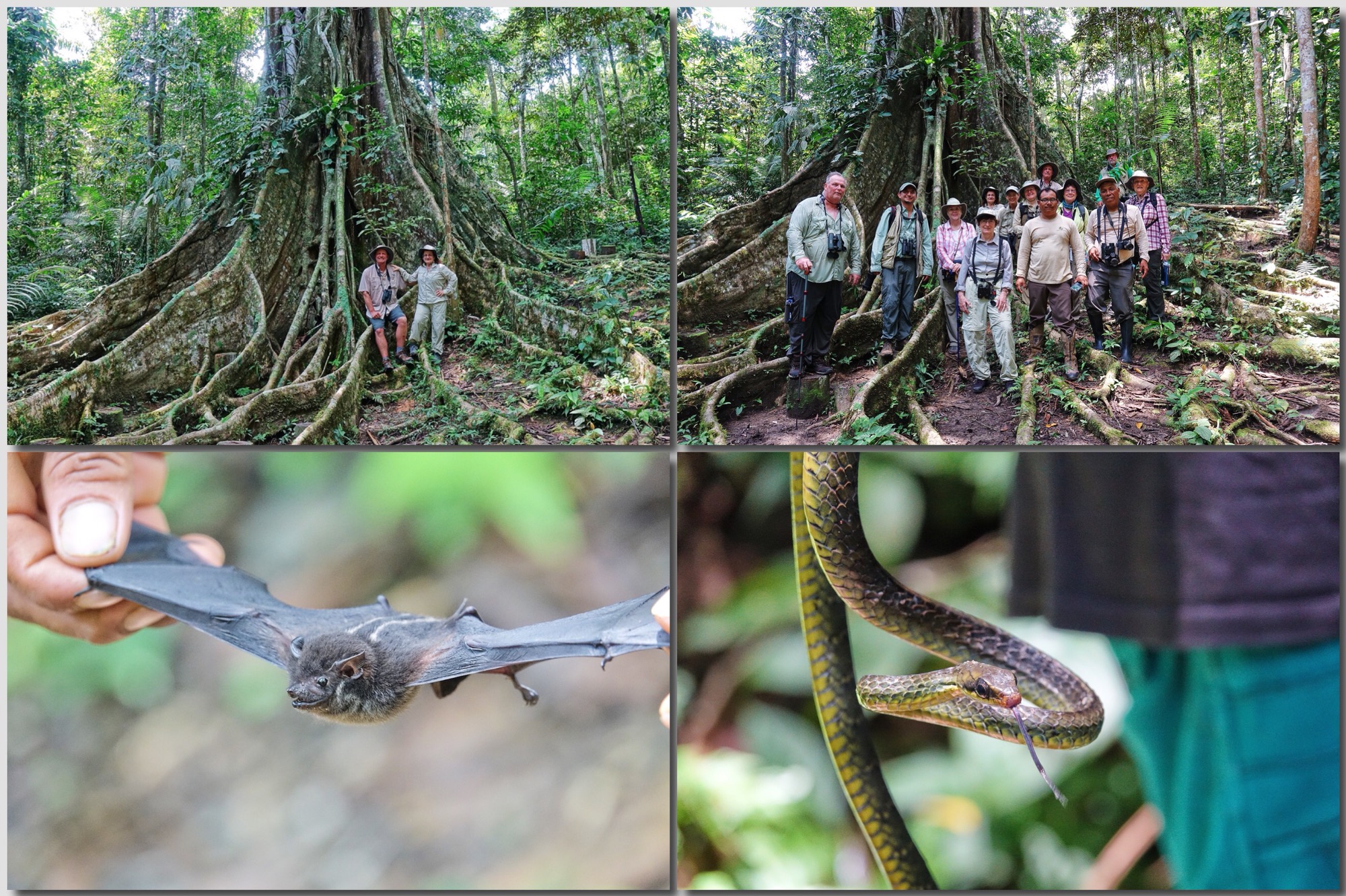
When you wake up on a riverboat tied up to the bank on the Amazon River, you know the day will hold something special, and the folks at Wildside Nature Tours know how to make the most of every day.
Our boat eventually returned to Nauta, the westernmost end of the road out of Iquitos, and we bused back to the airport for our flight back to Lima.
Most of us had night flights out of Lima, so we spent the day south along the coast in the fishing and tourist village of Pucusana. We took a tourist boat (clearly a converted fishing boat) out around Pucusana Island to see the cormorants, terns and penguins. It is a whole different kind of shooting from a boat in the rough waters around the island. I was able to set the Sony RX10iii to wide area focus, and the ISO to minimum shutter speed 1/1000th for good results even in this challenging situation.
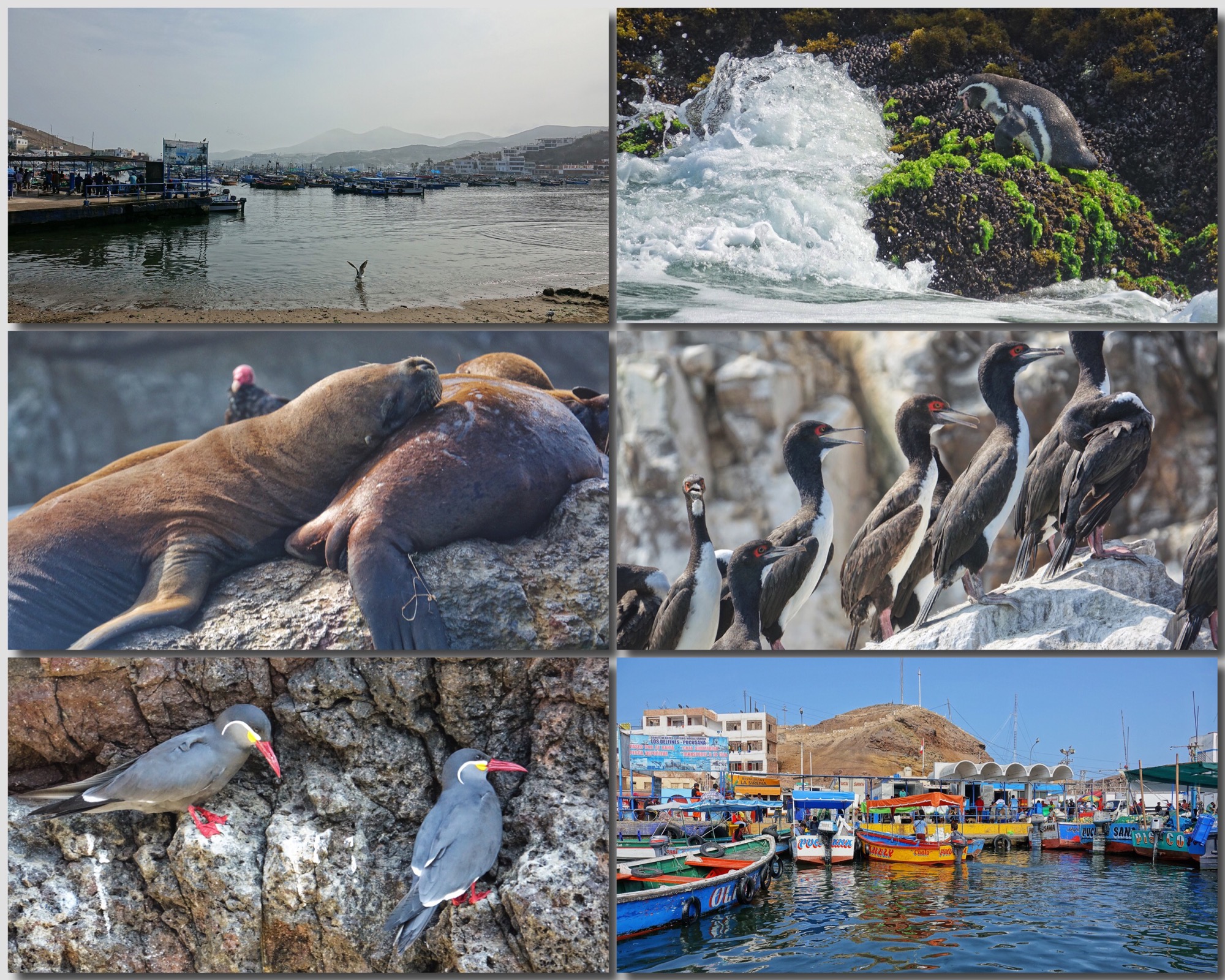
The Wildside Natures Tour Amazon Riverboat Adventure is adventure indeed. For anyone who has ever dreamed of the Amazon, there is no better way to see it! And, all things considered, there is no better camera to capture it than an advanced Point and Shoot like the Sony RX10iii.
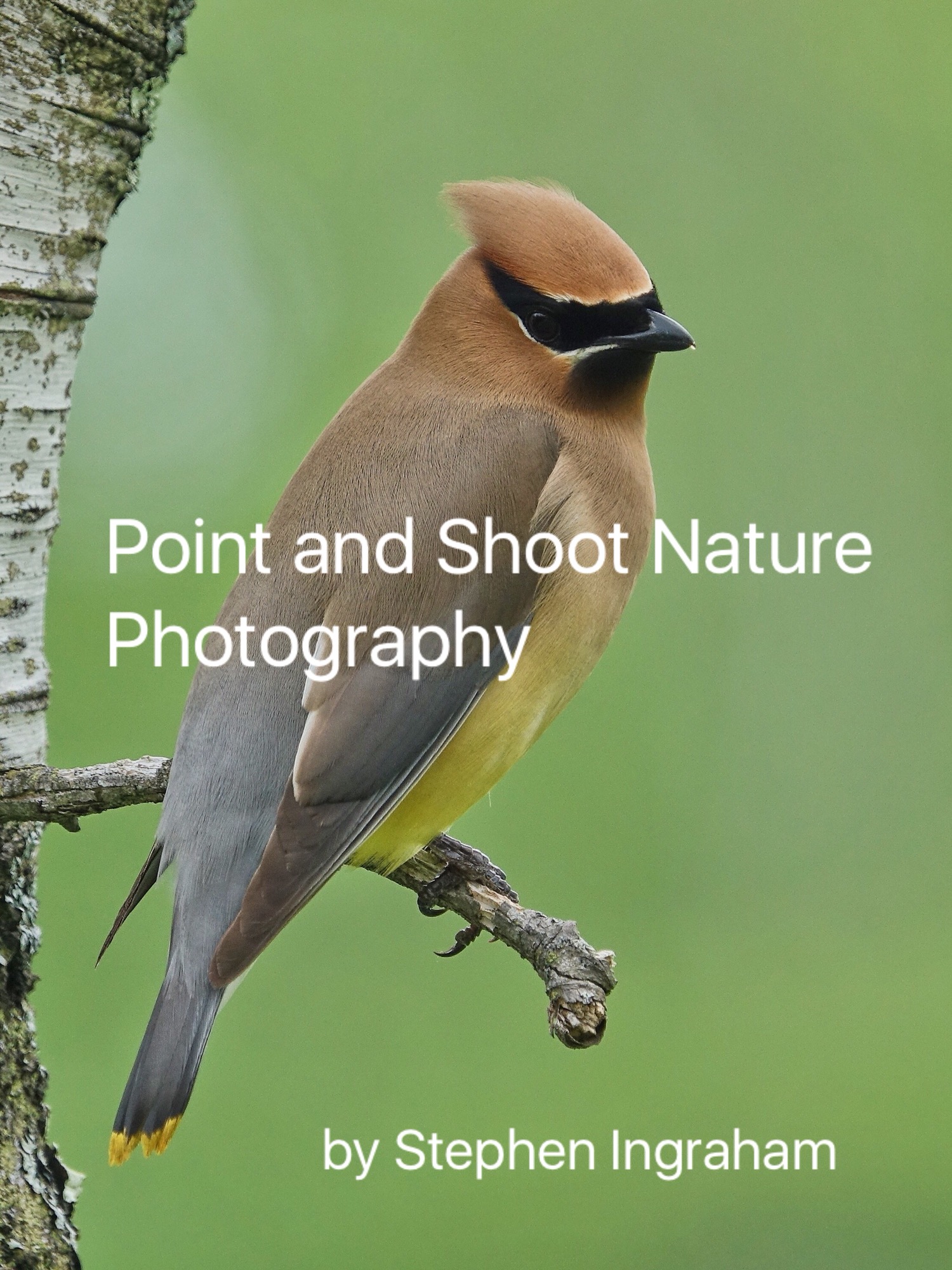
Well, I finally did it, after too many requests to keep track of. Point and Shoot Nature Photography in book form.
Available as a Amazon Kindle ebook on Kindle Fire, and all Kindle apps (iOS, Mac, PC, Android) (but not on Kindle readers).
And as a paperback.
Follow this link to Amazon.